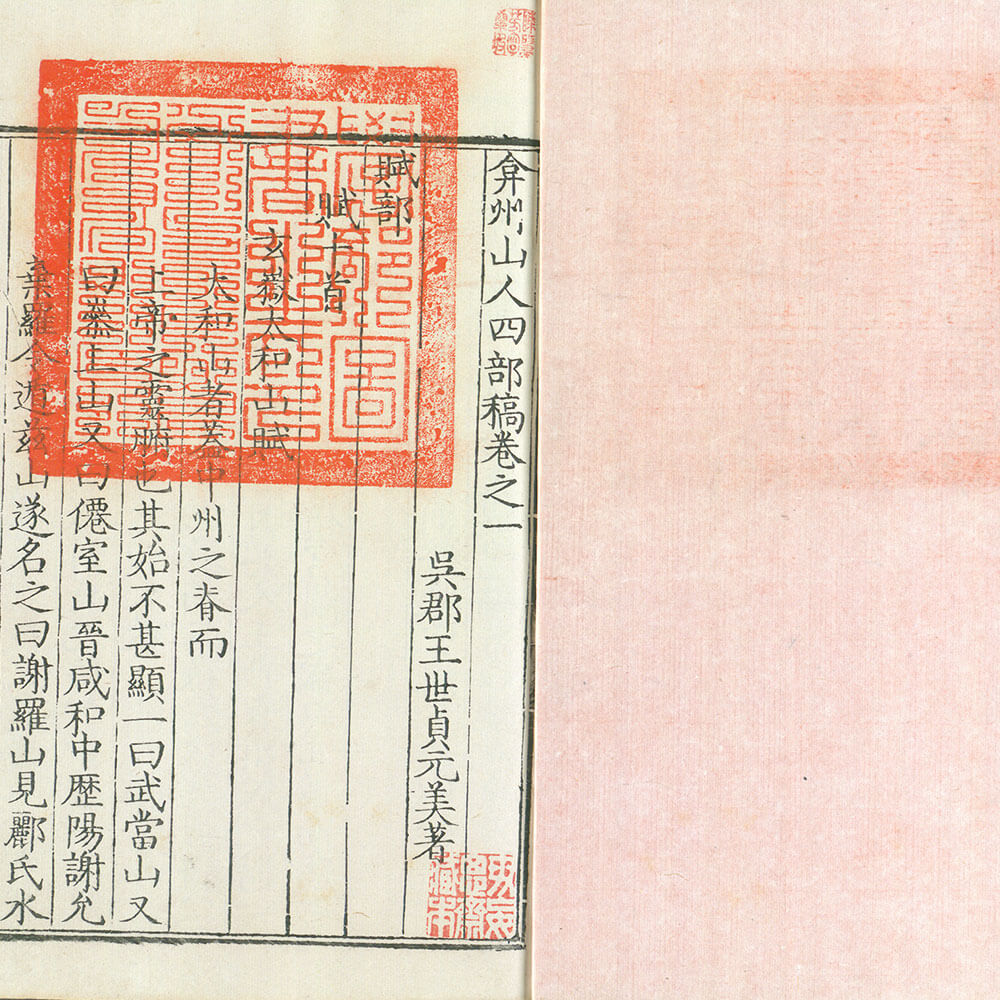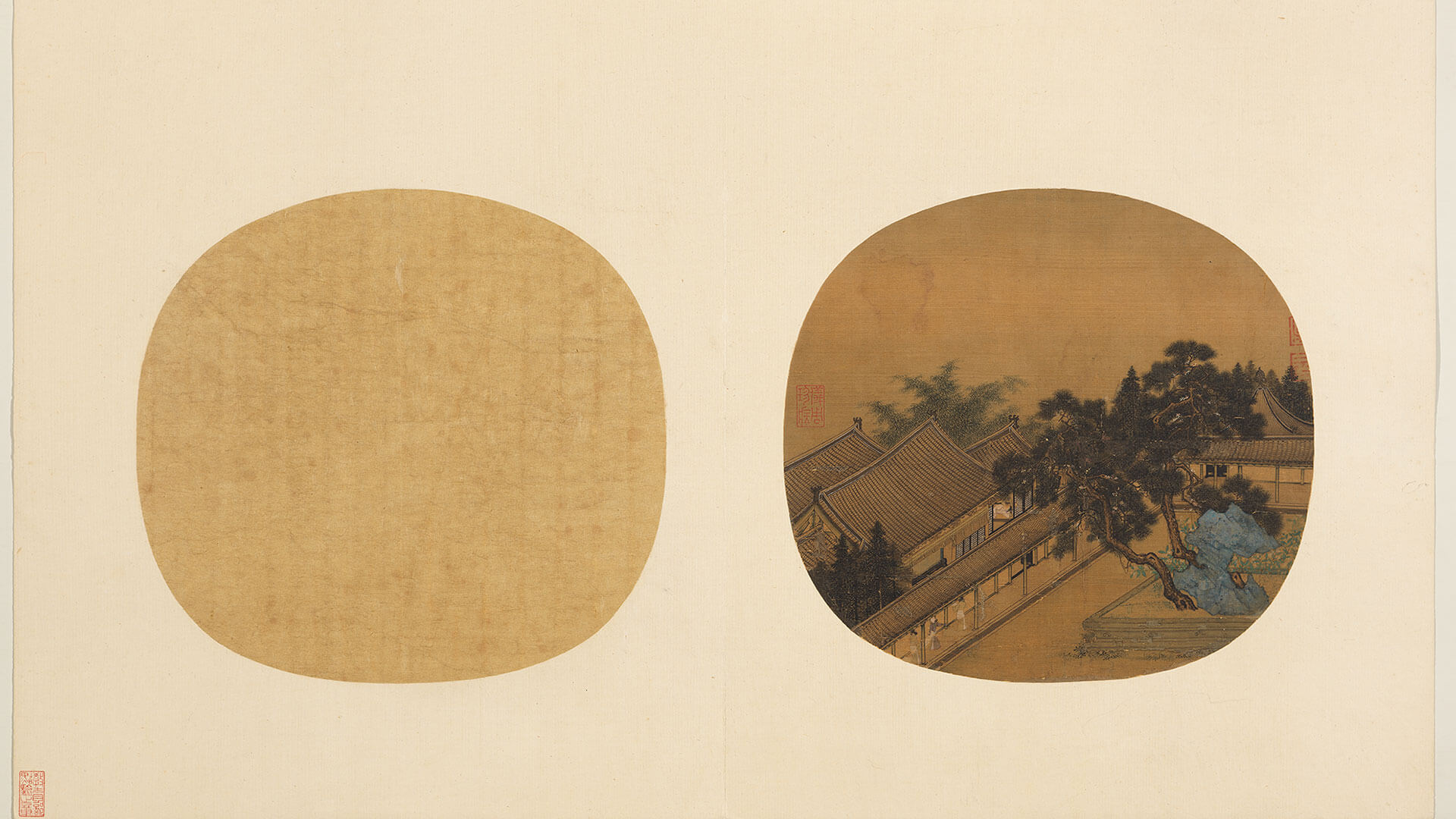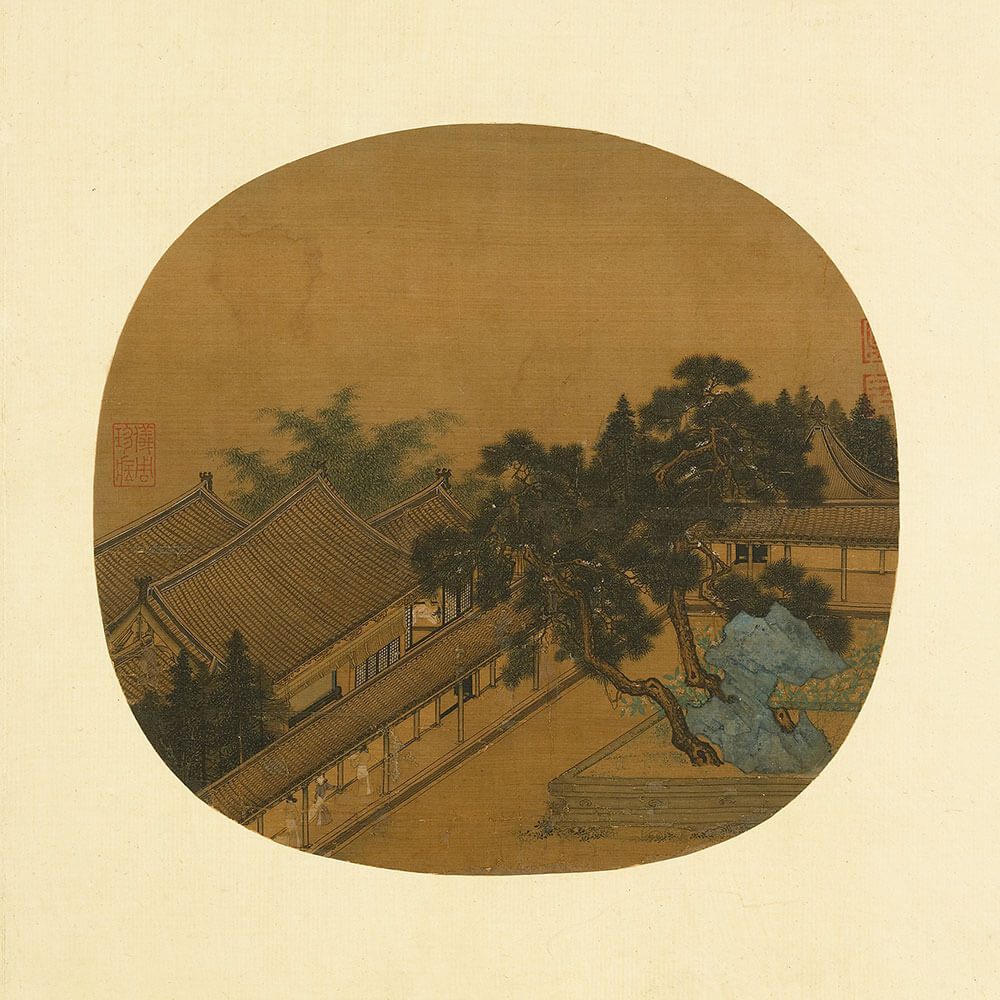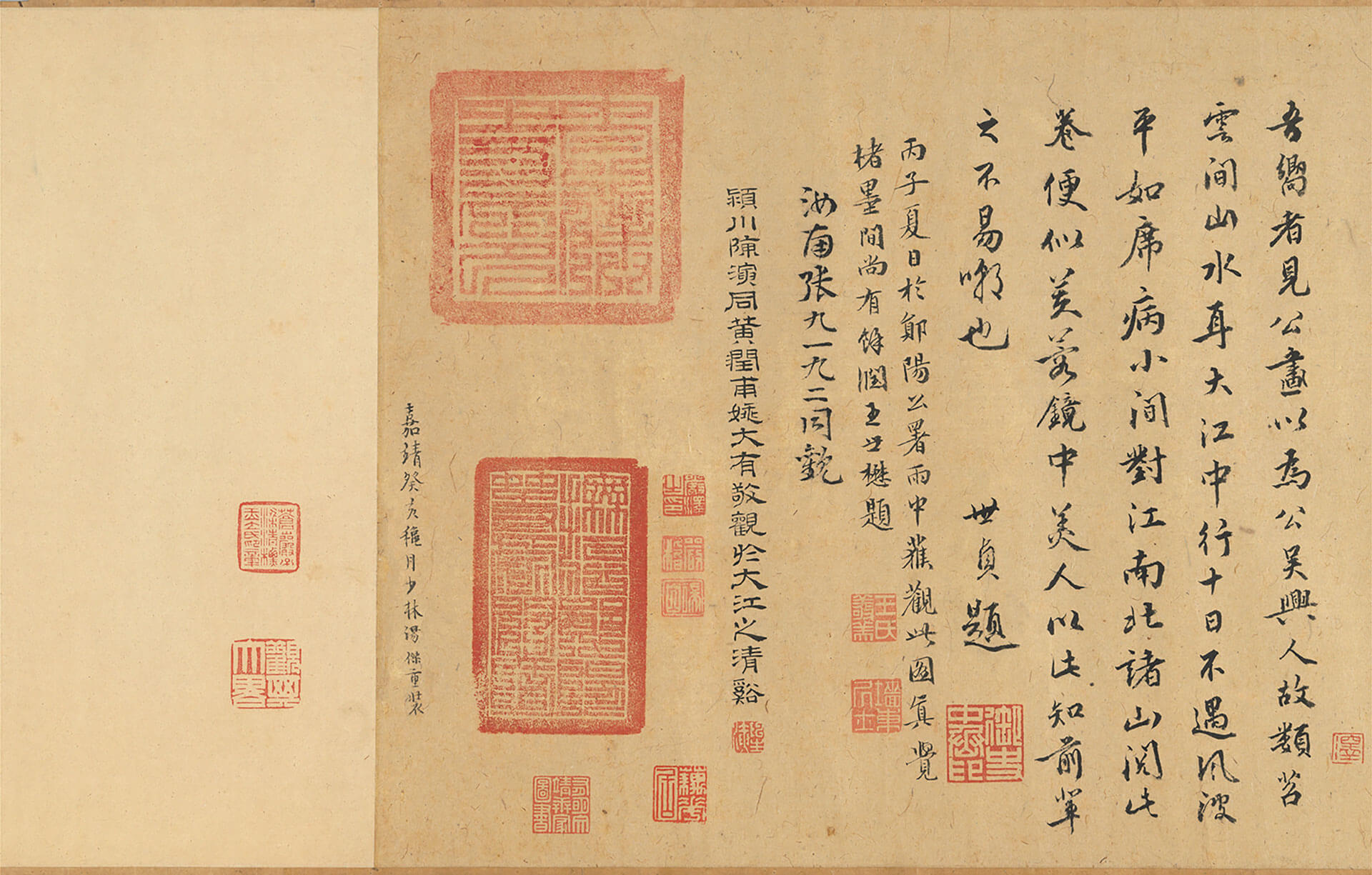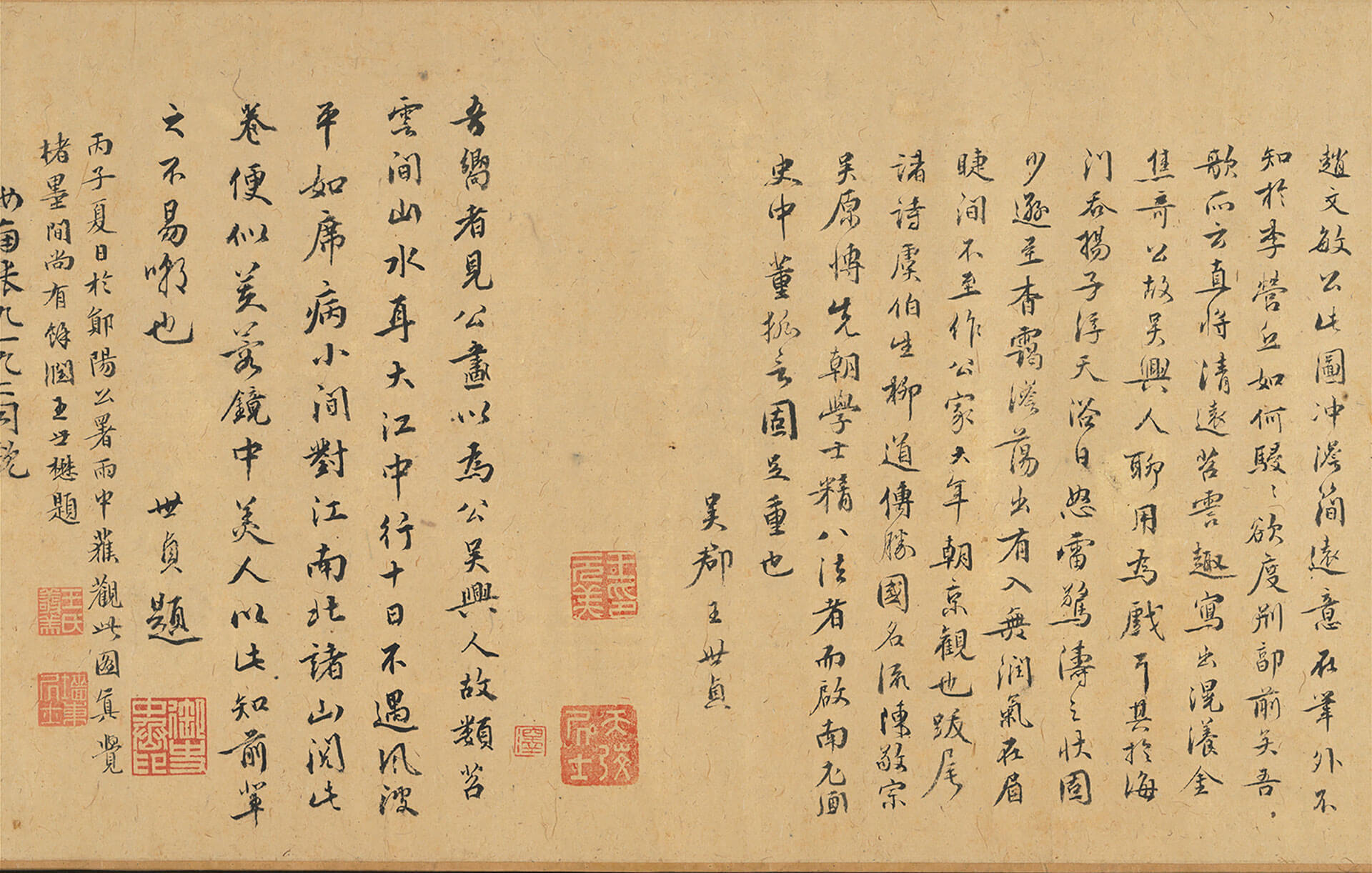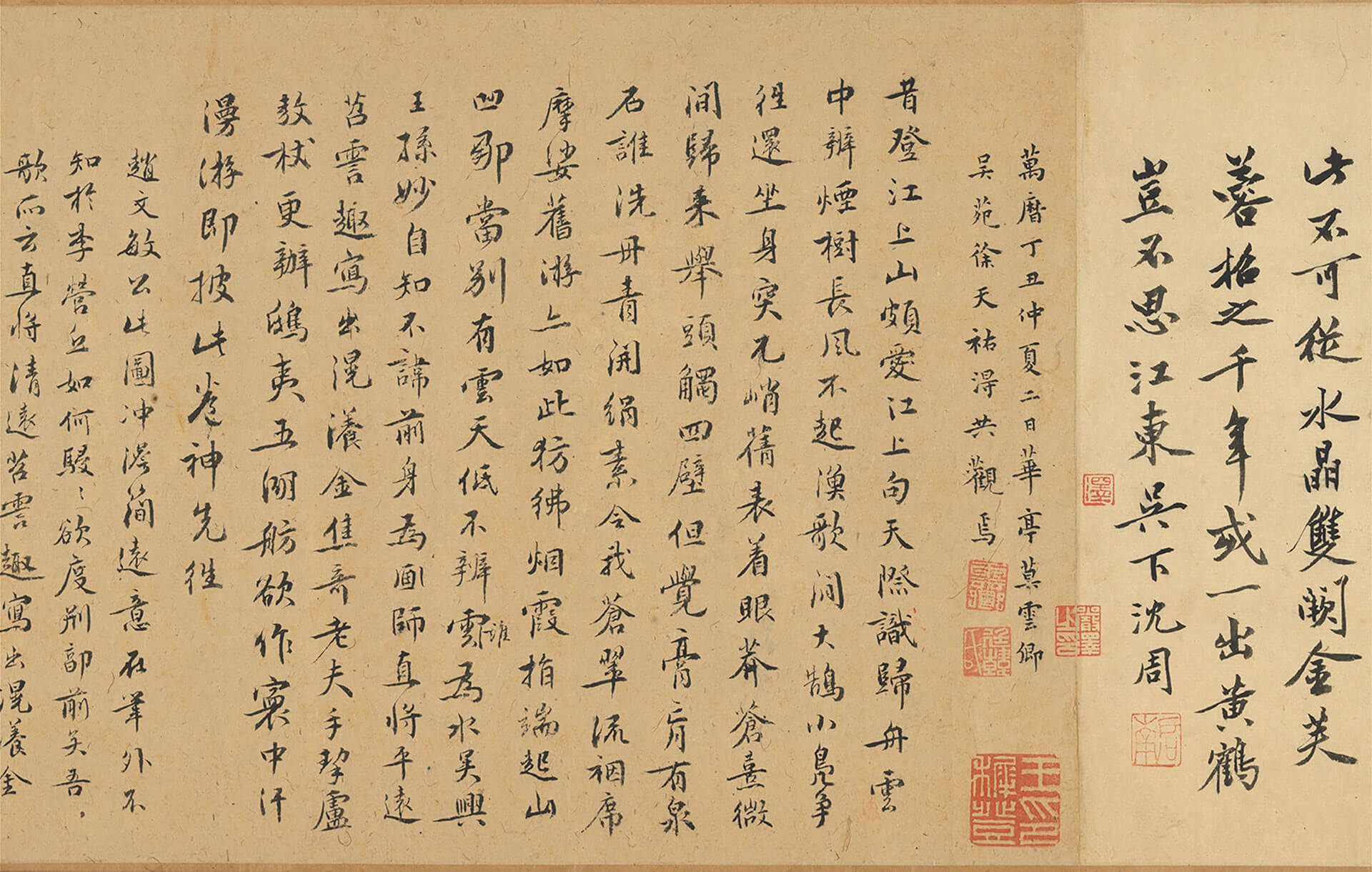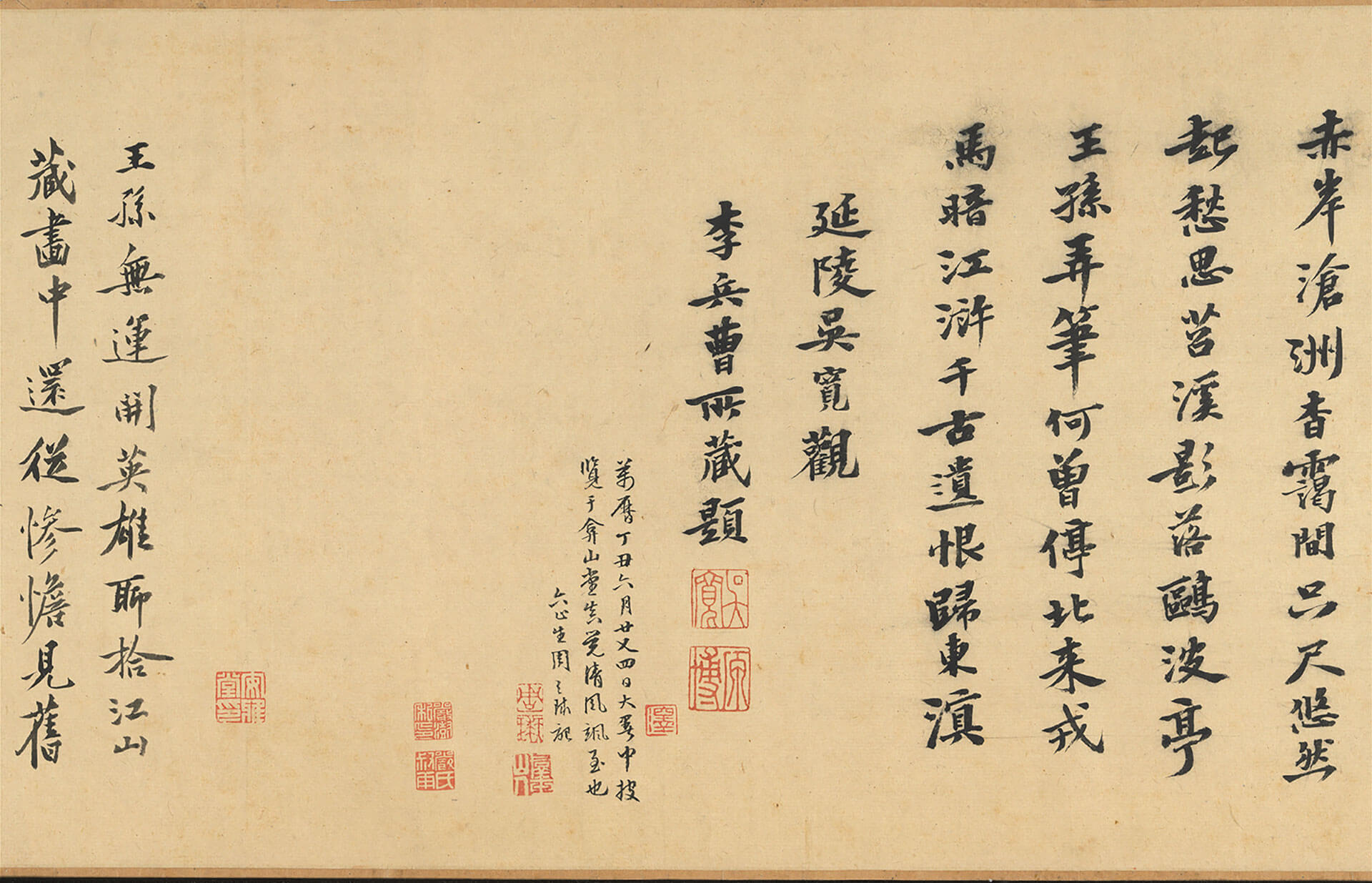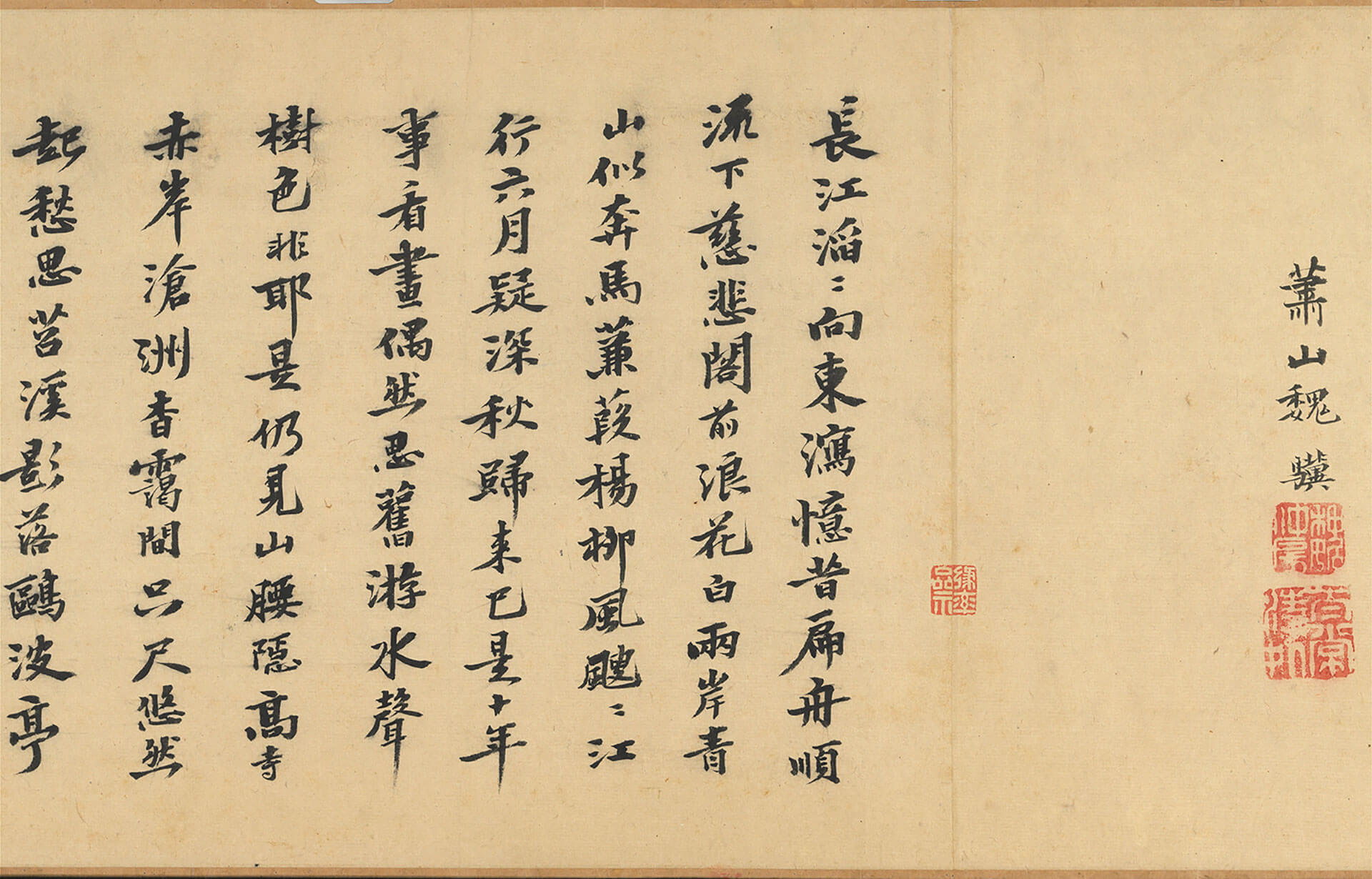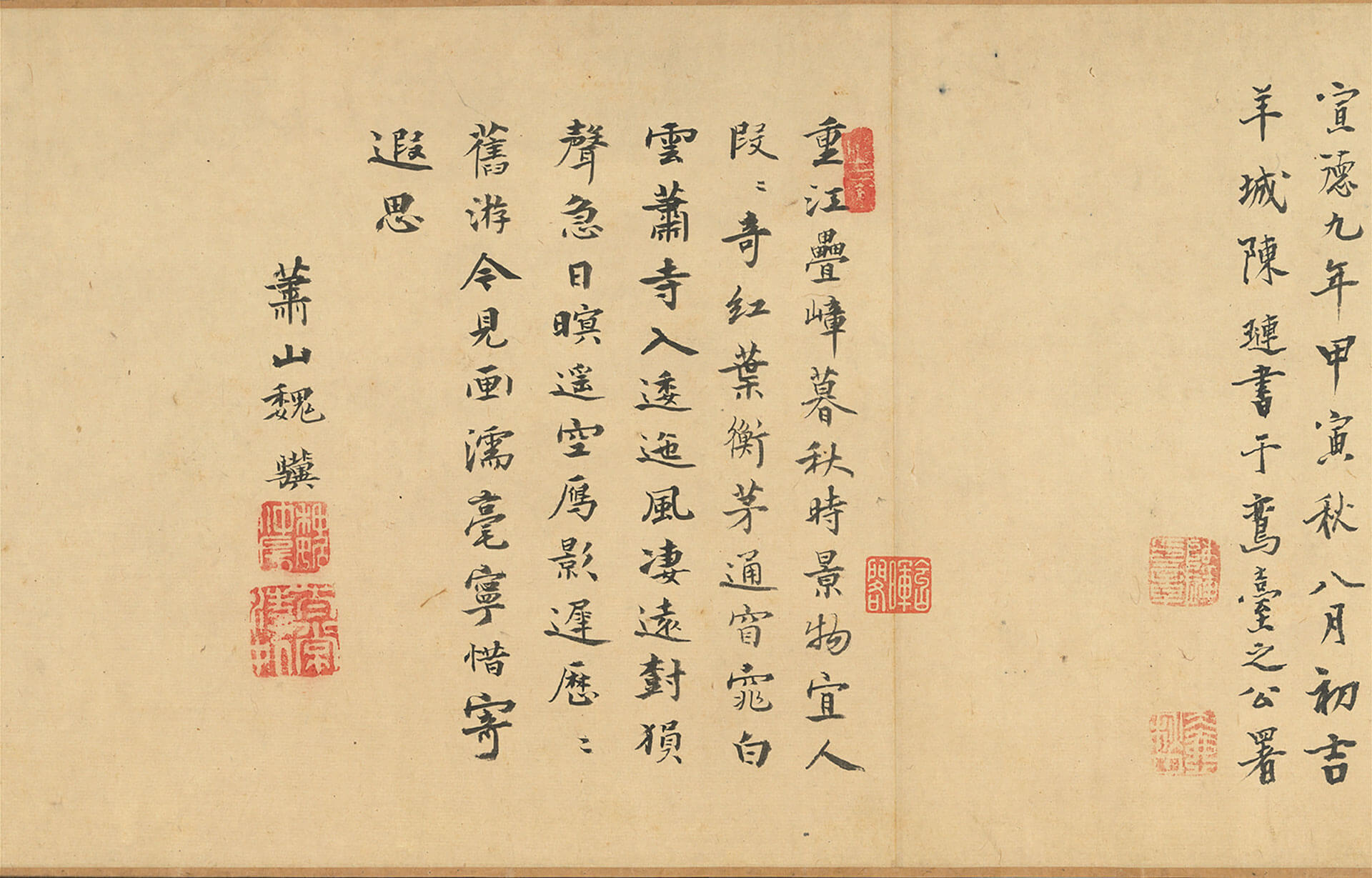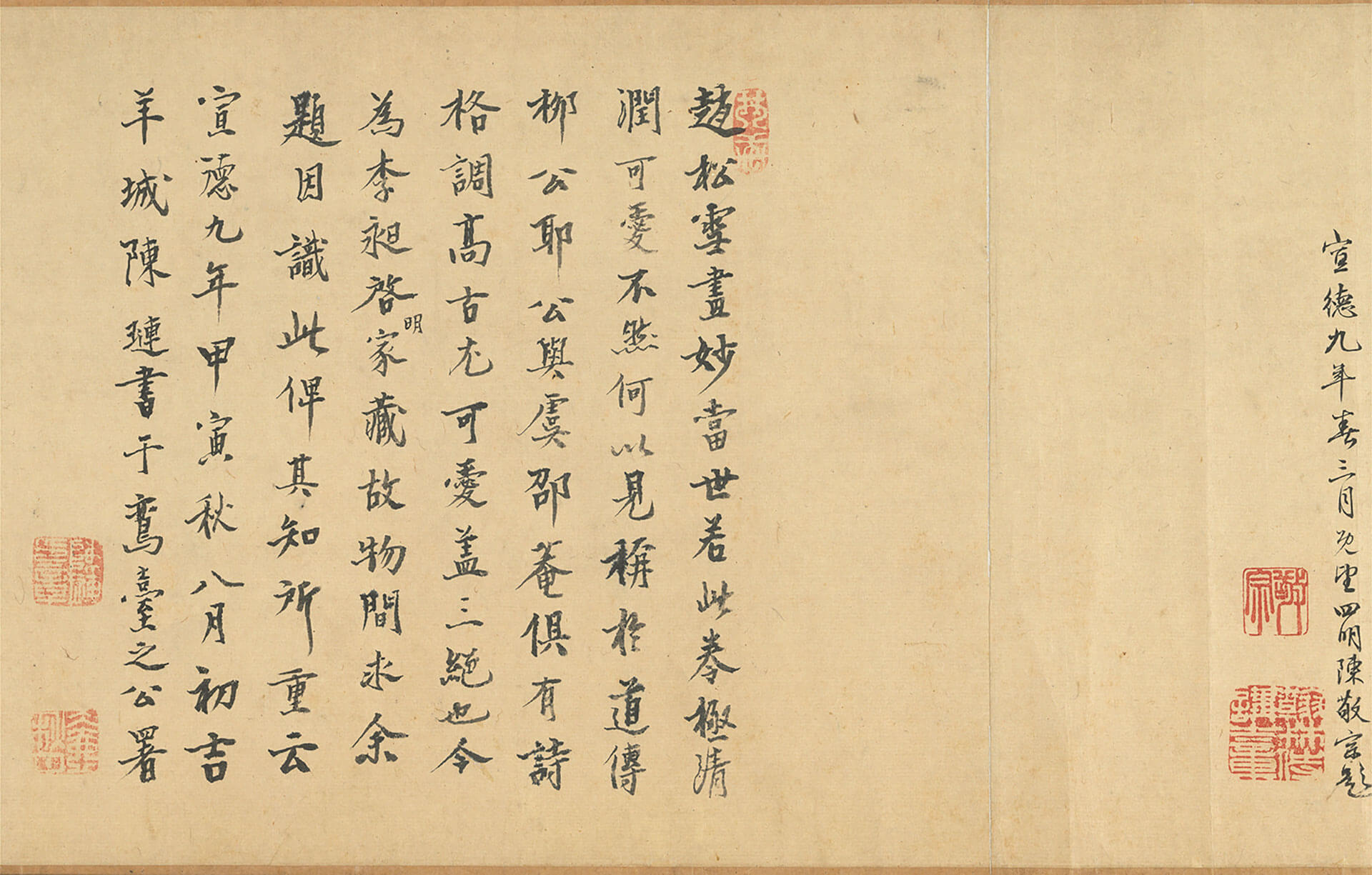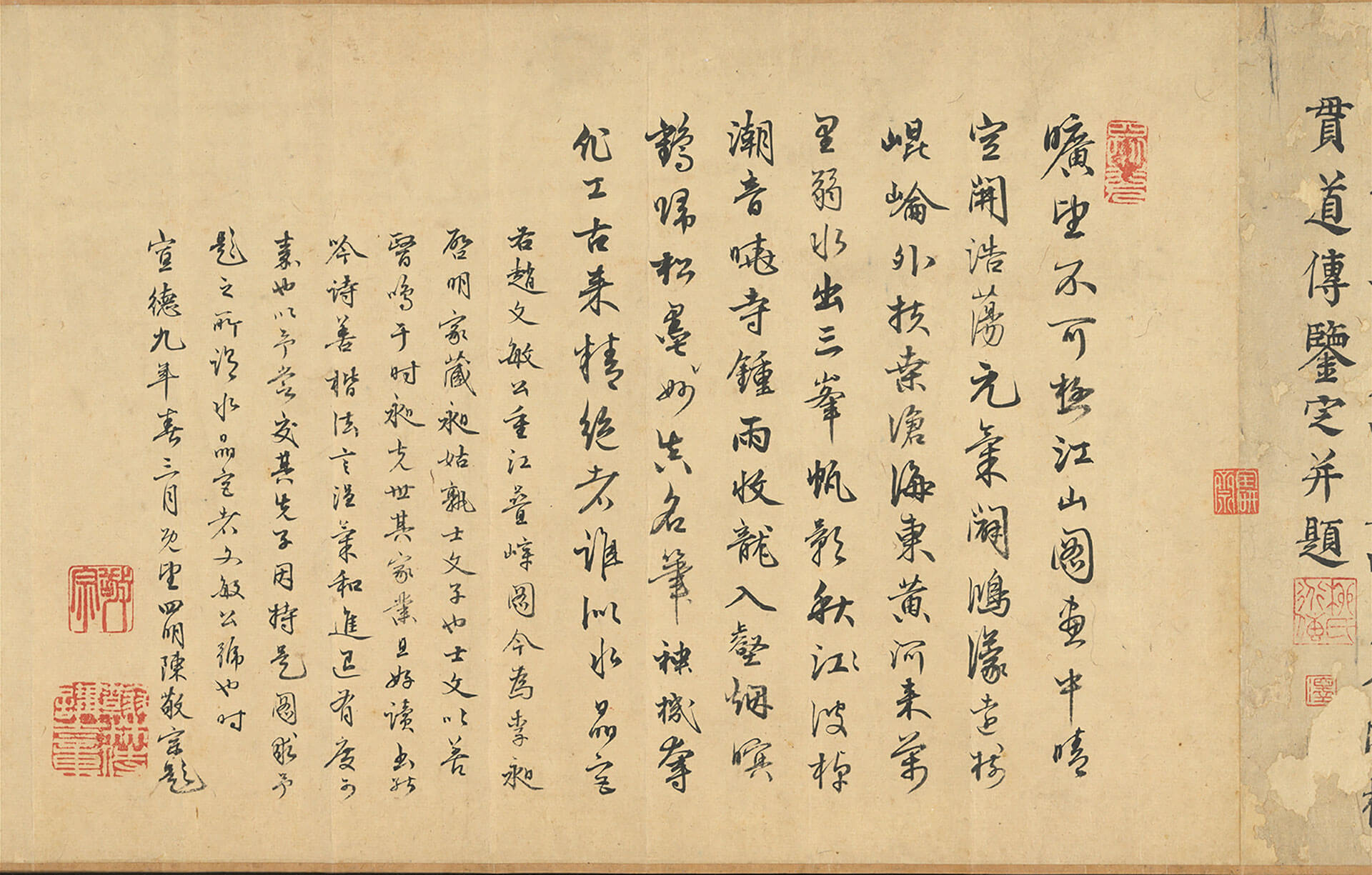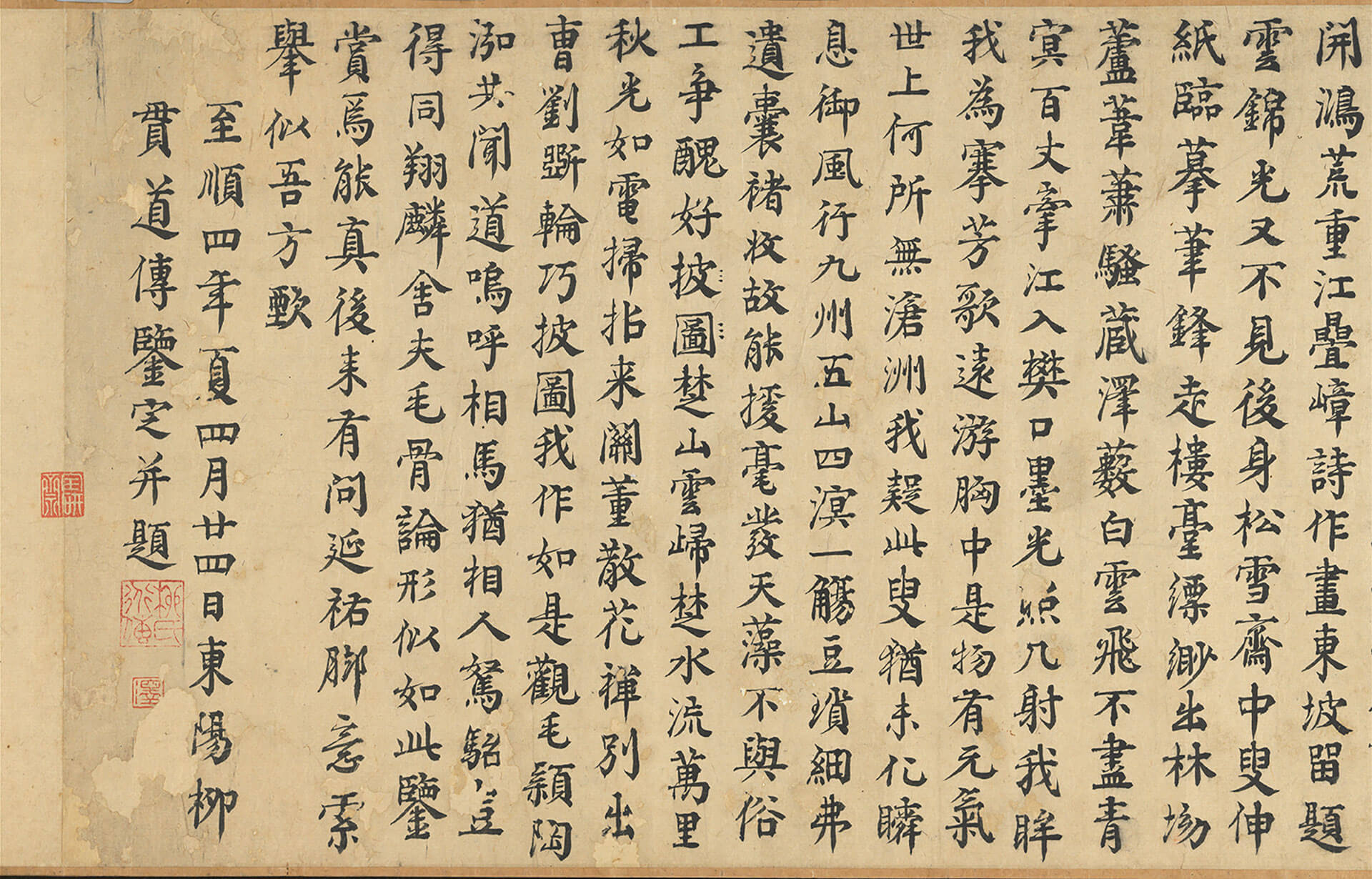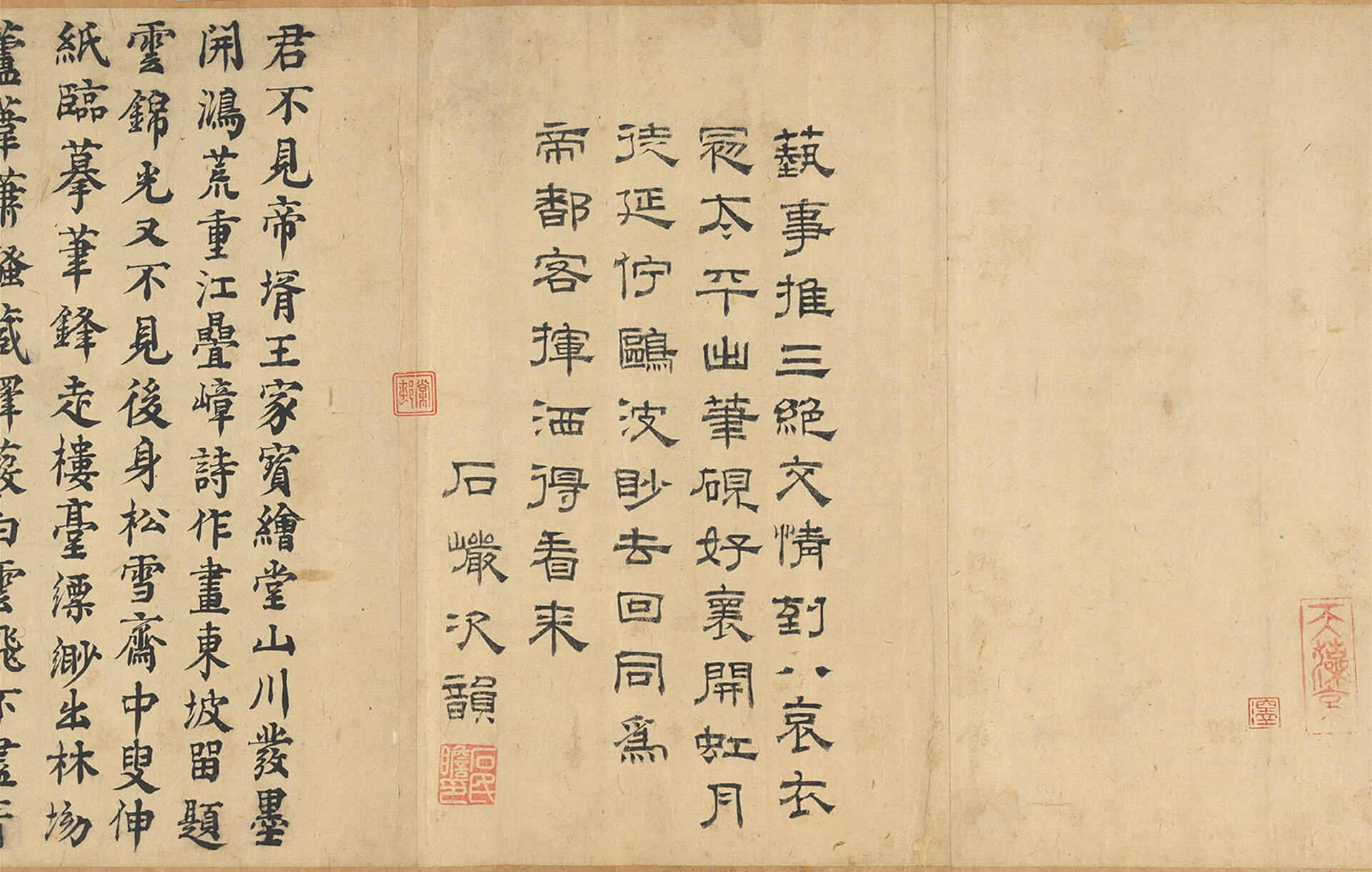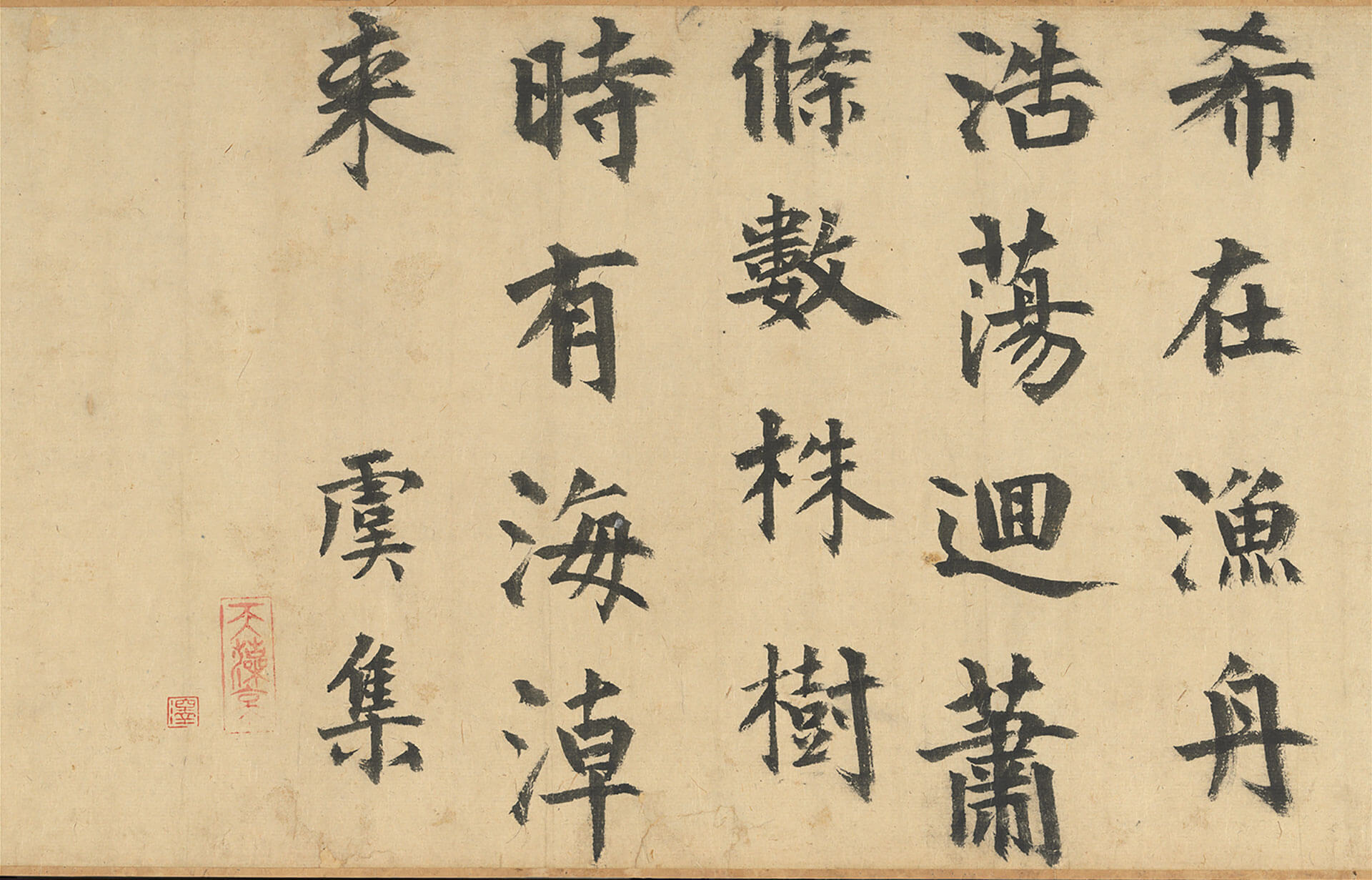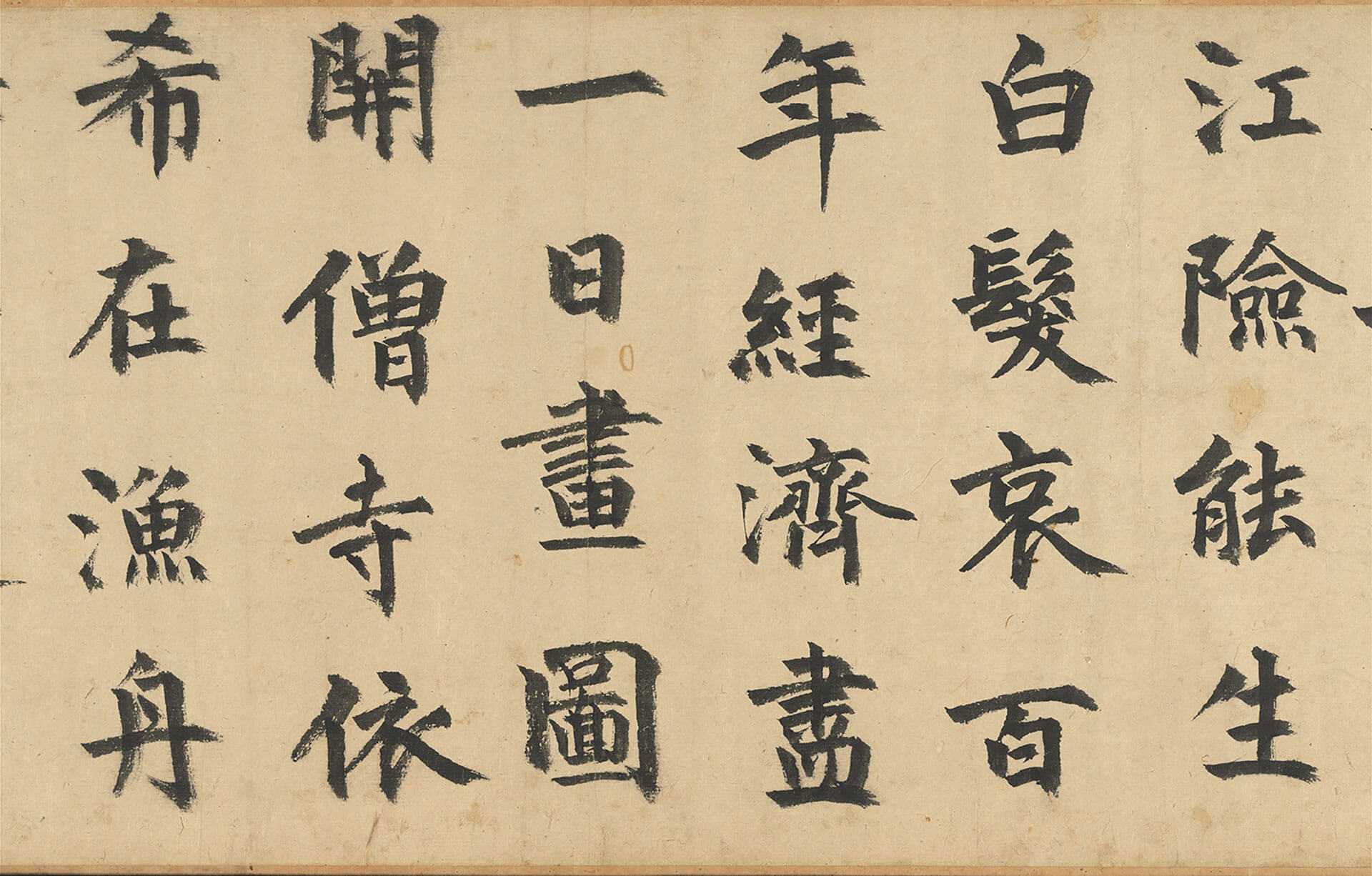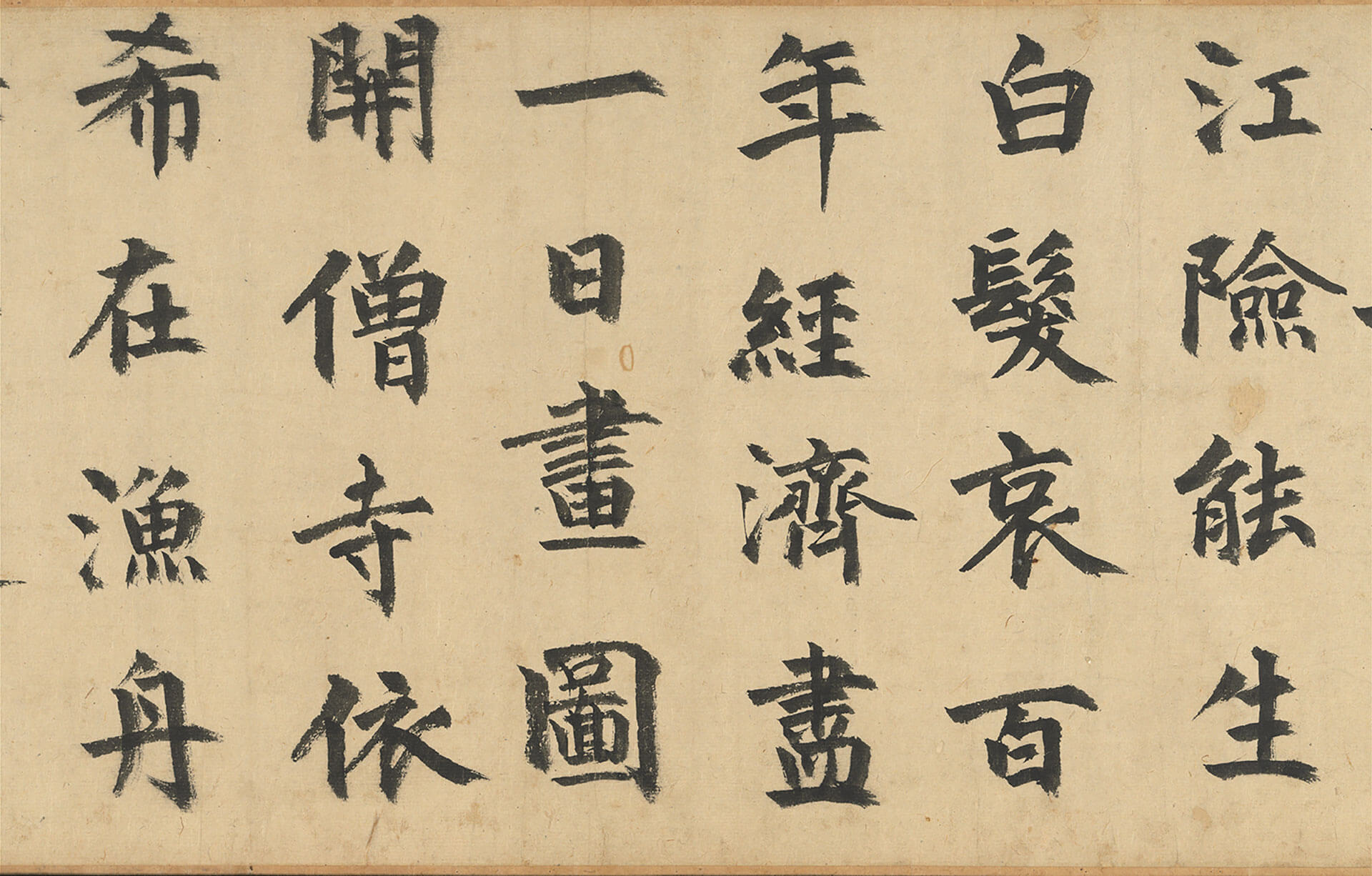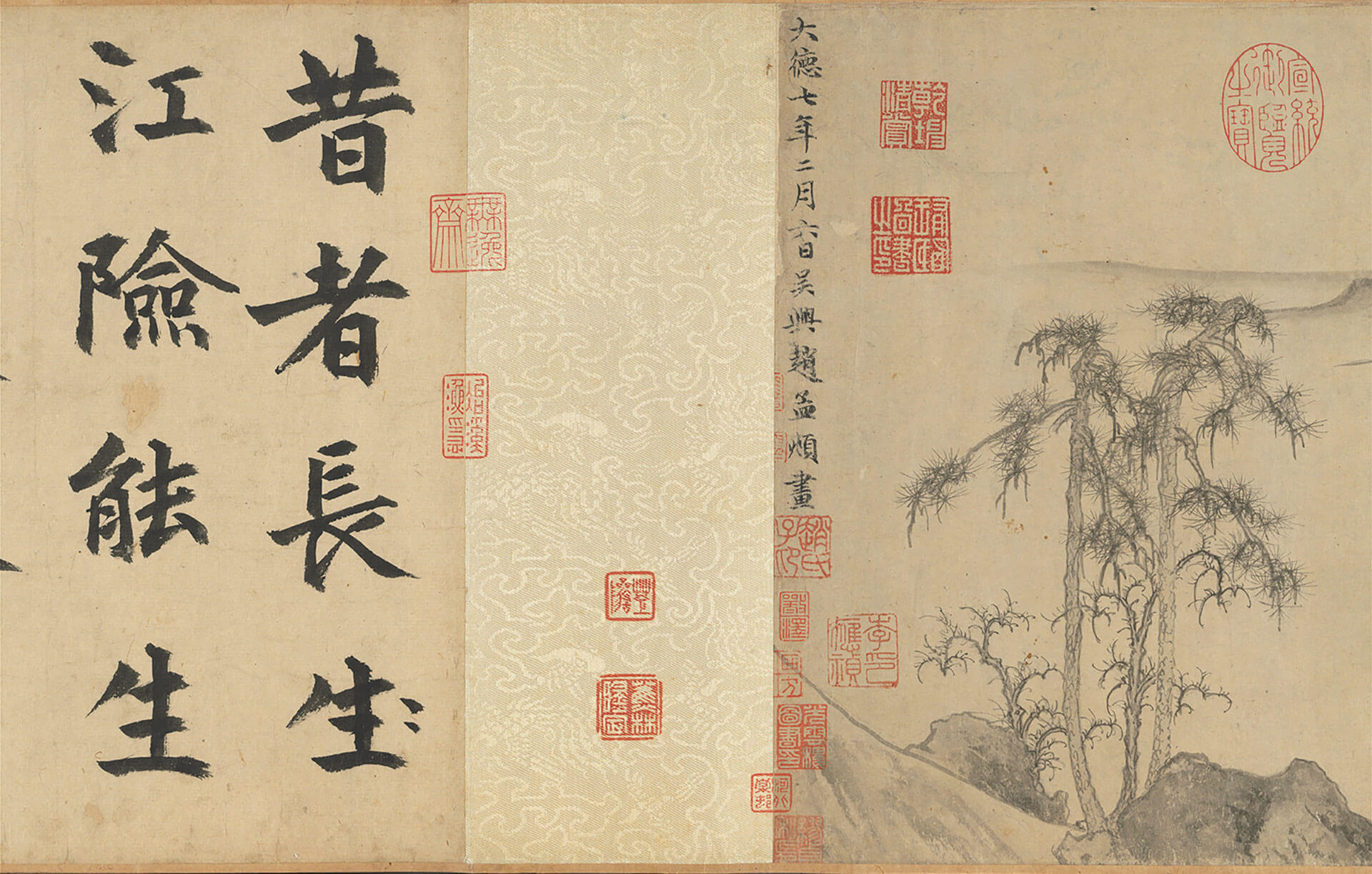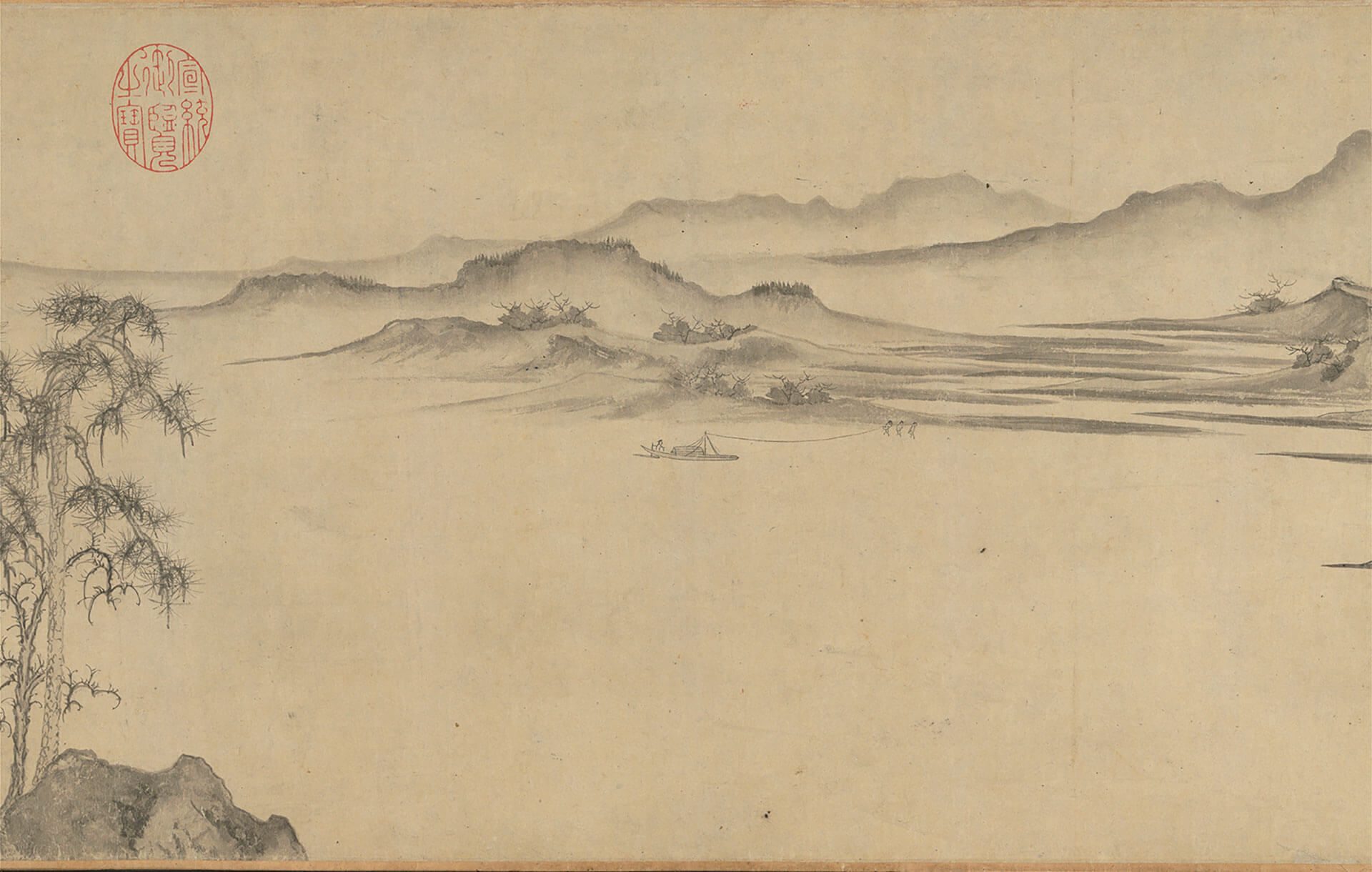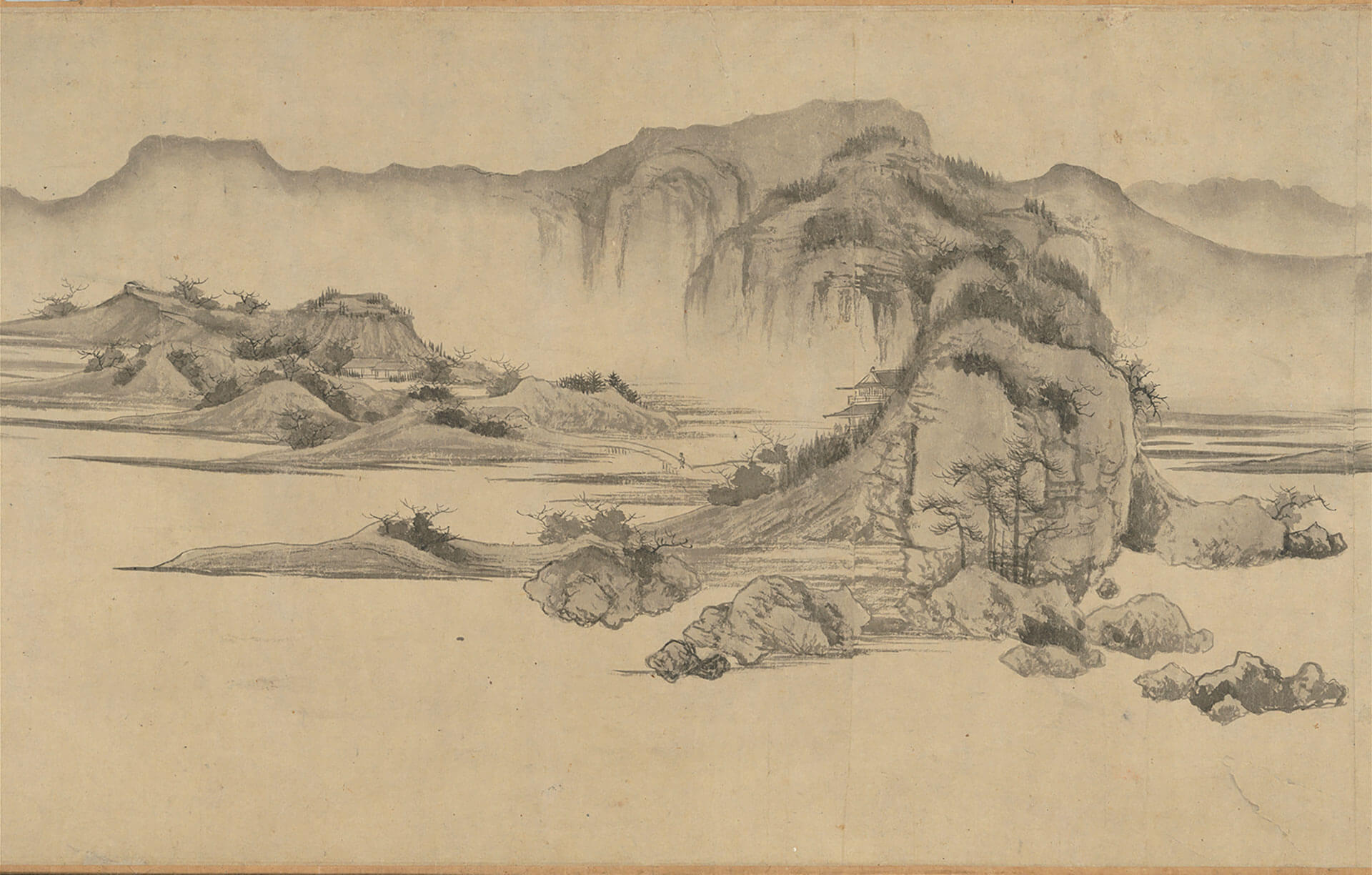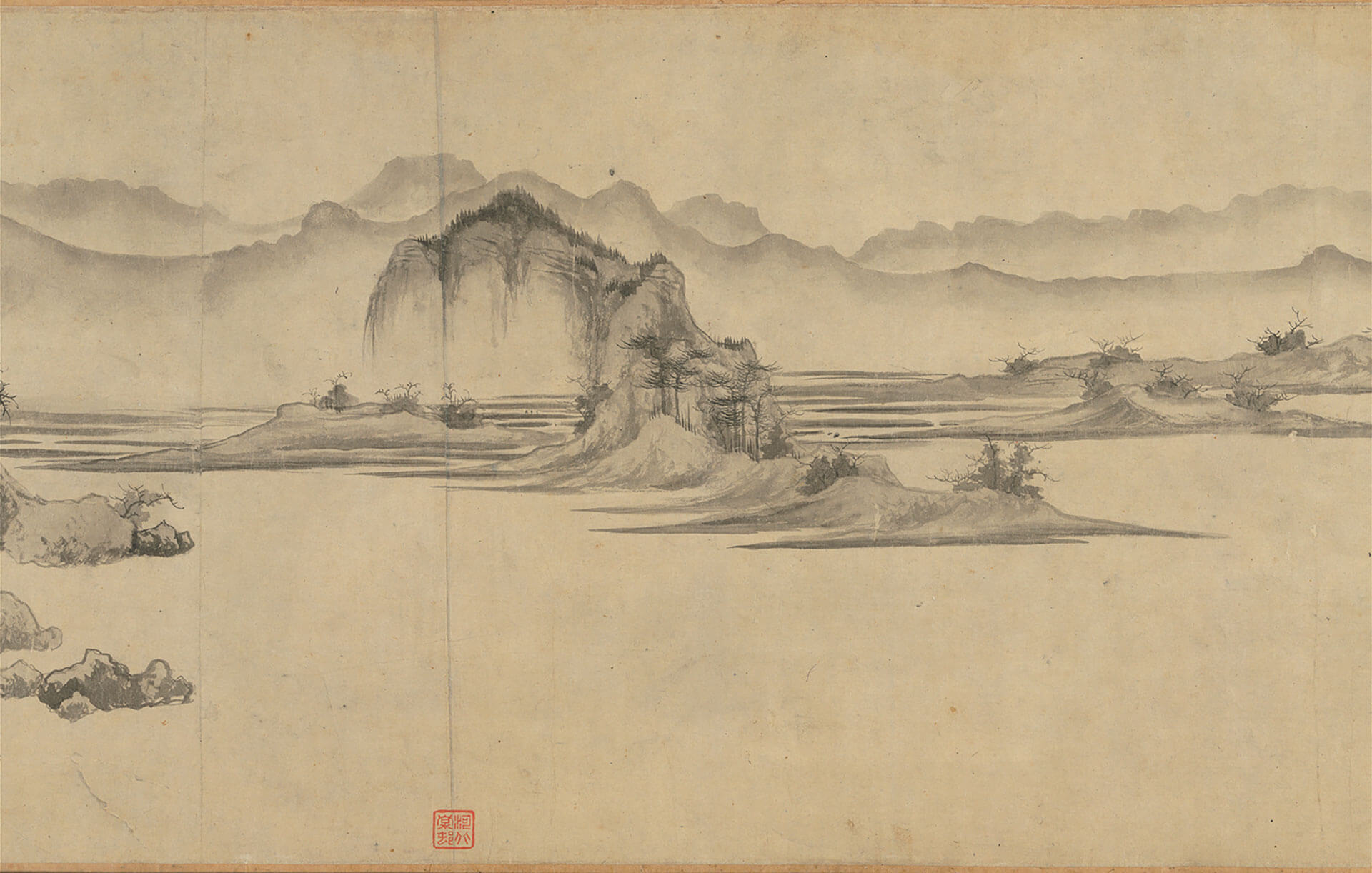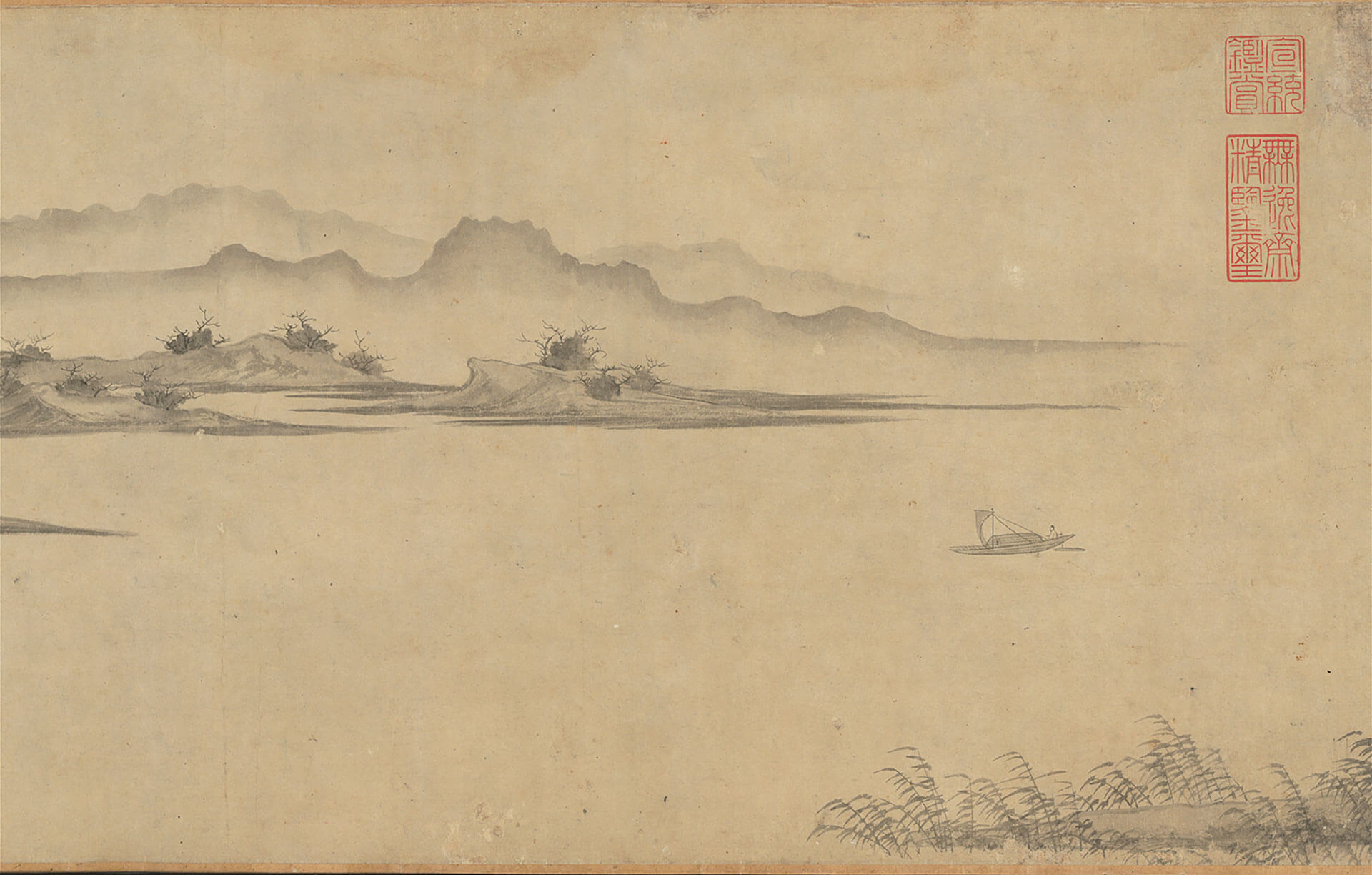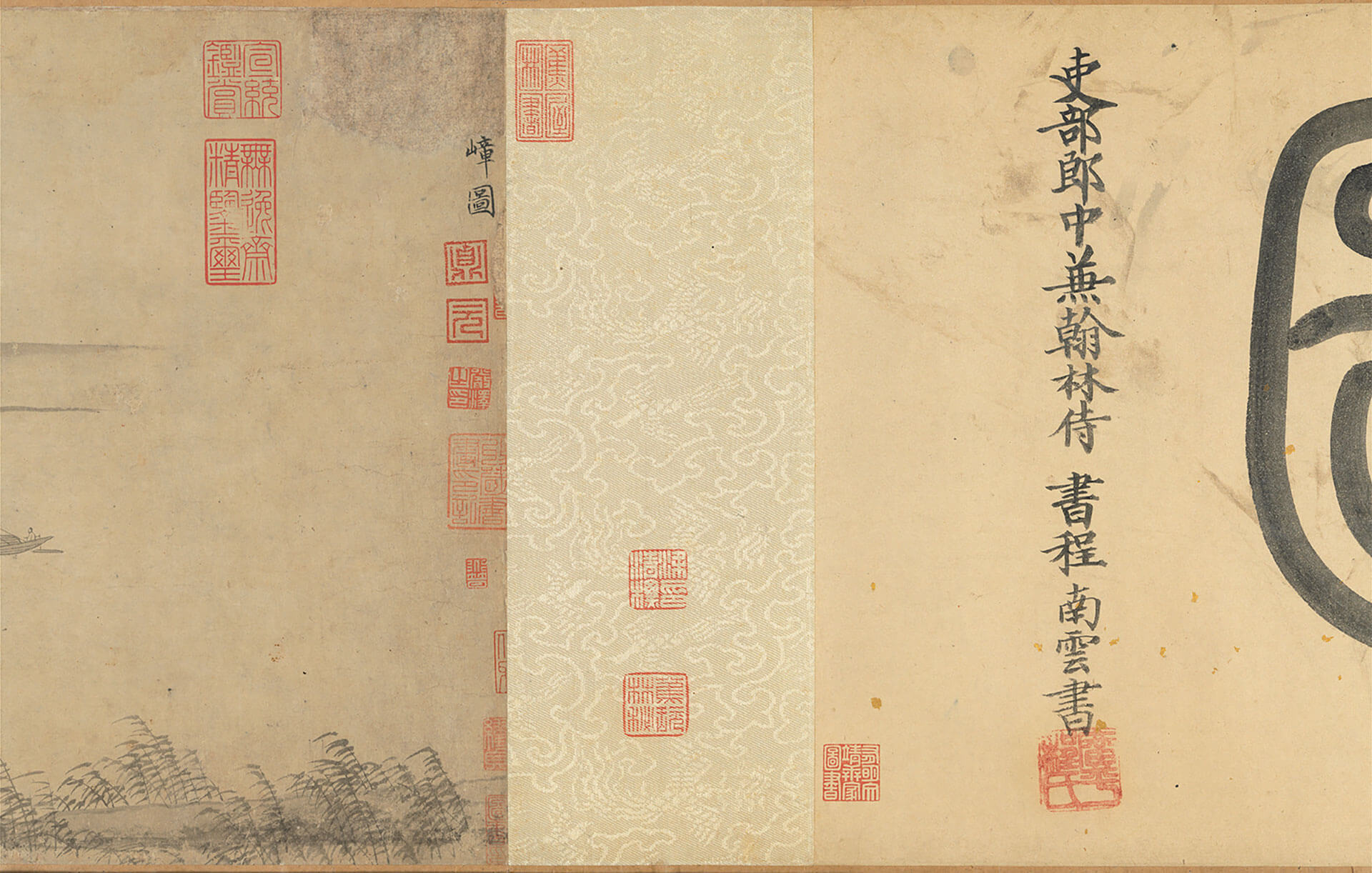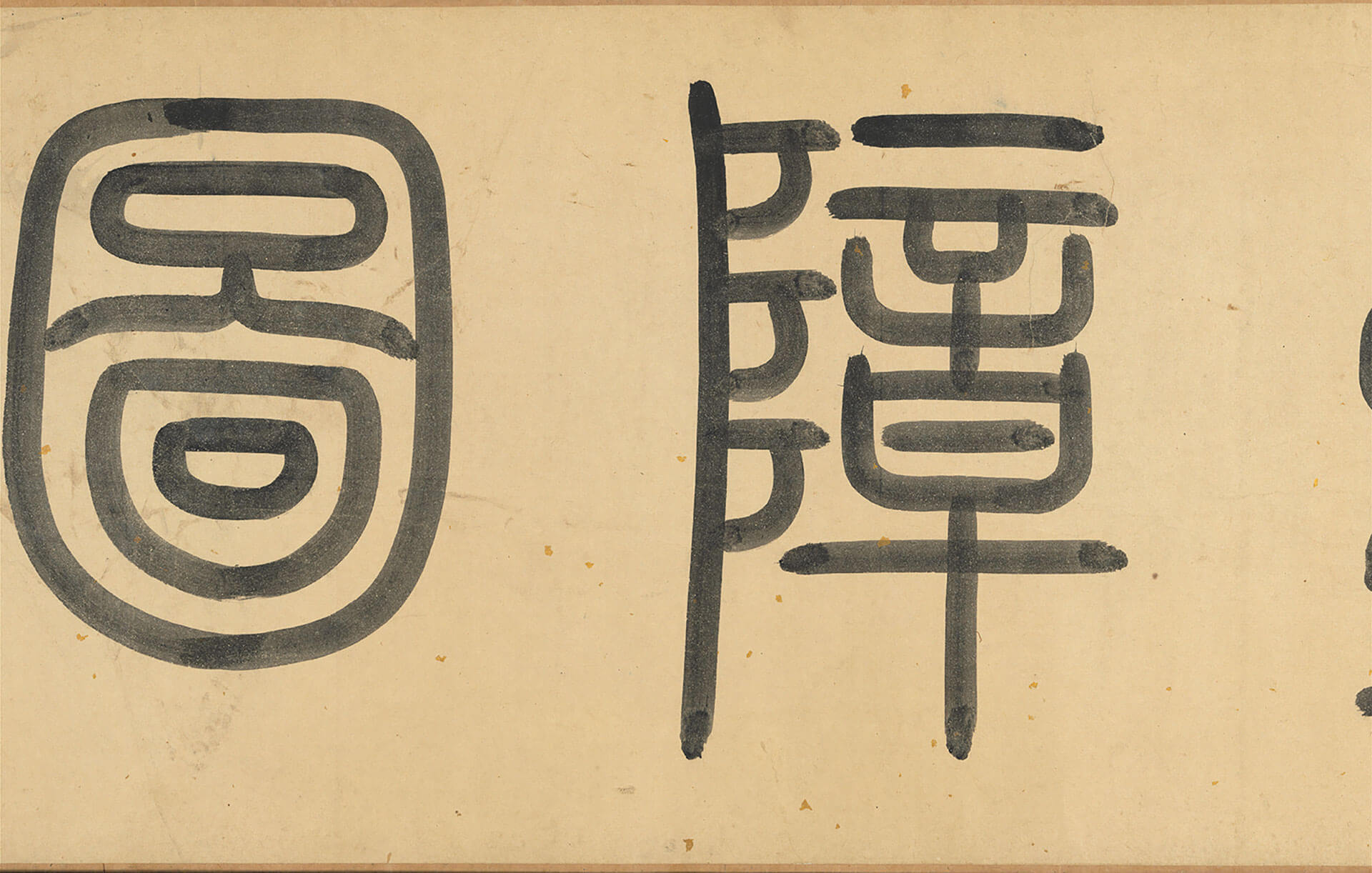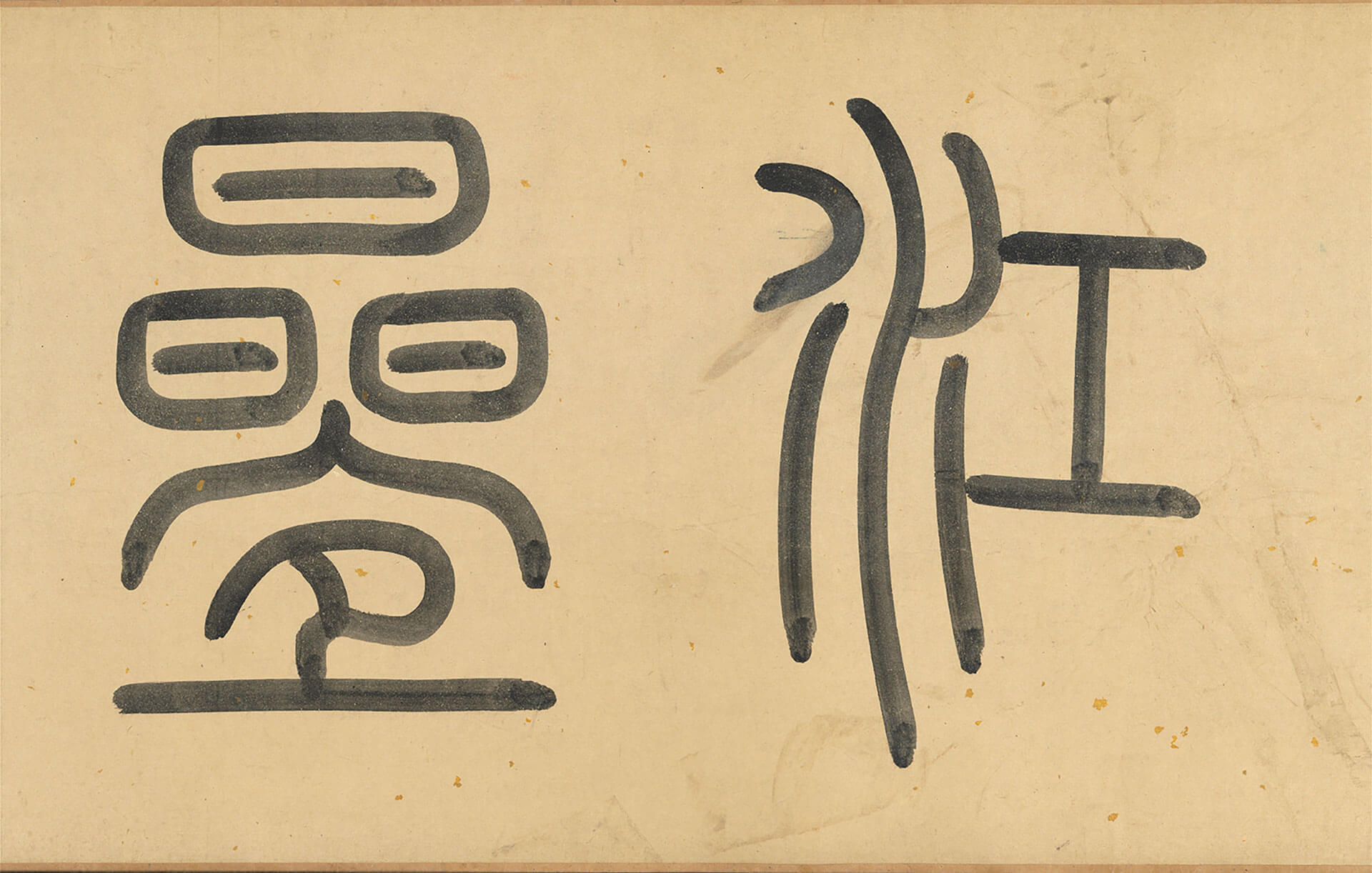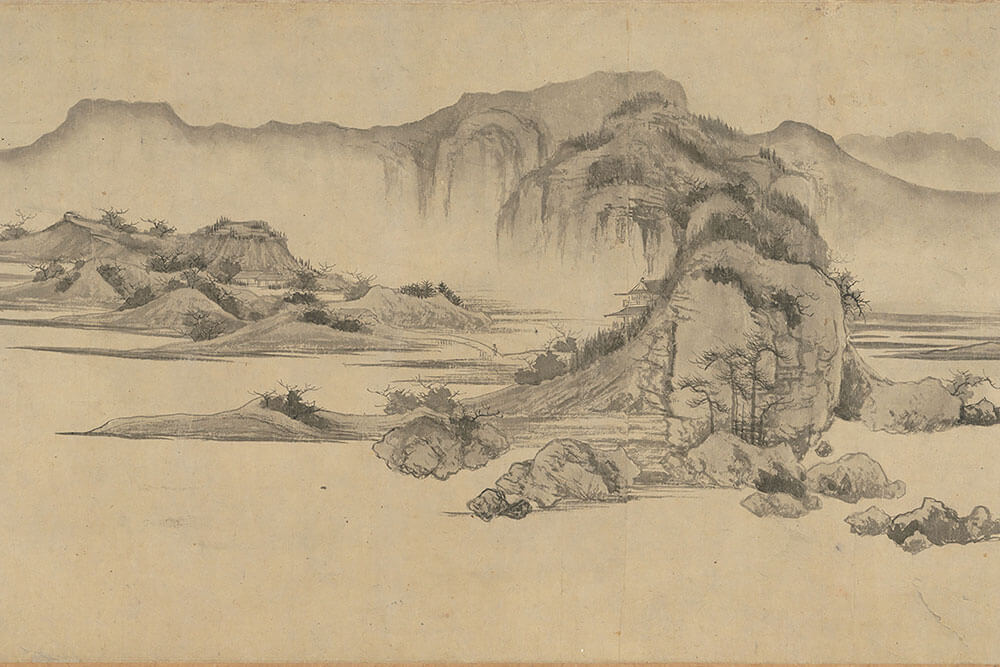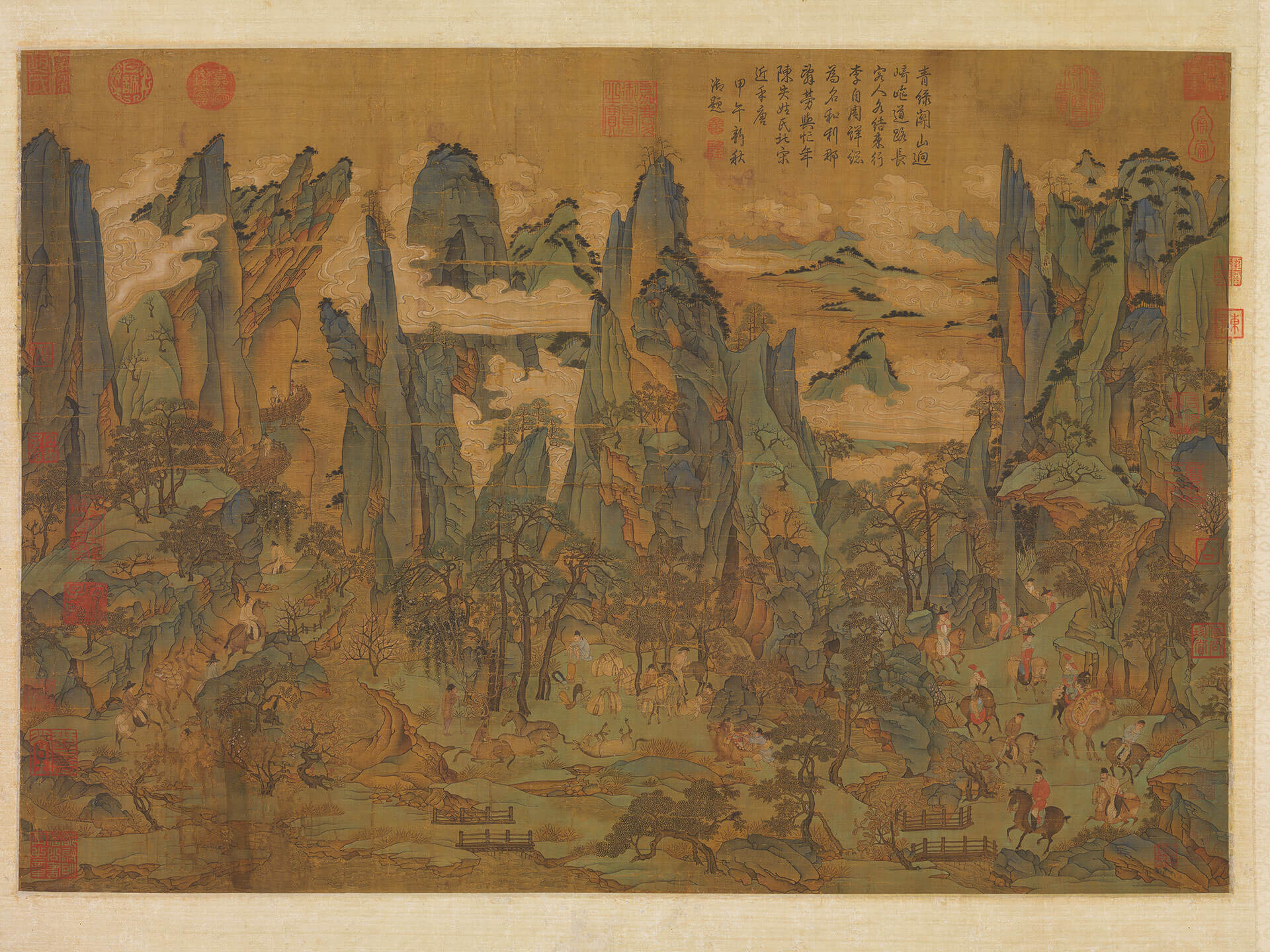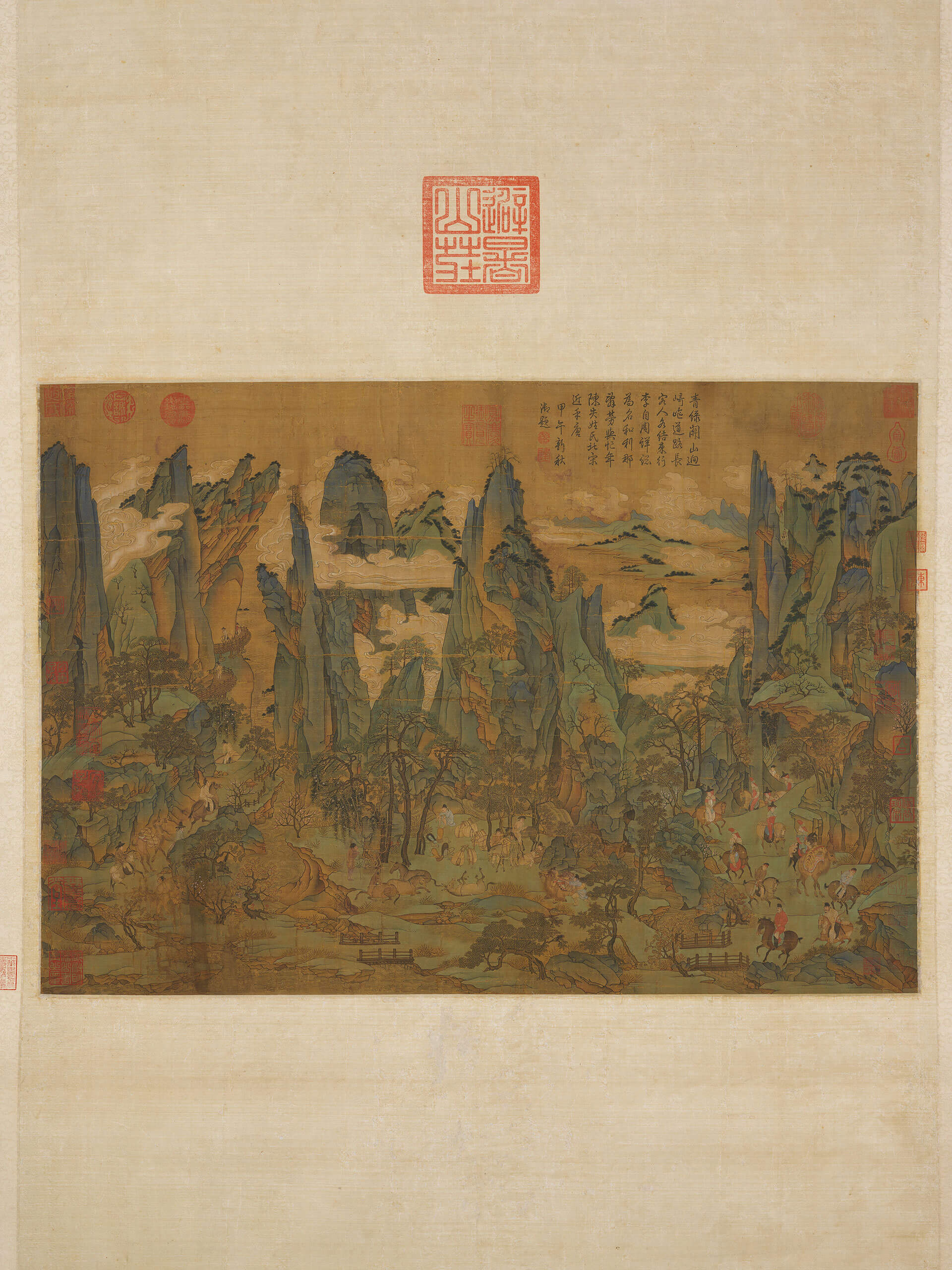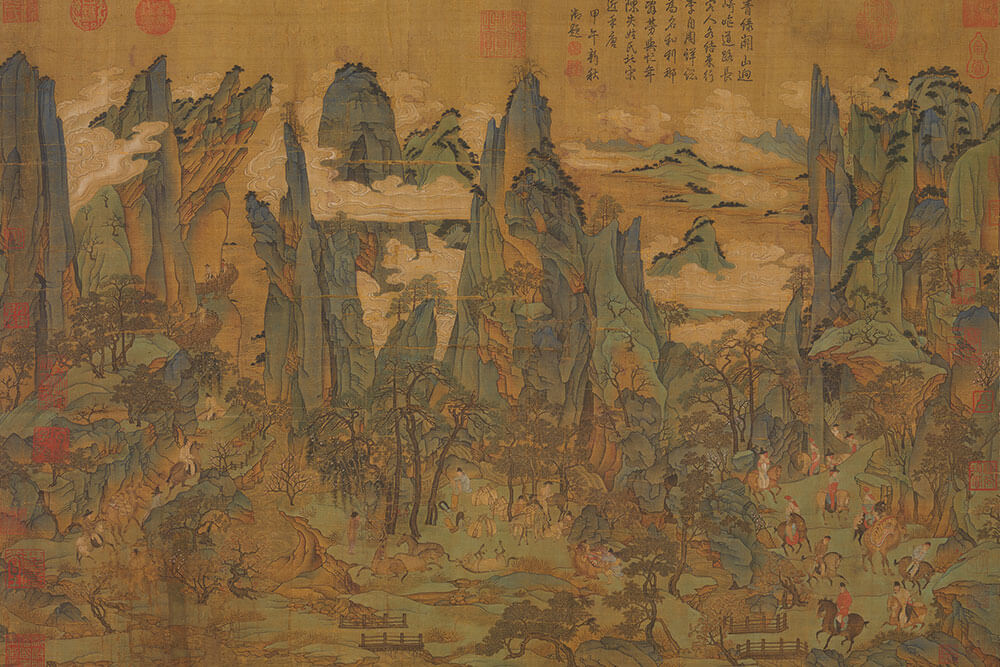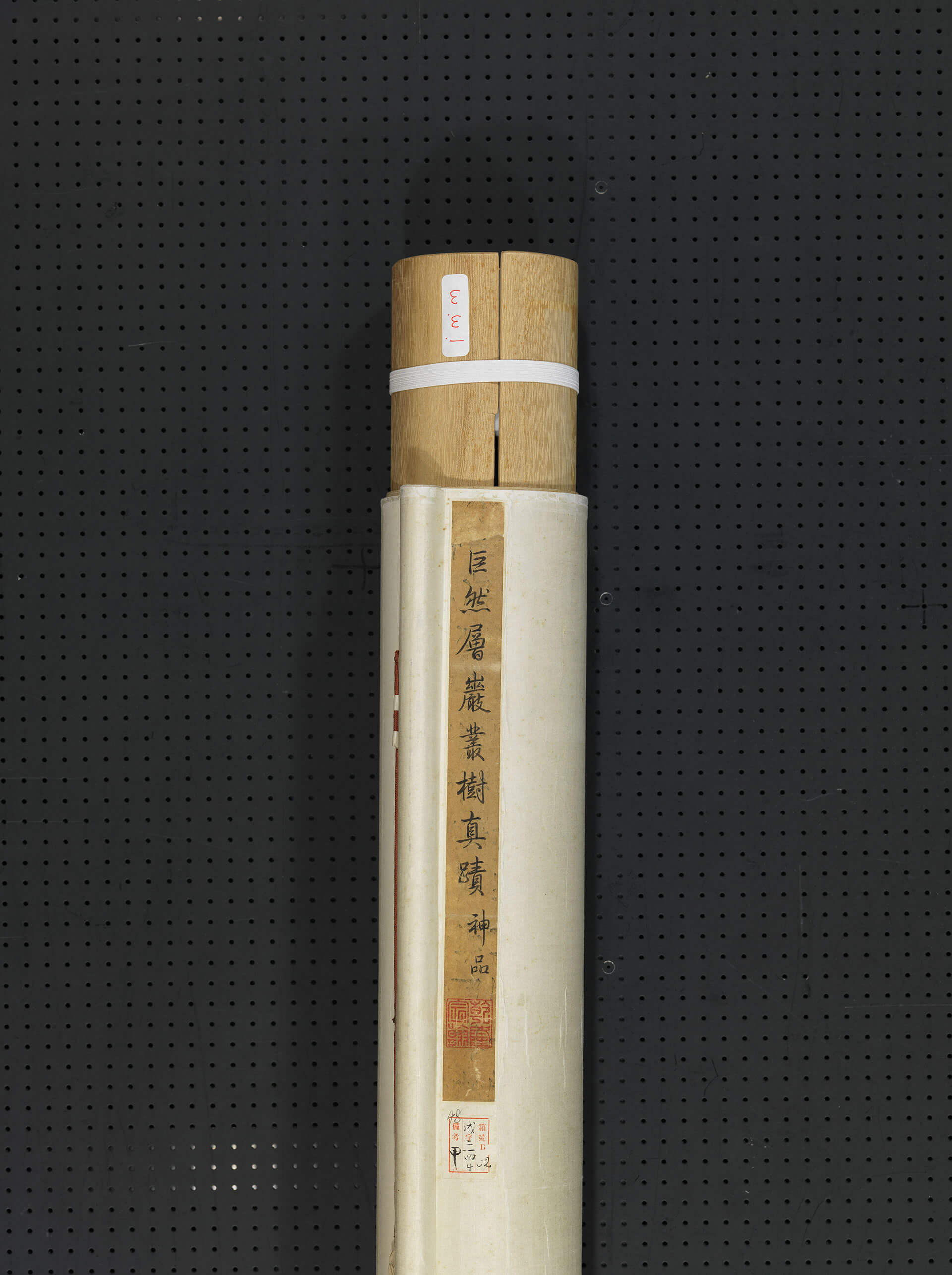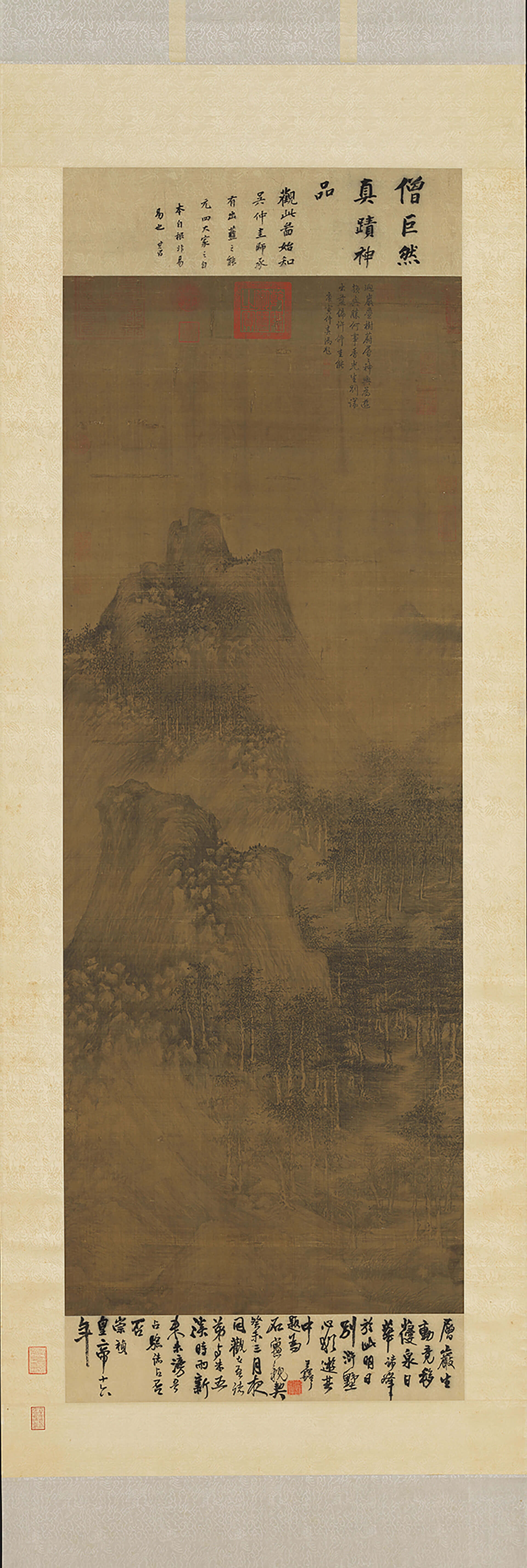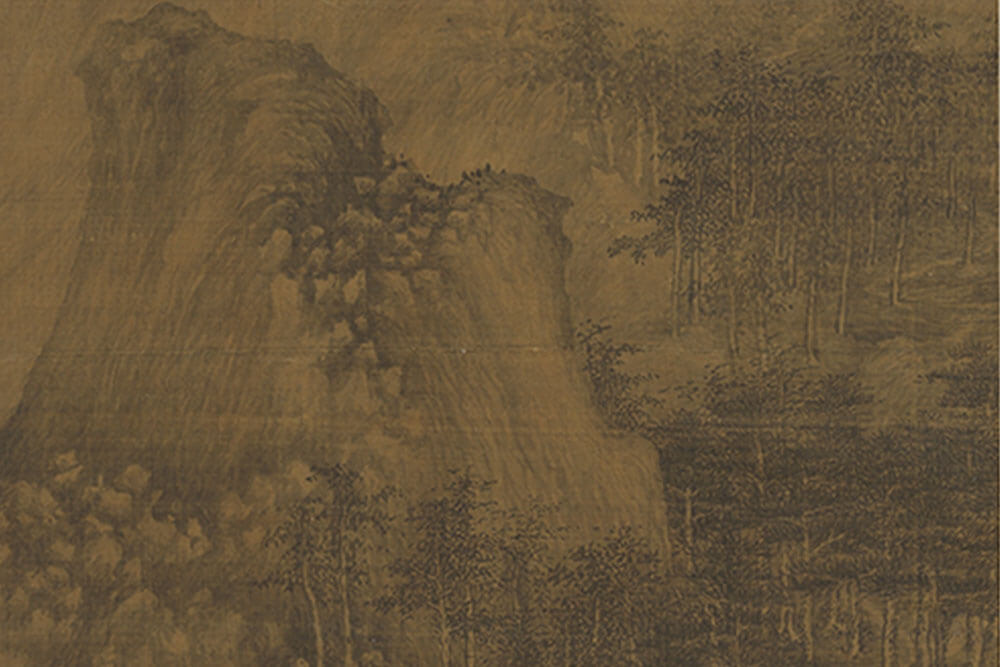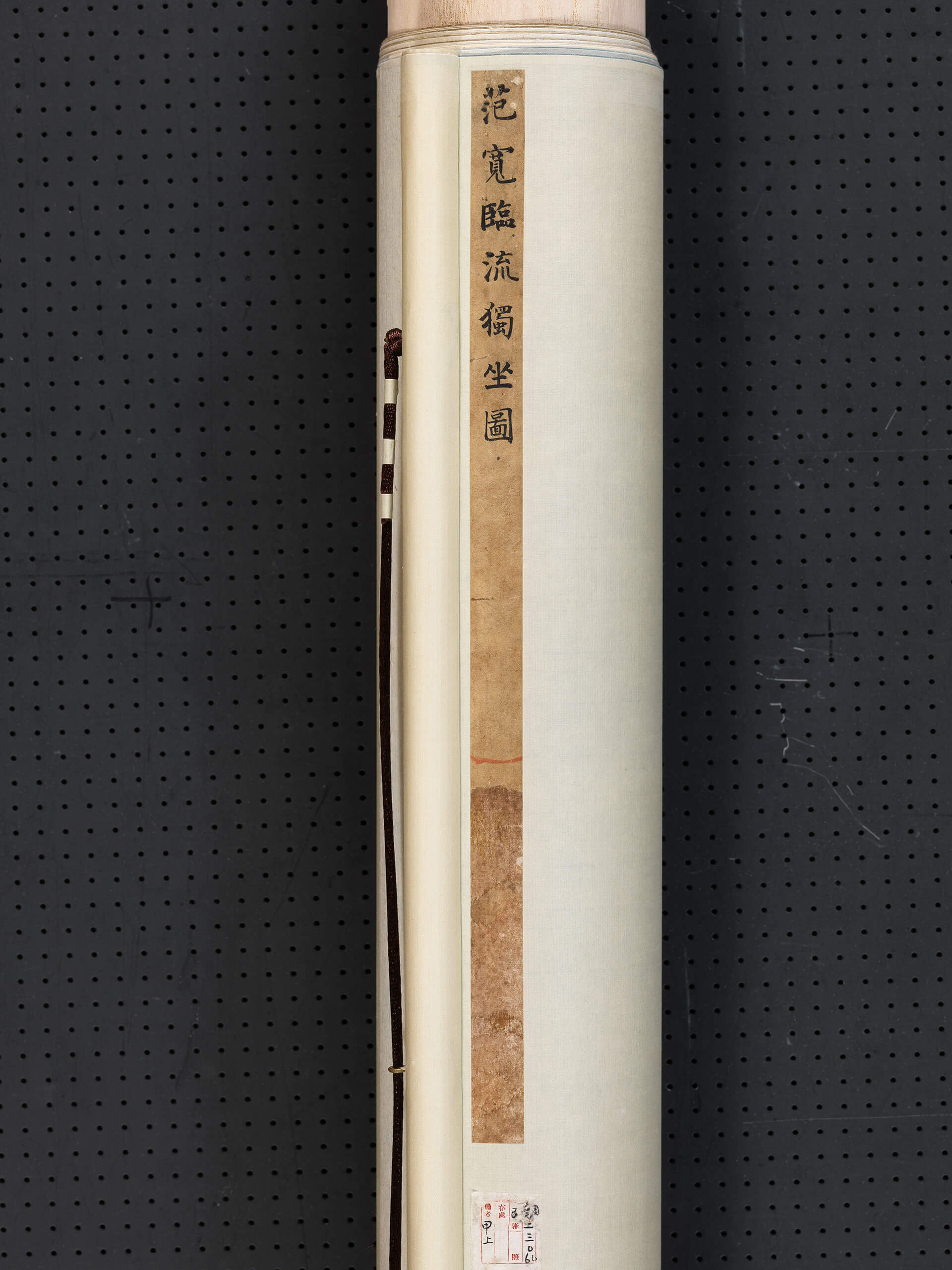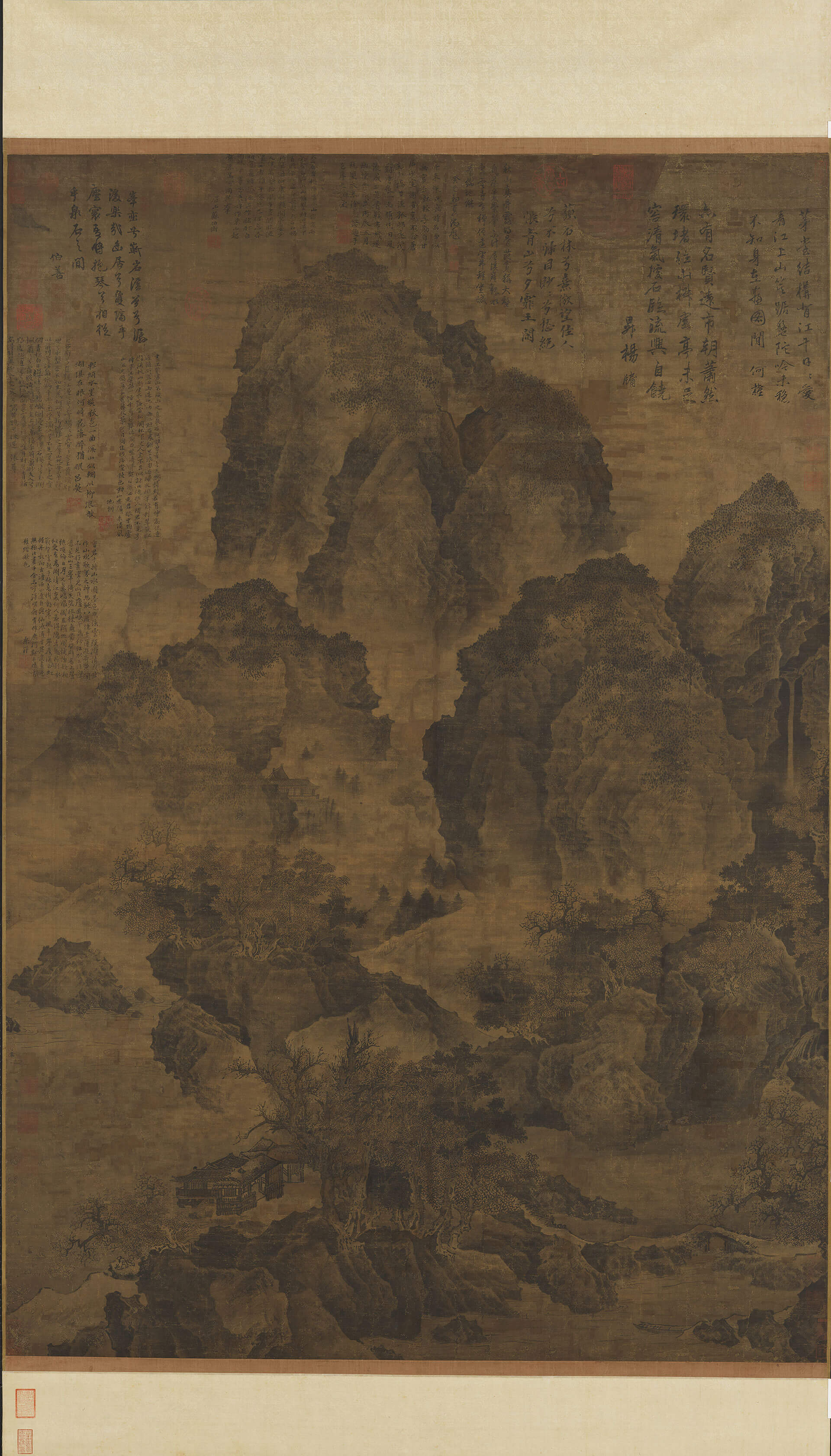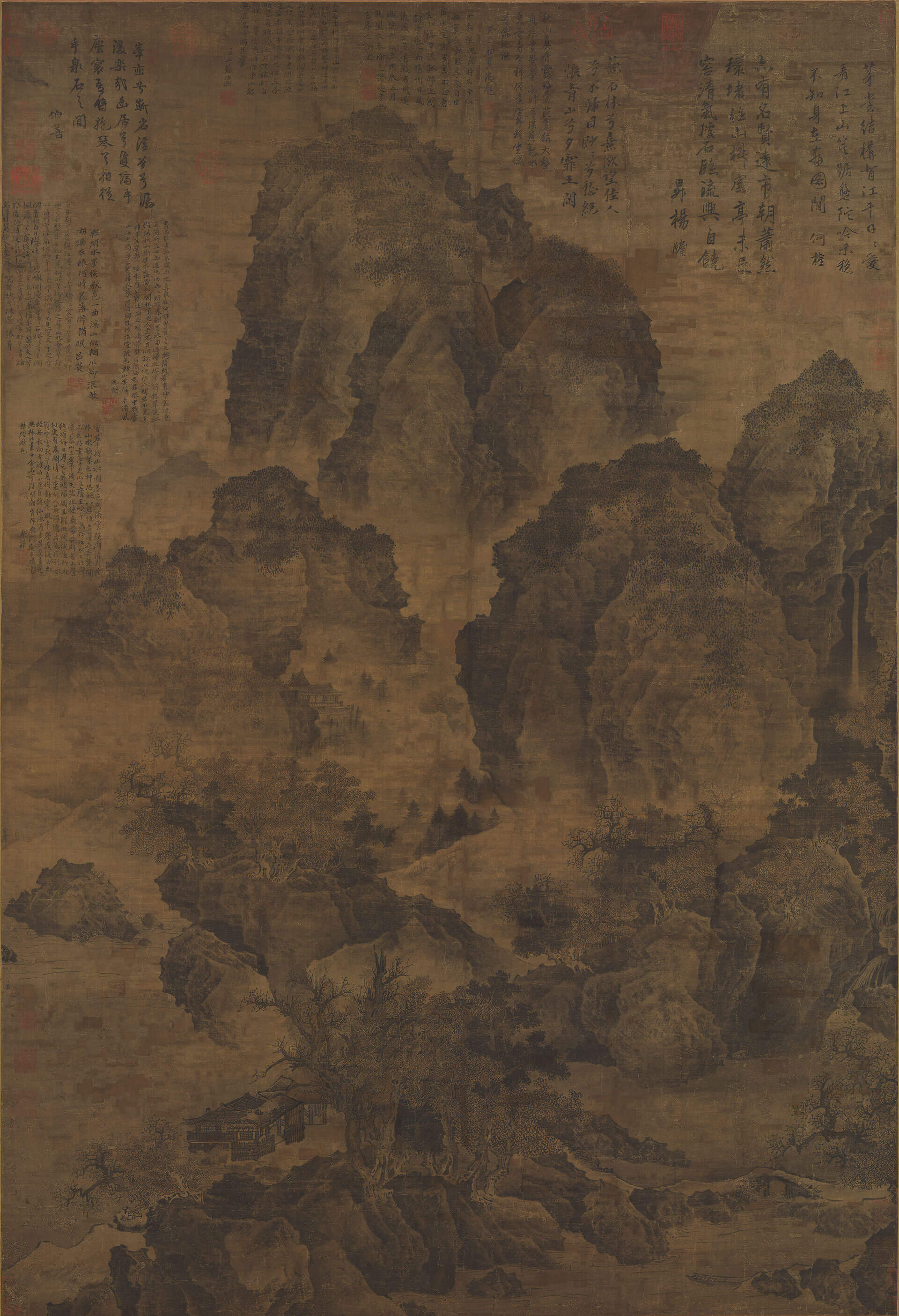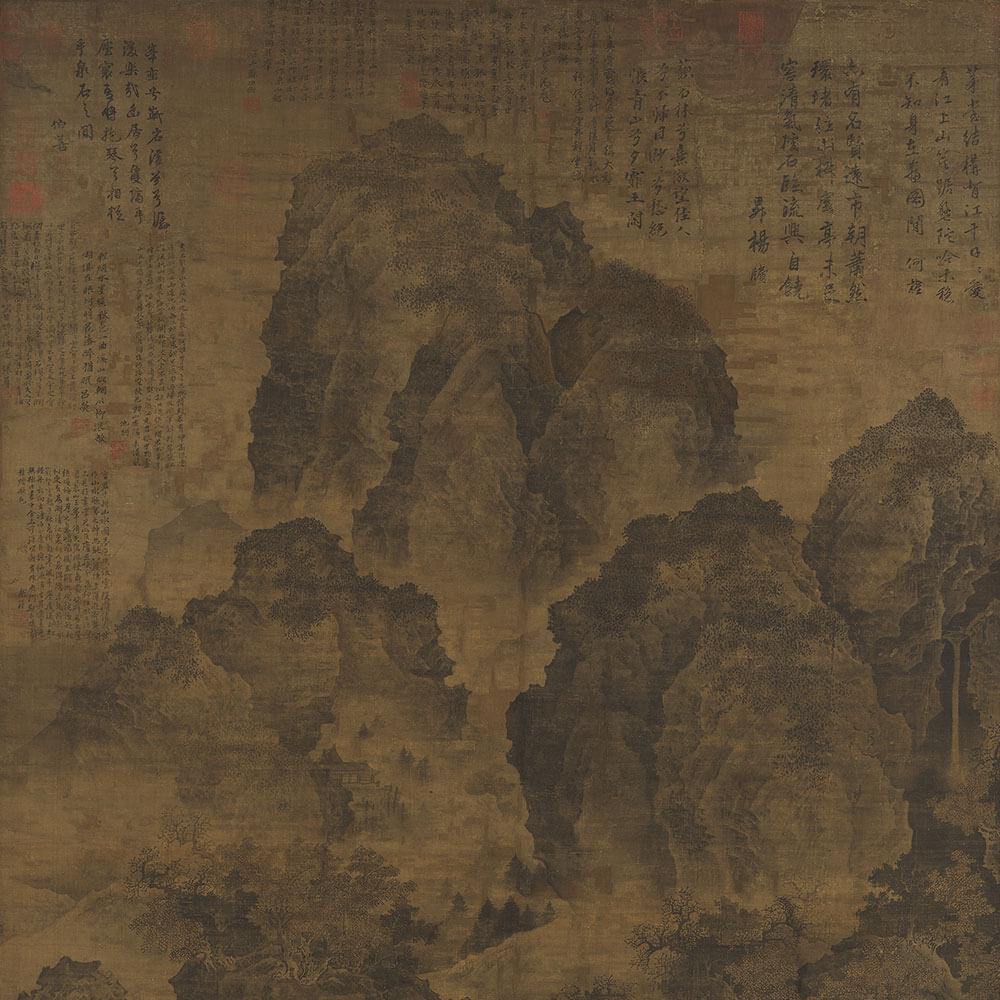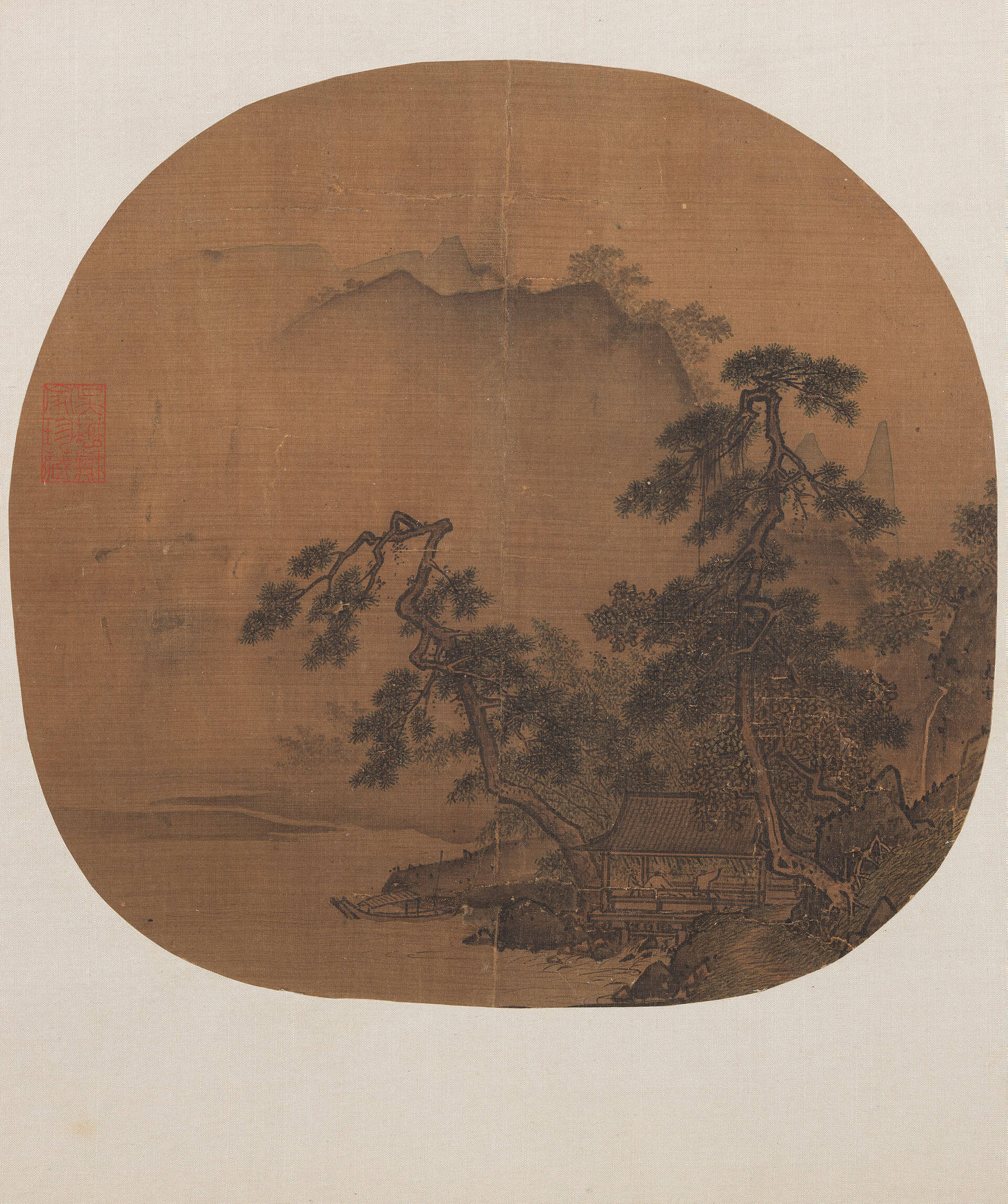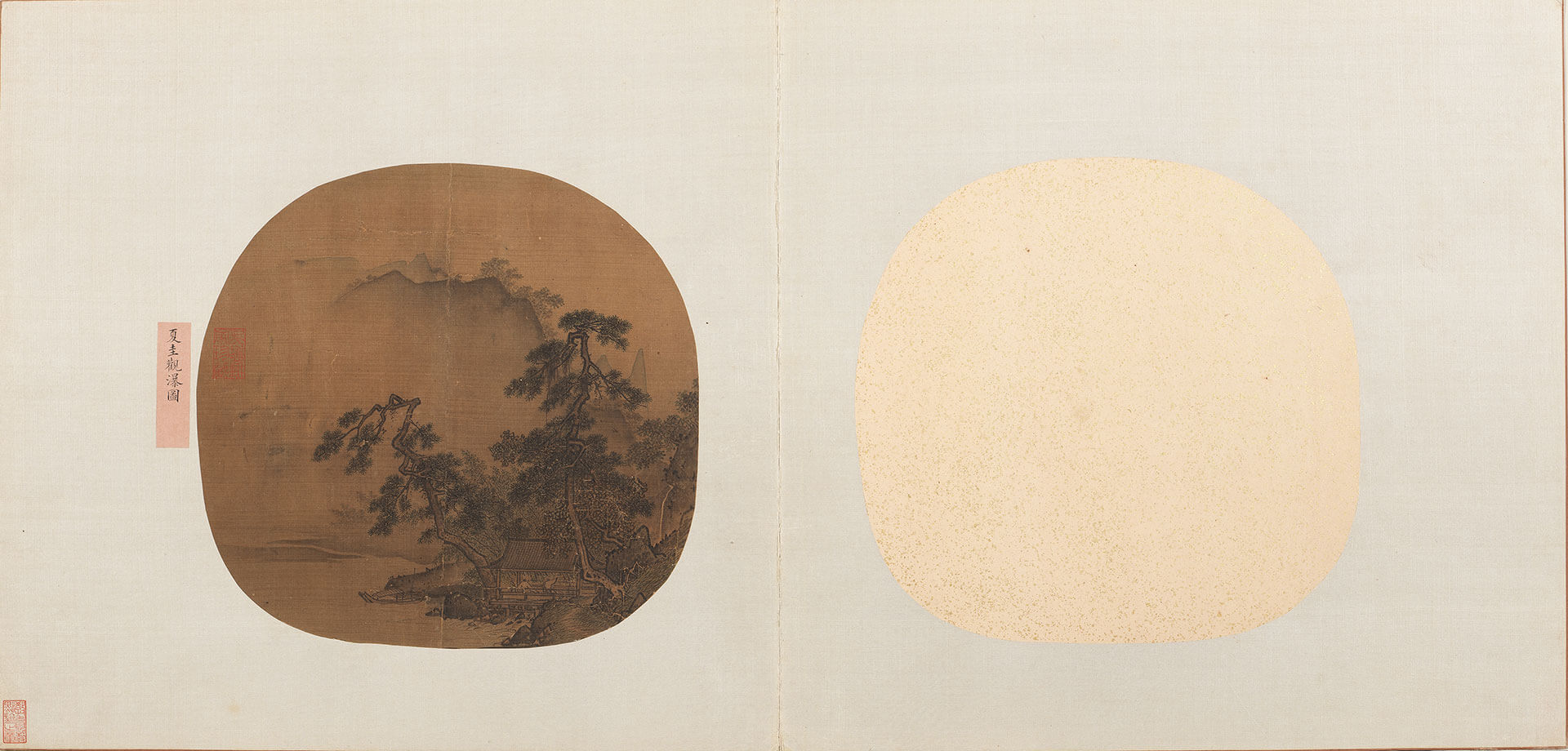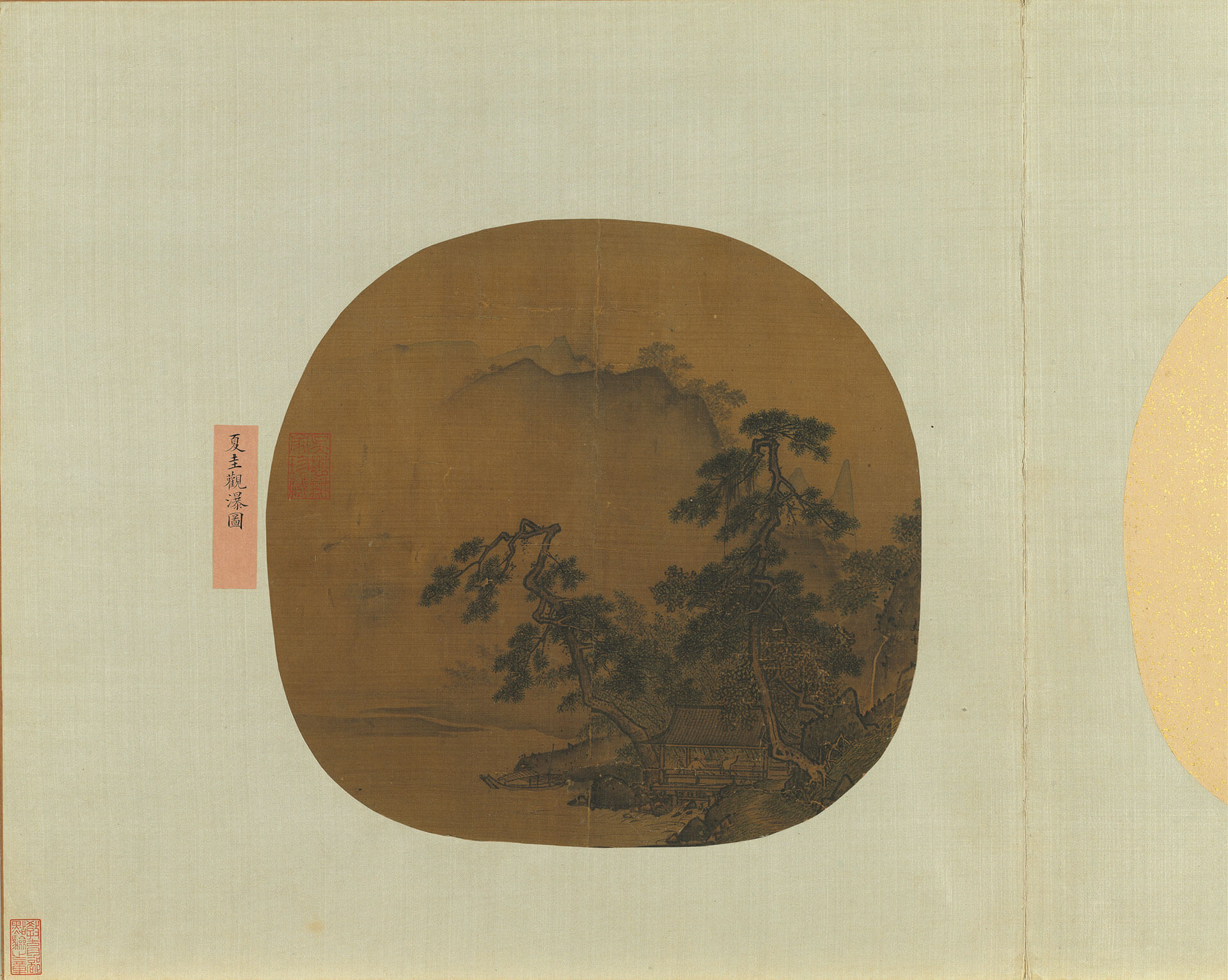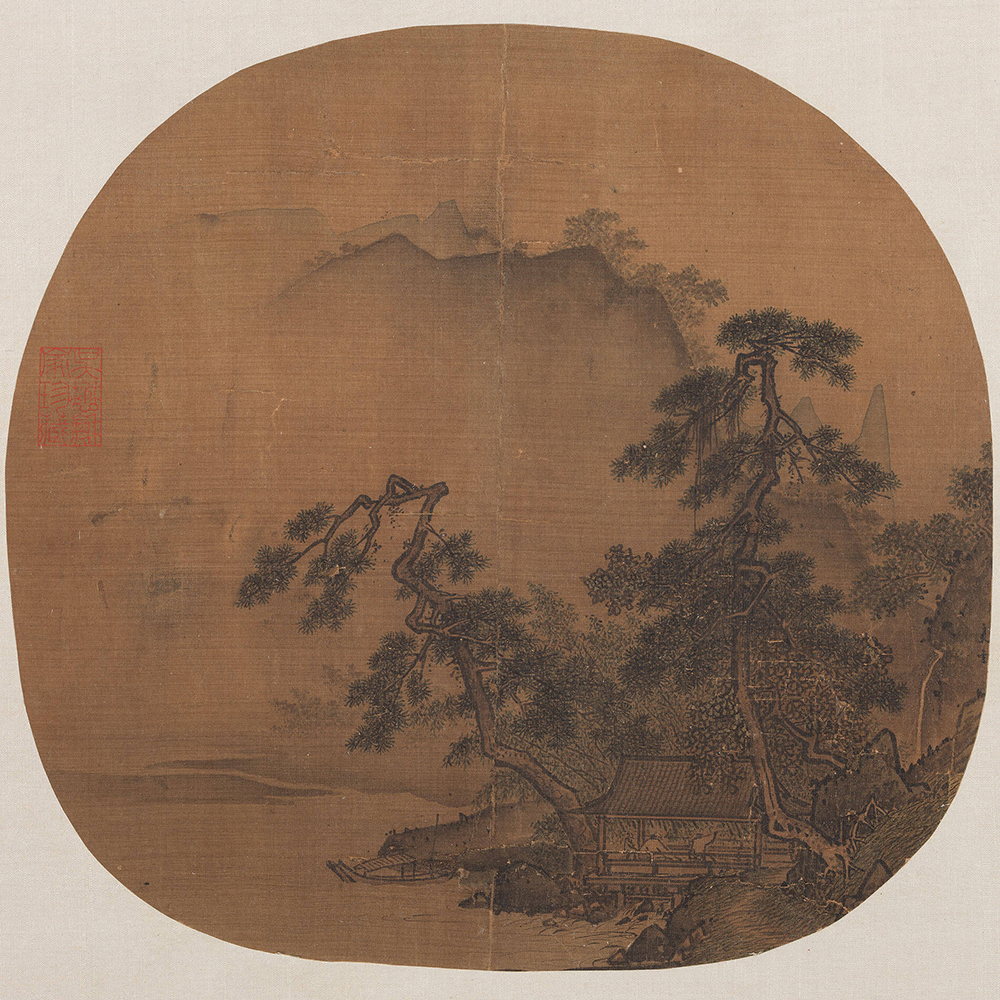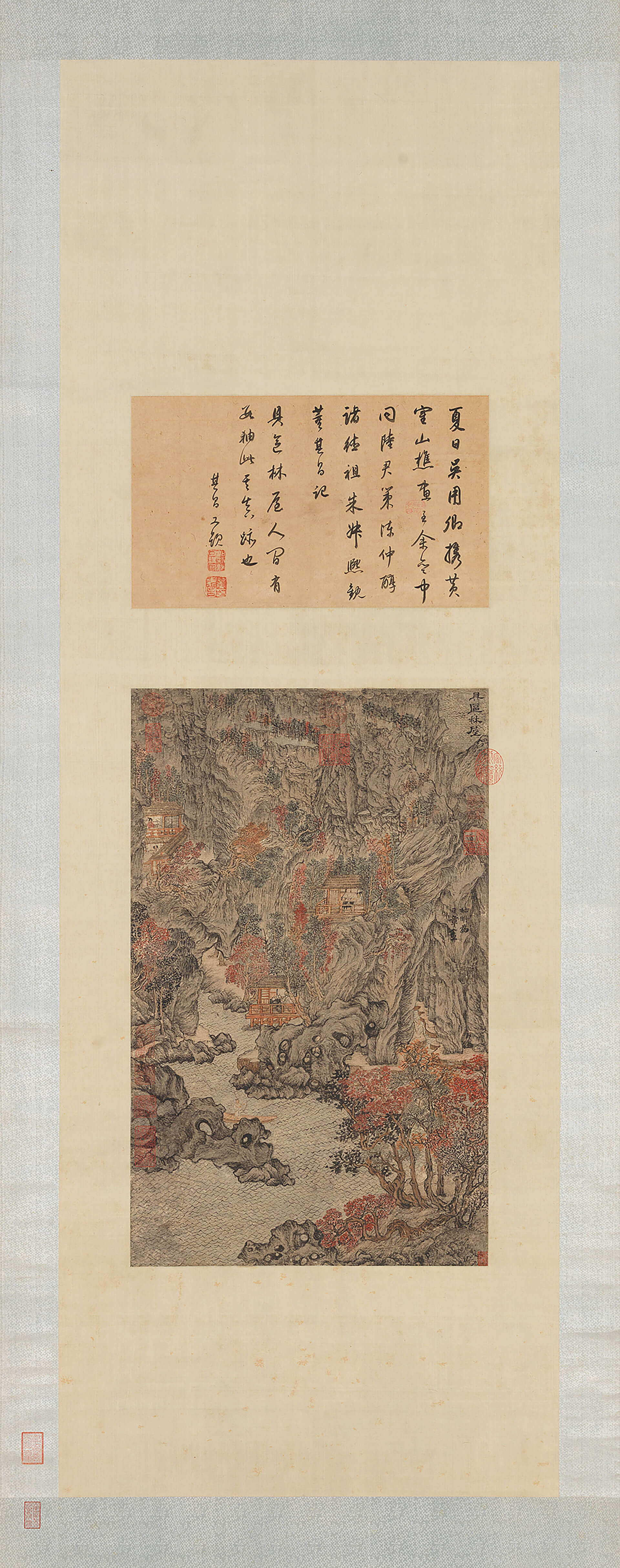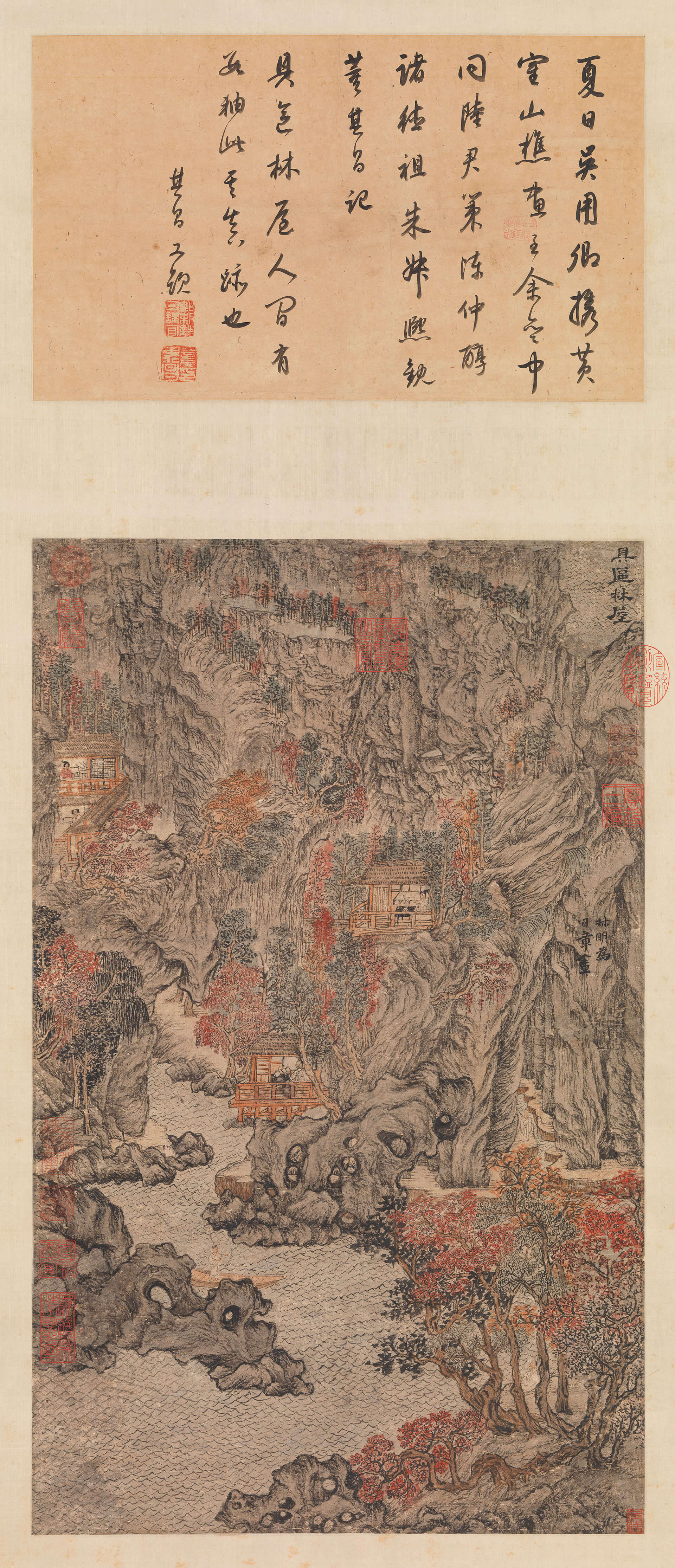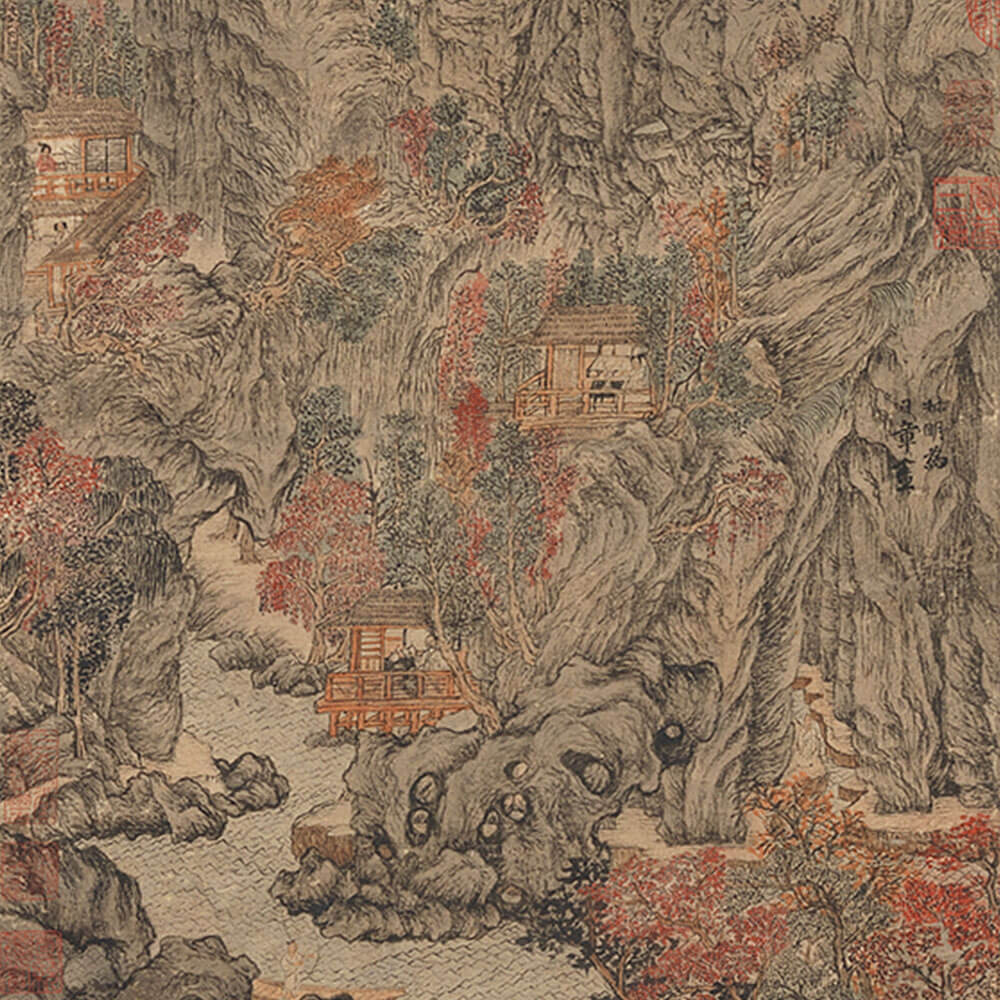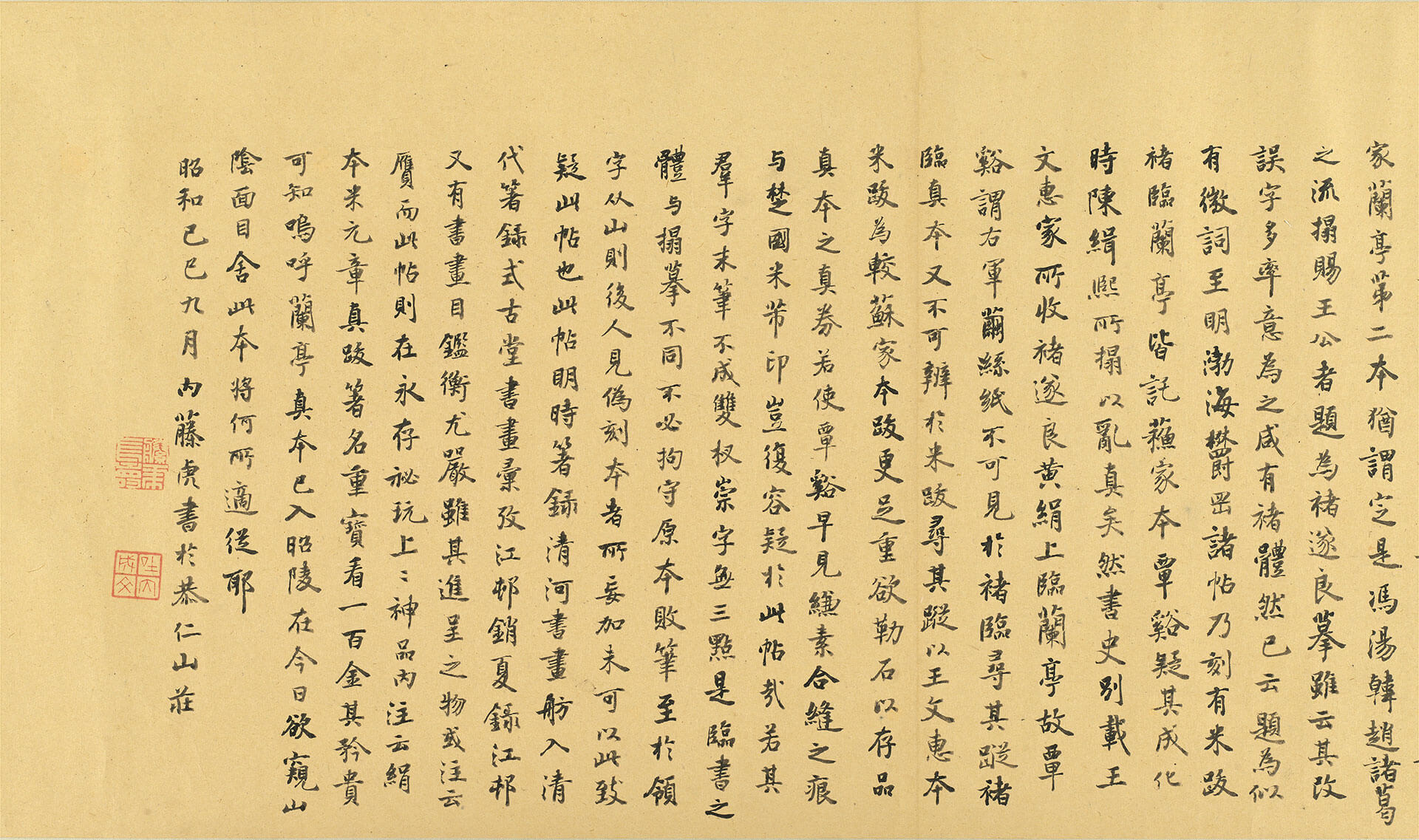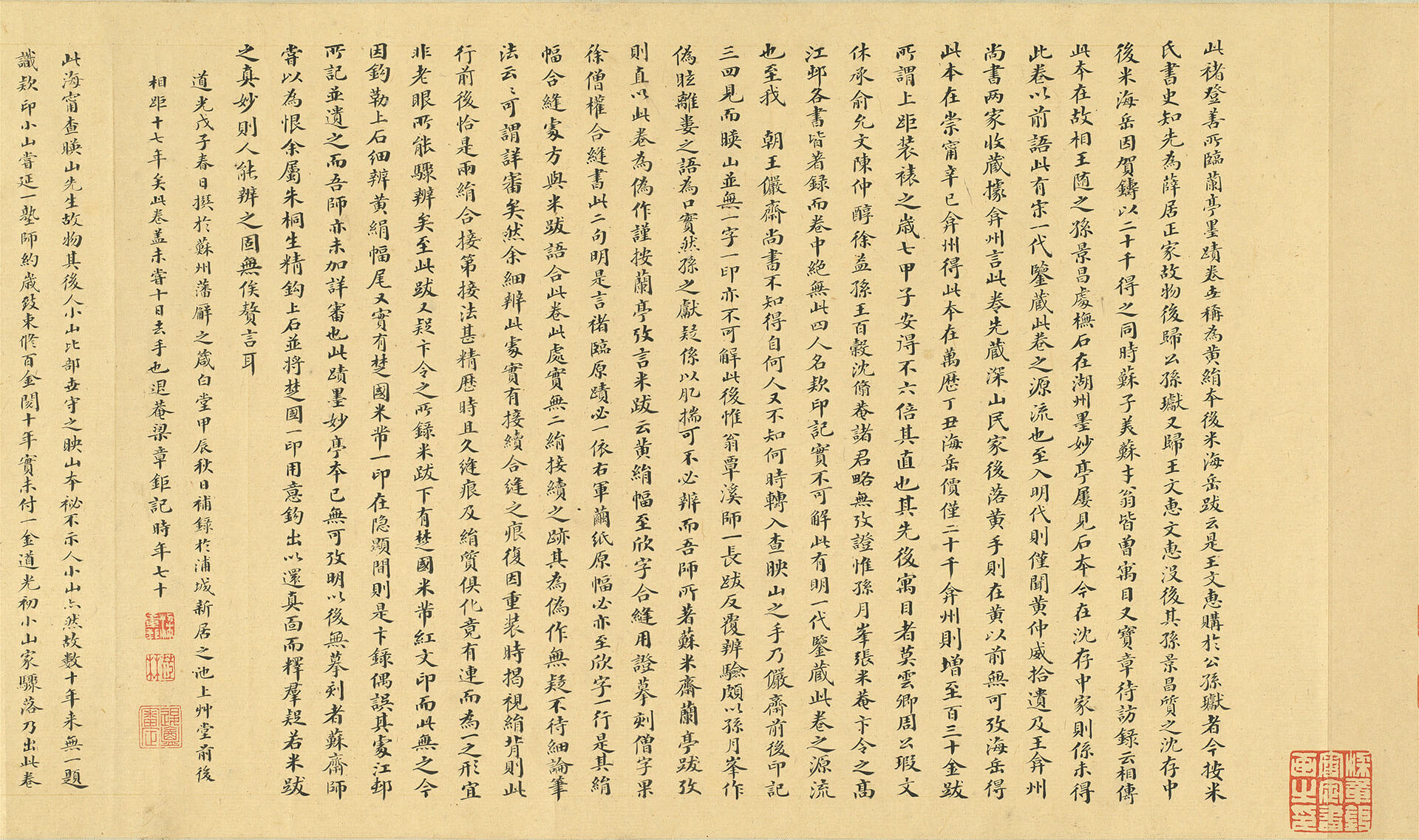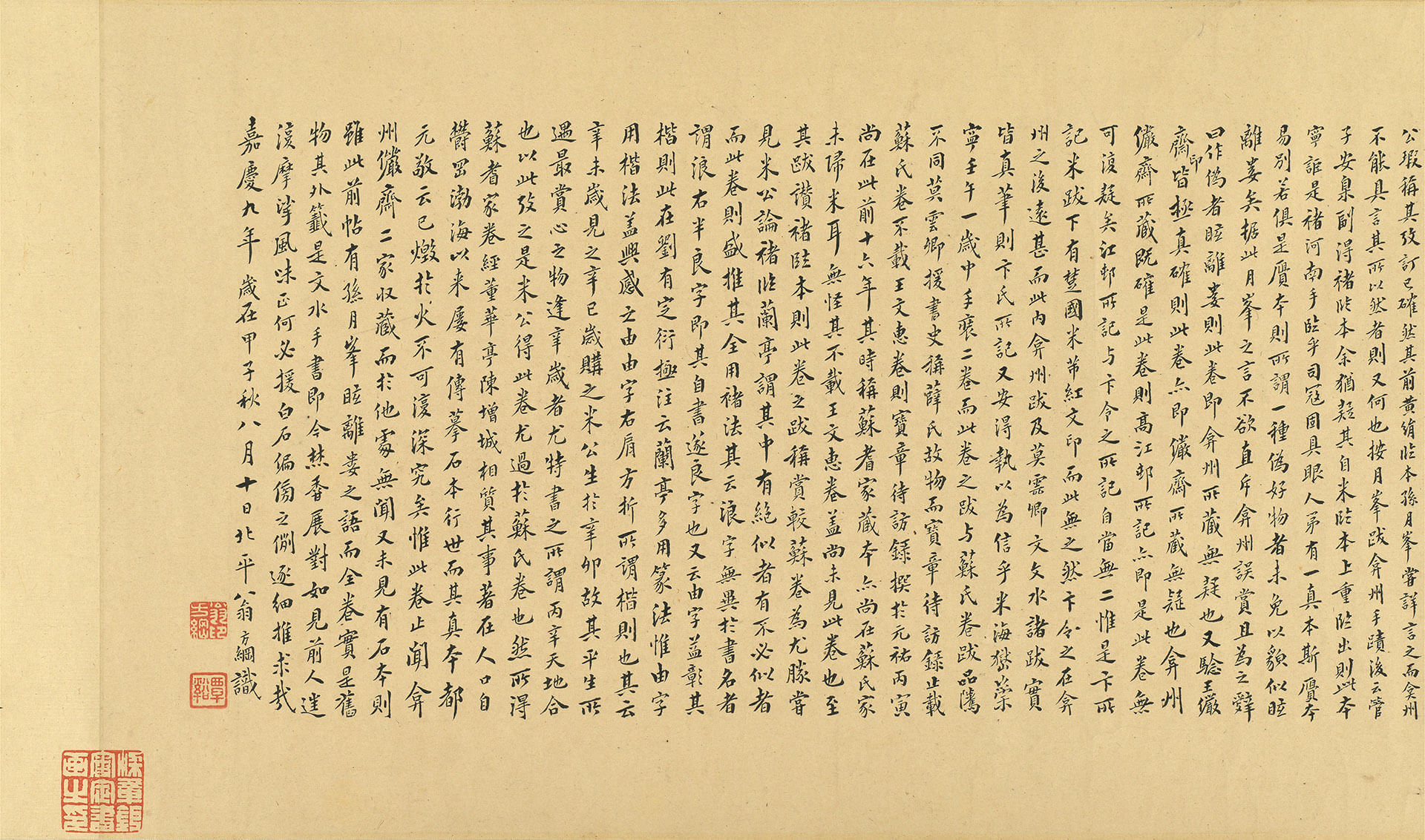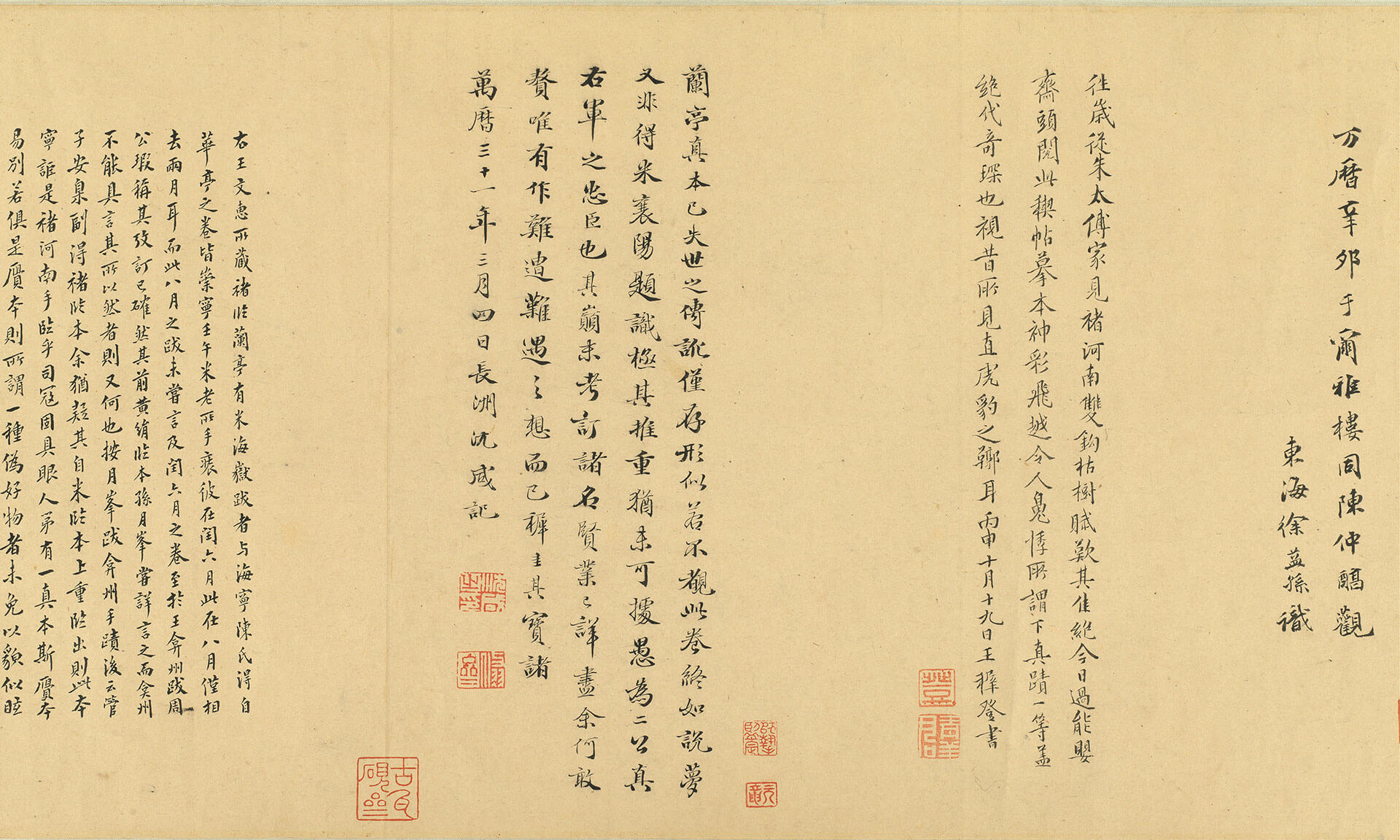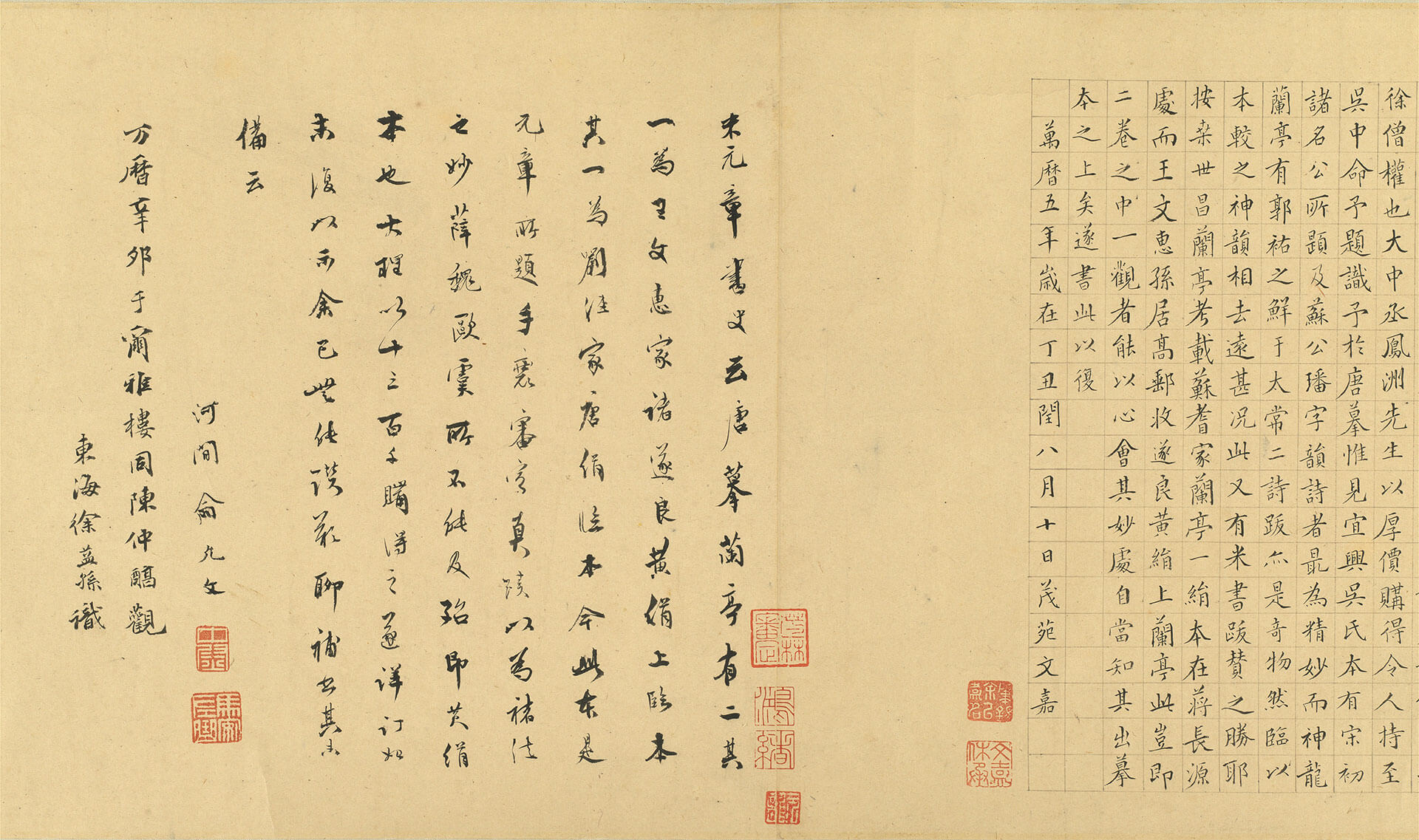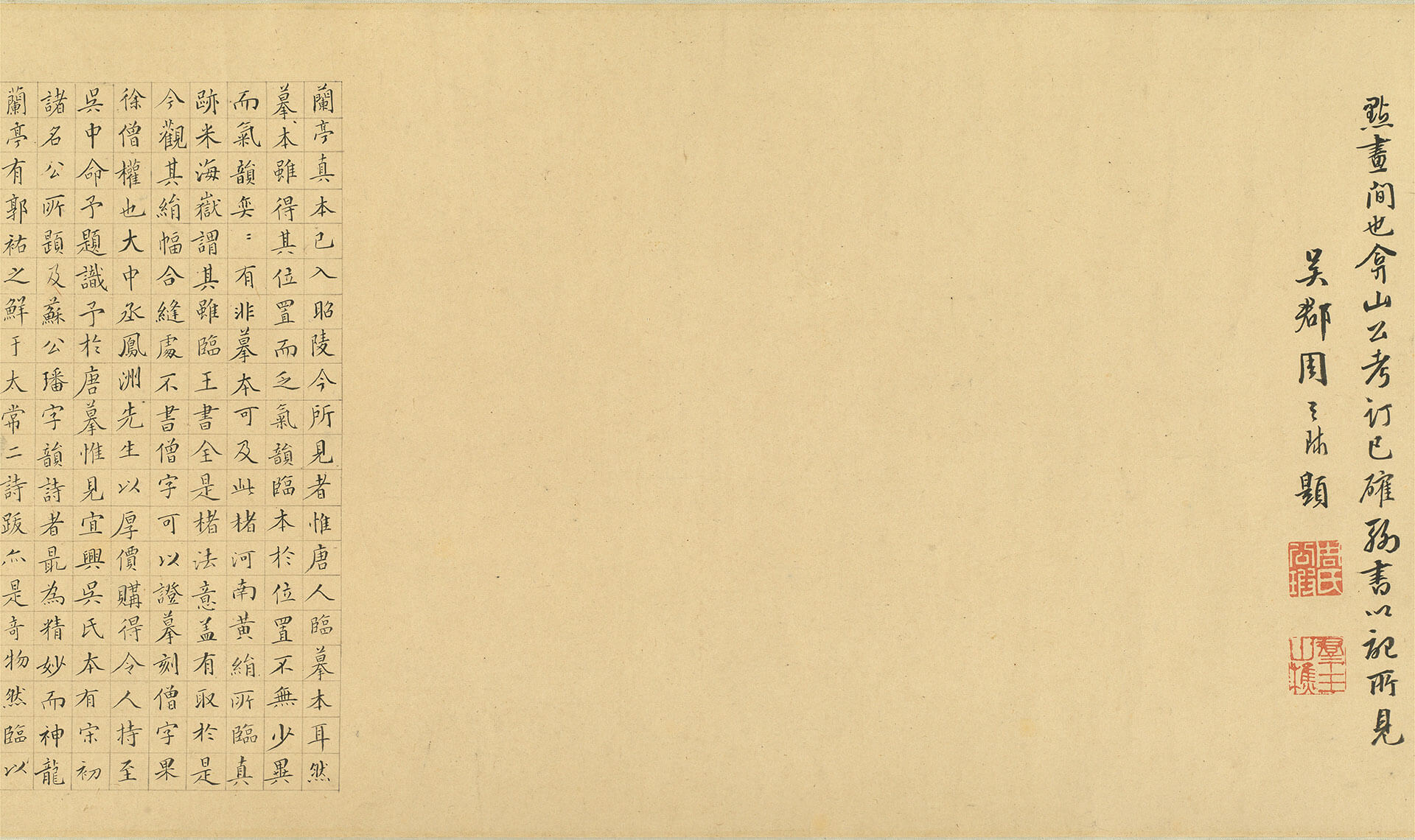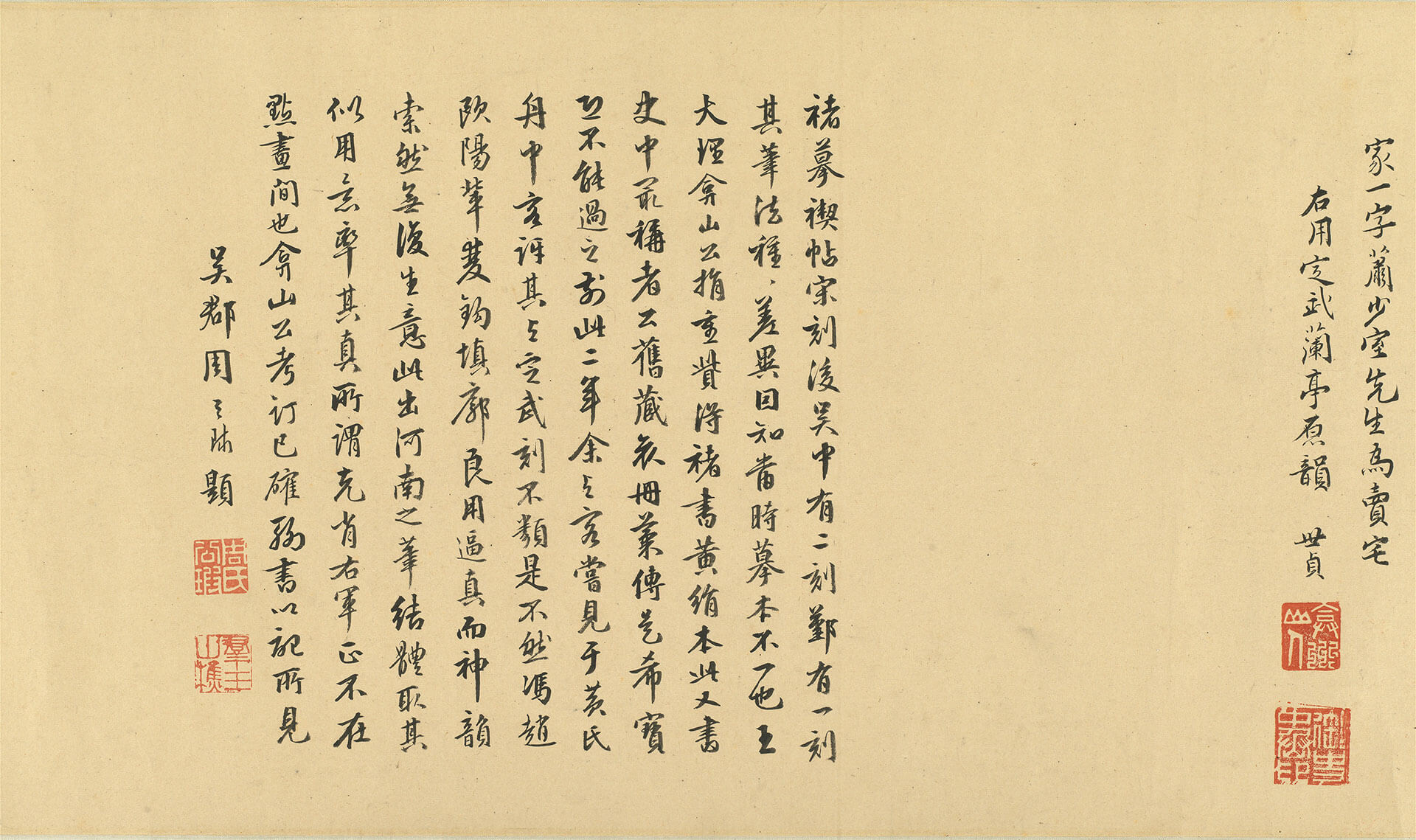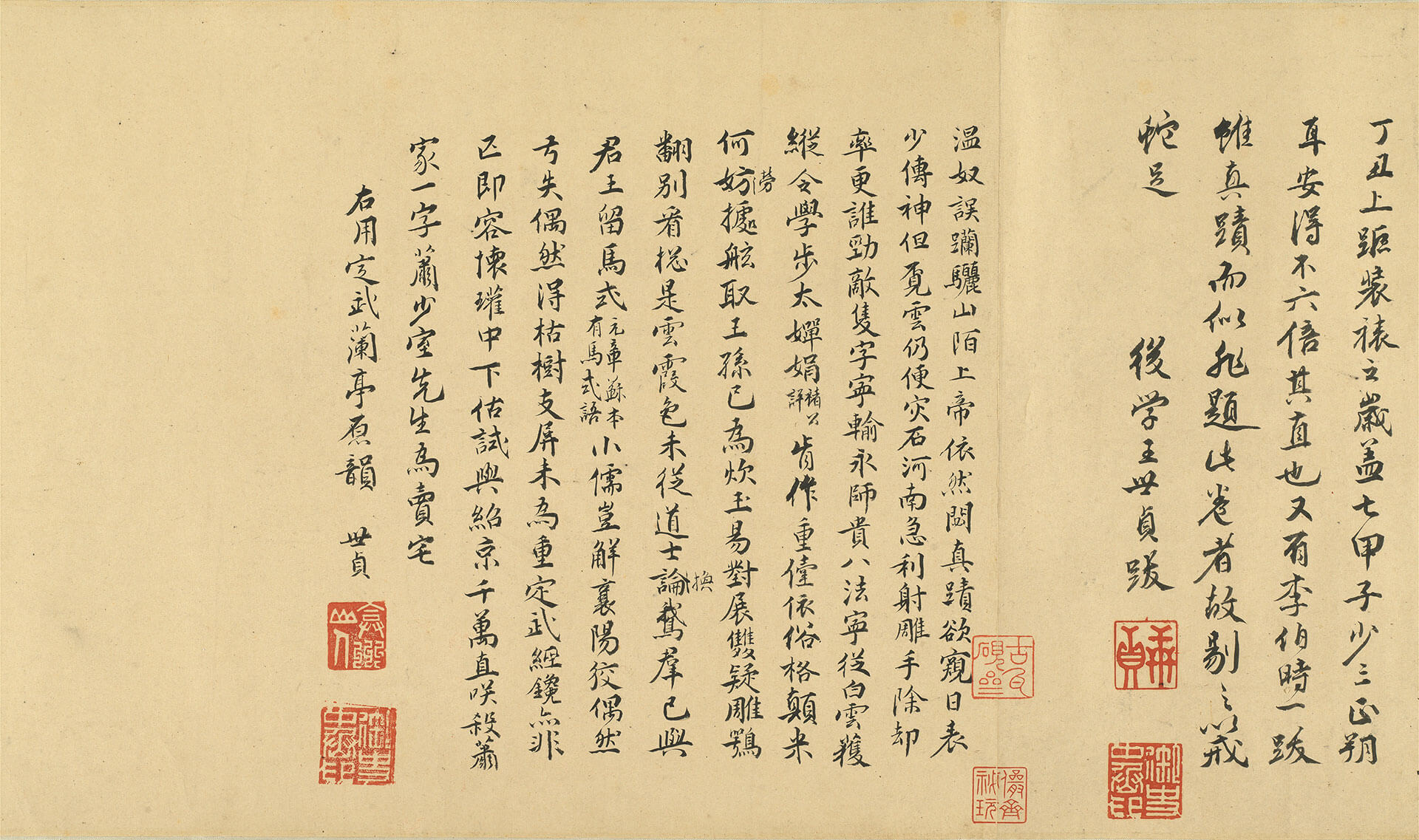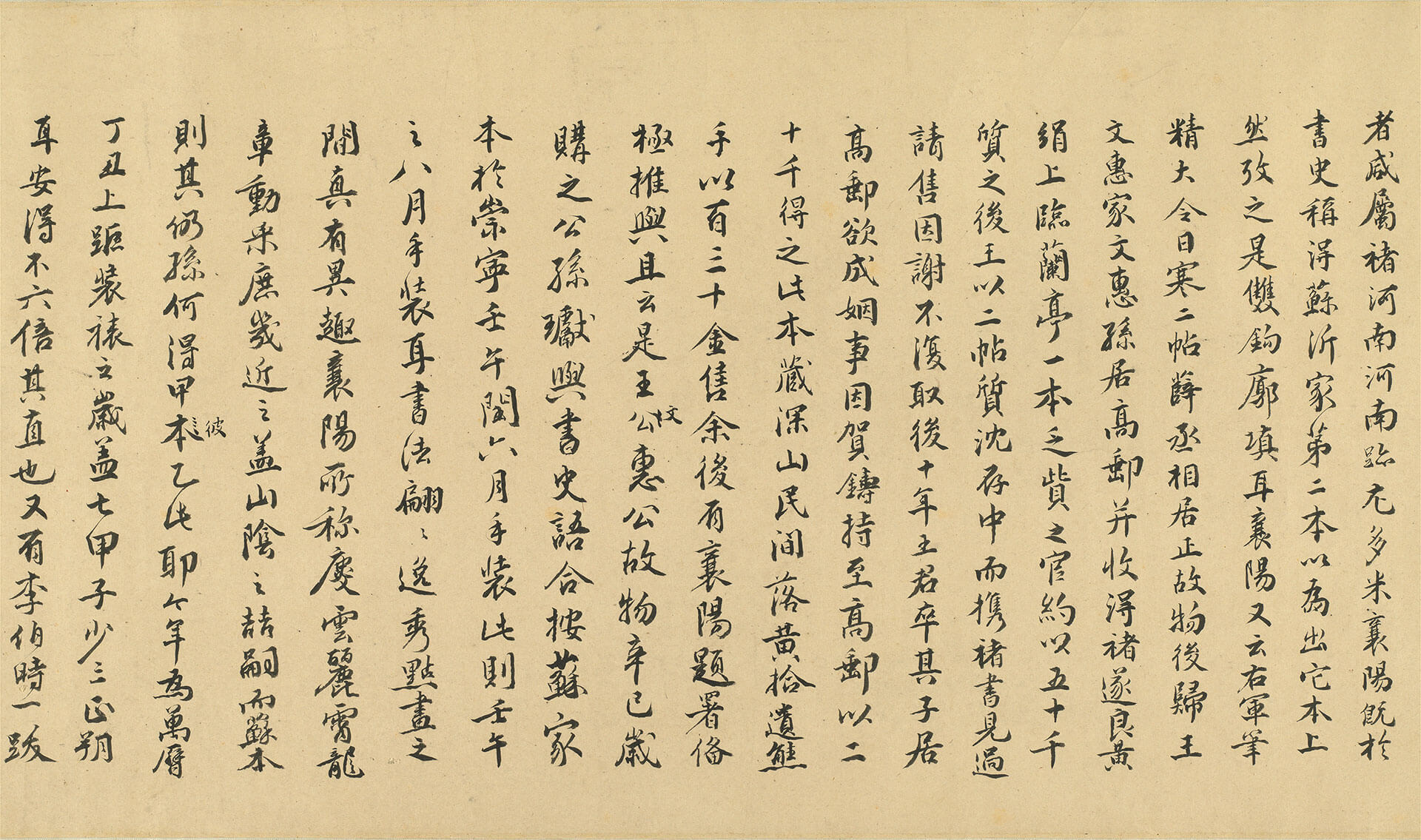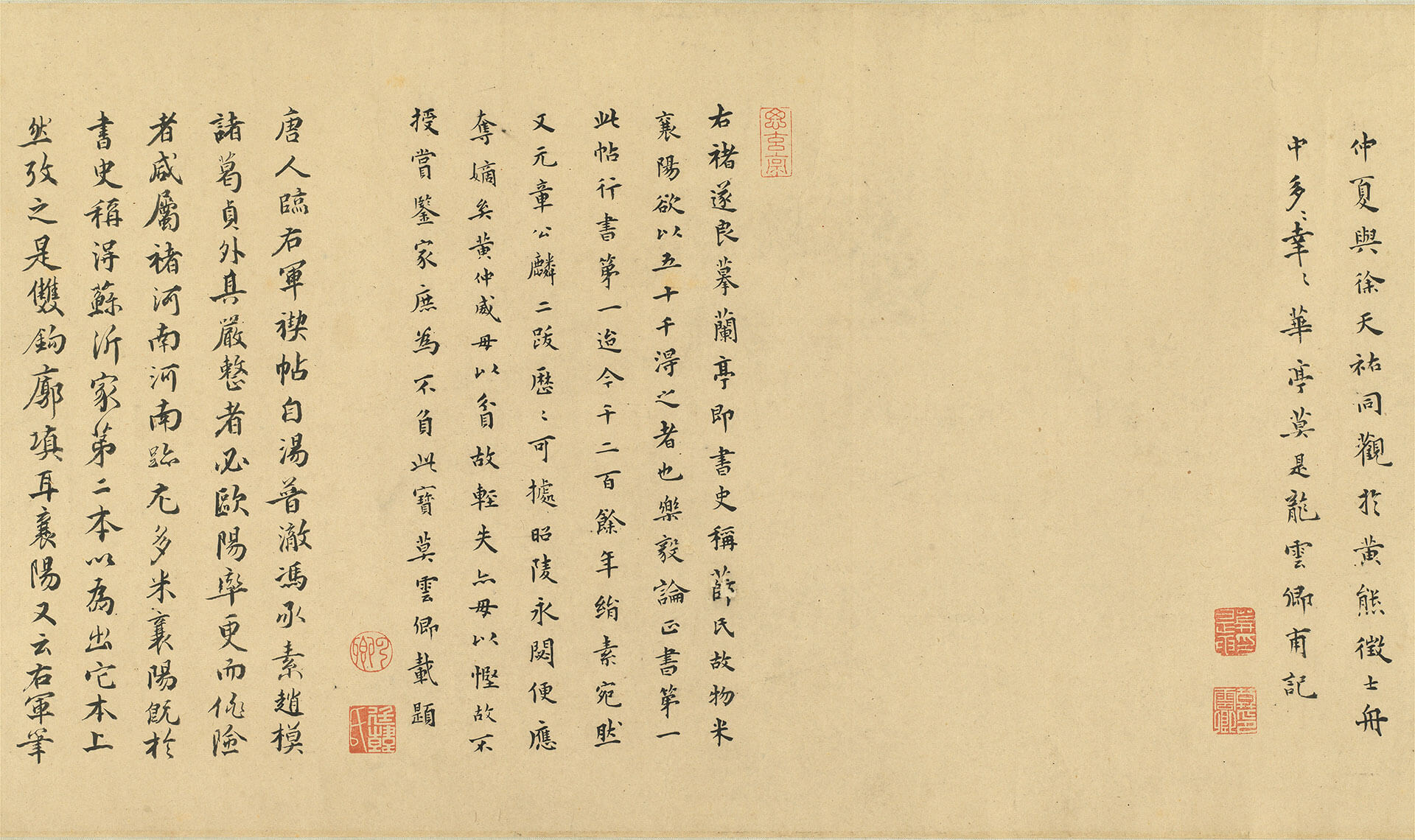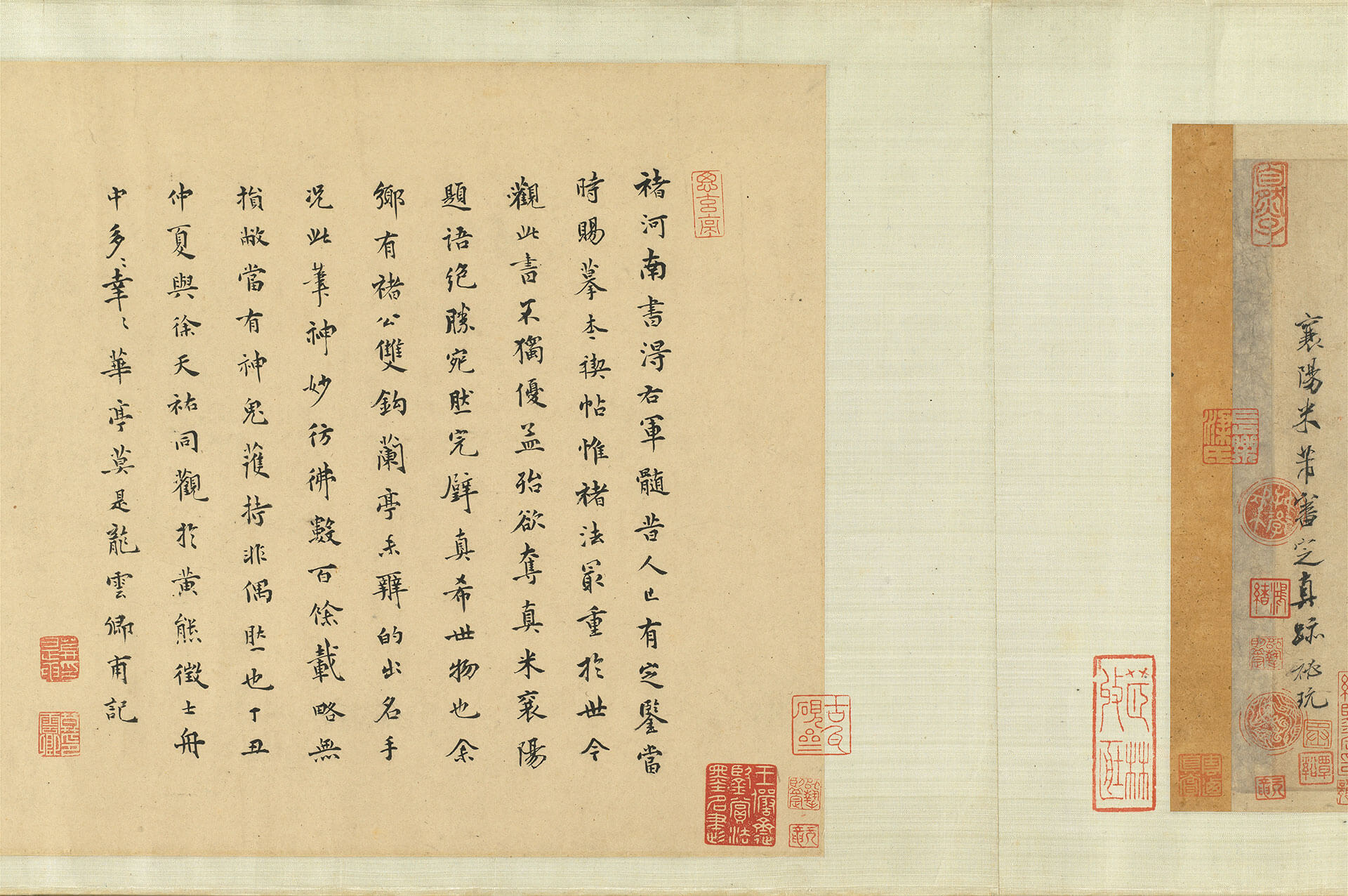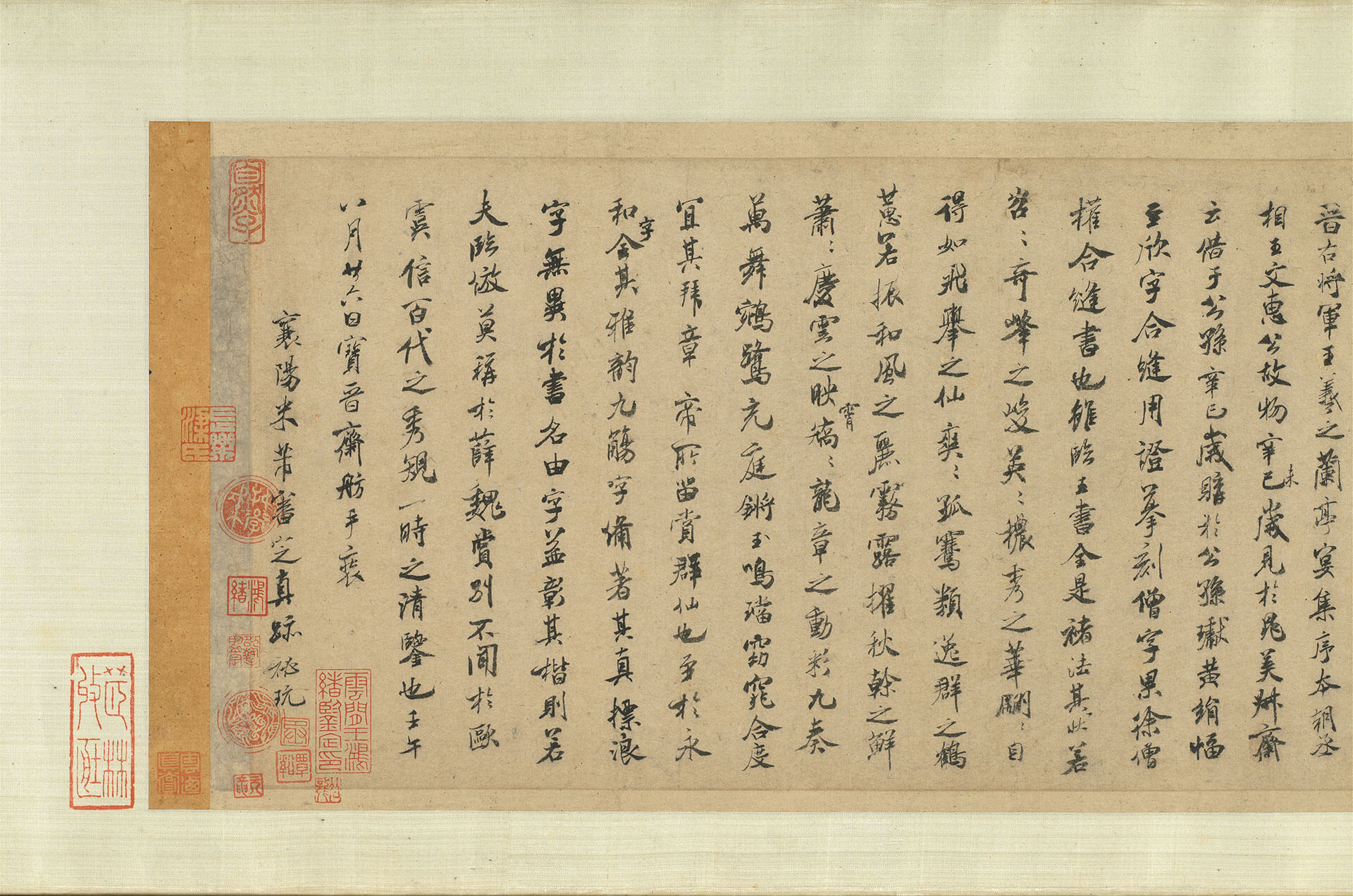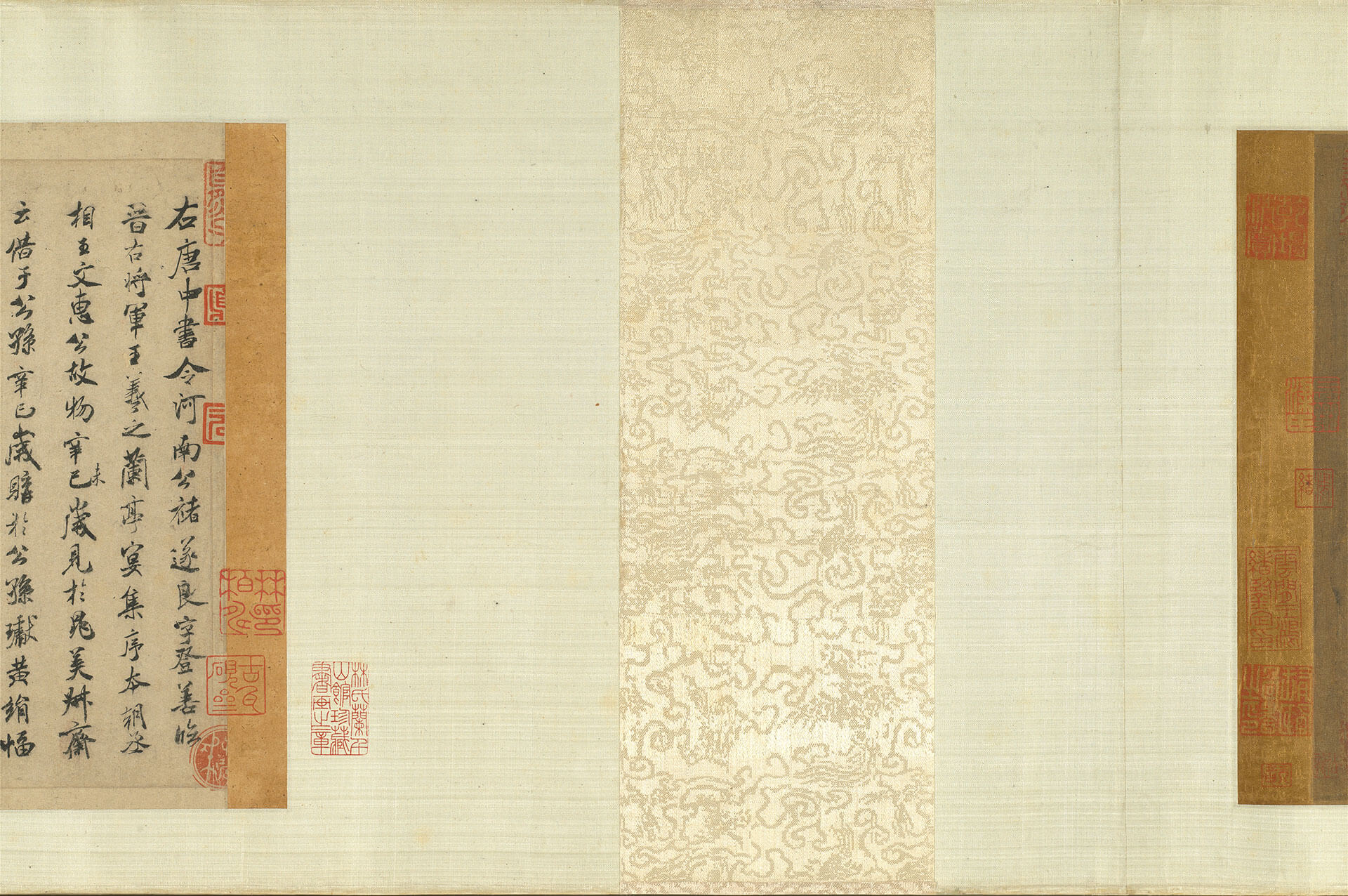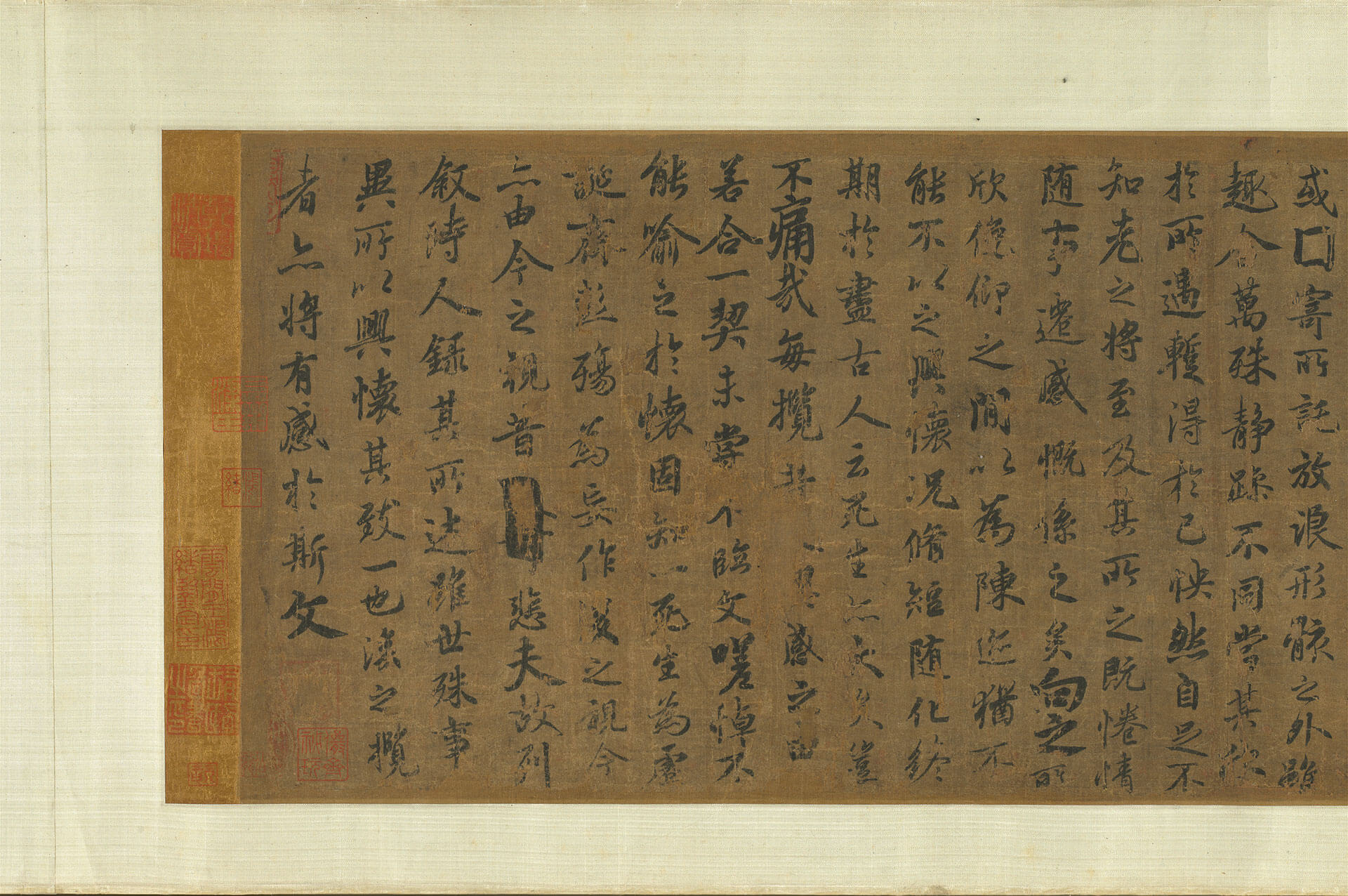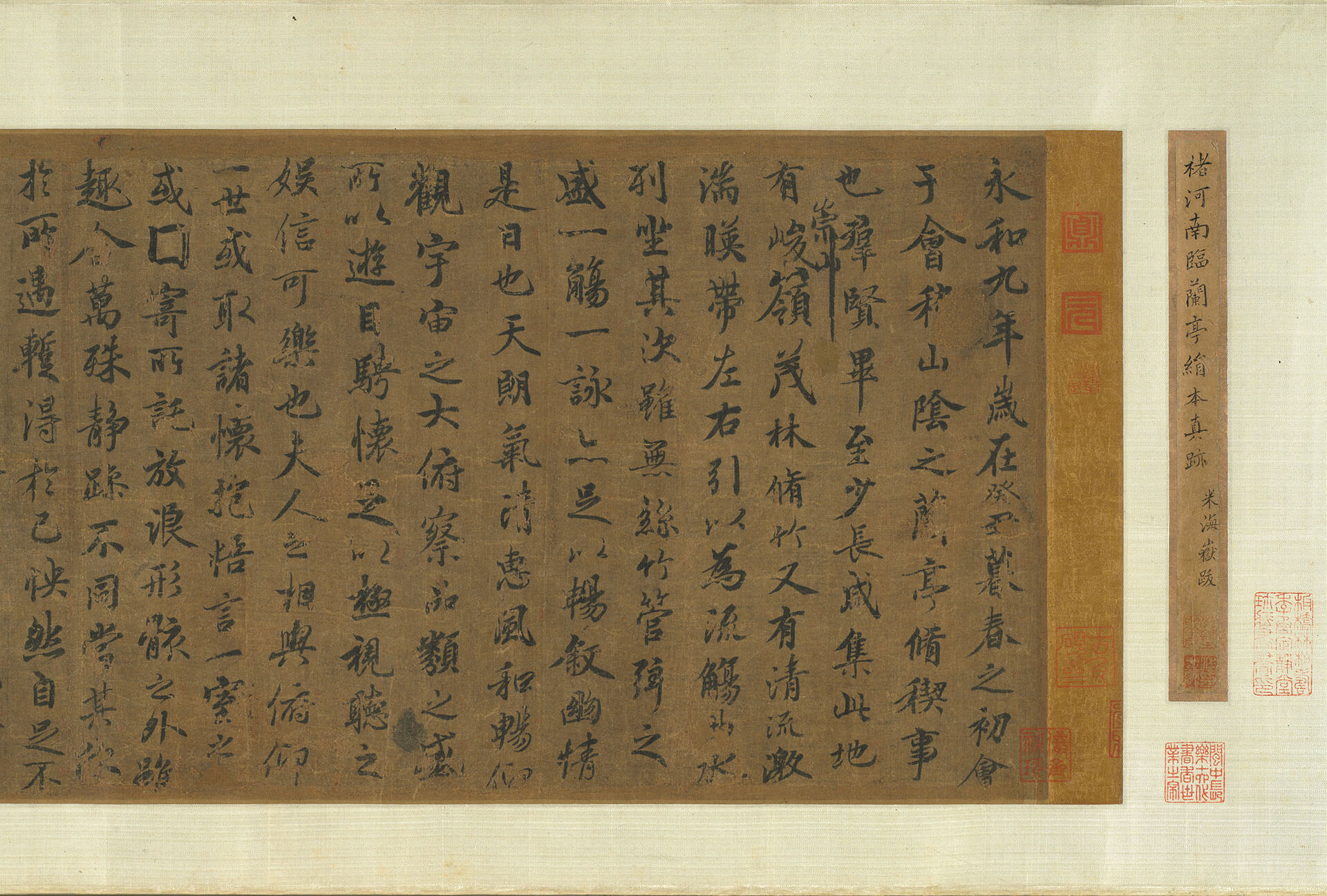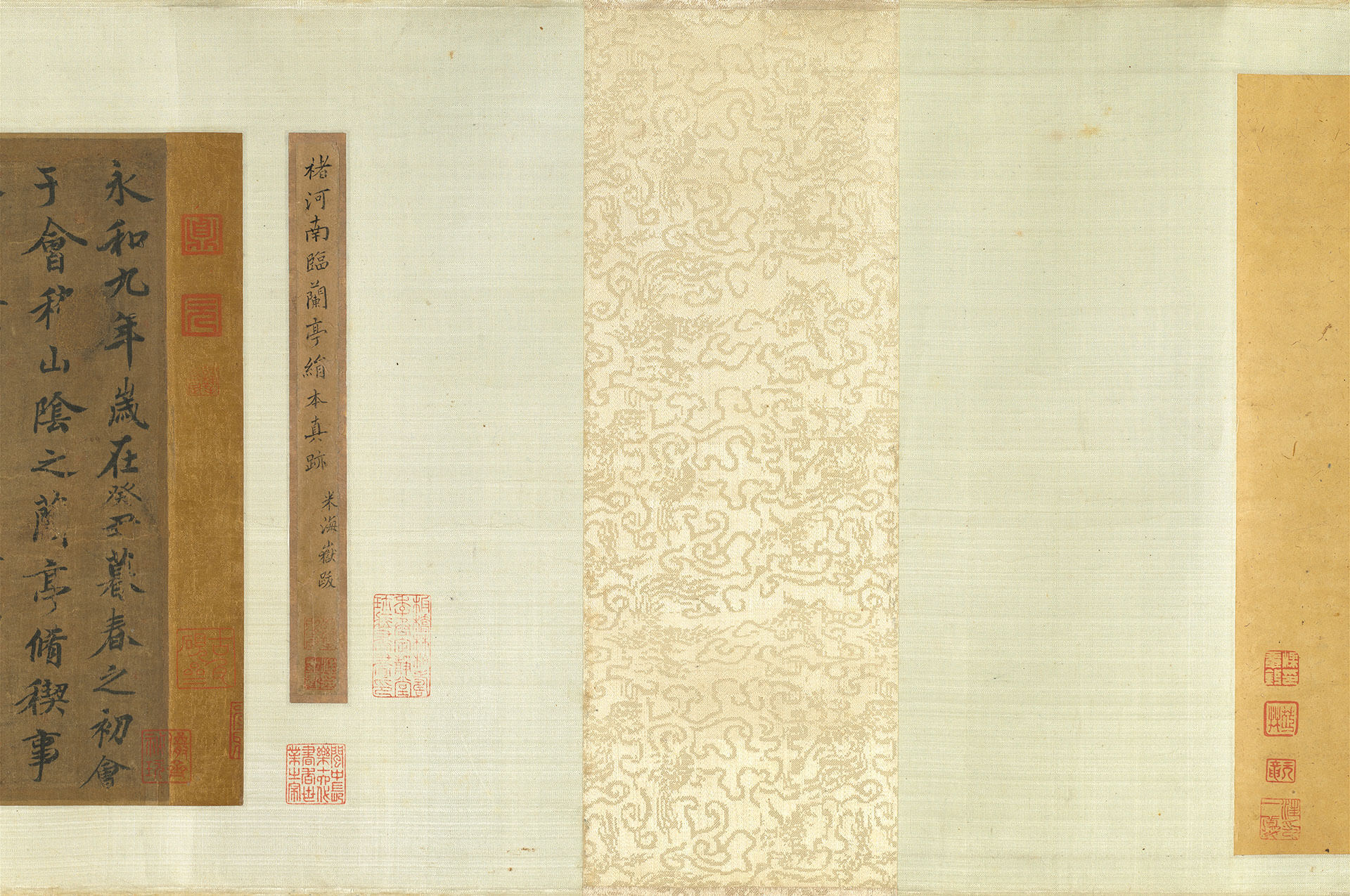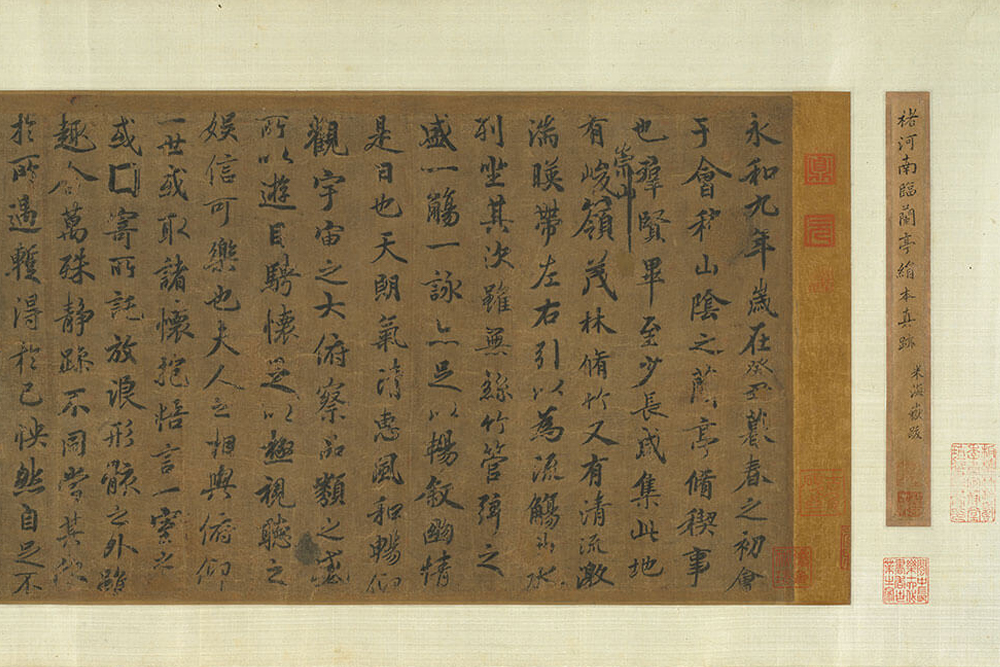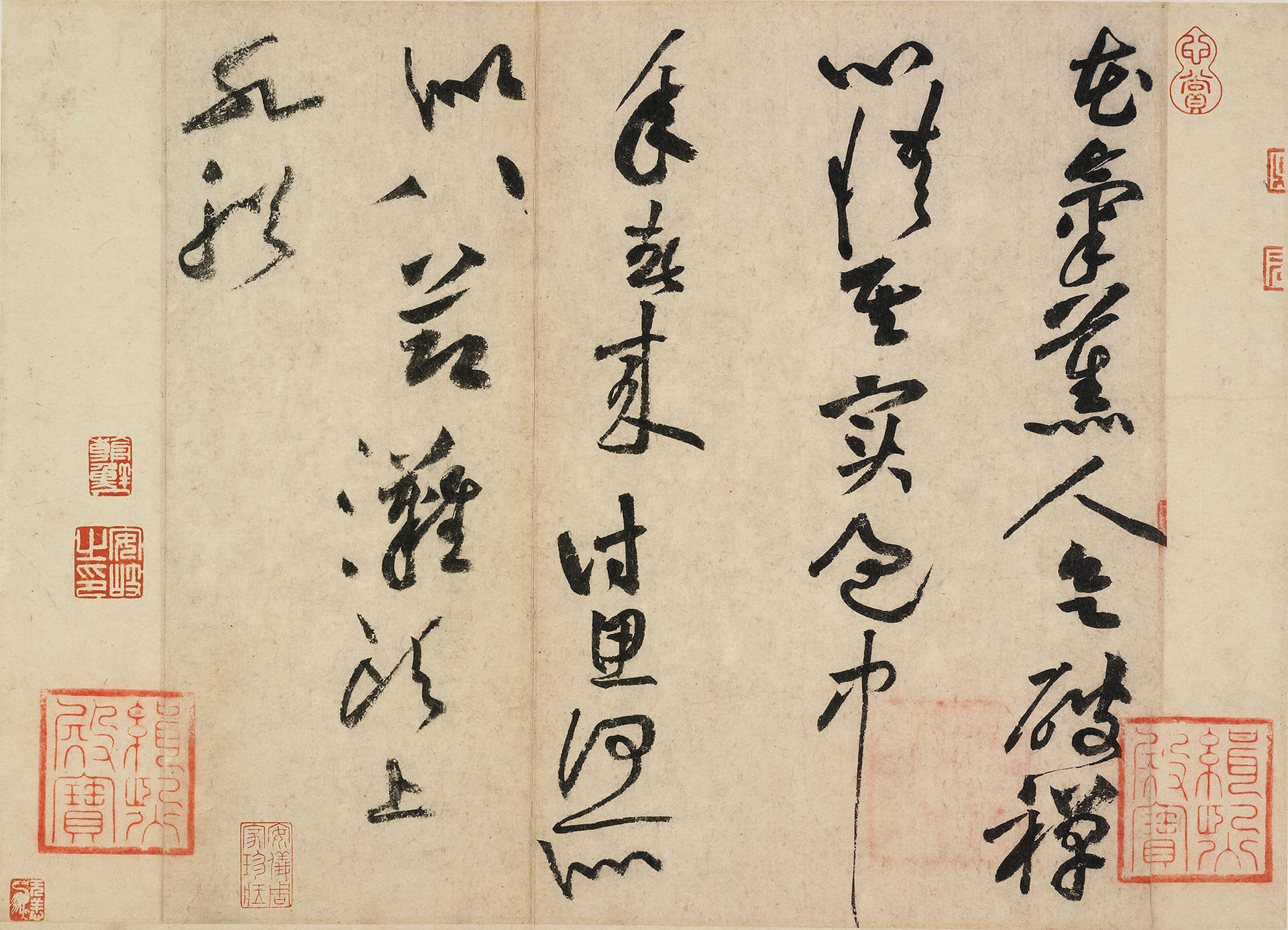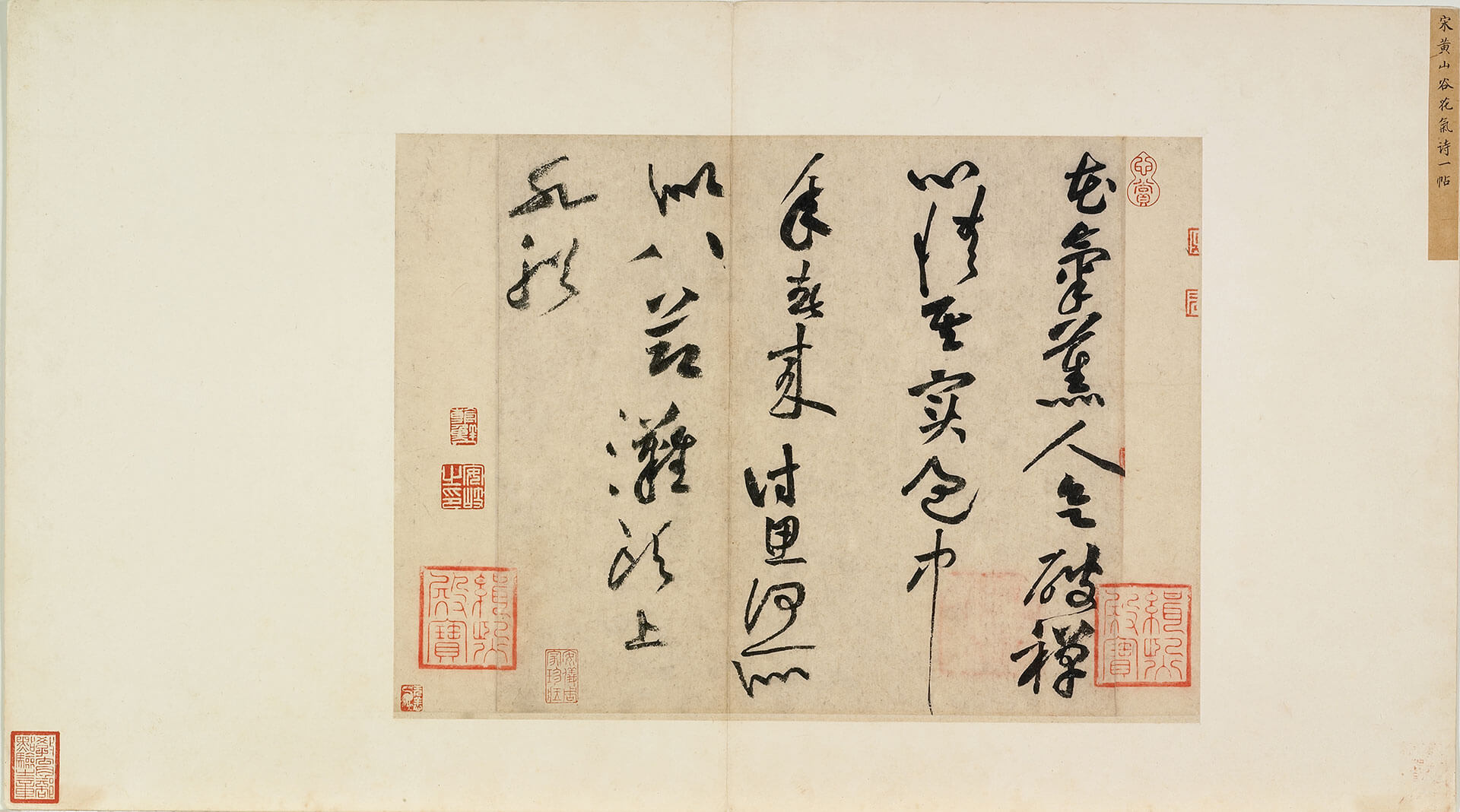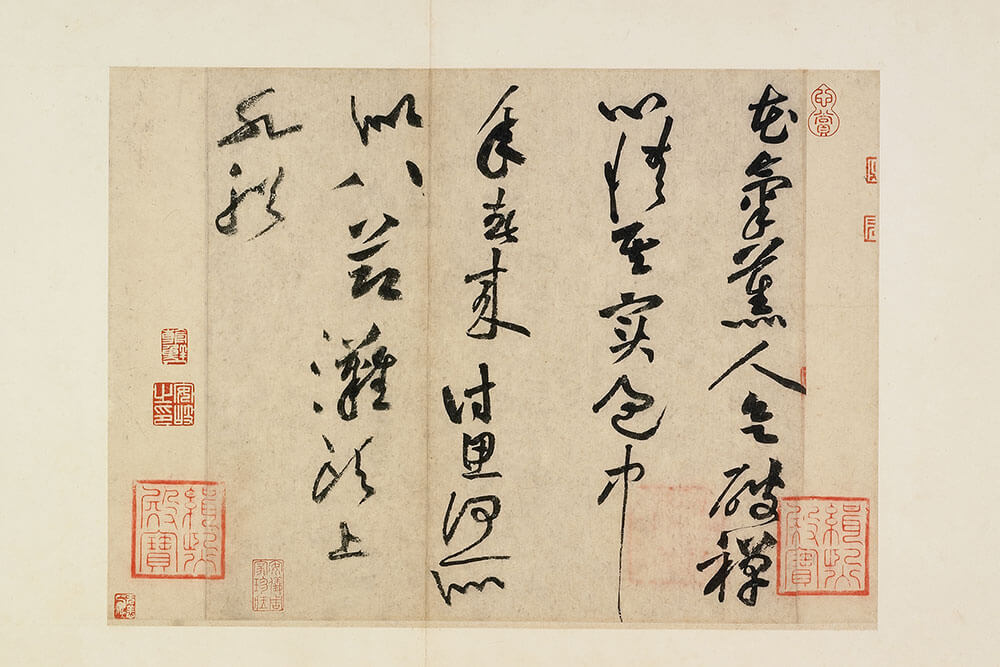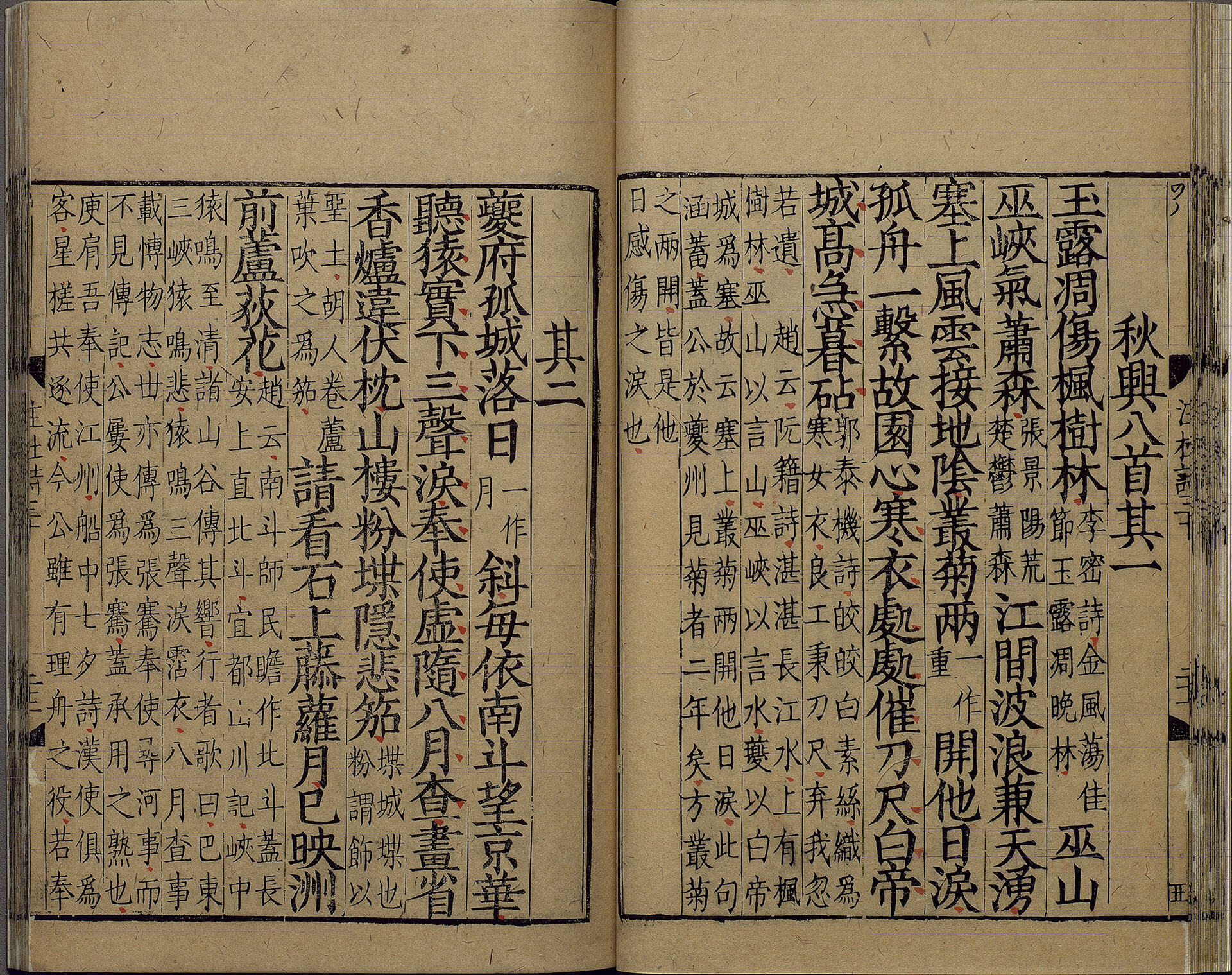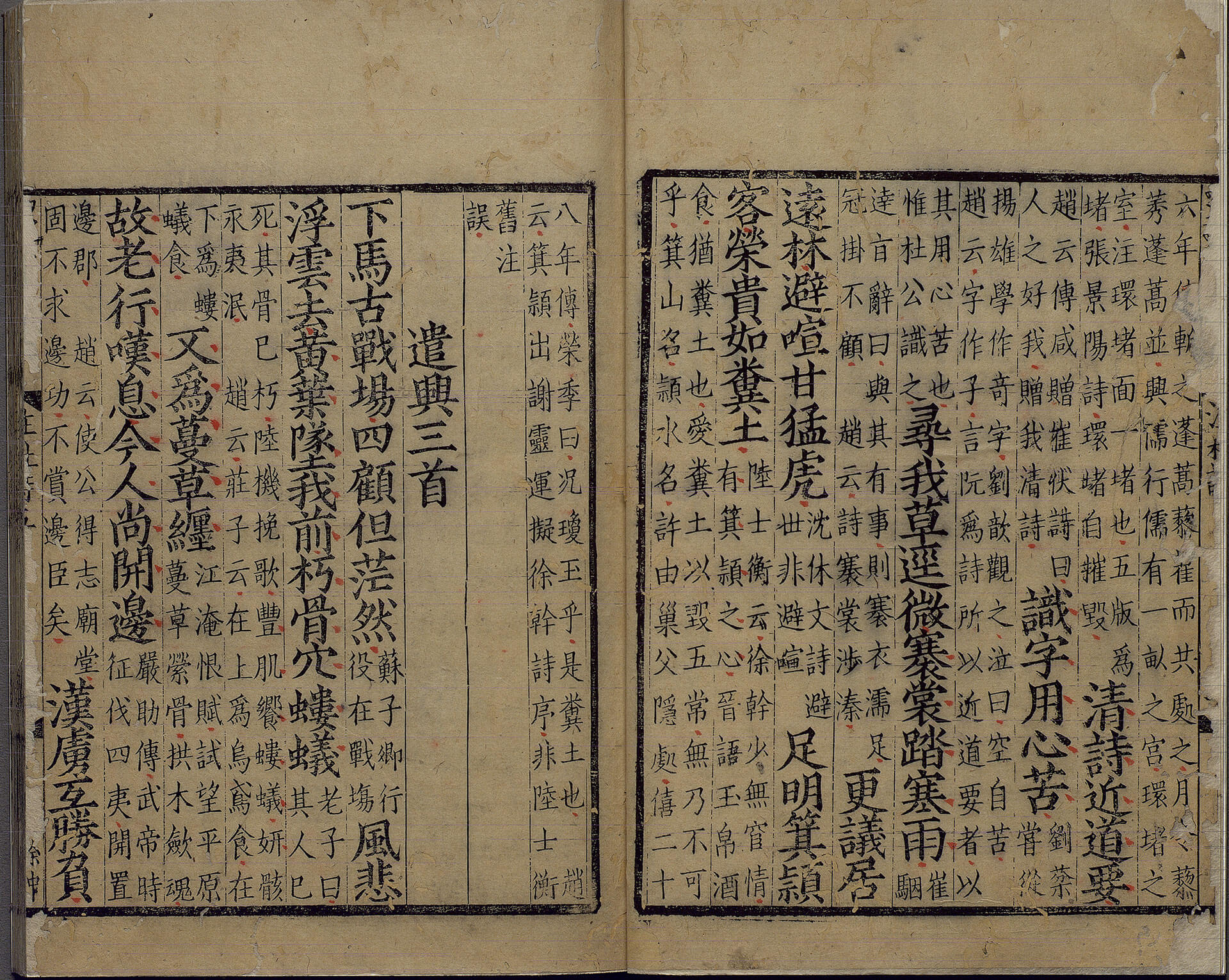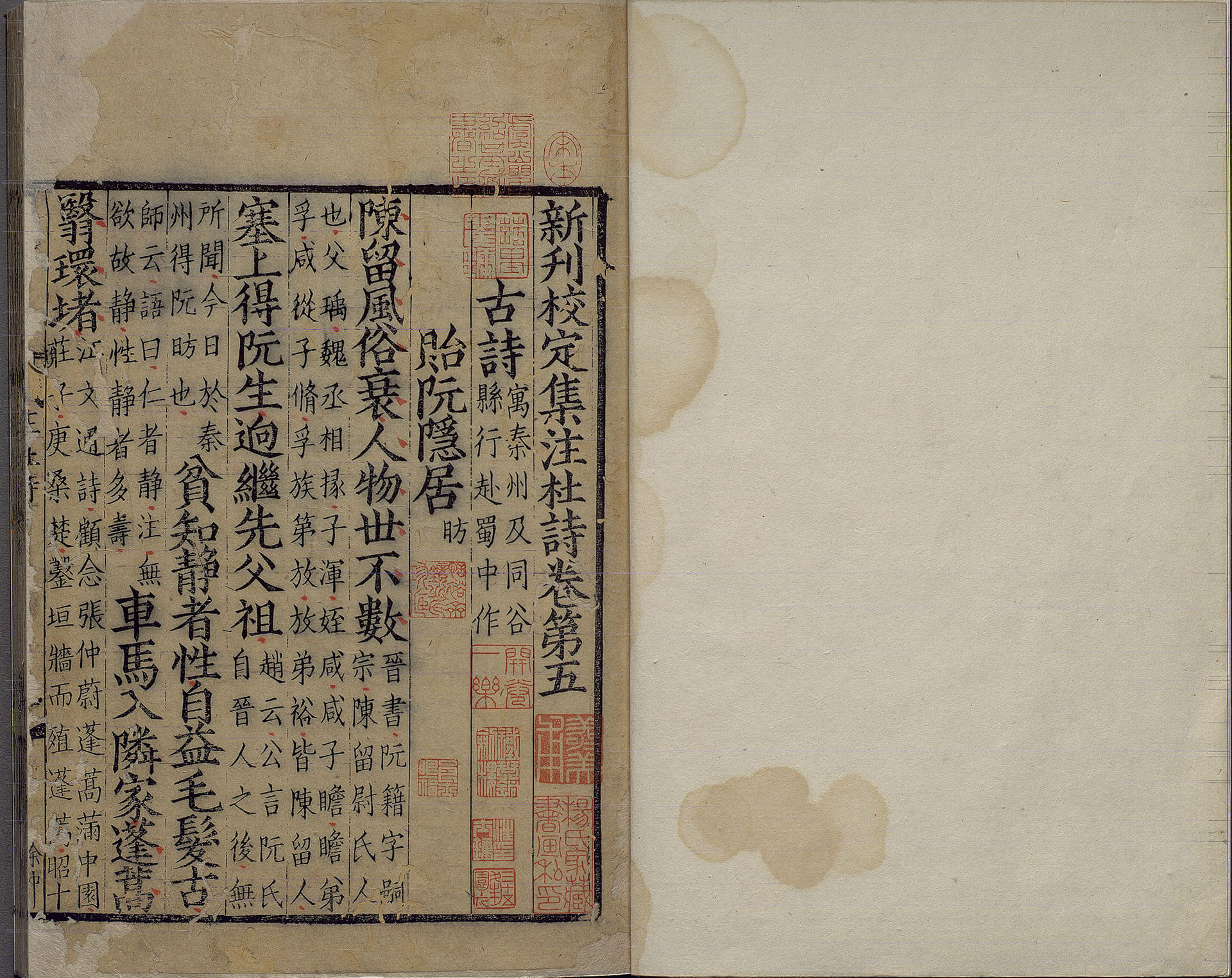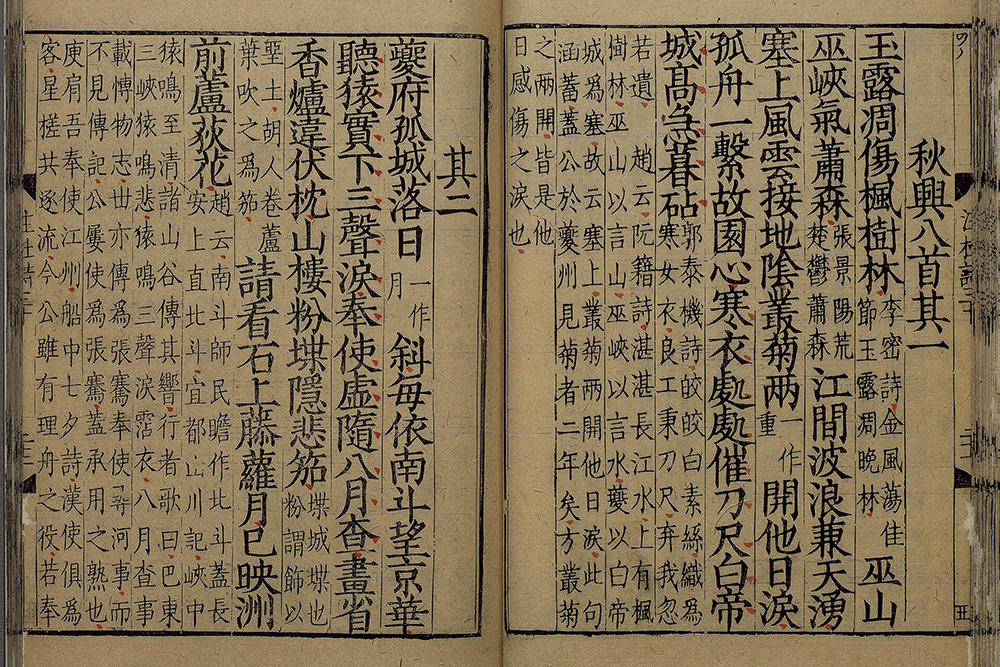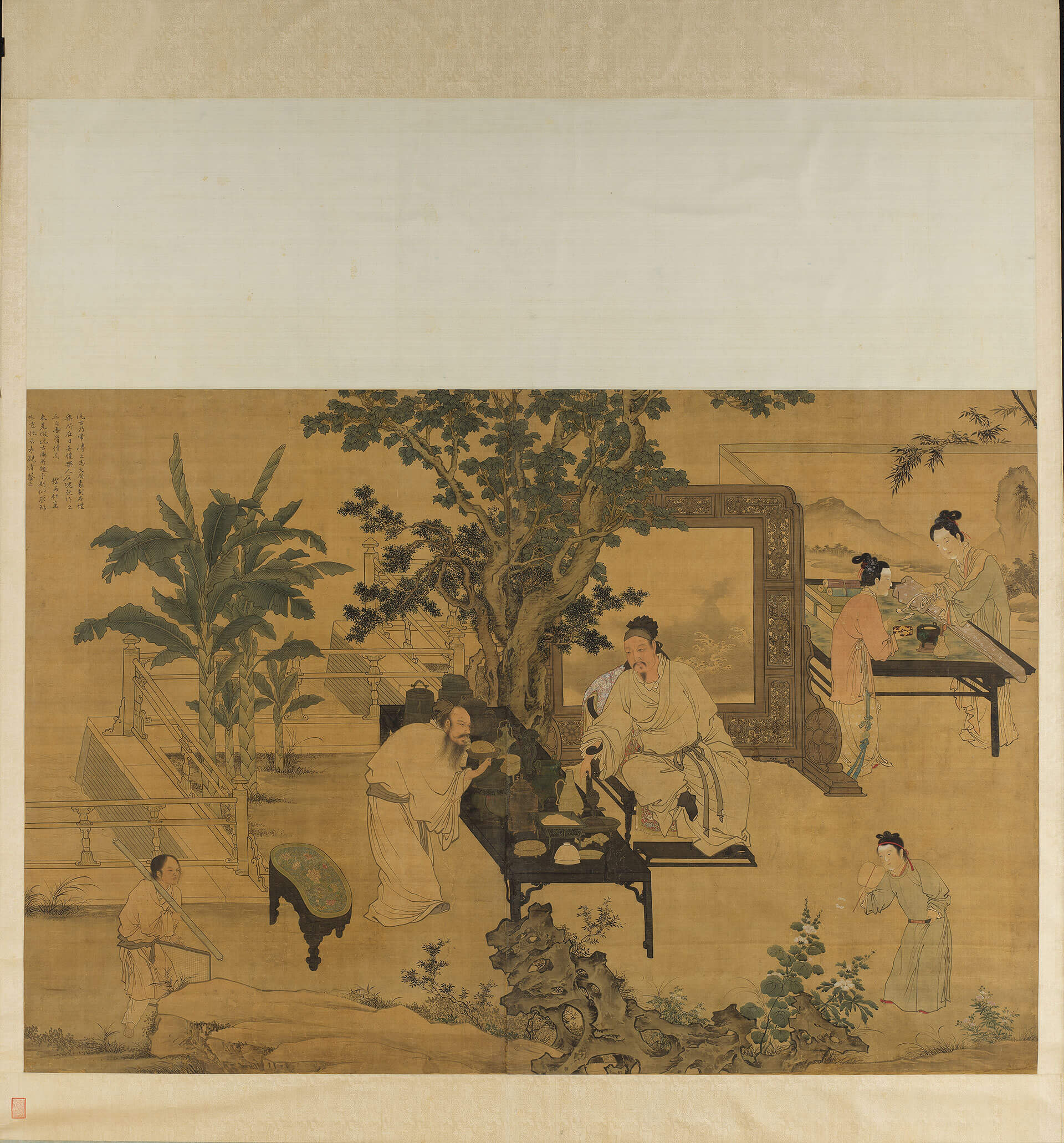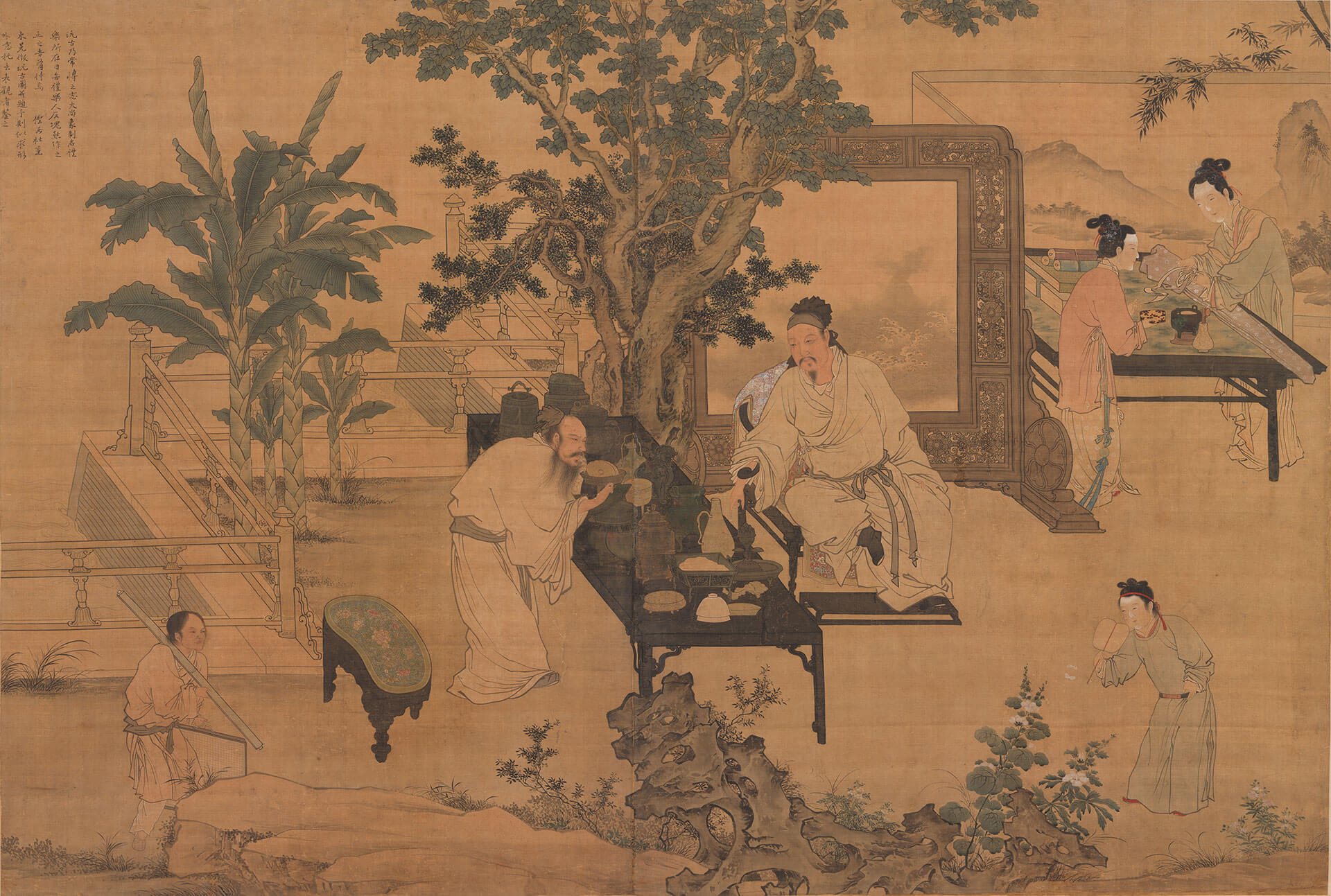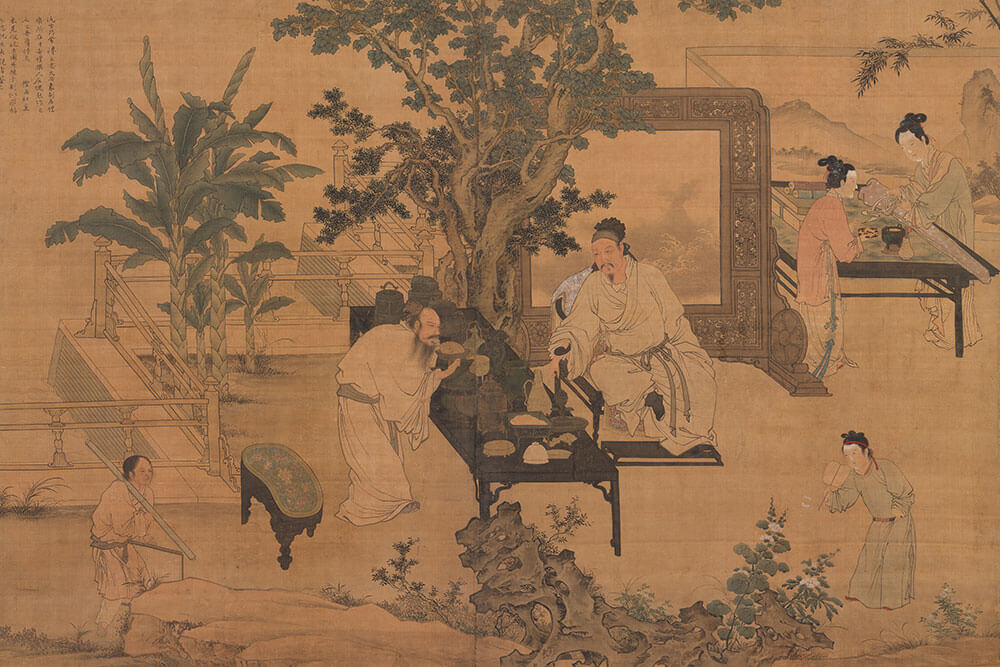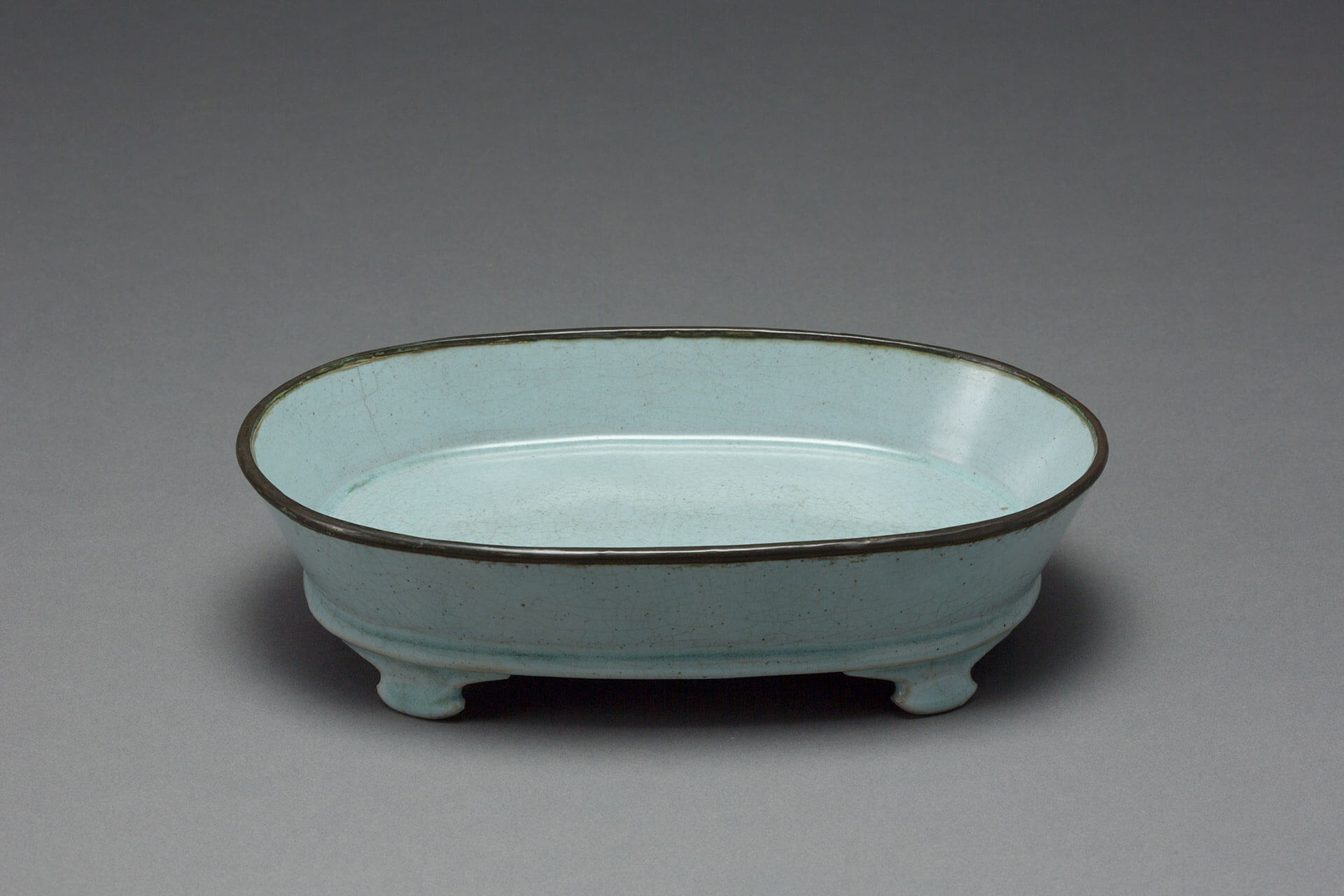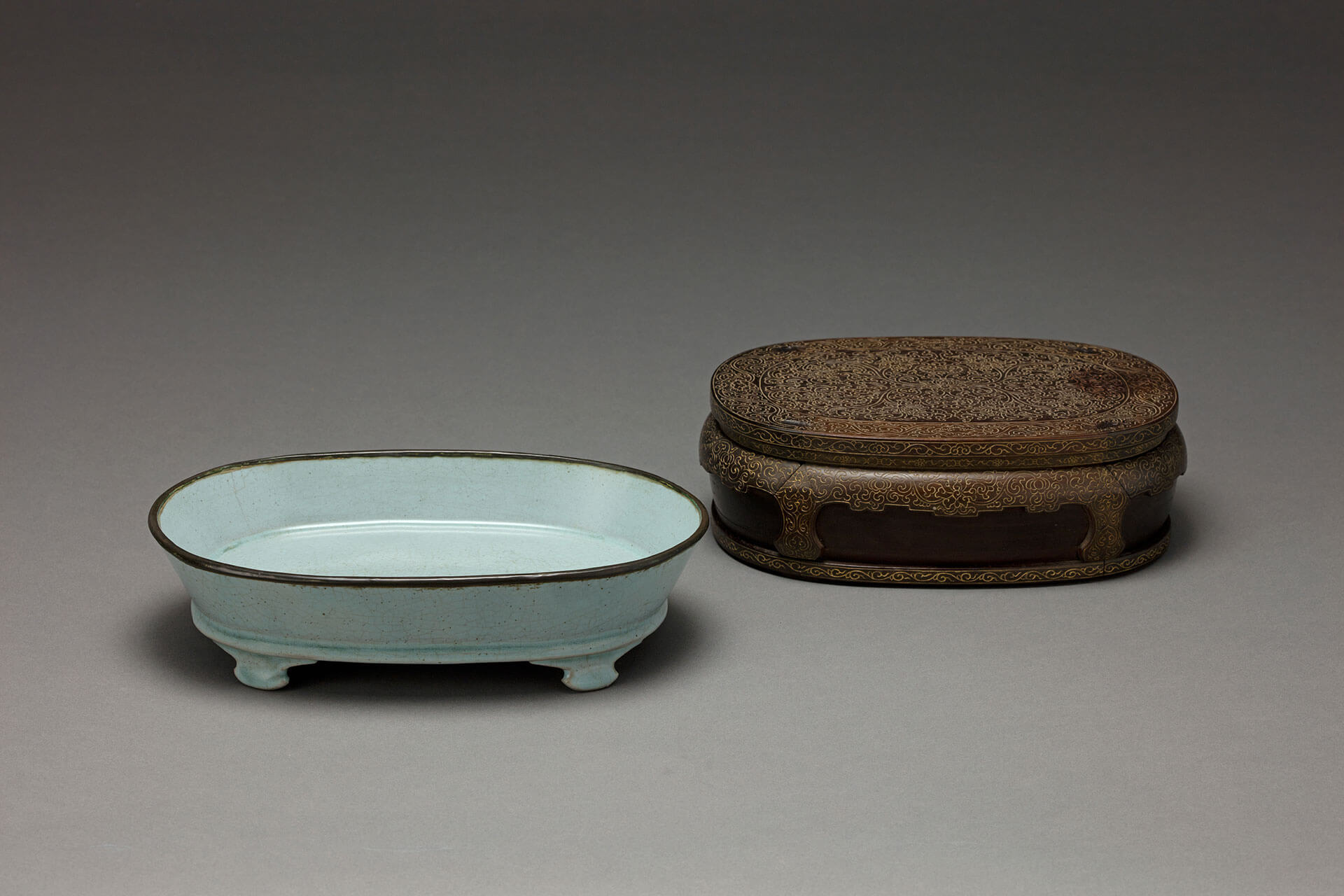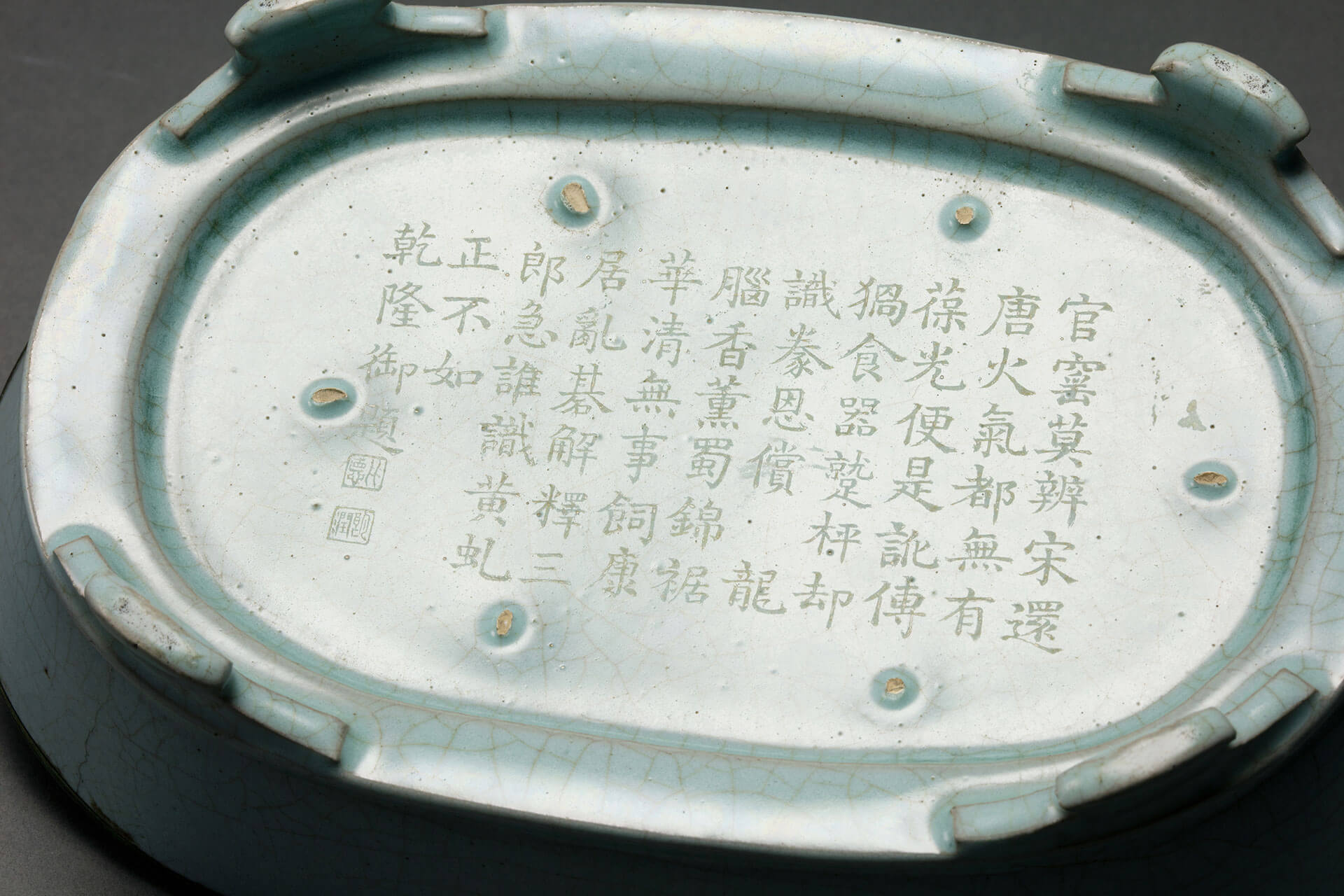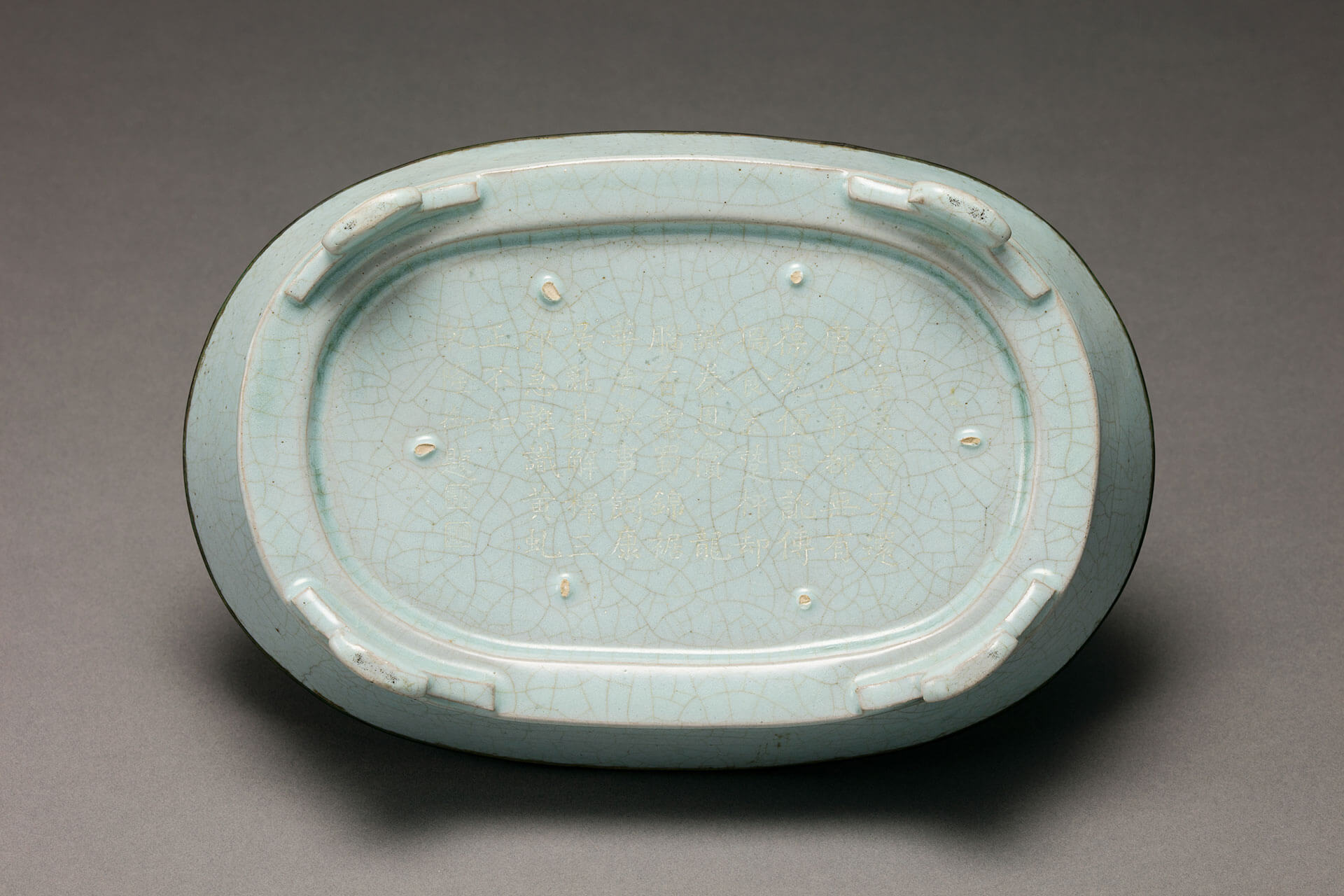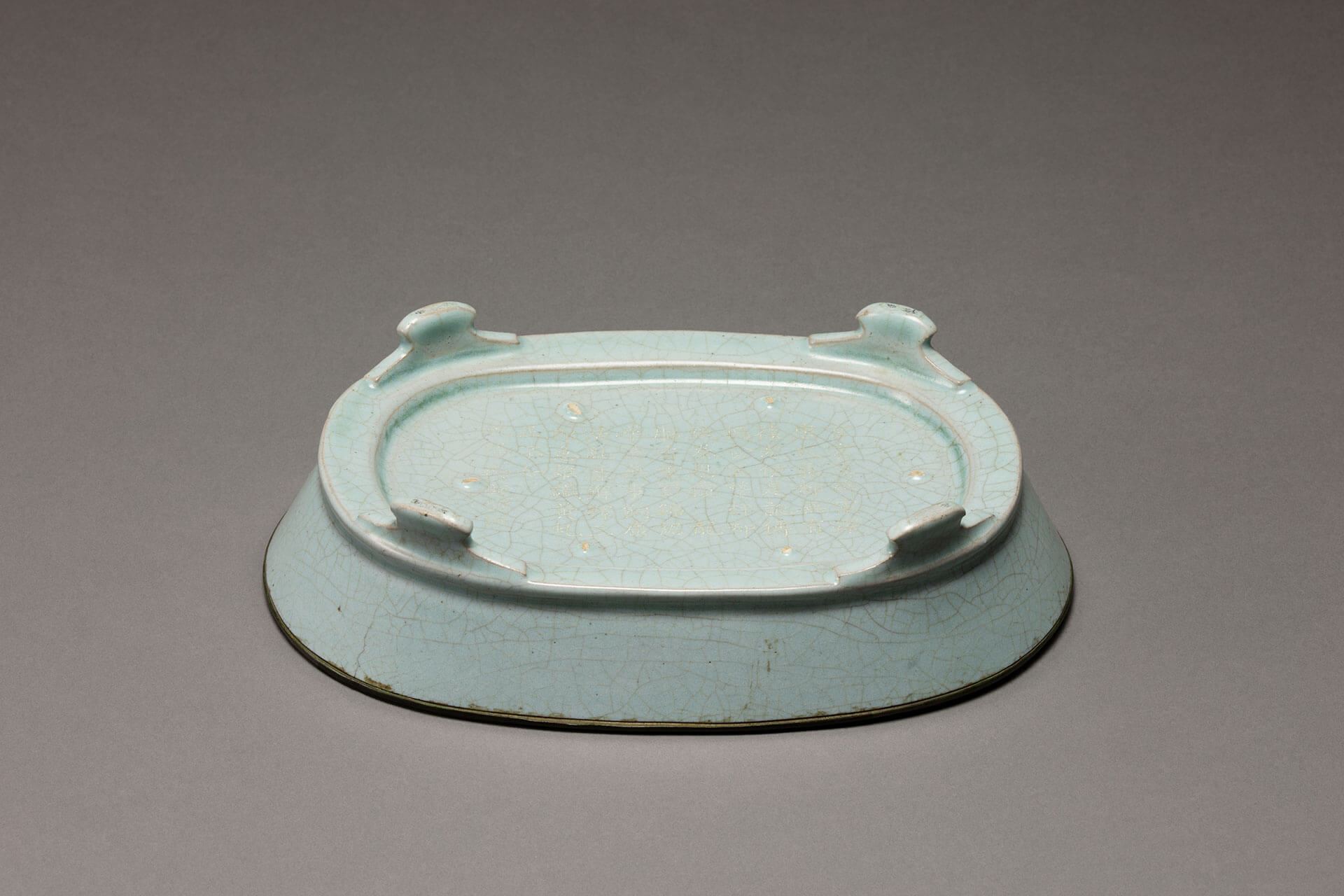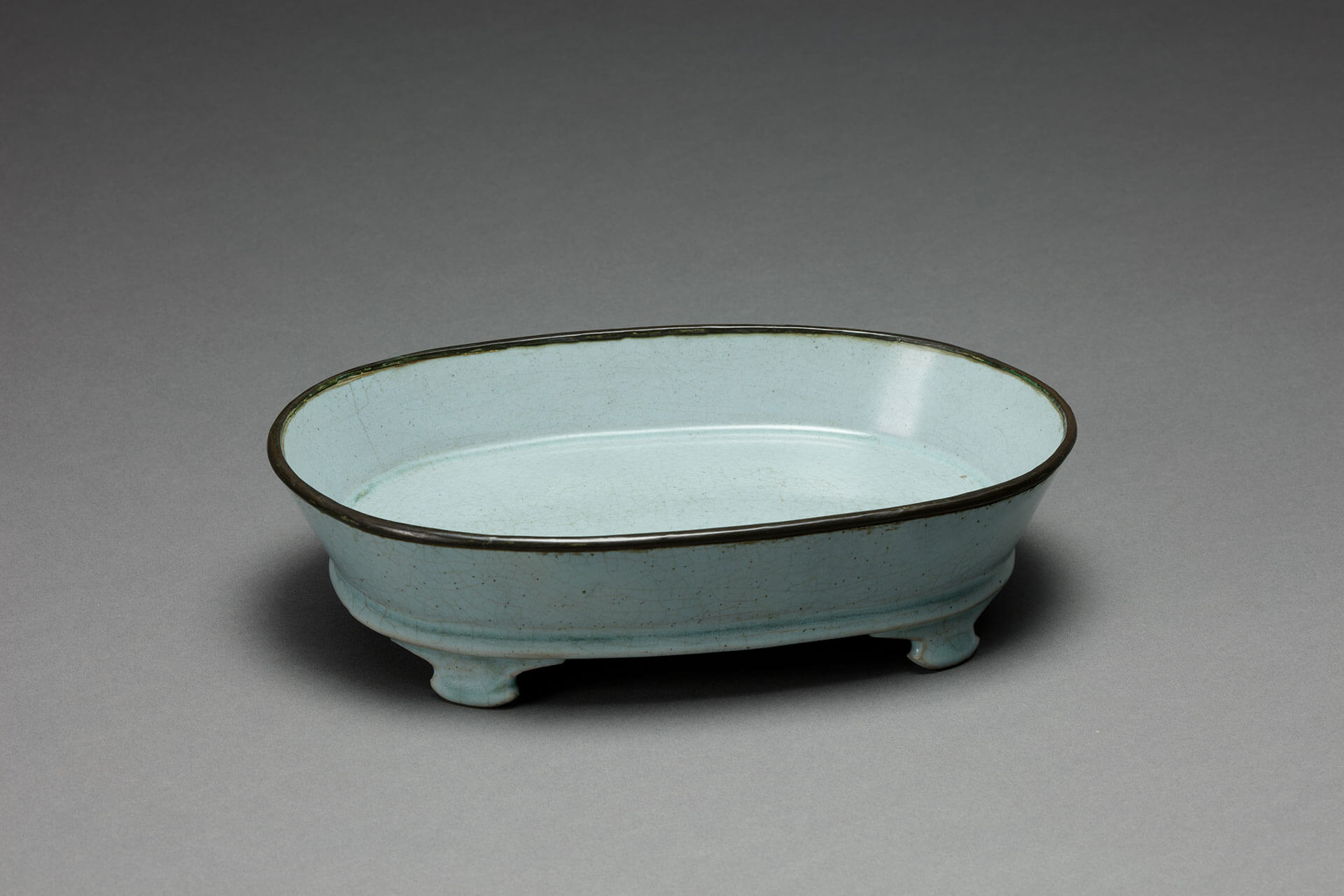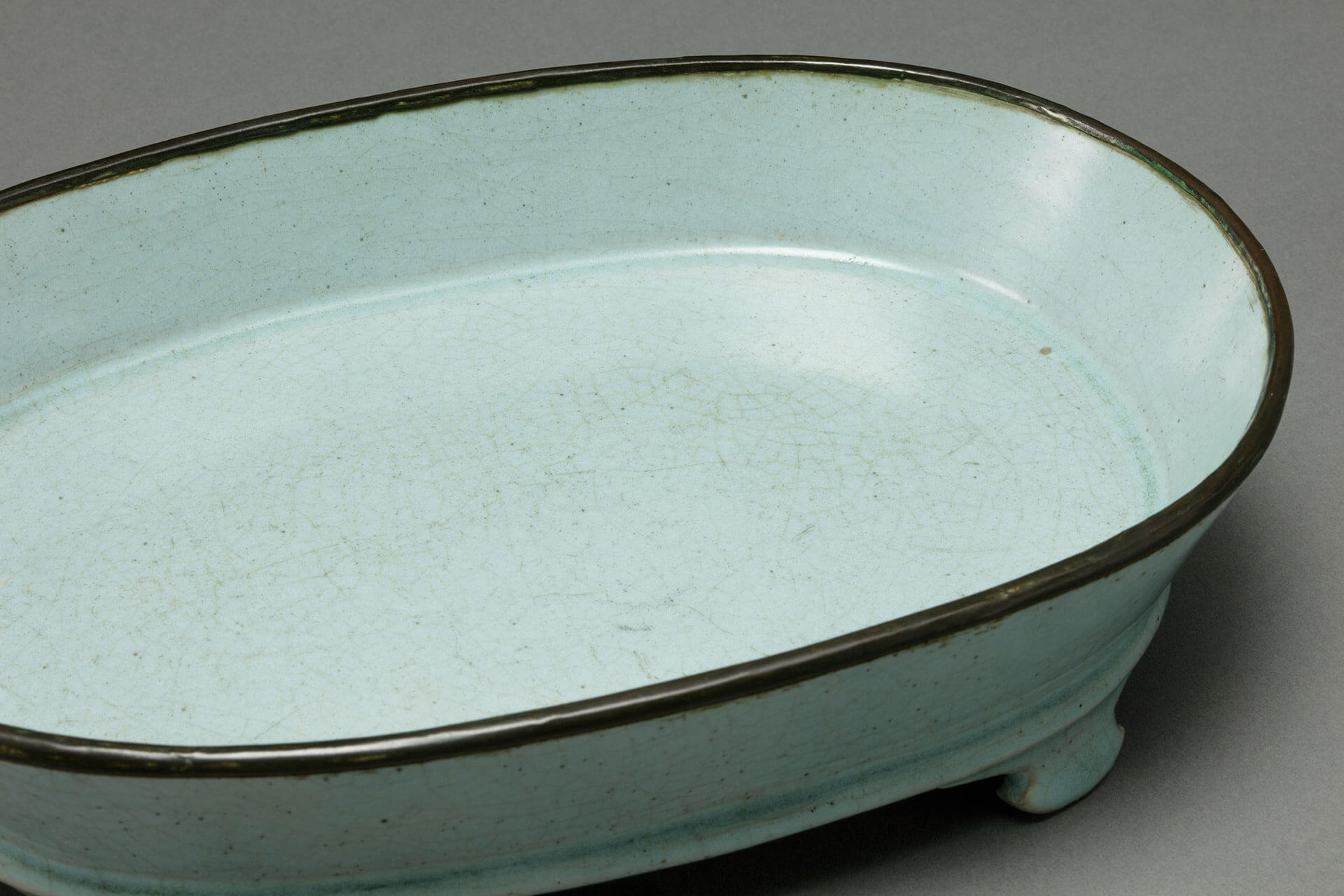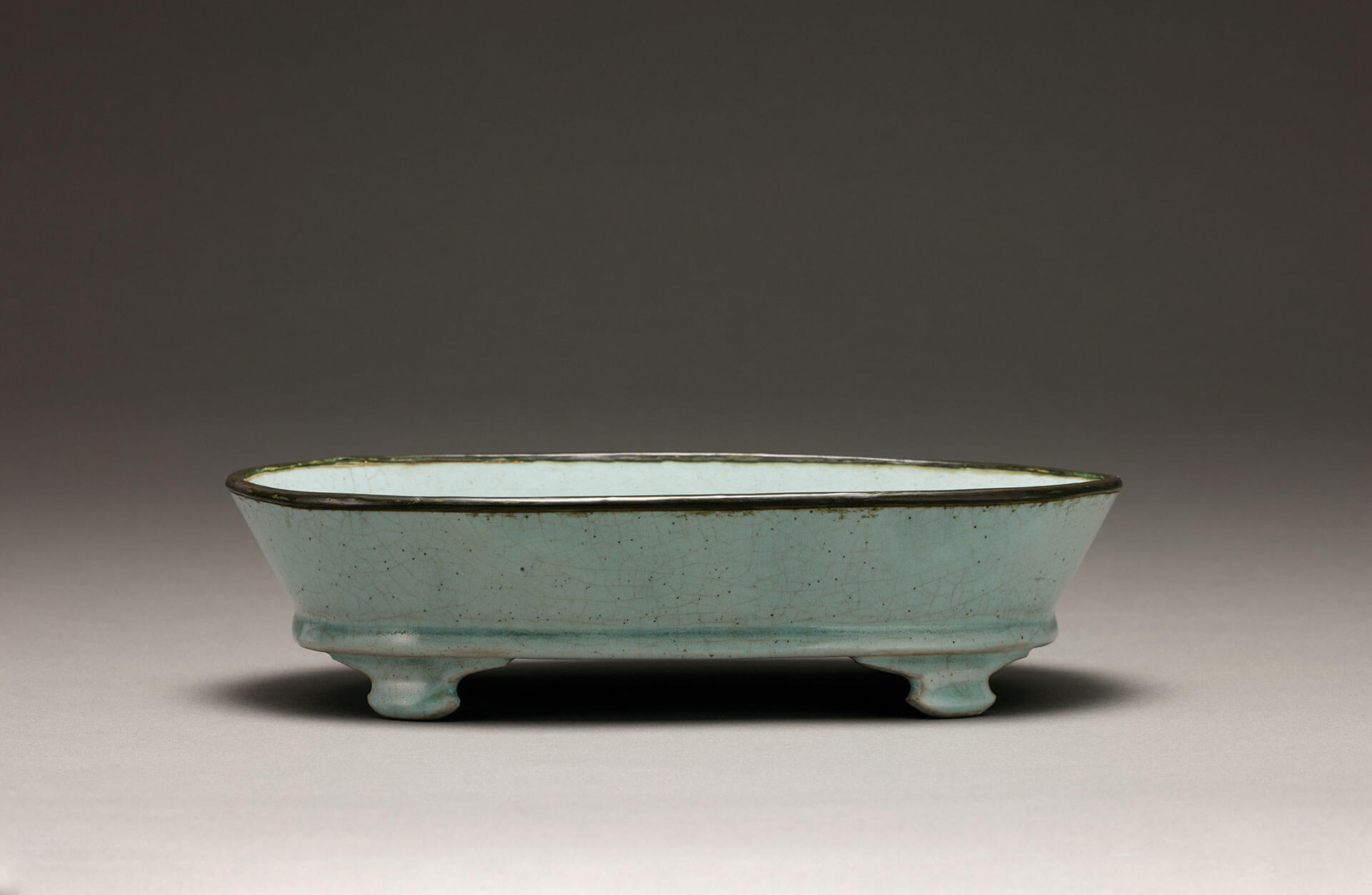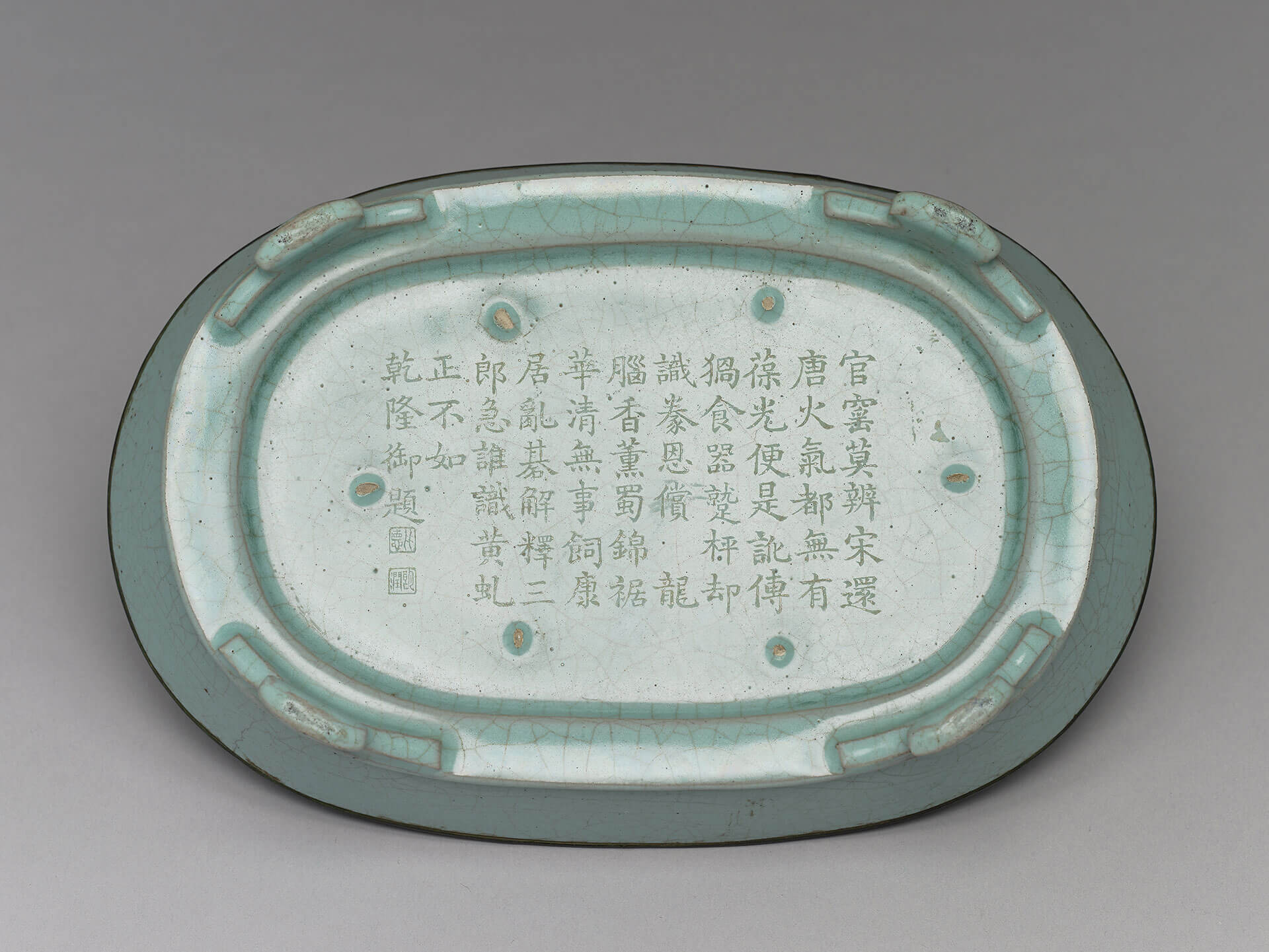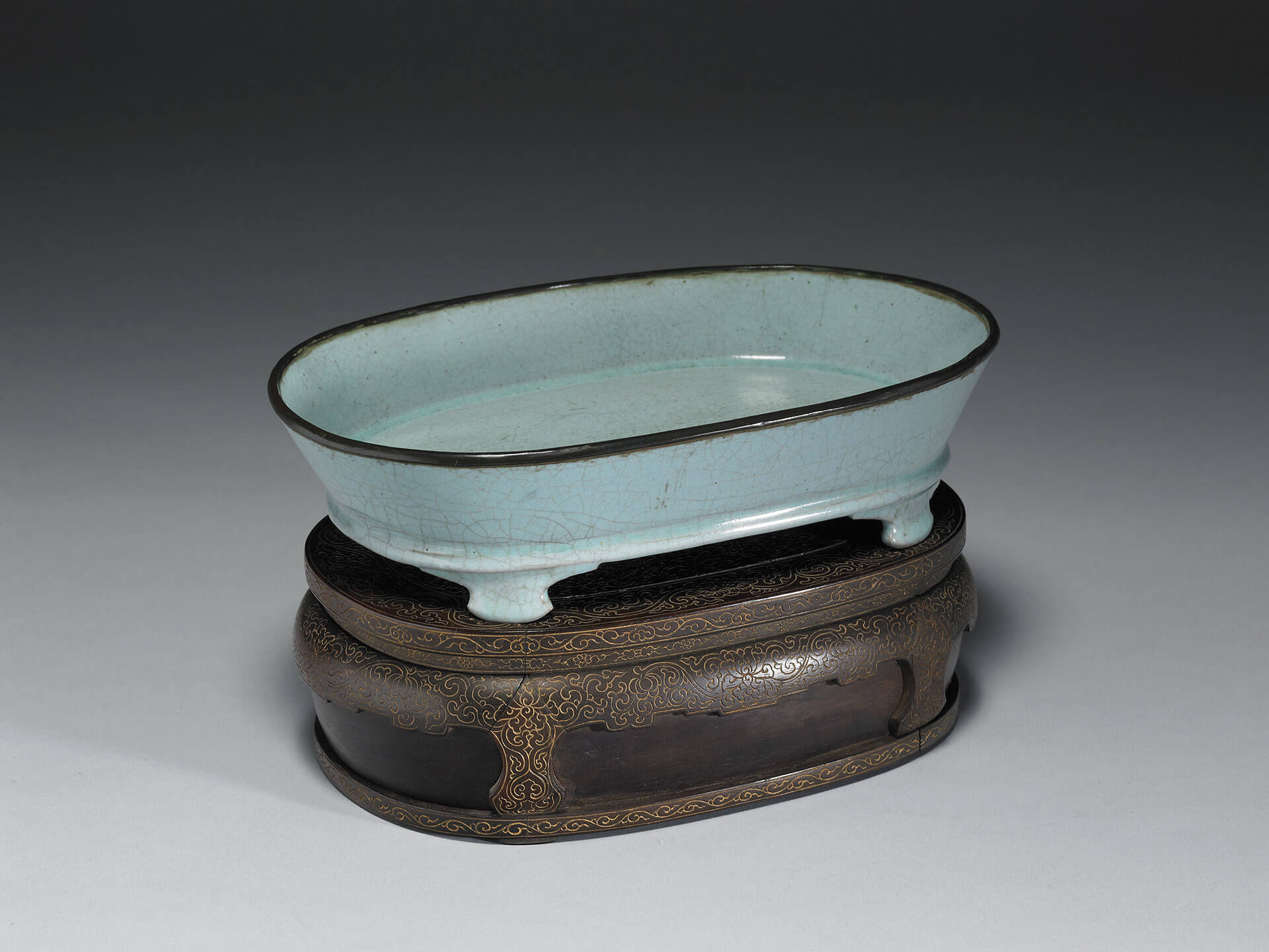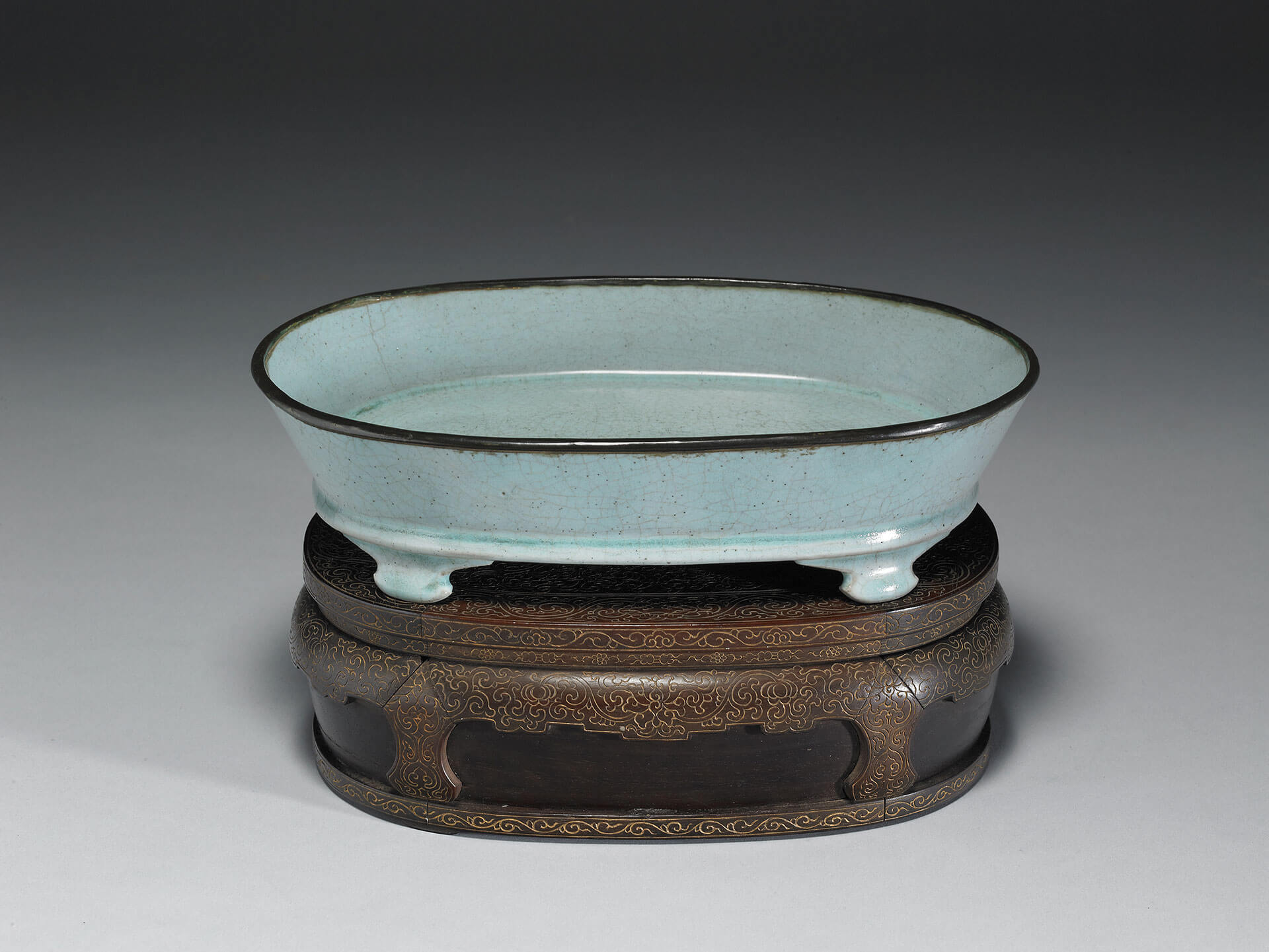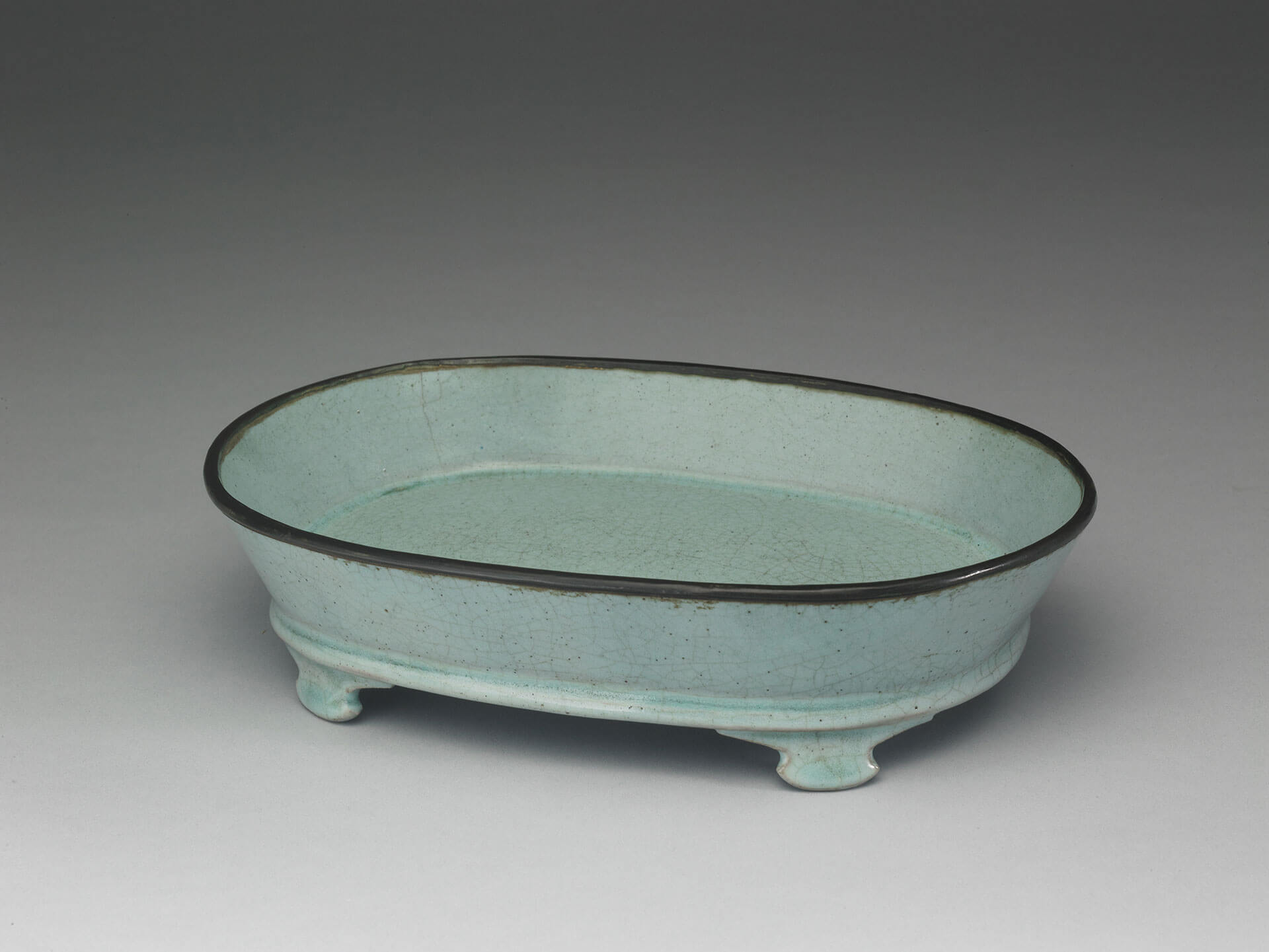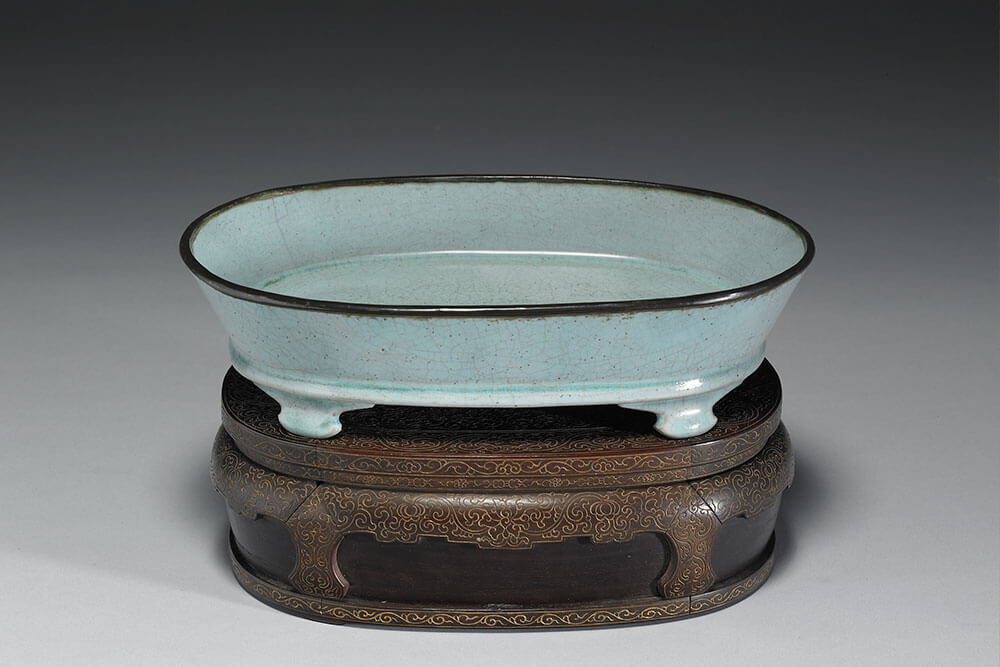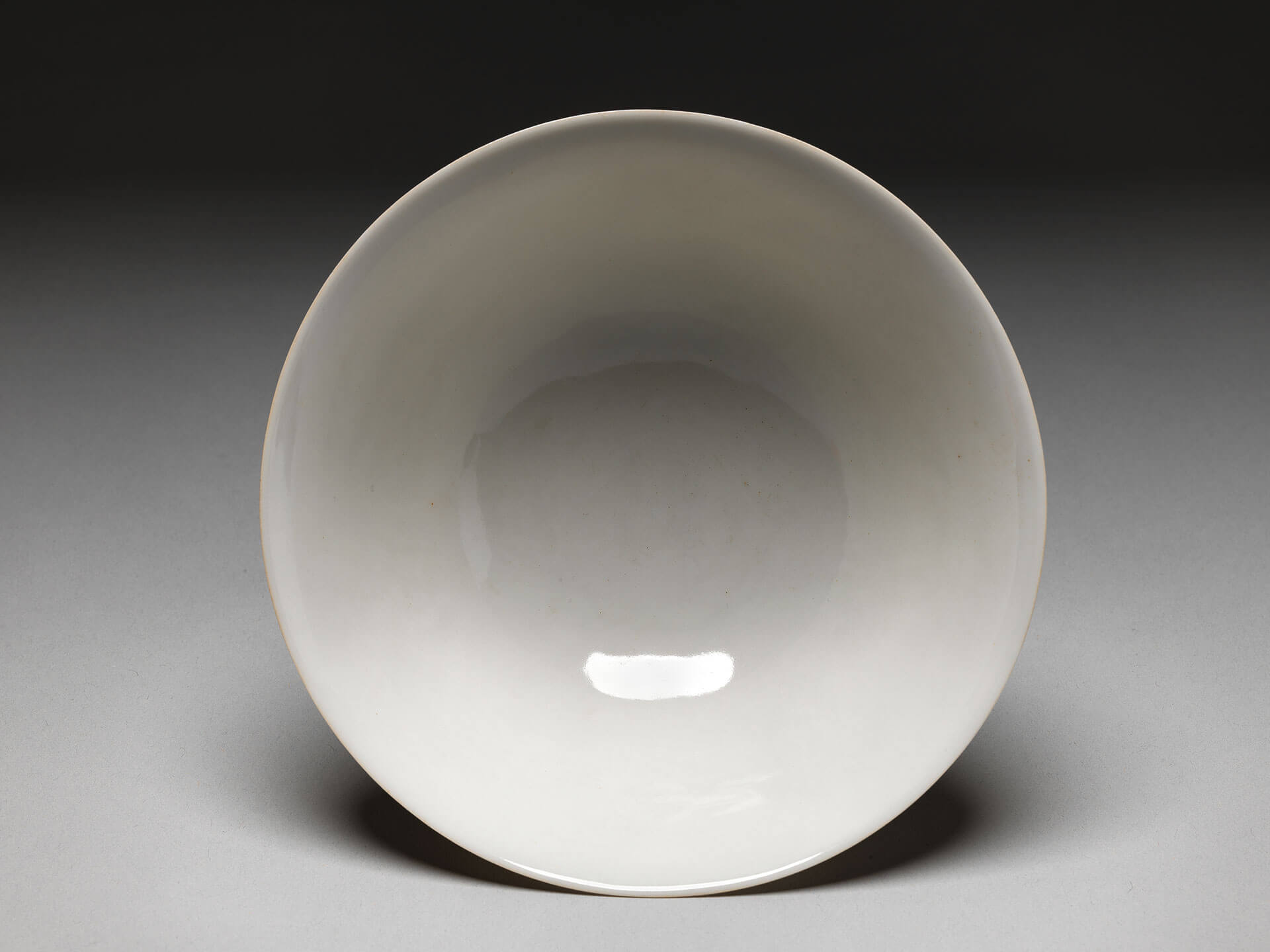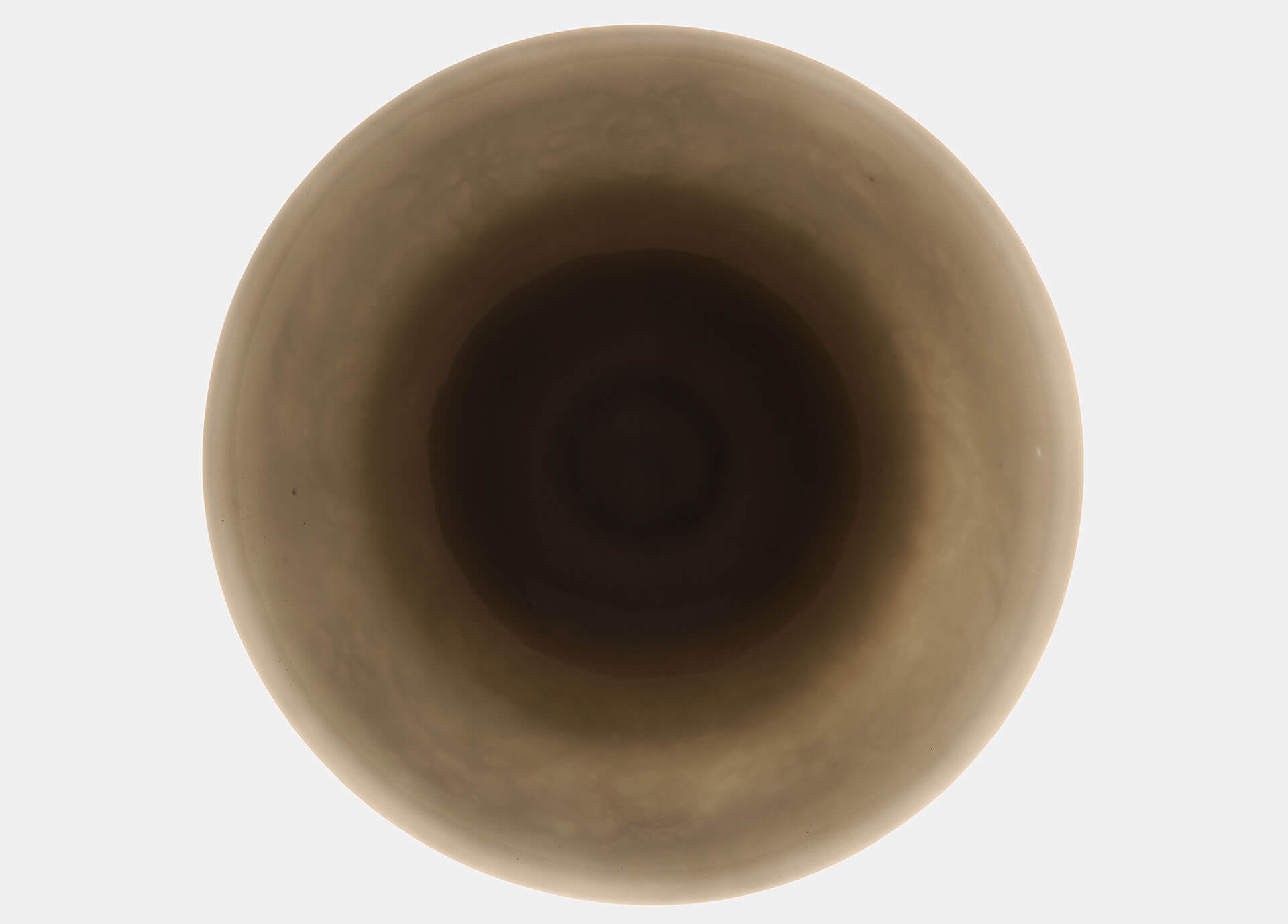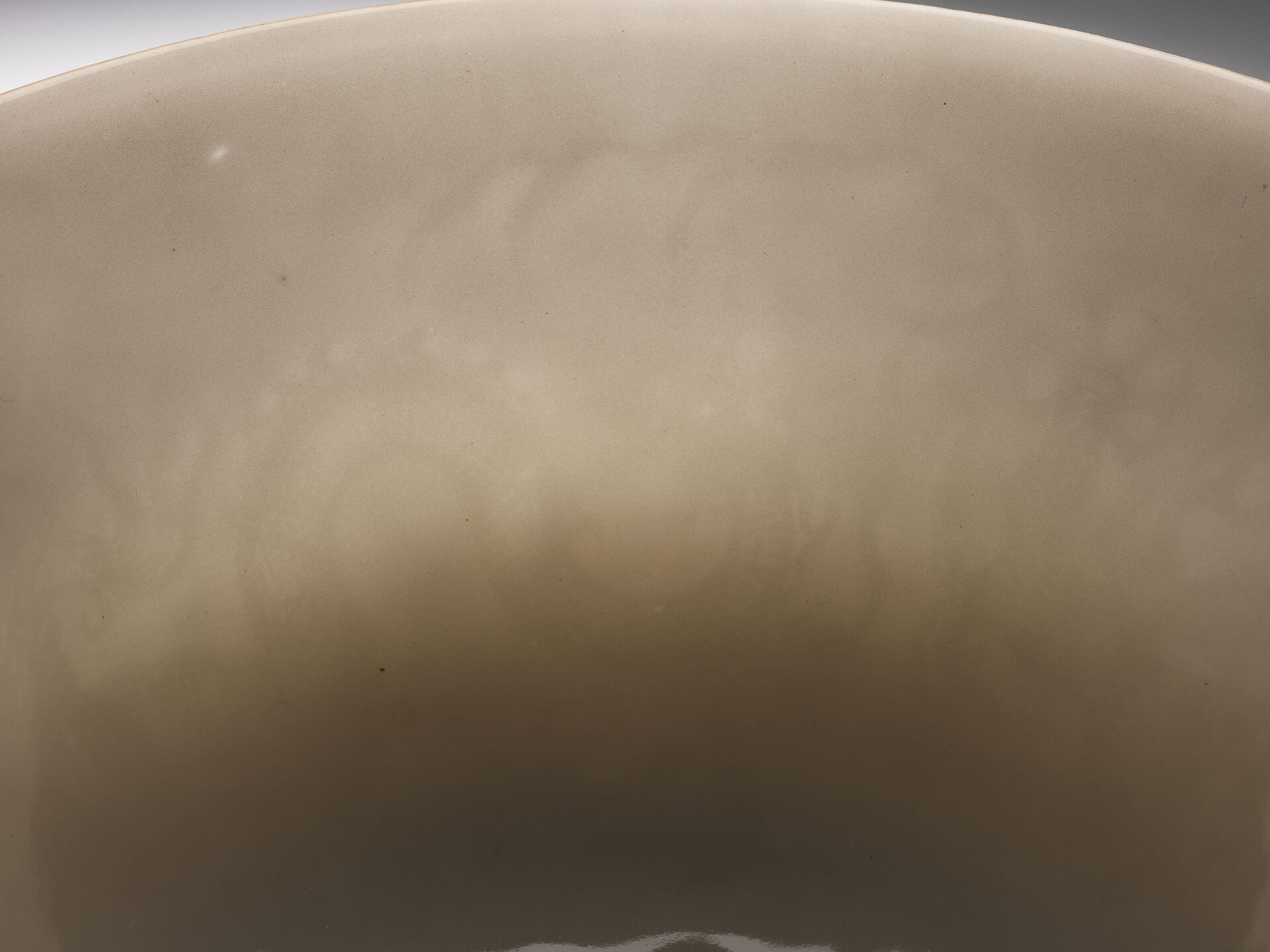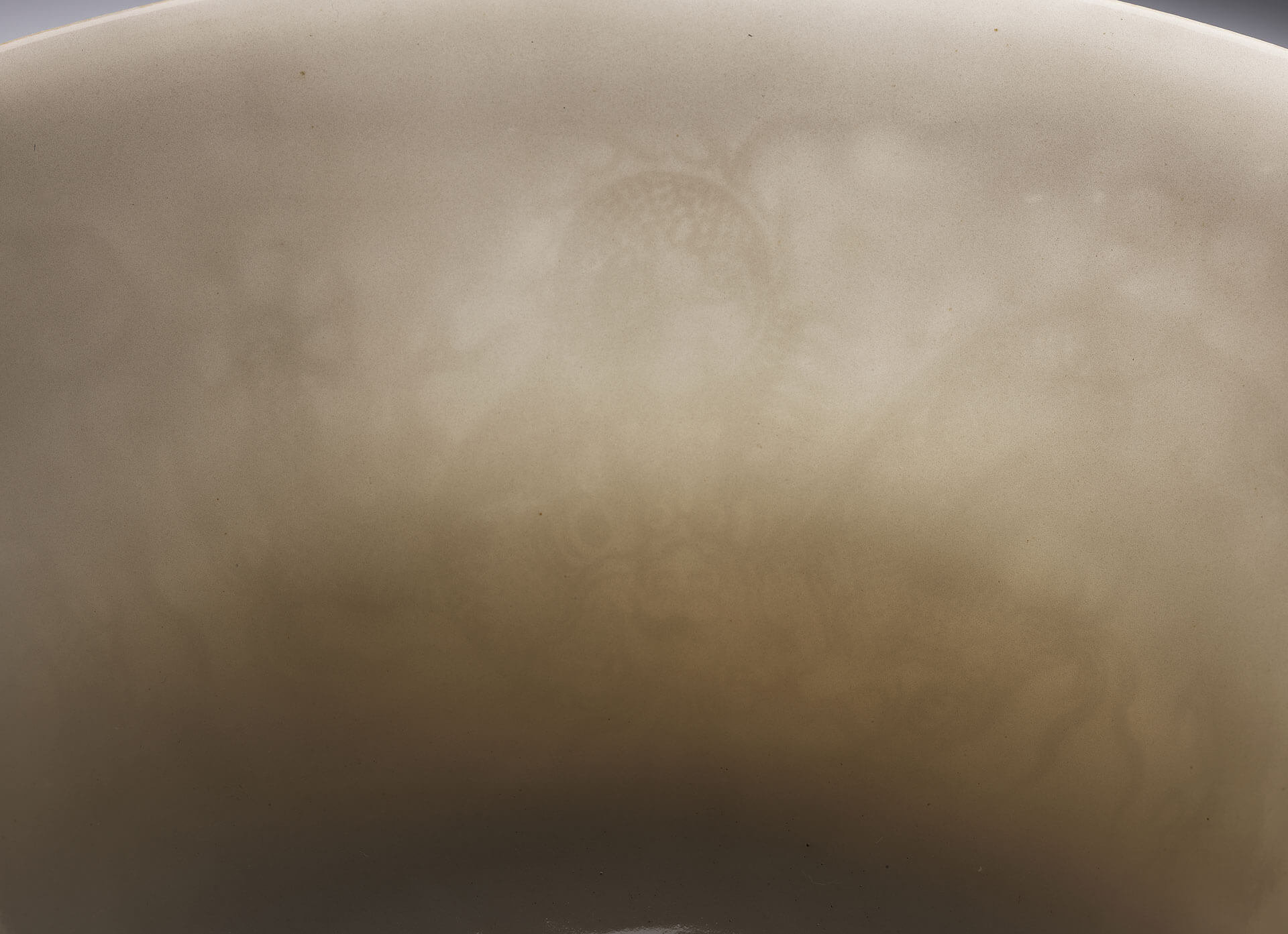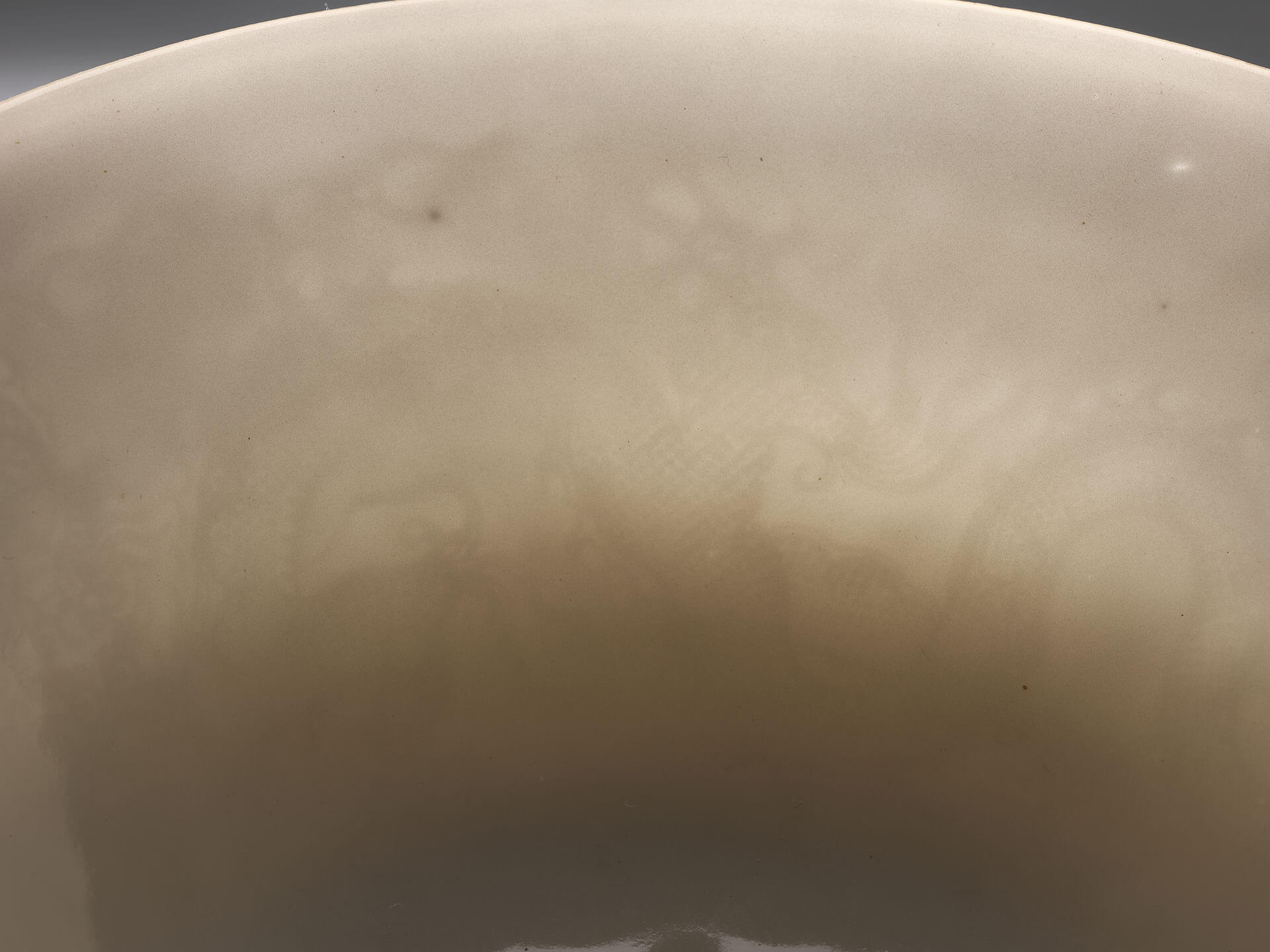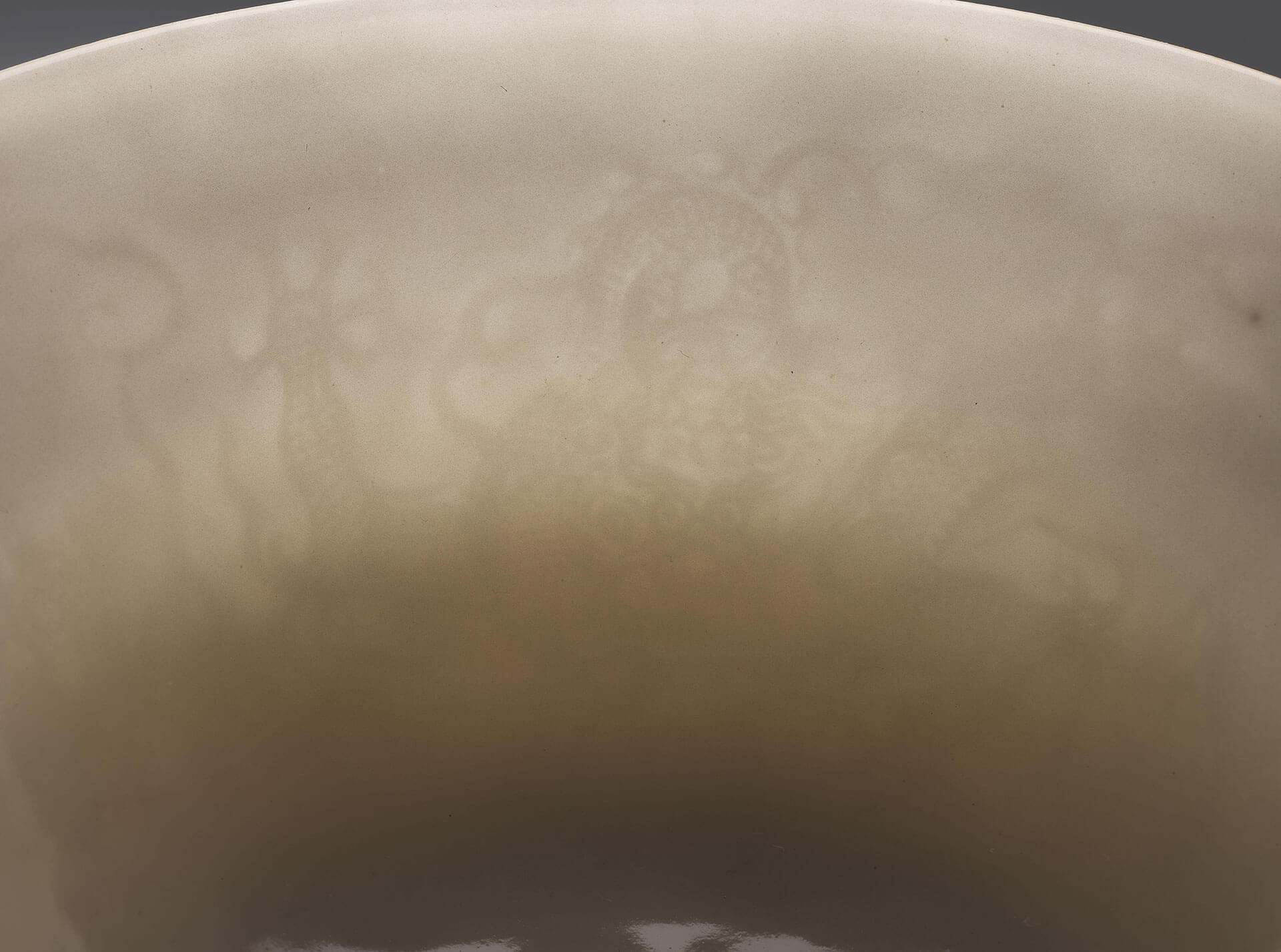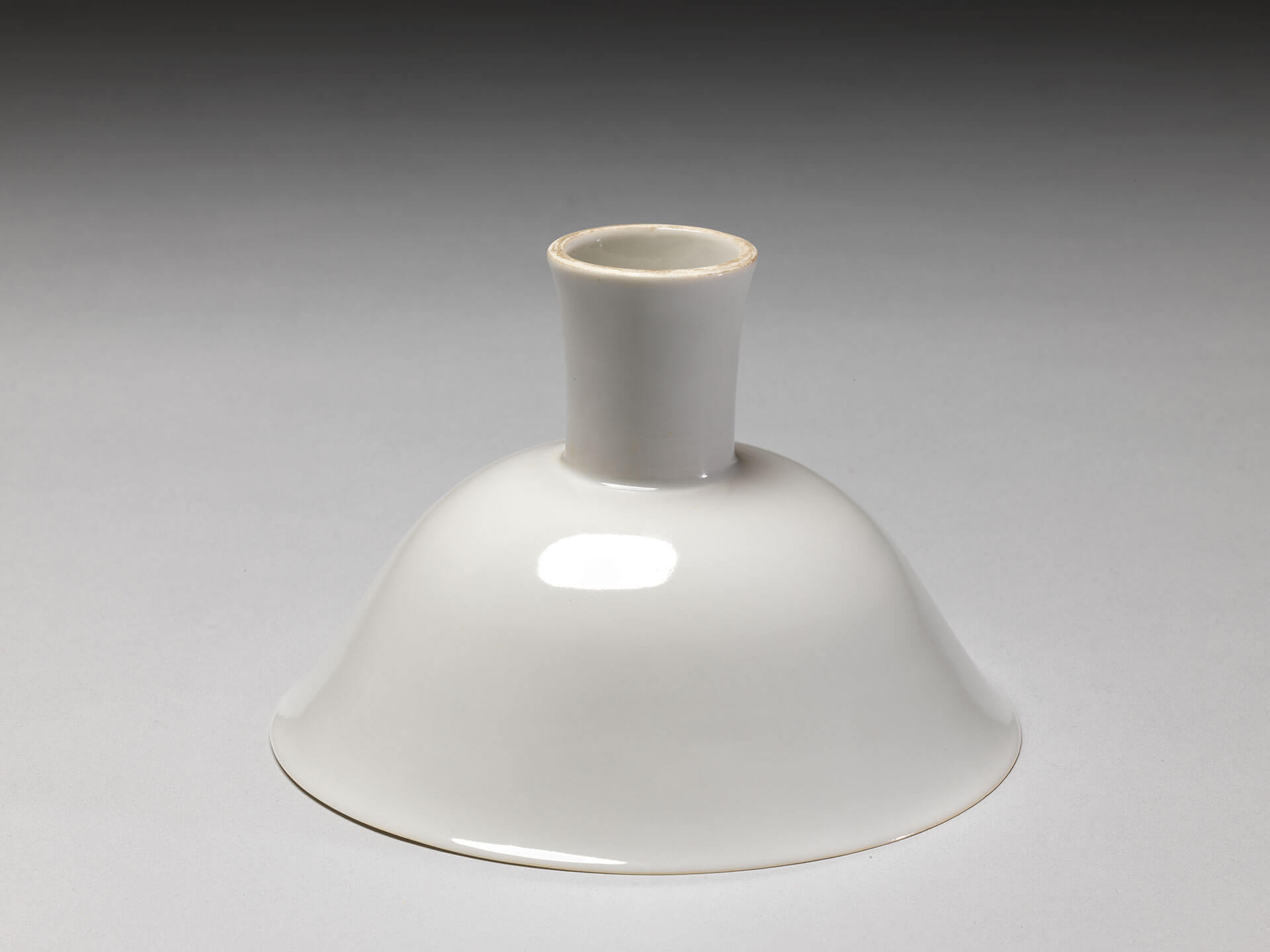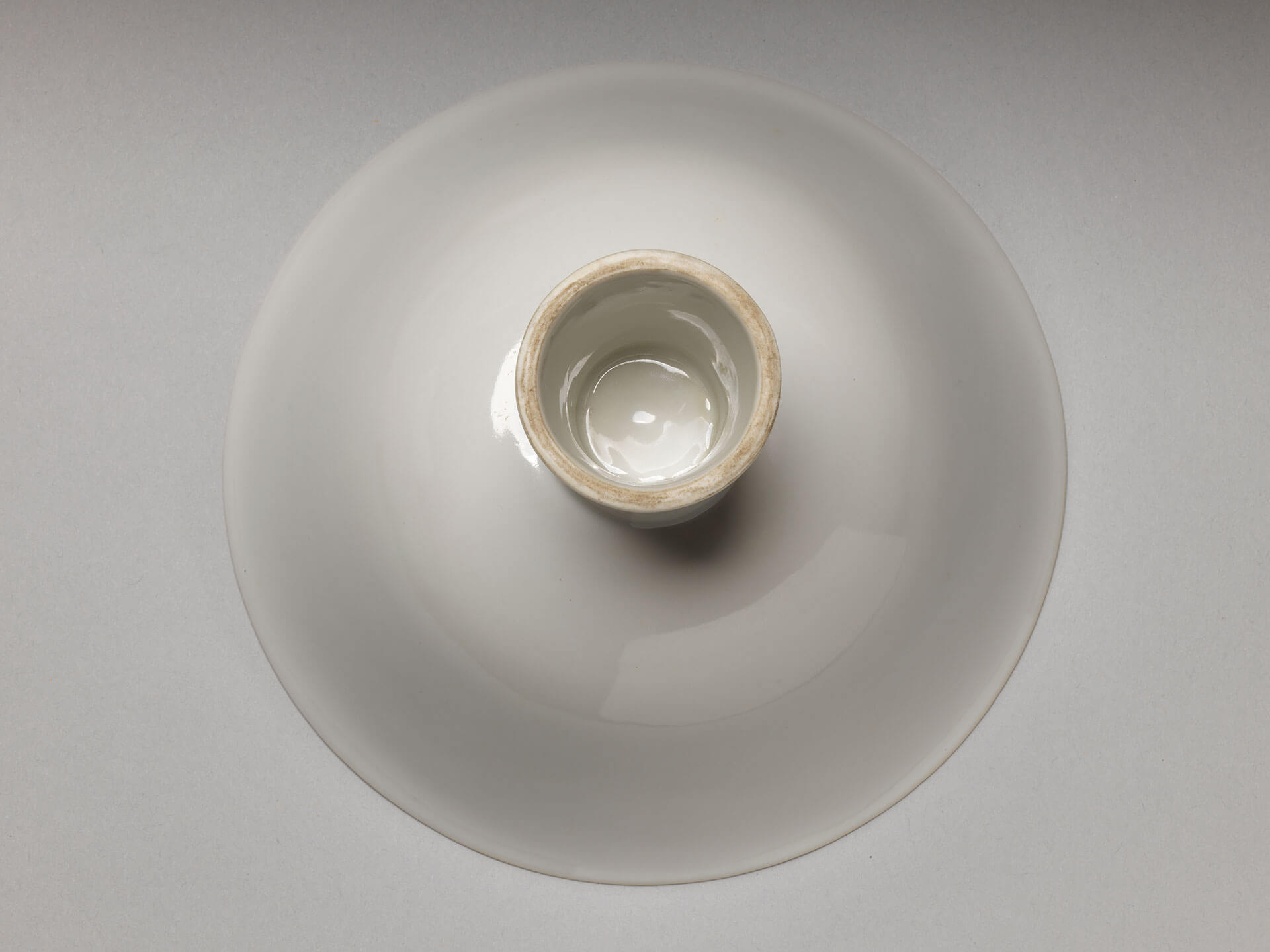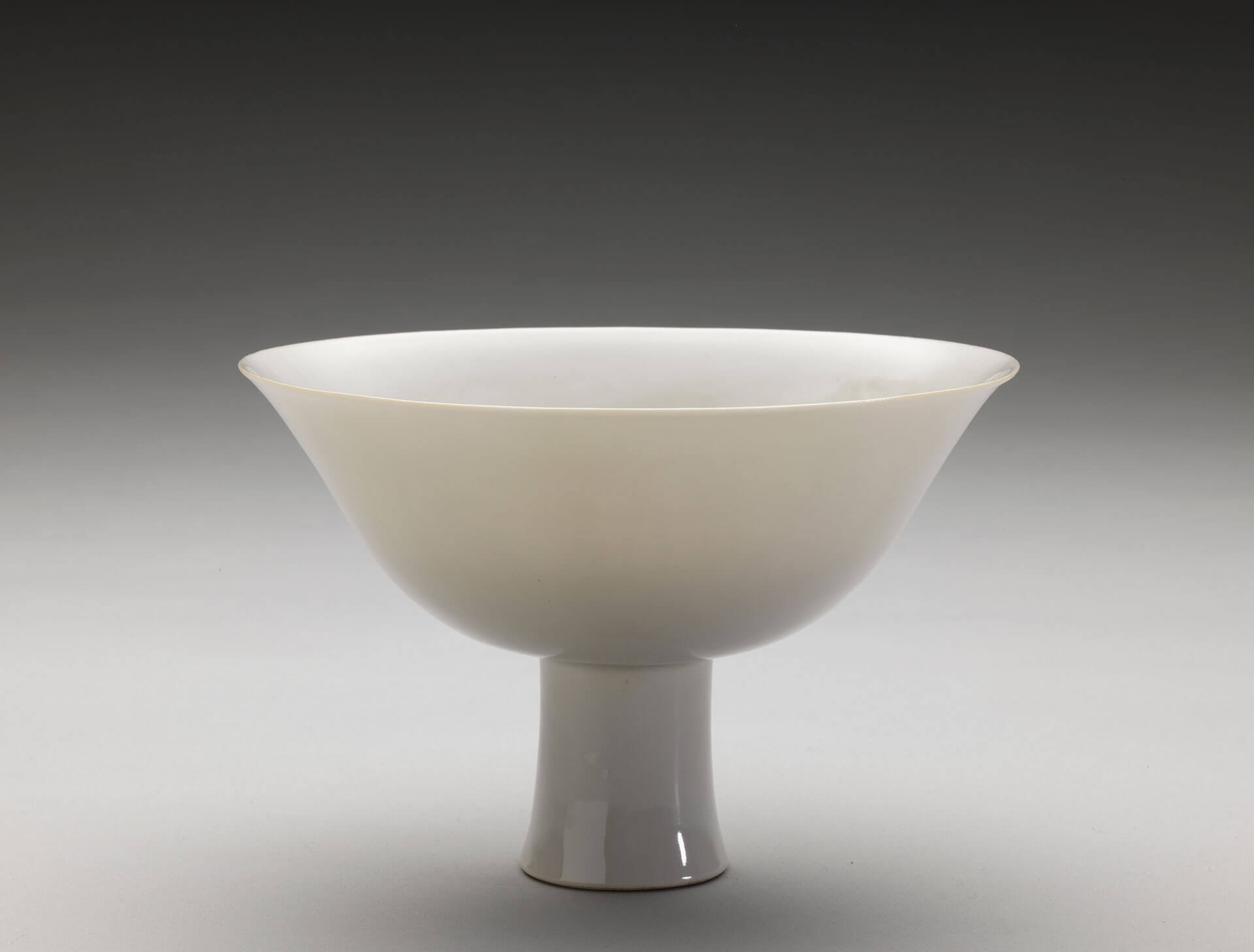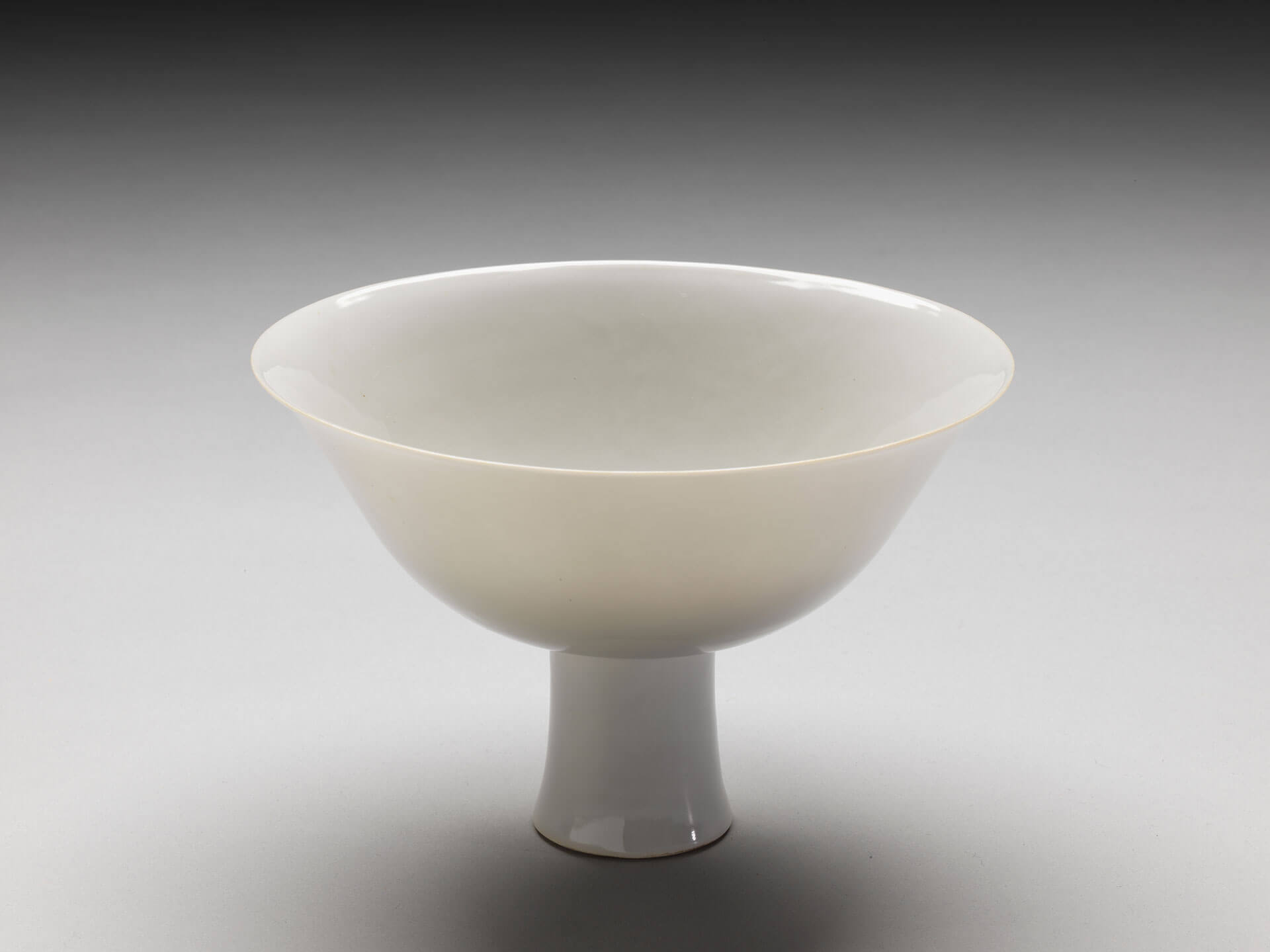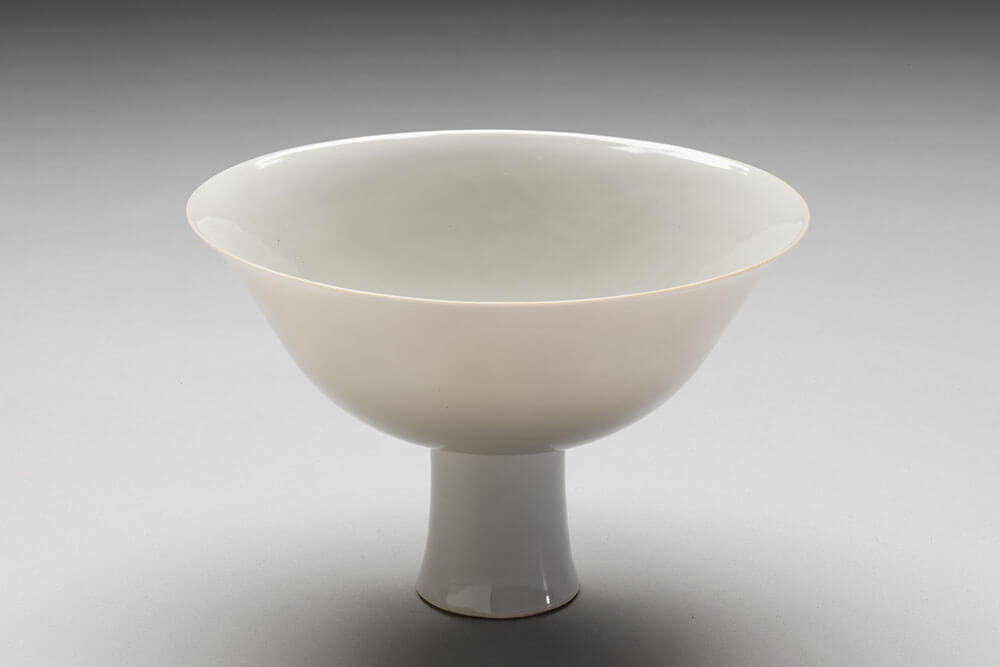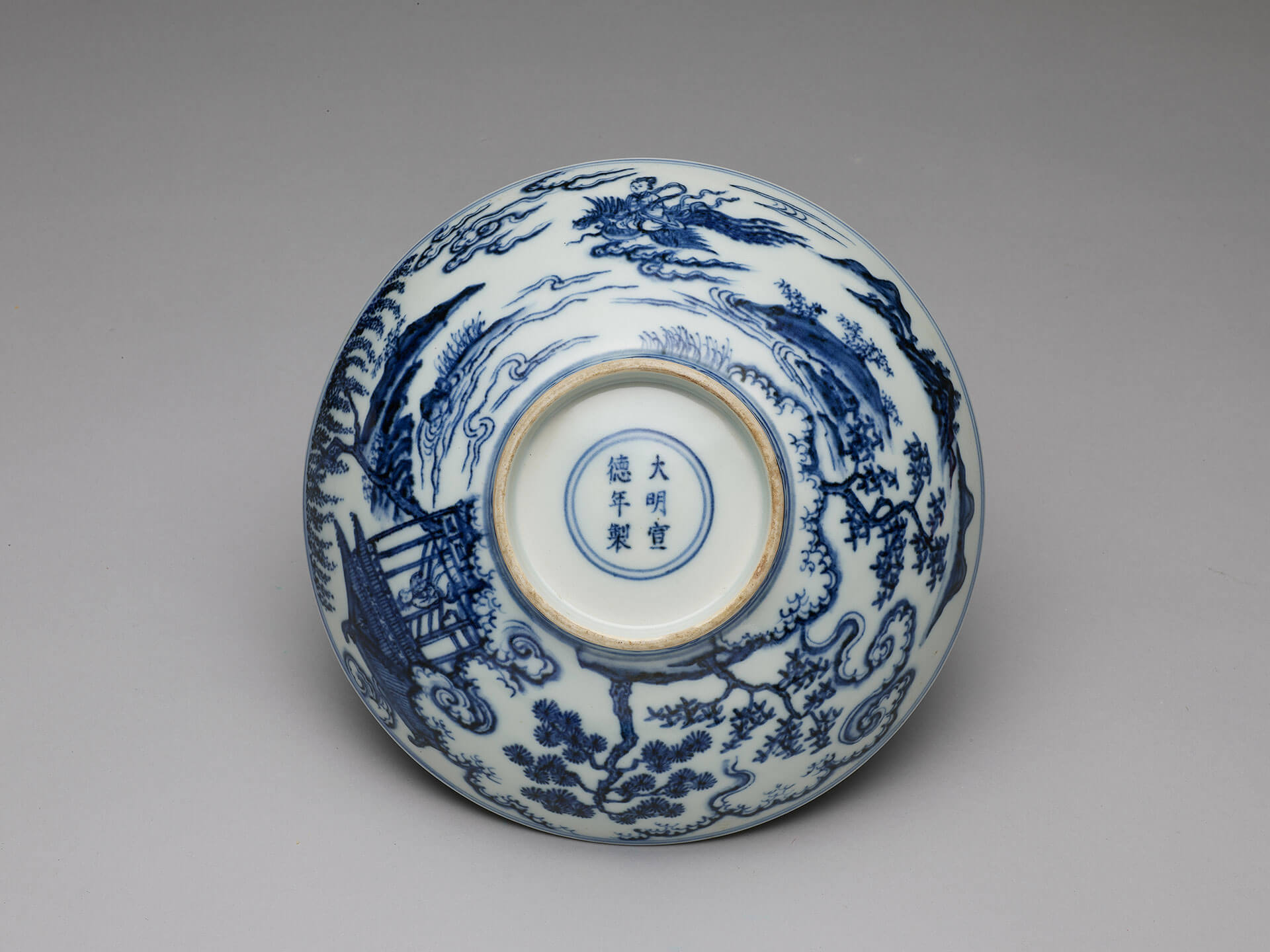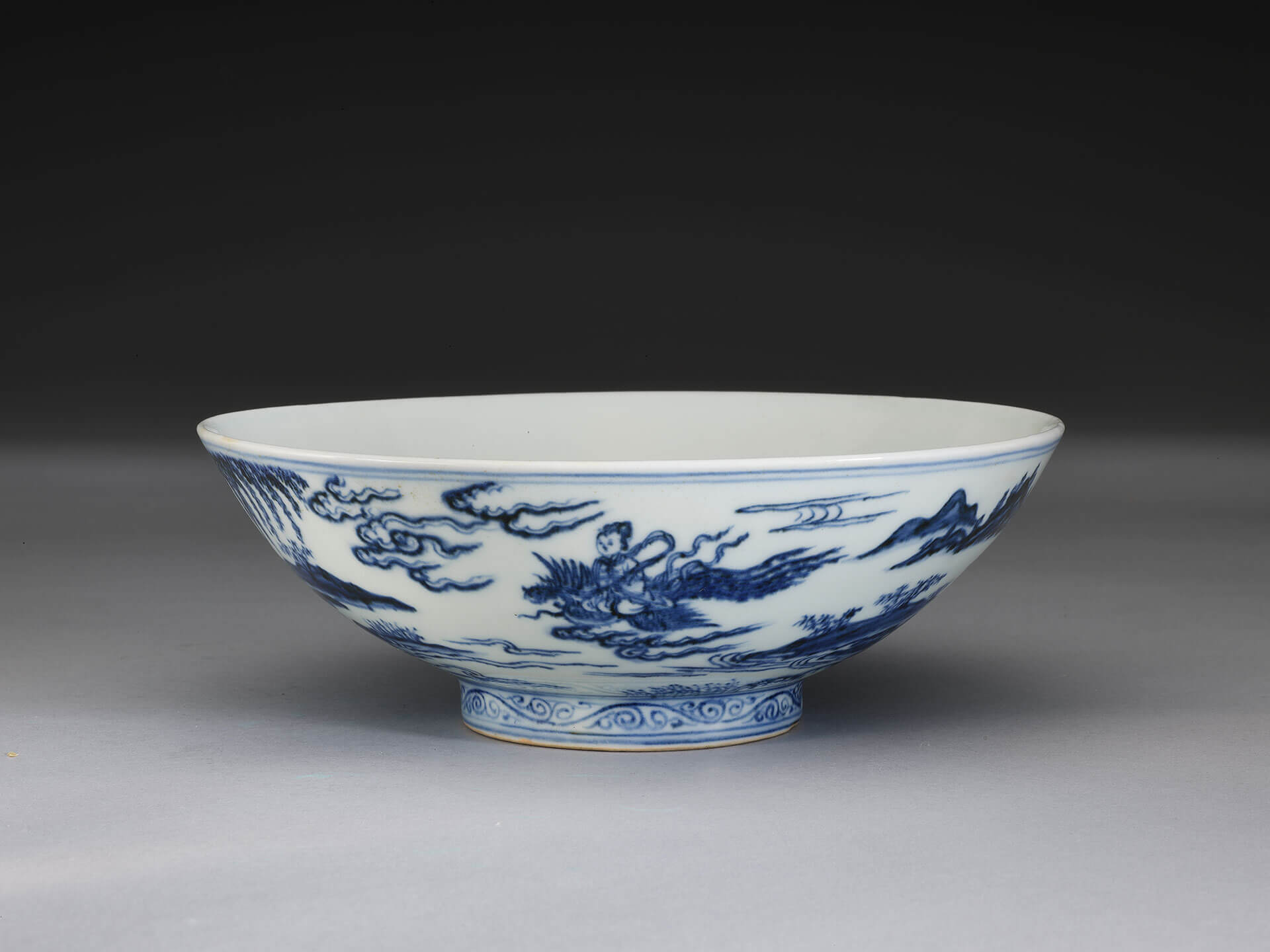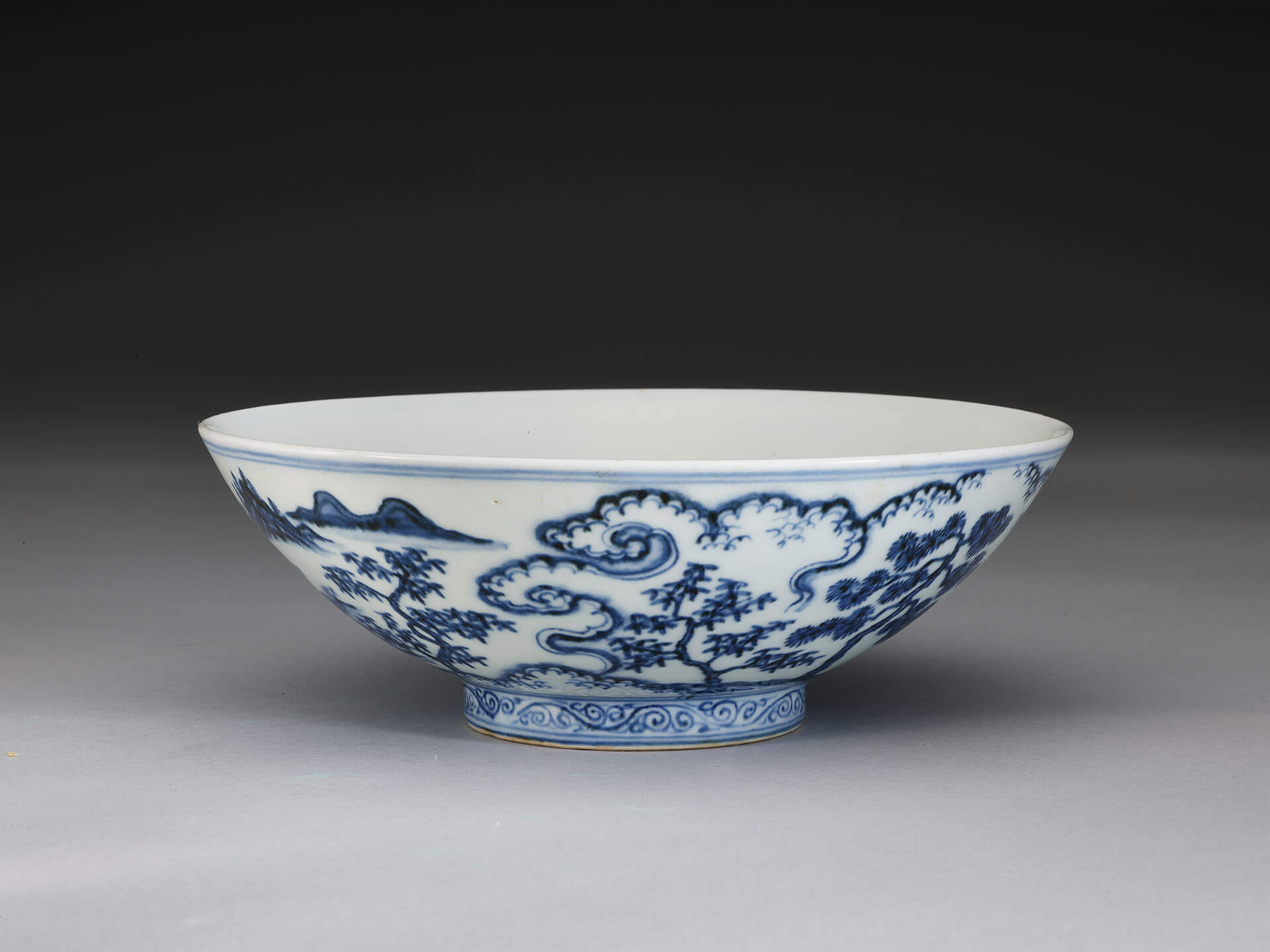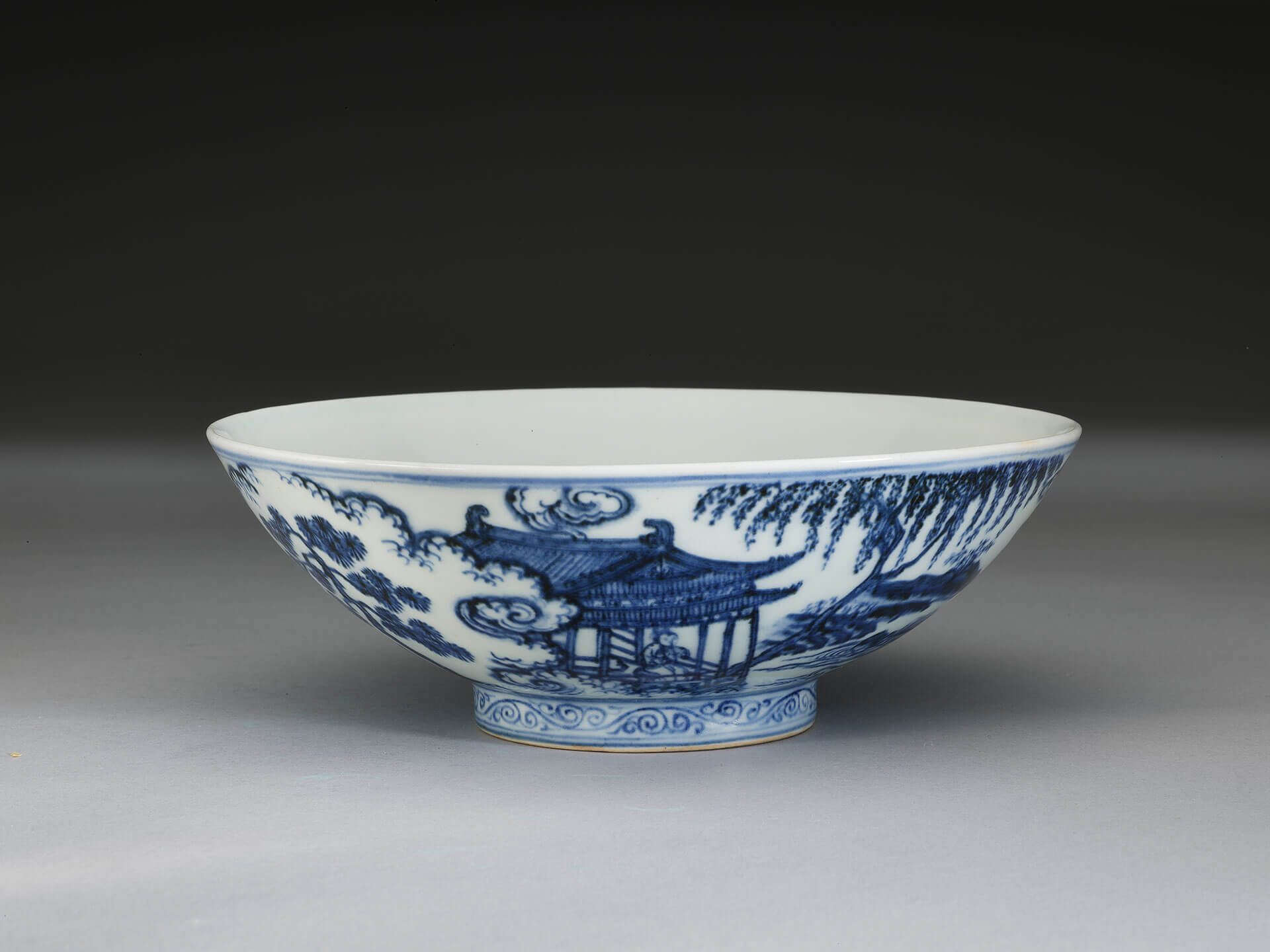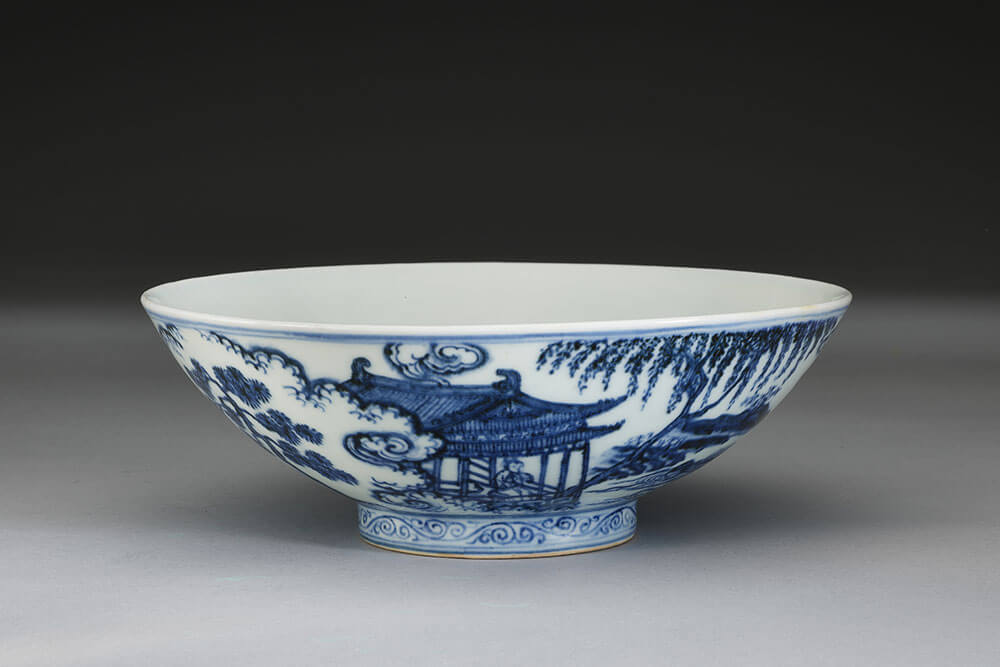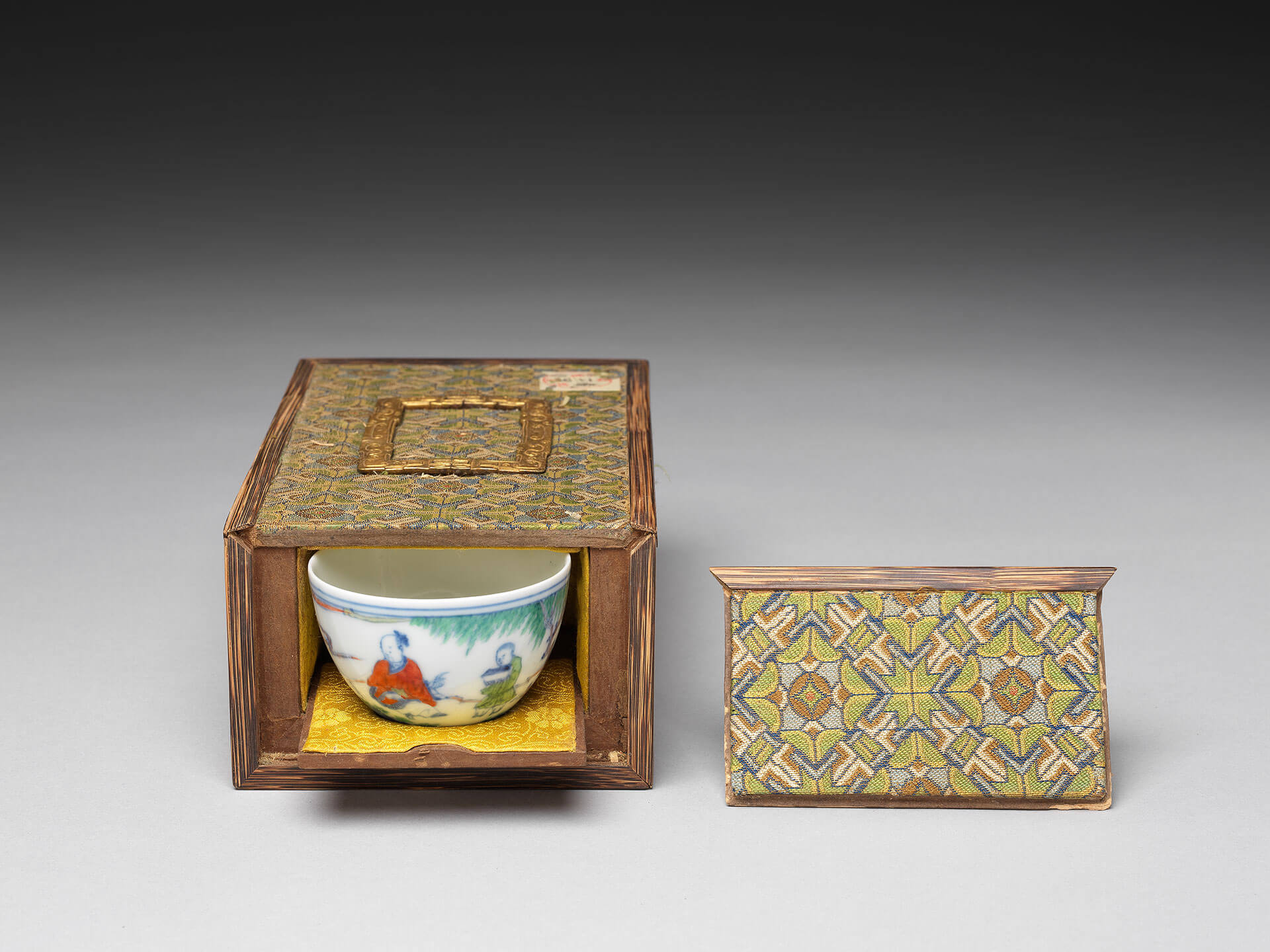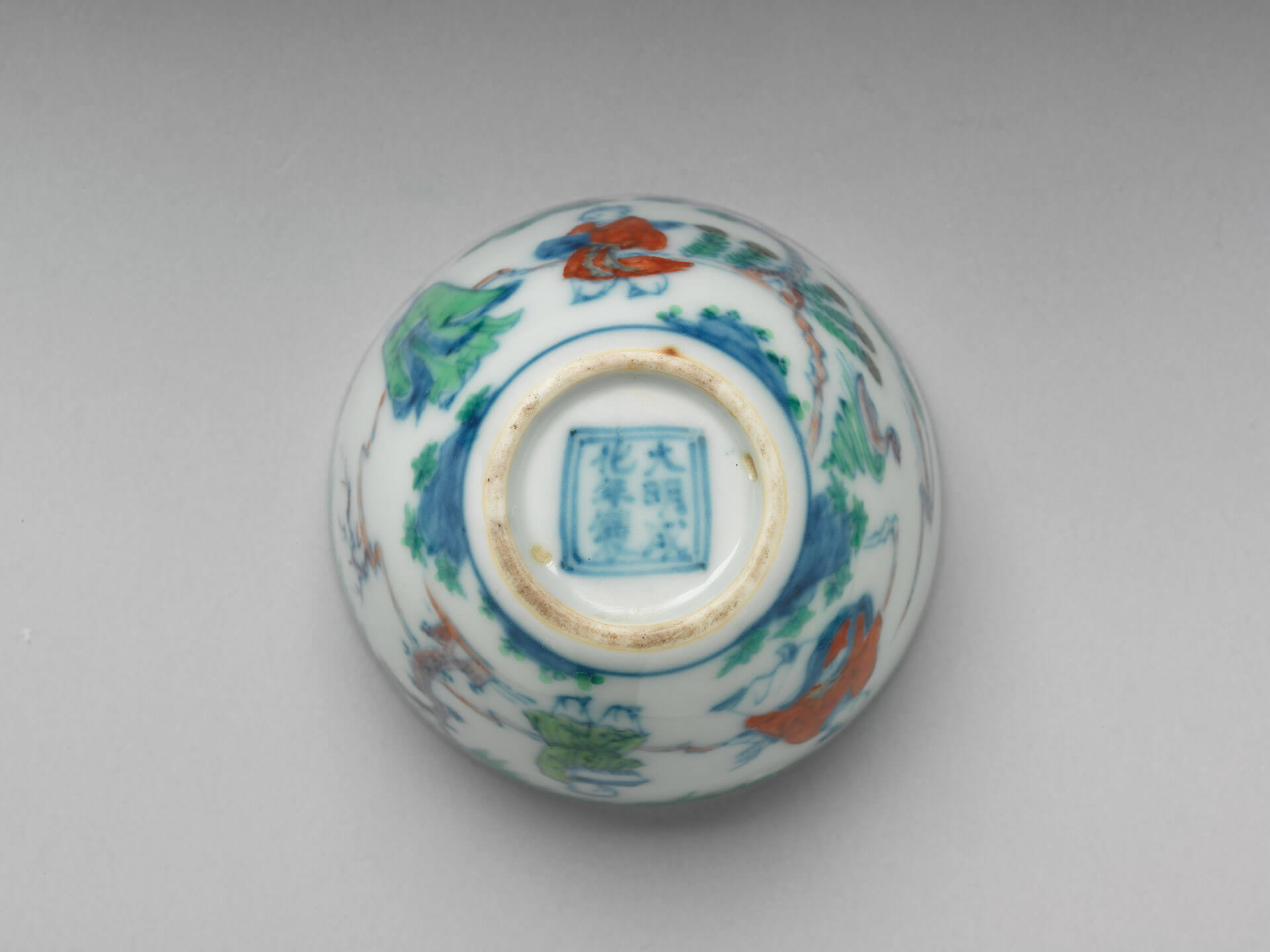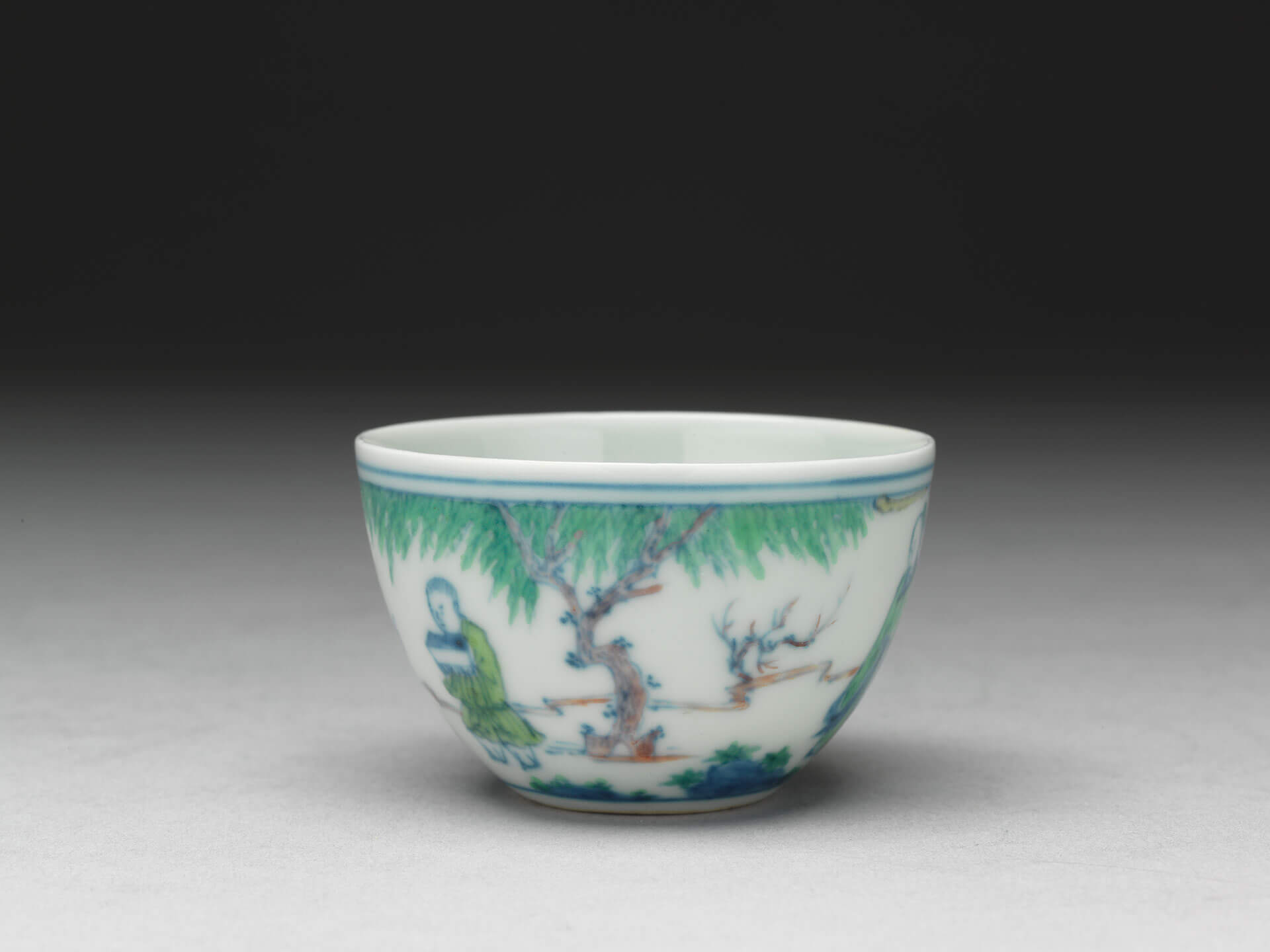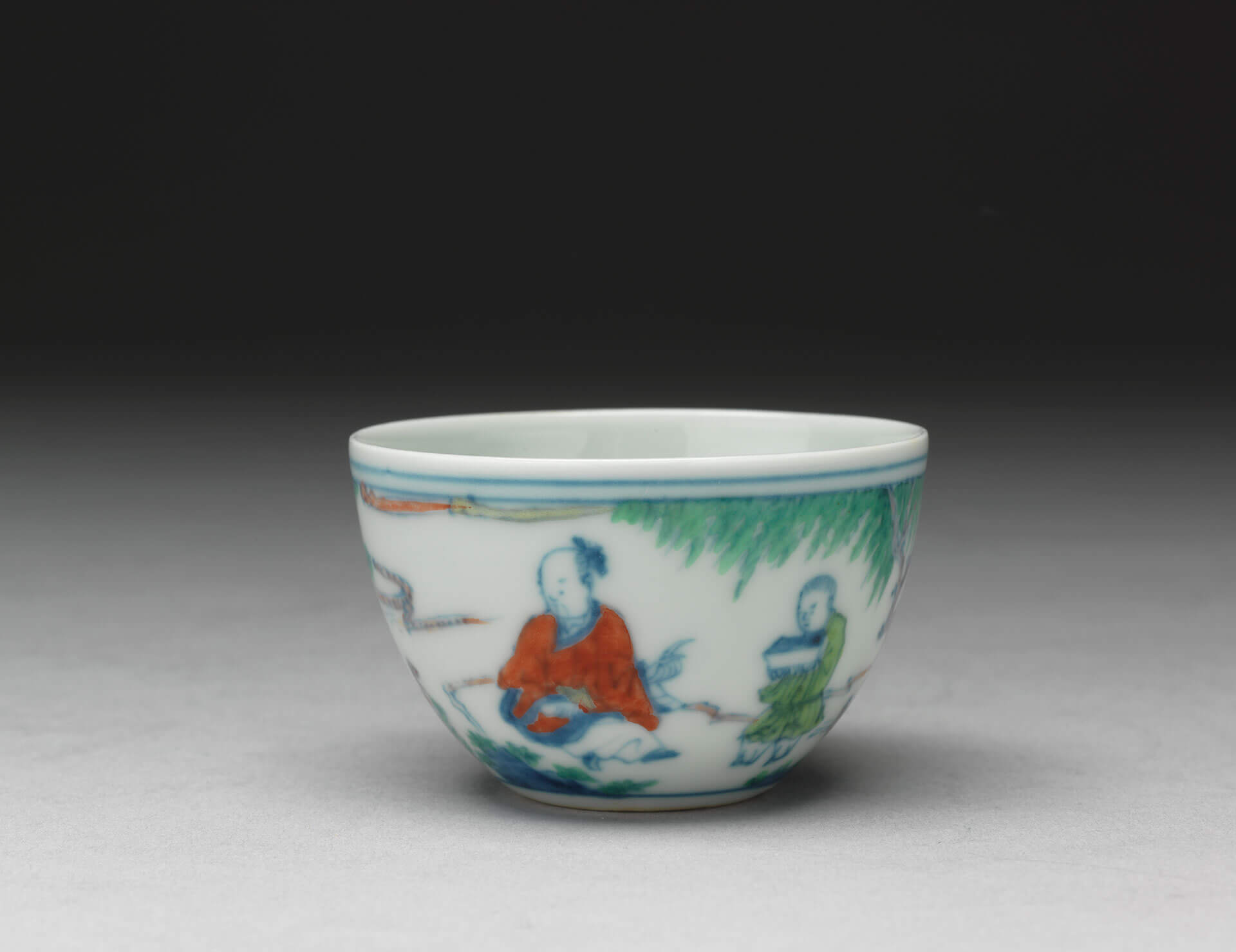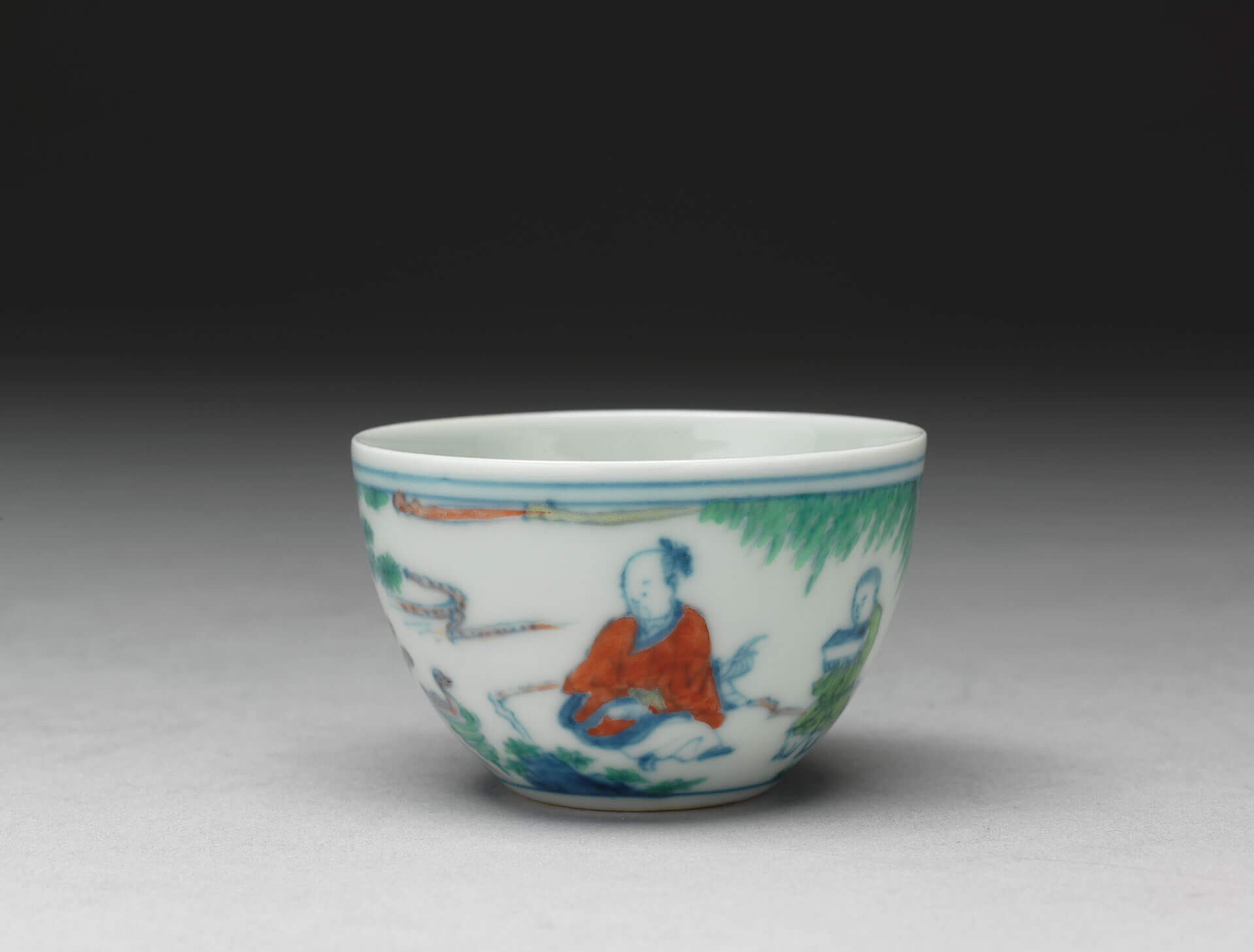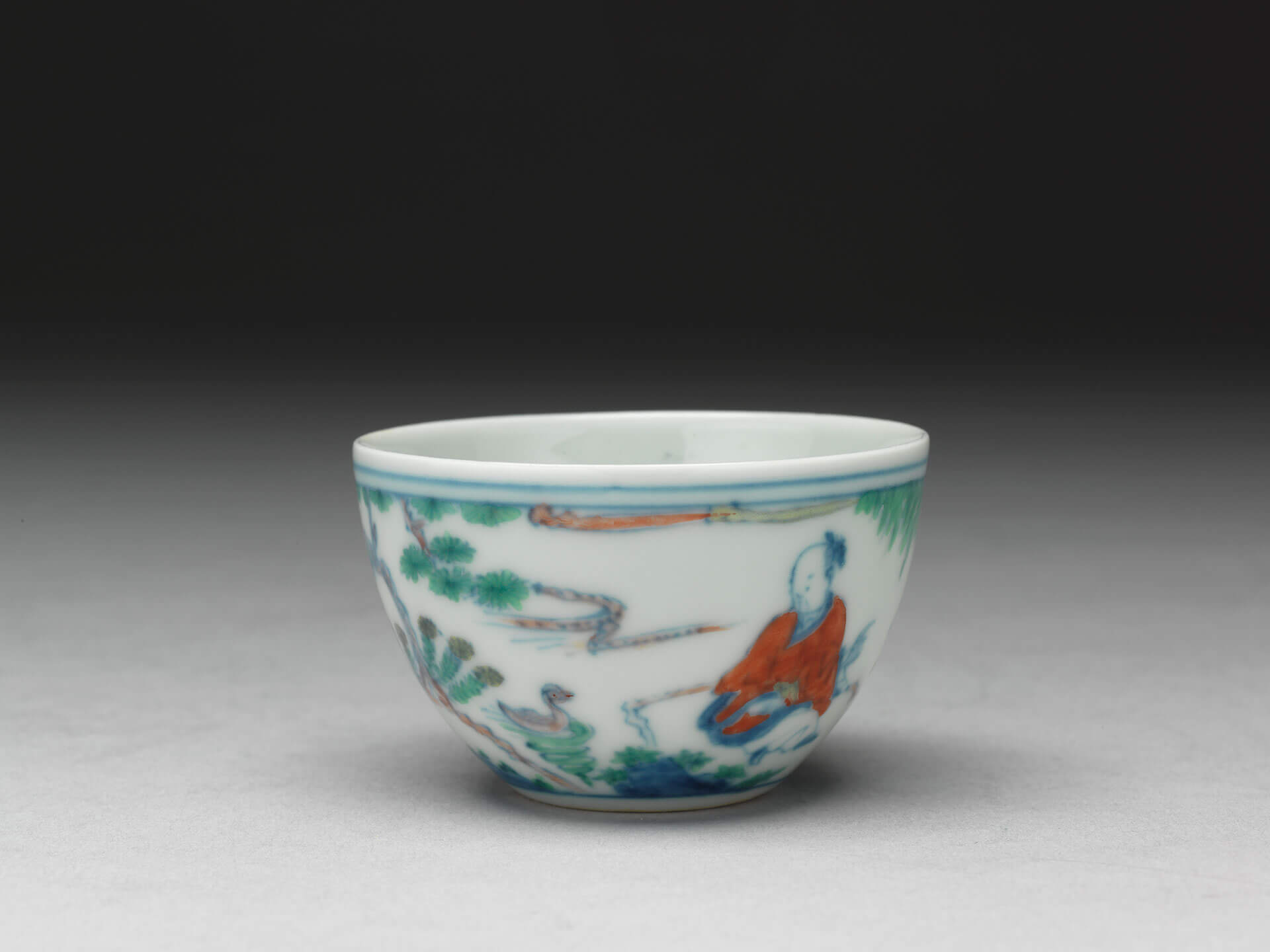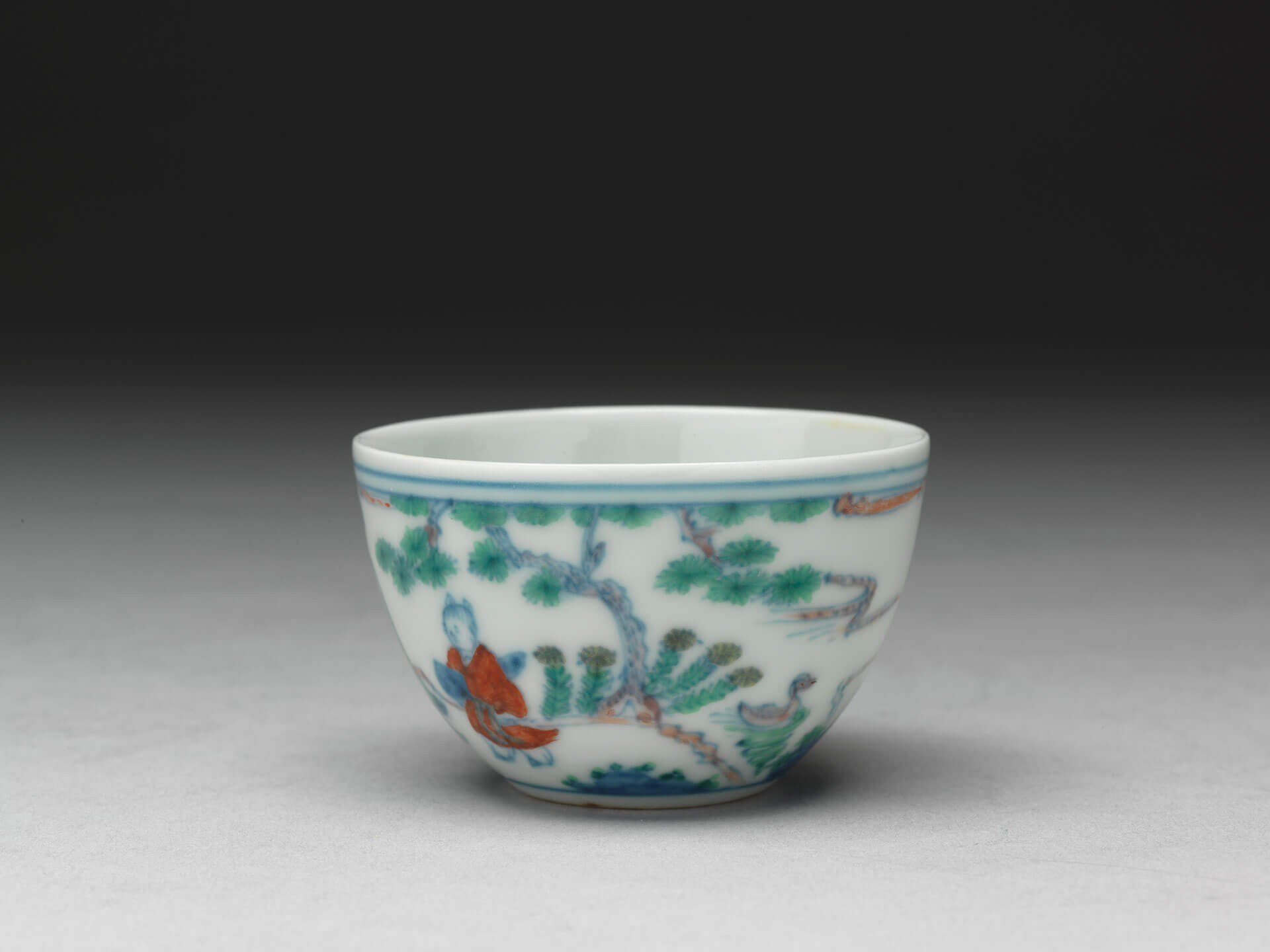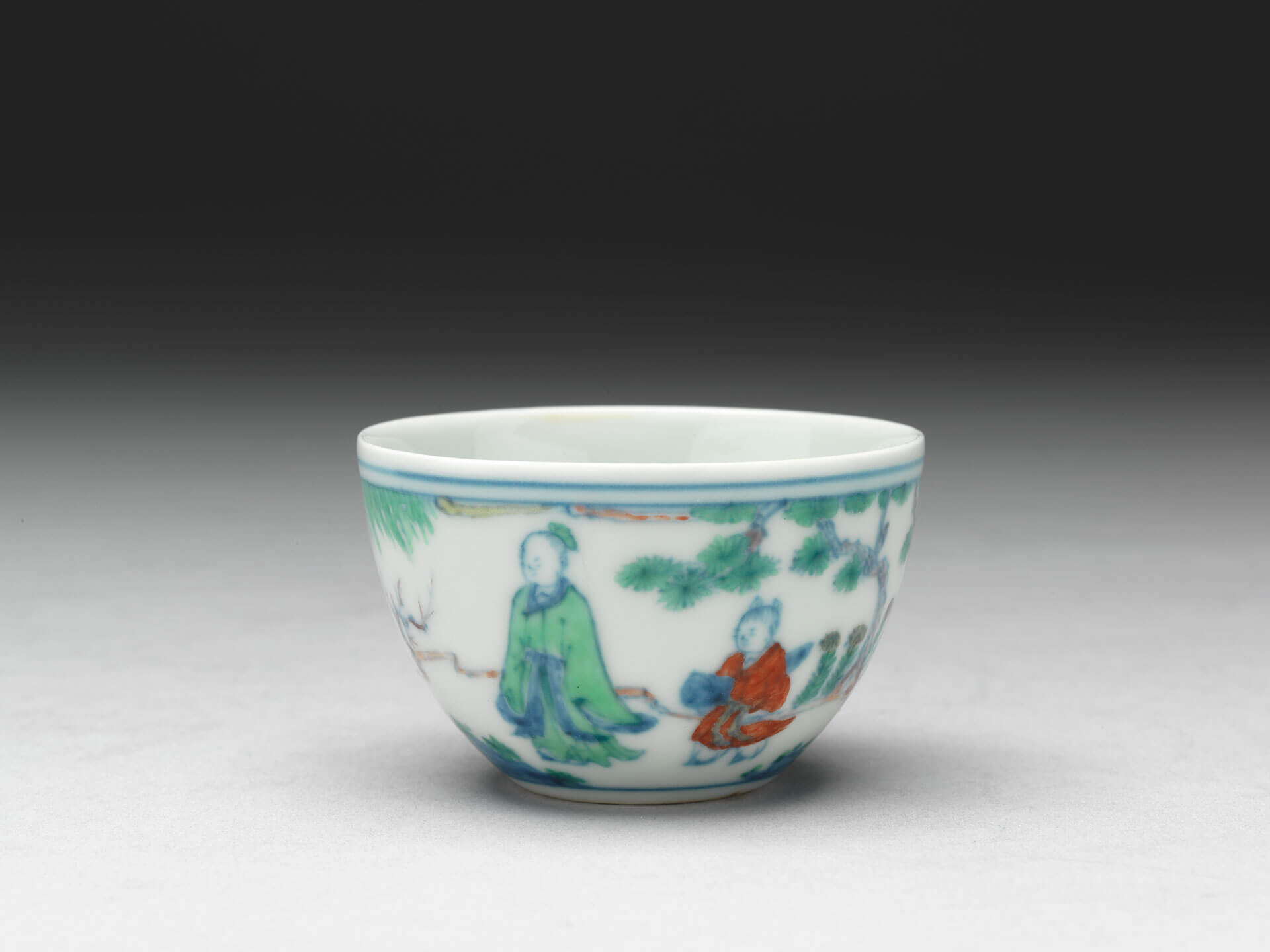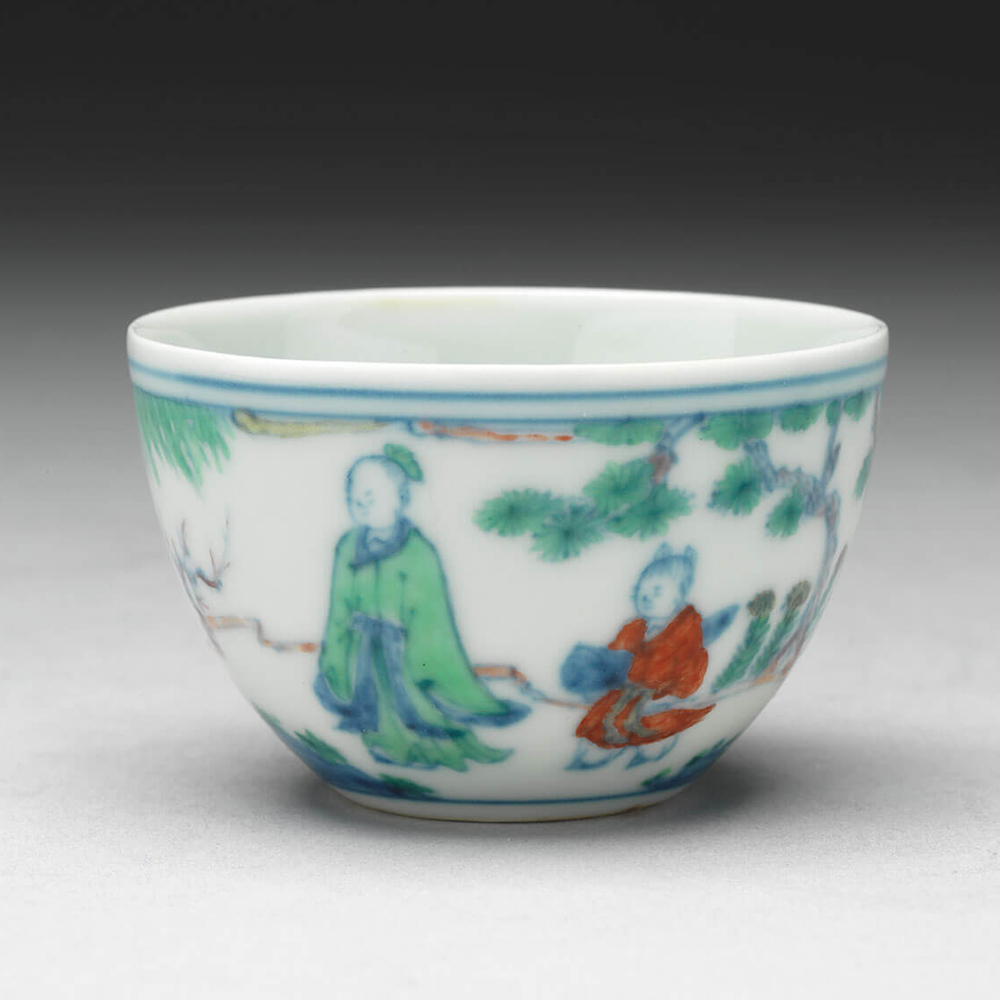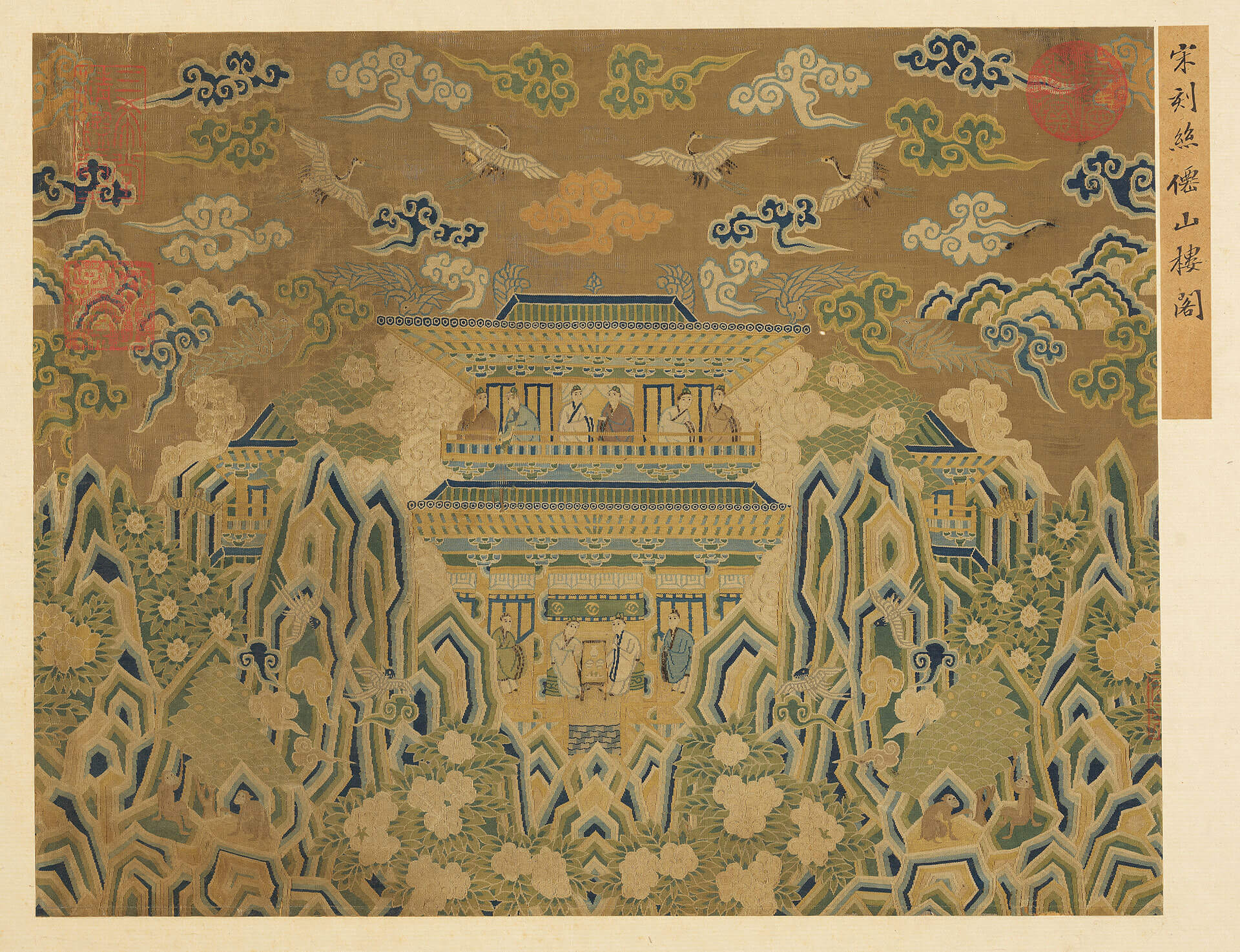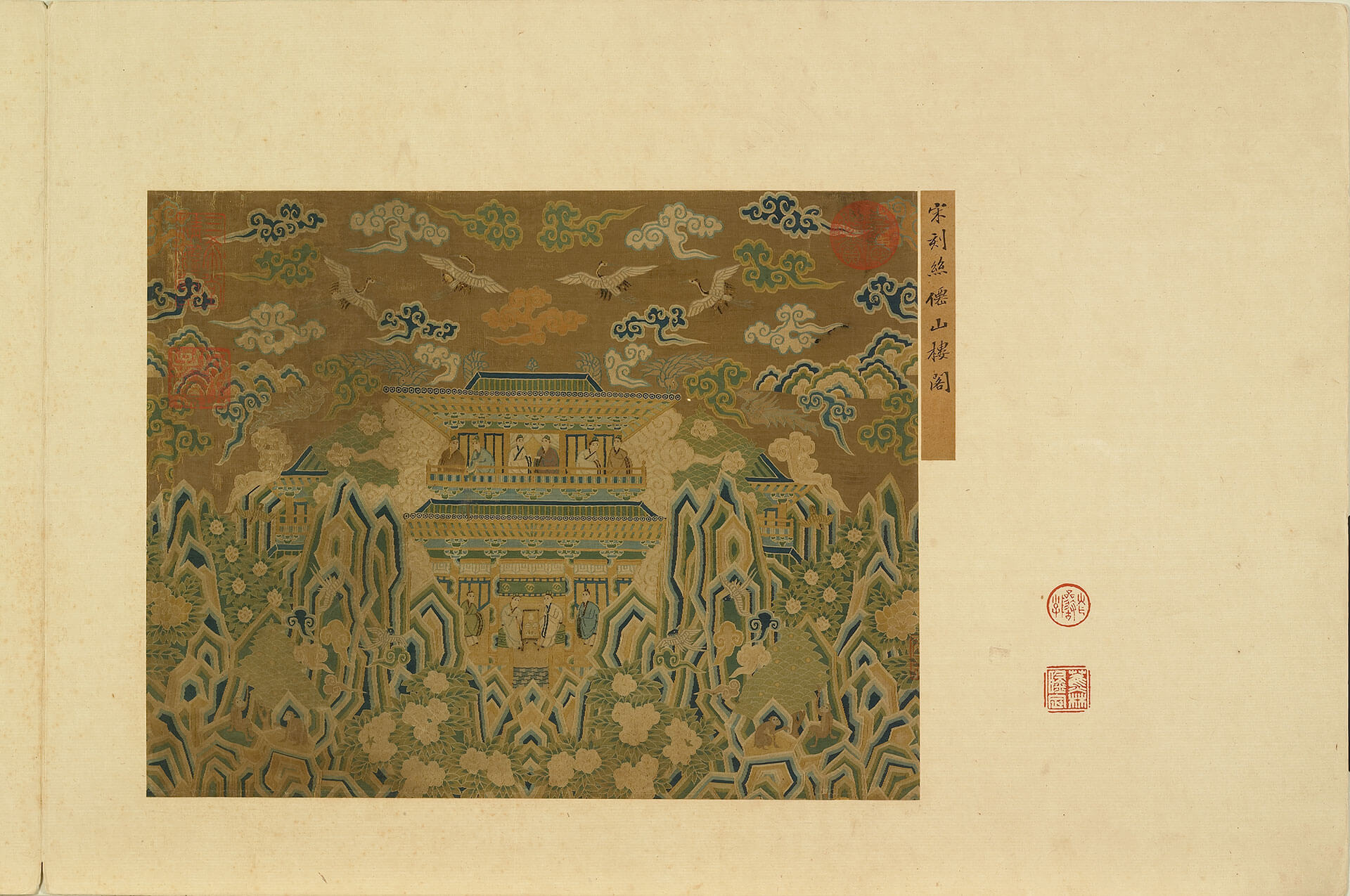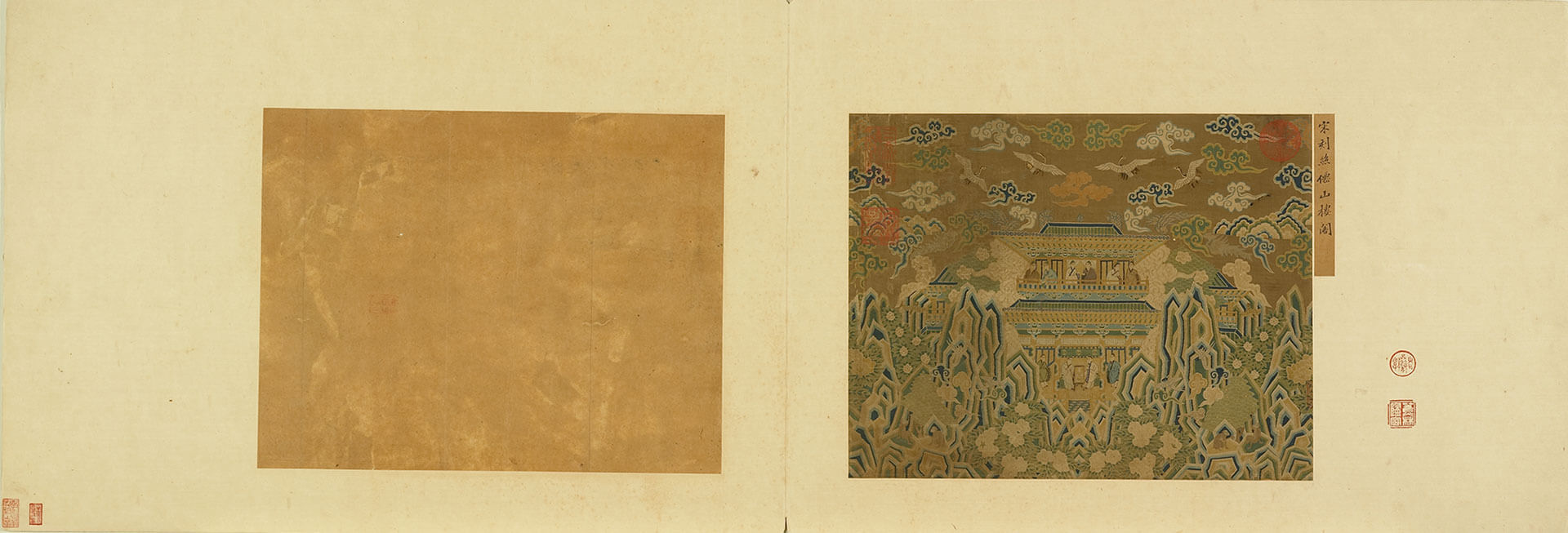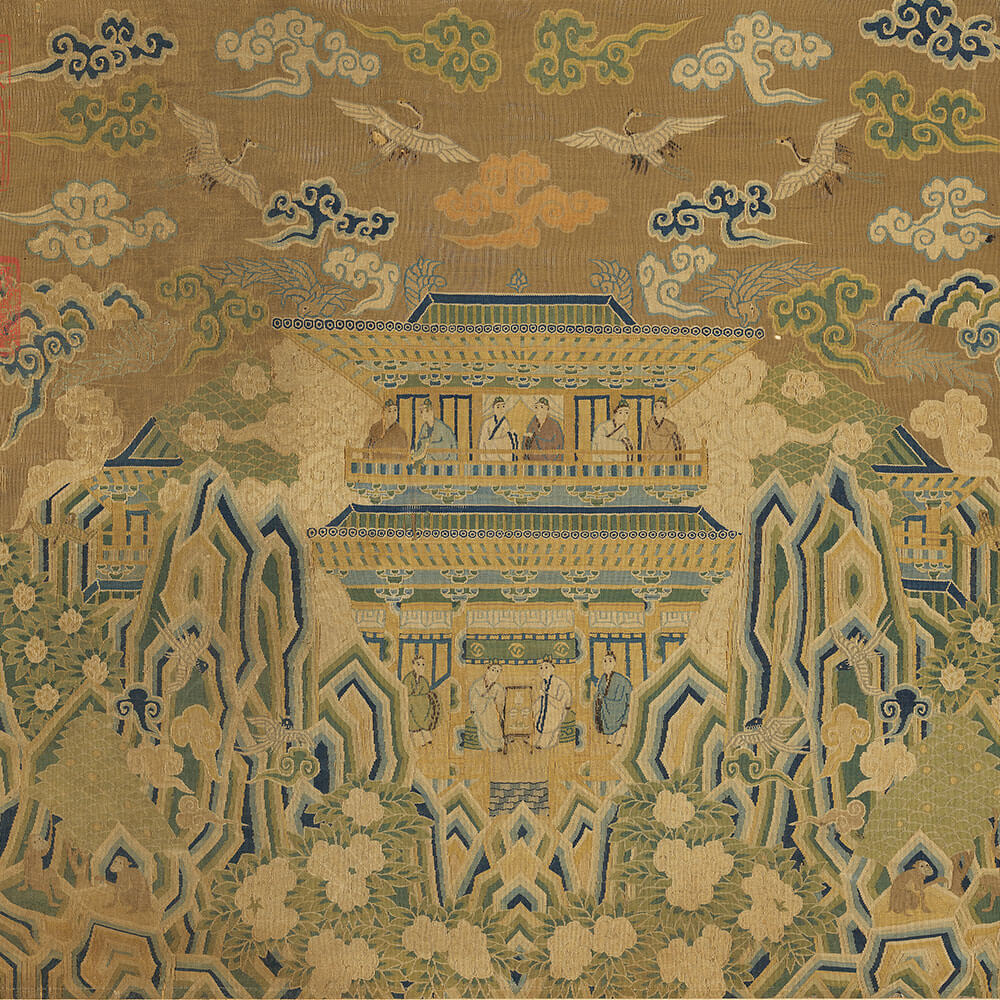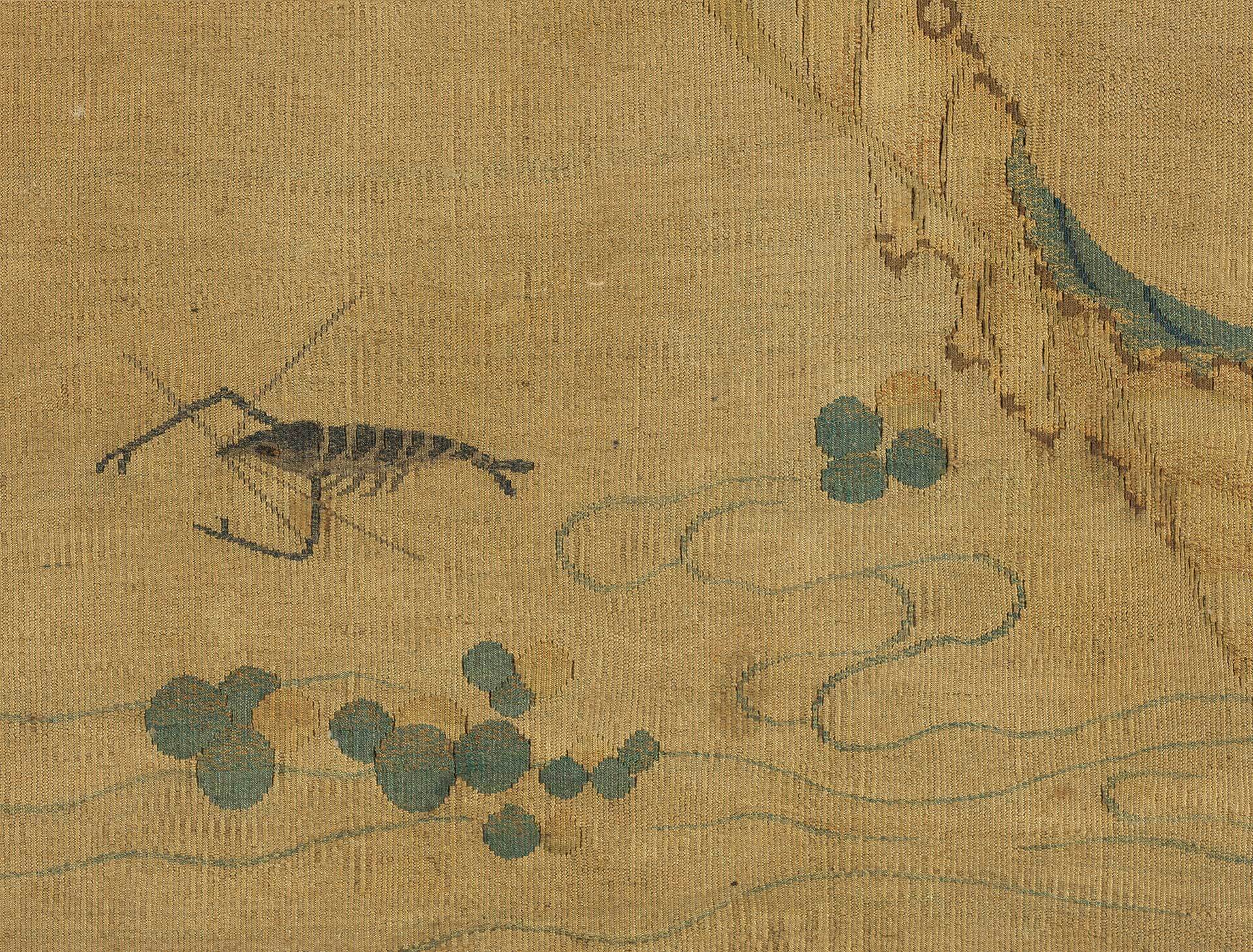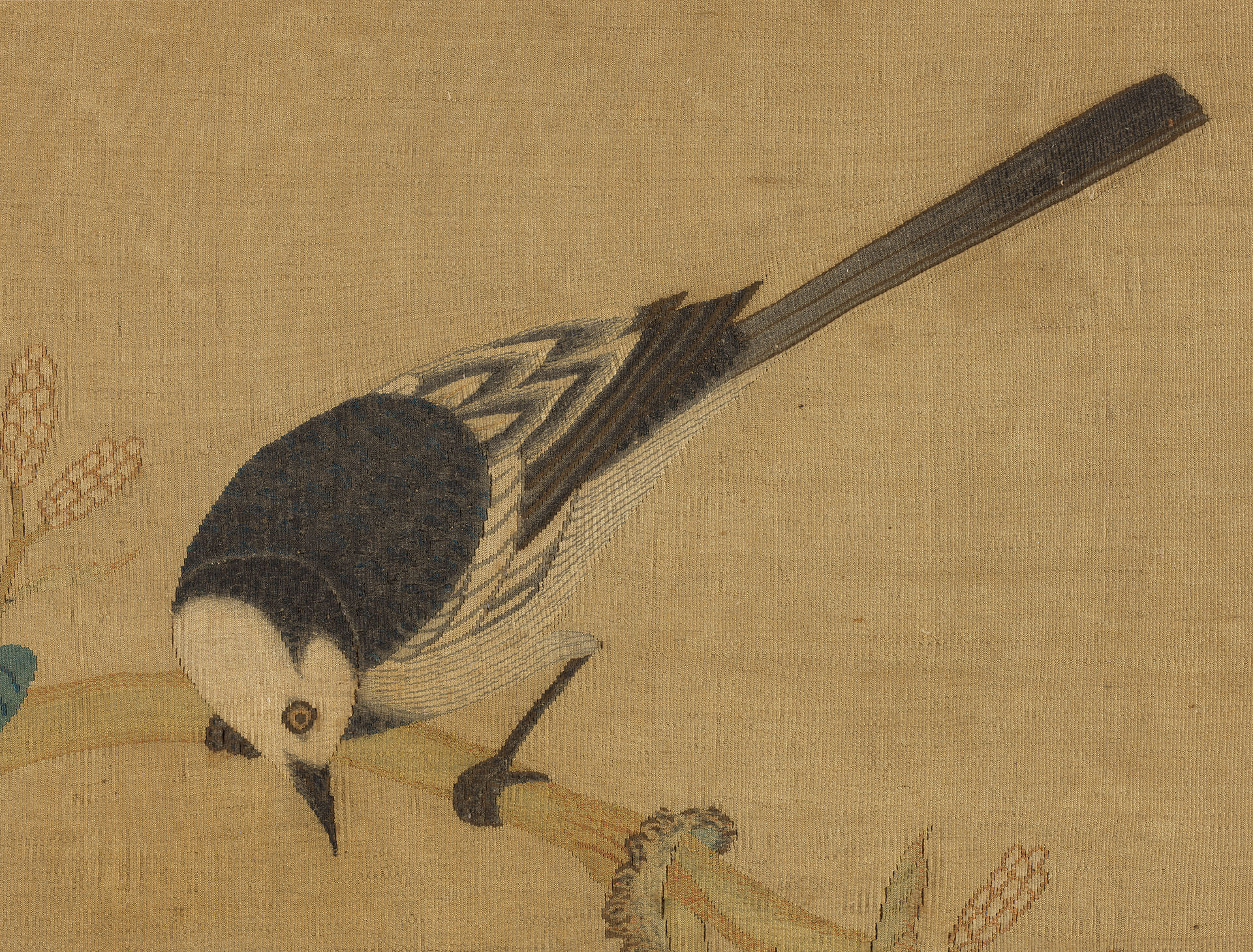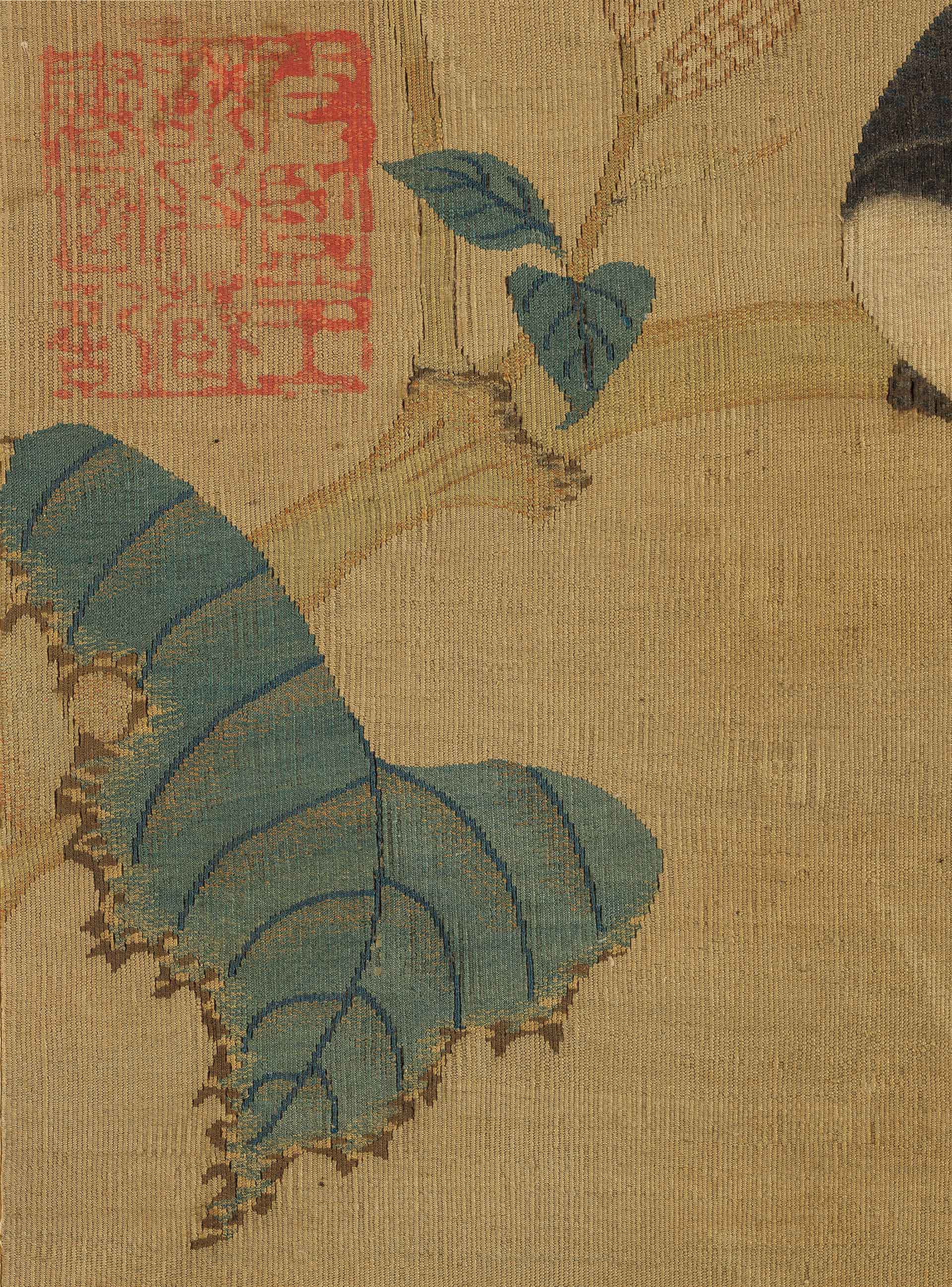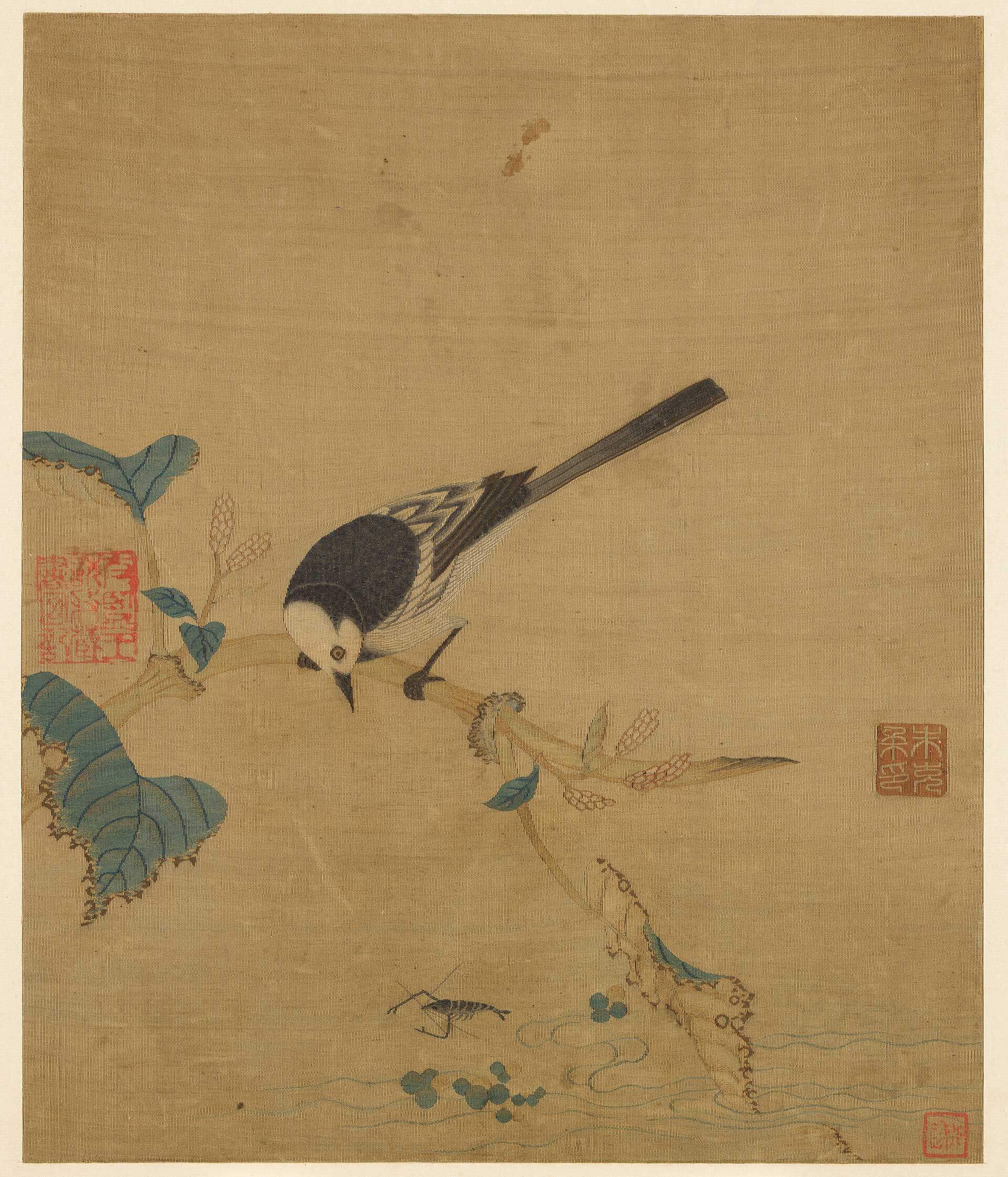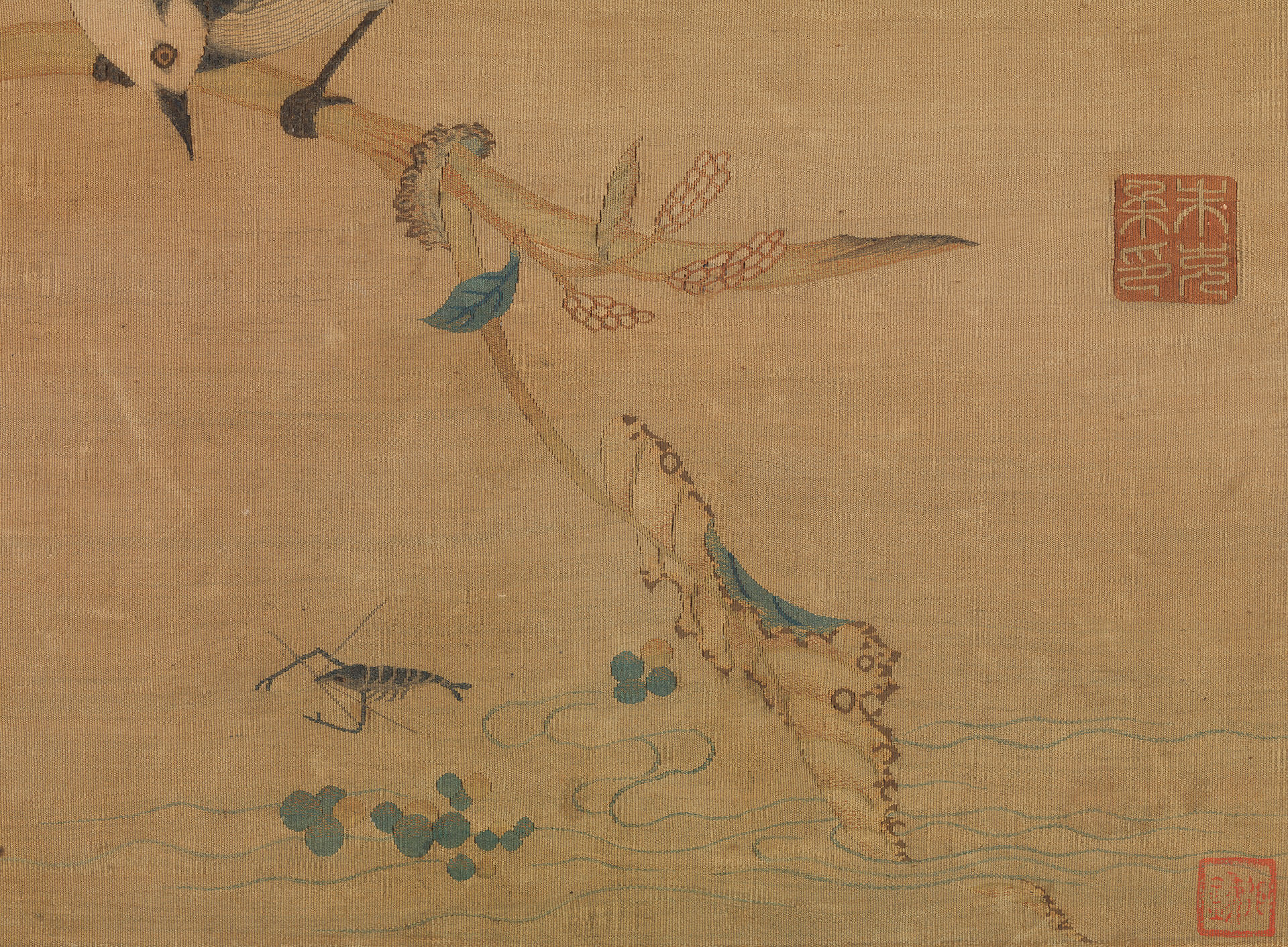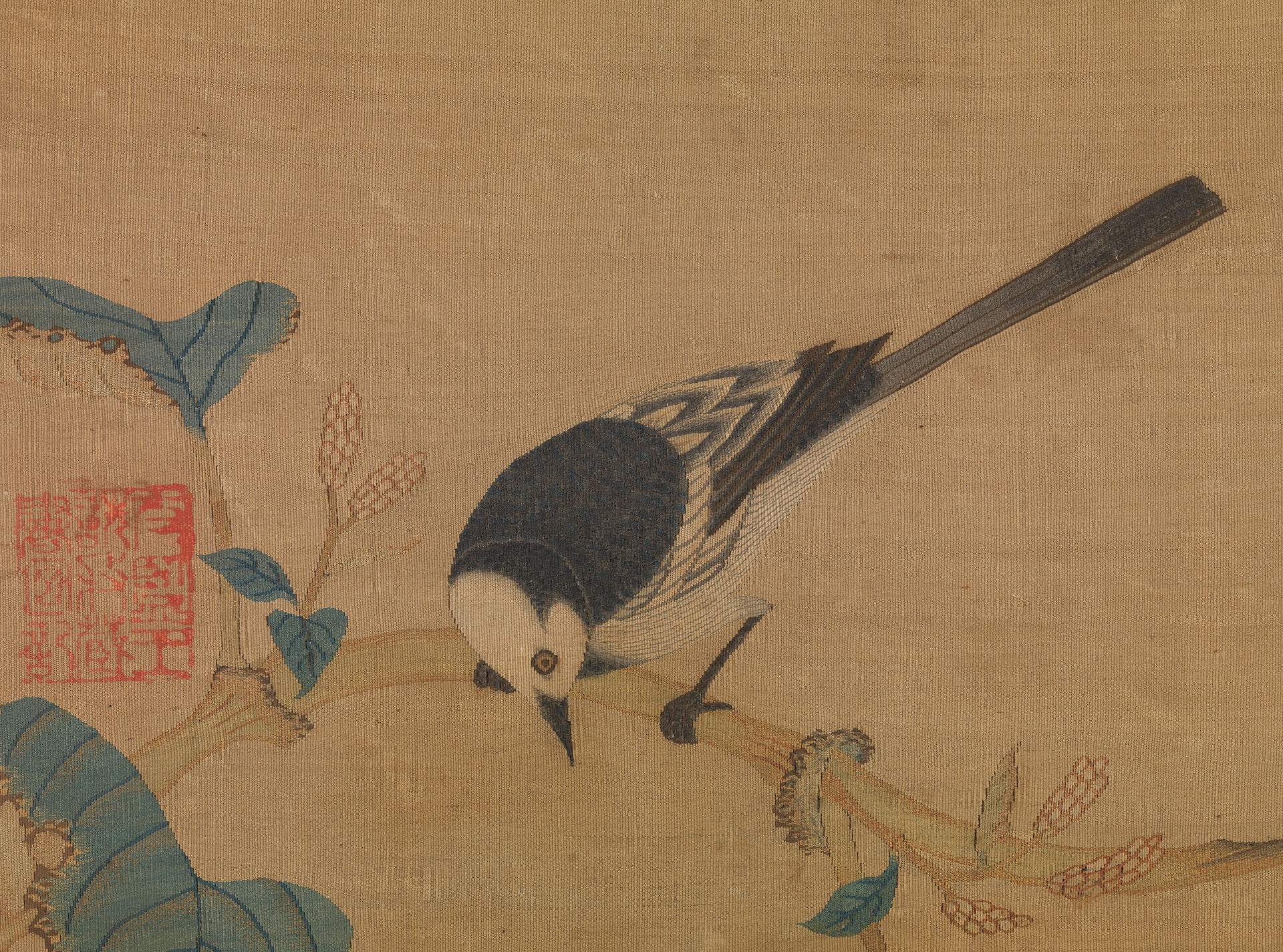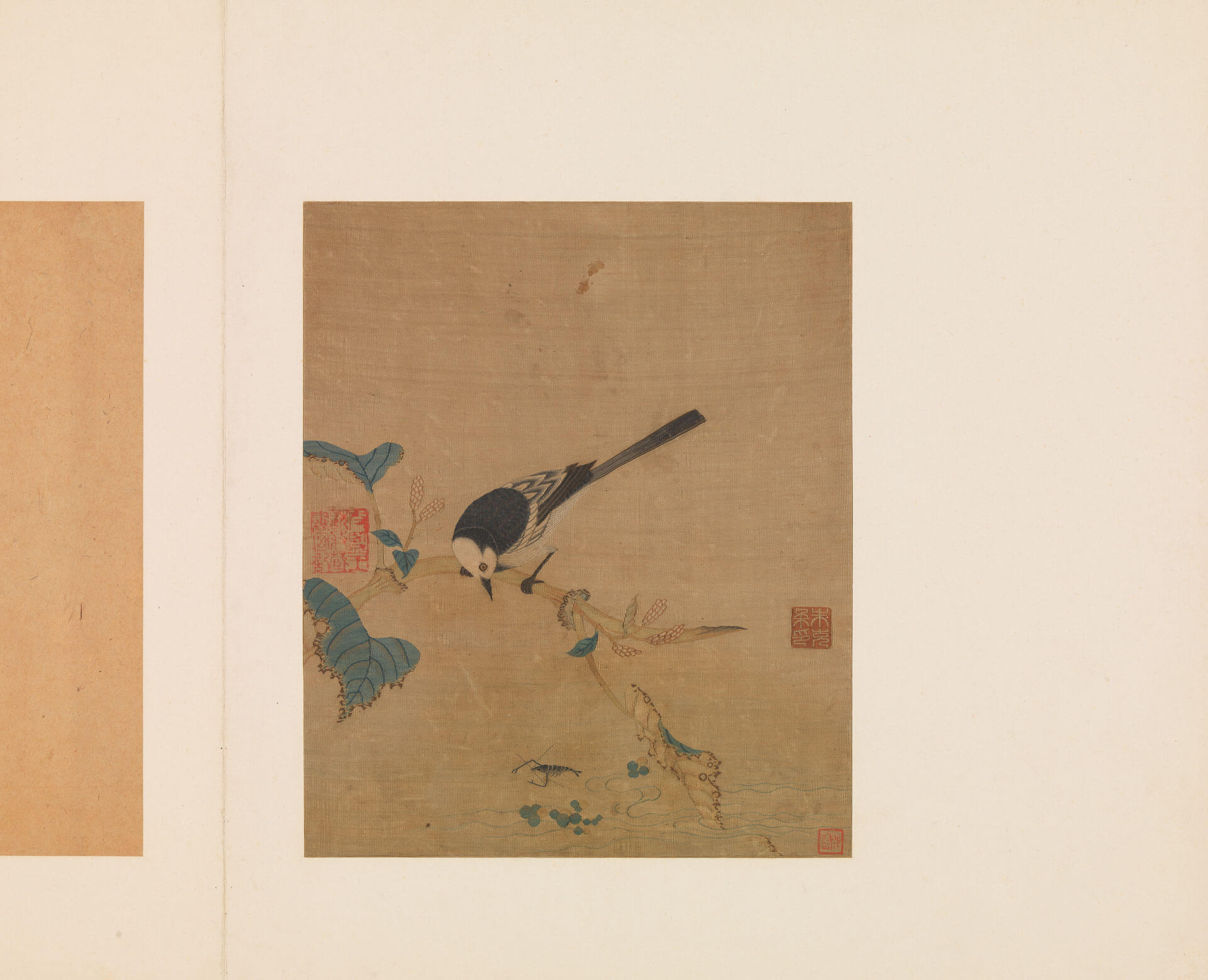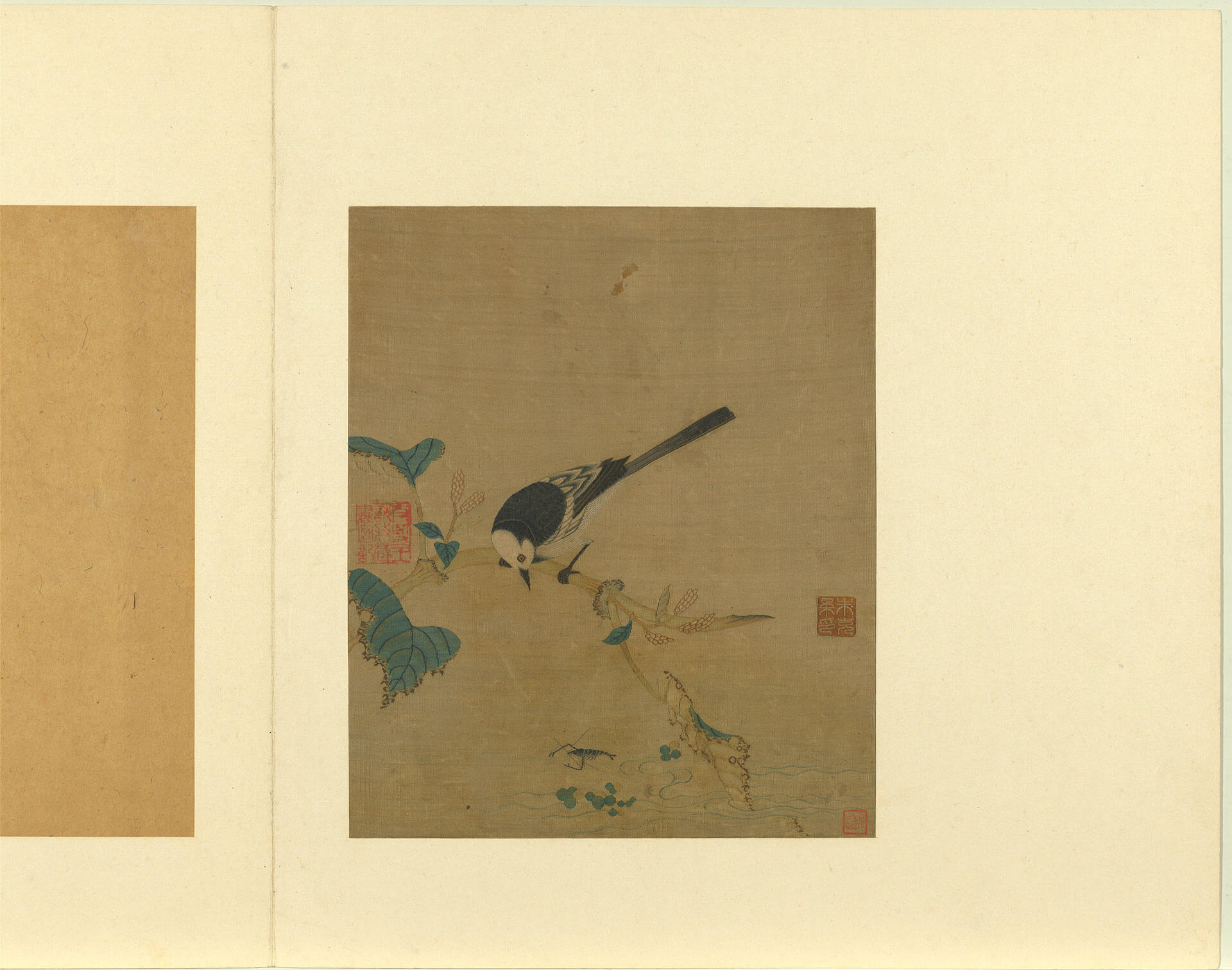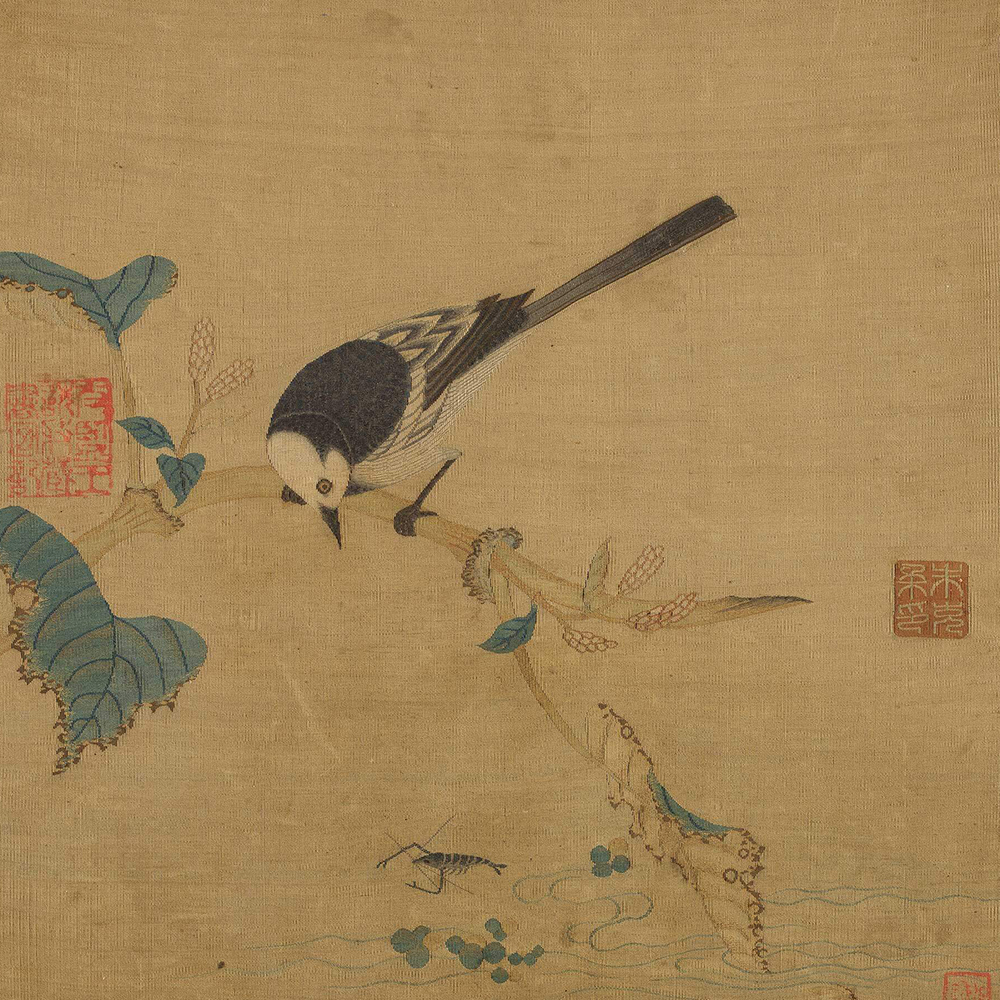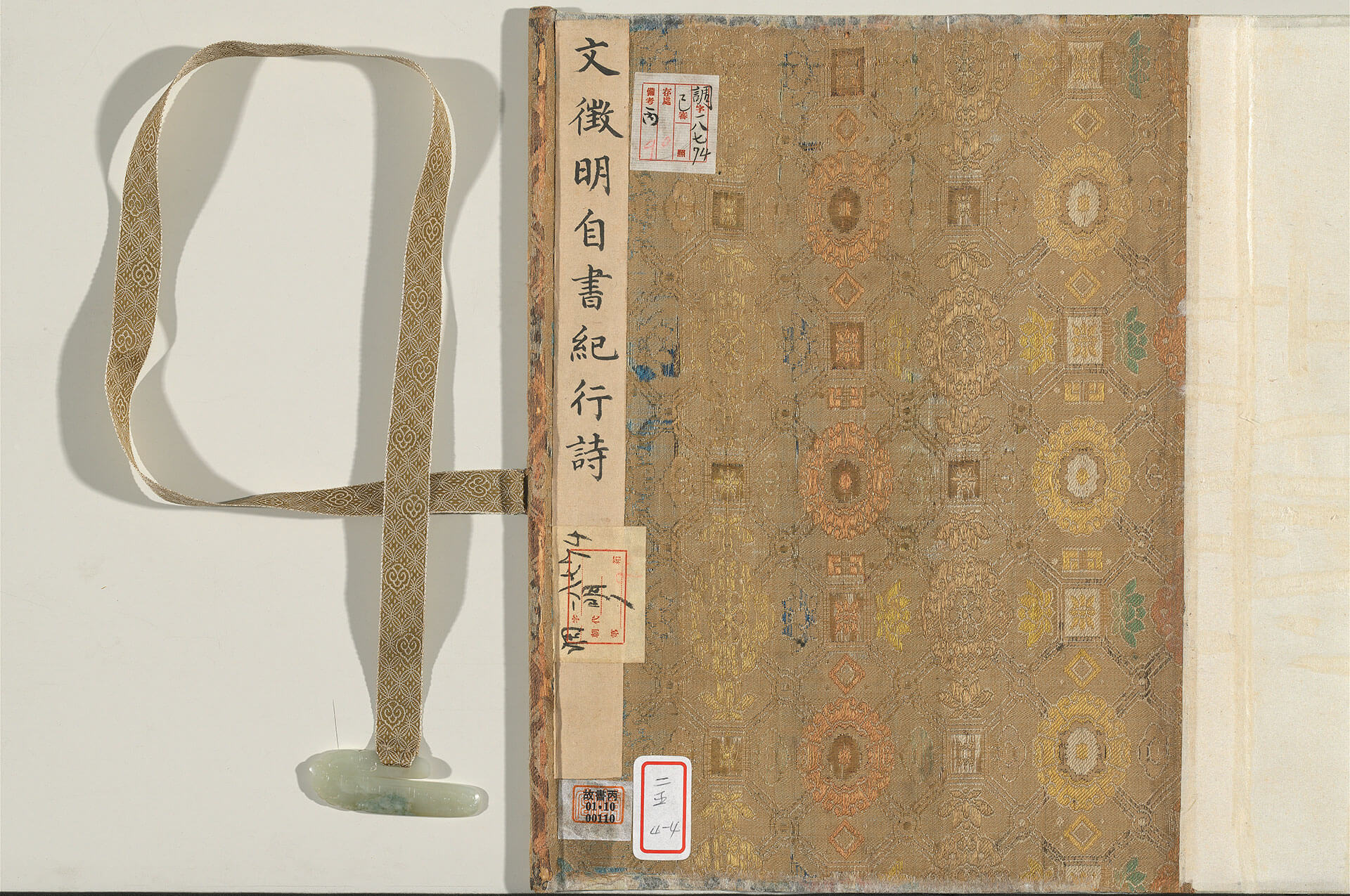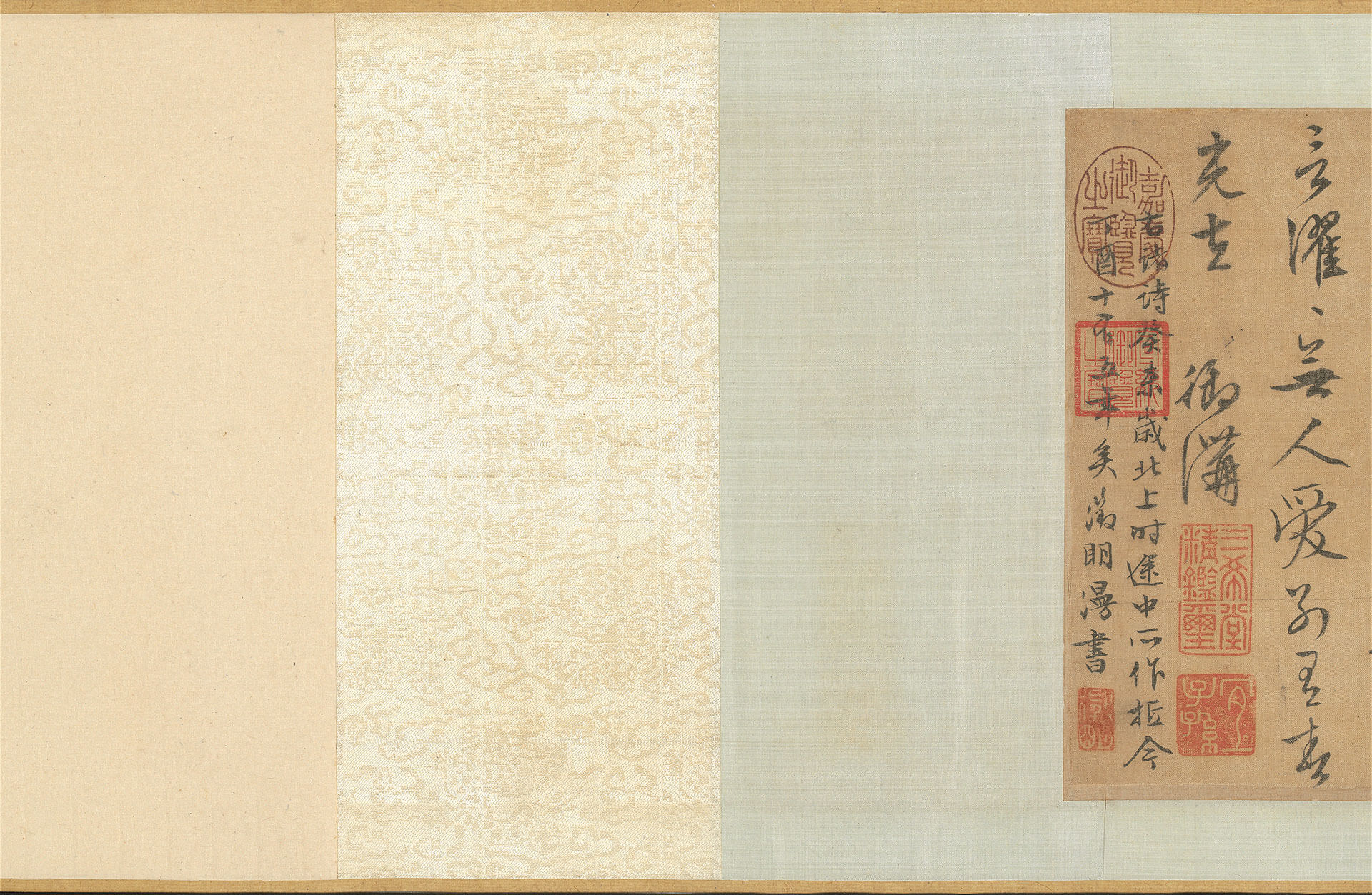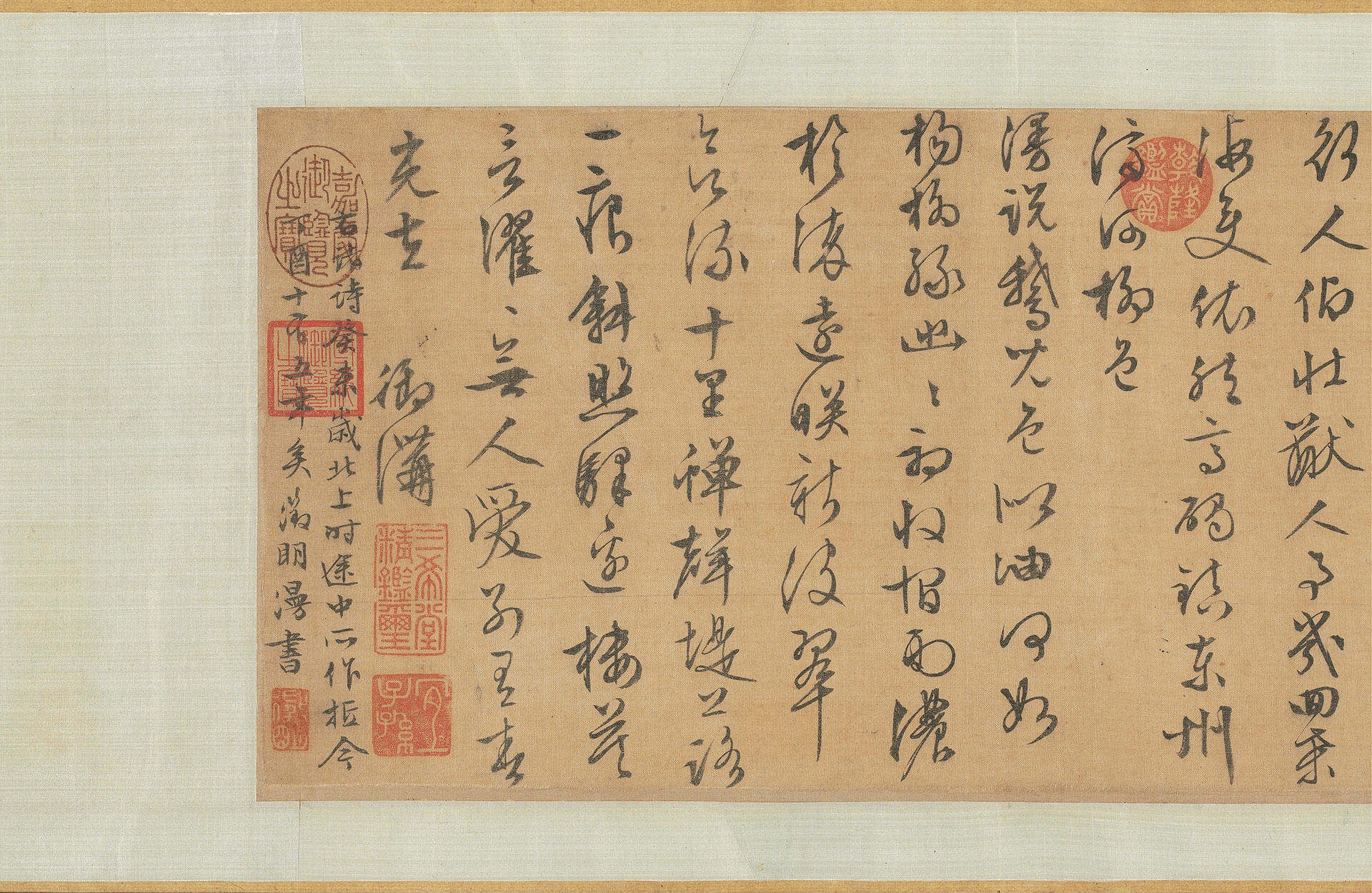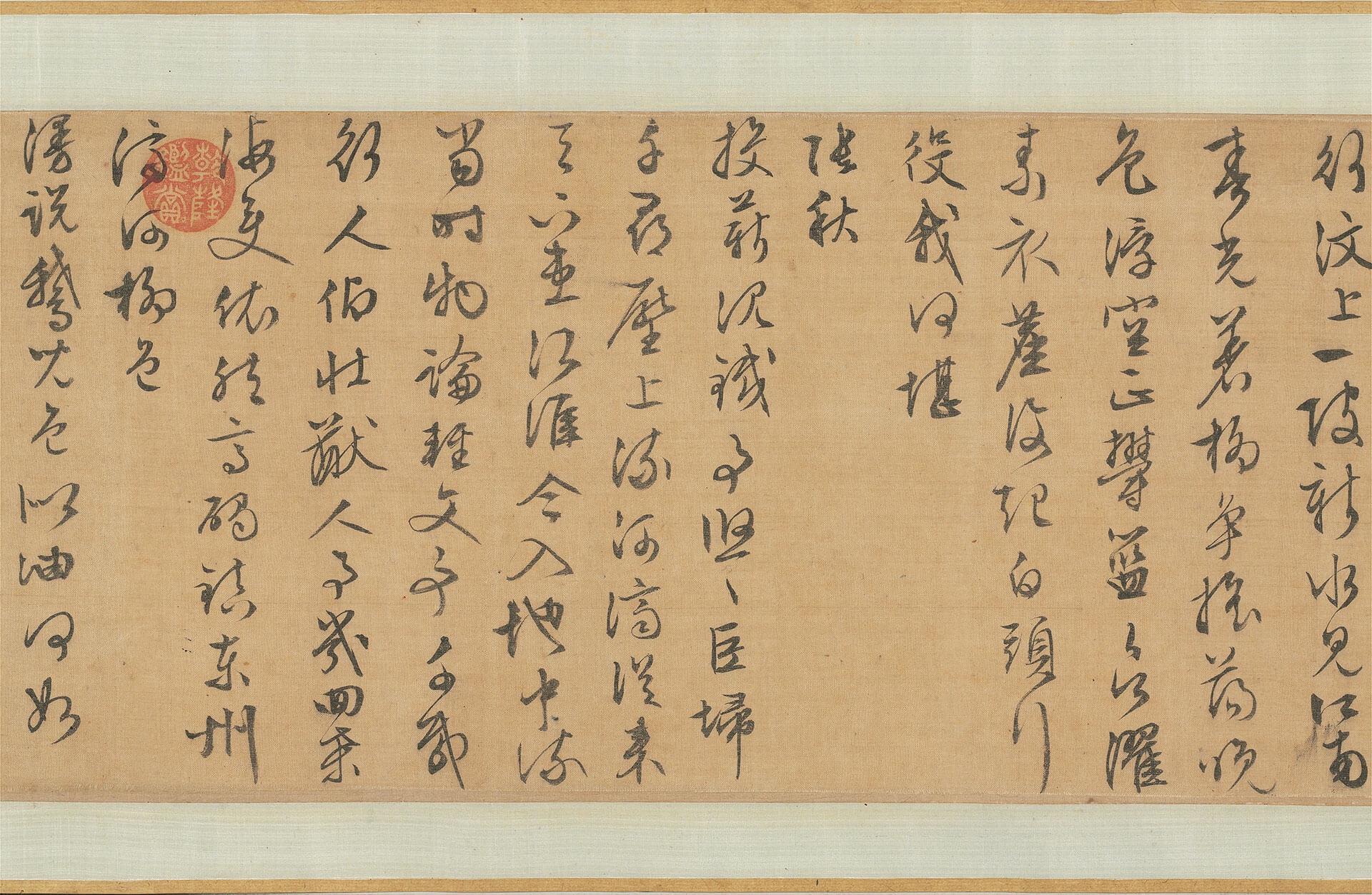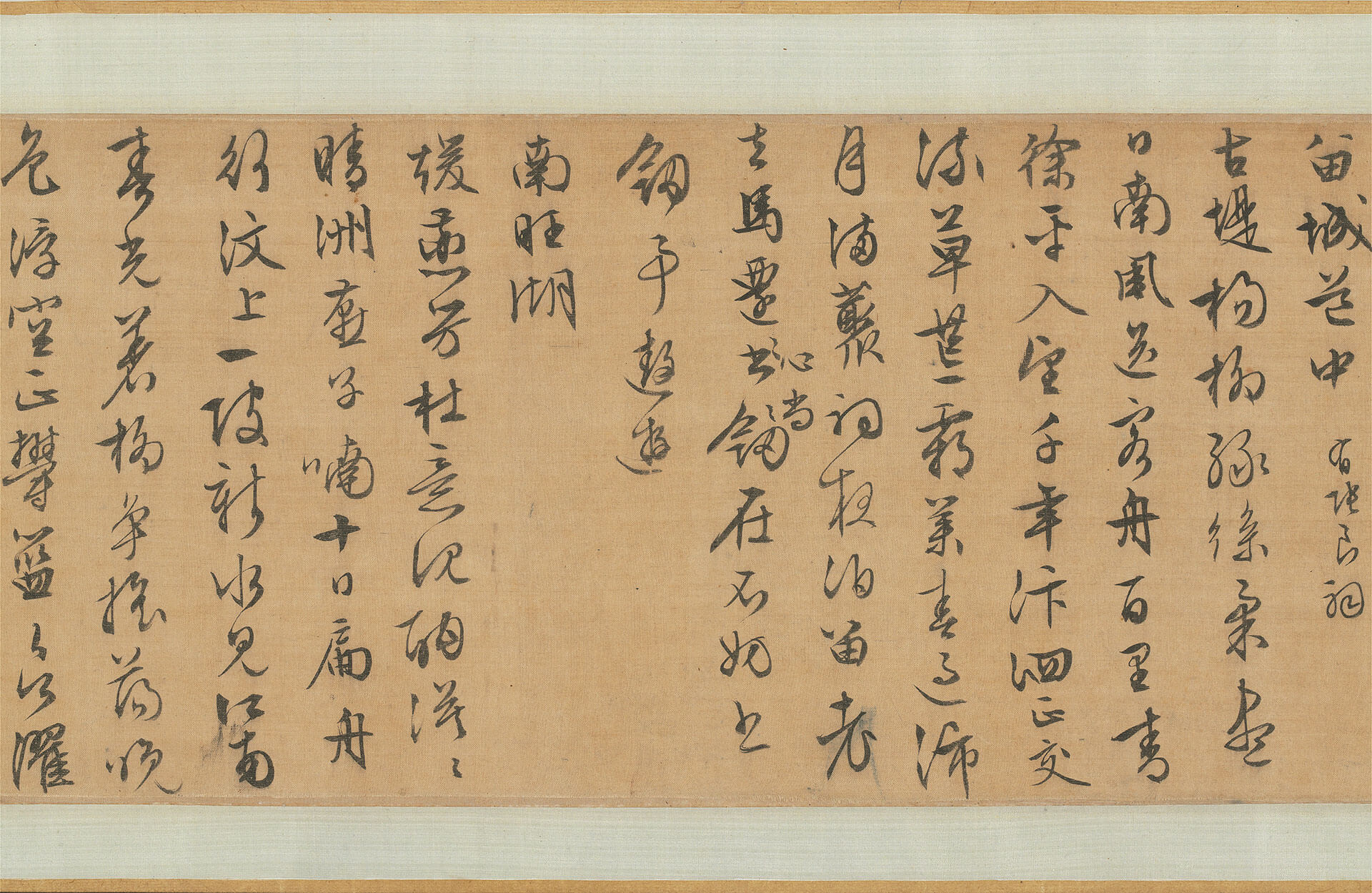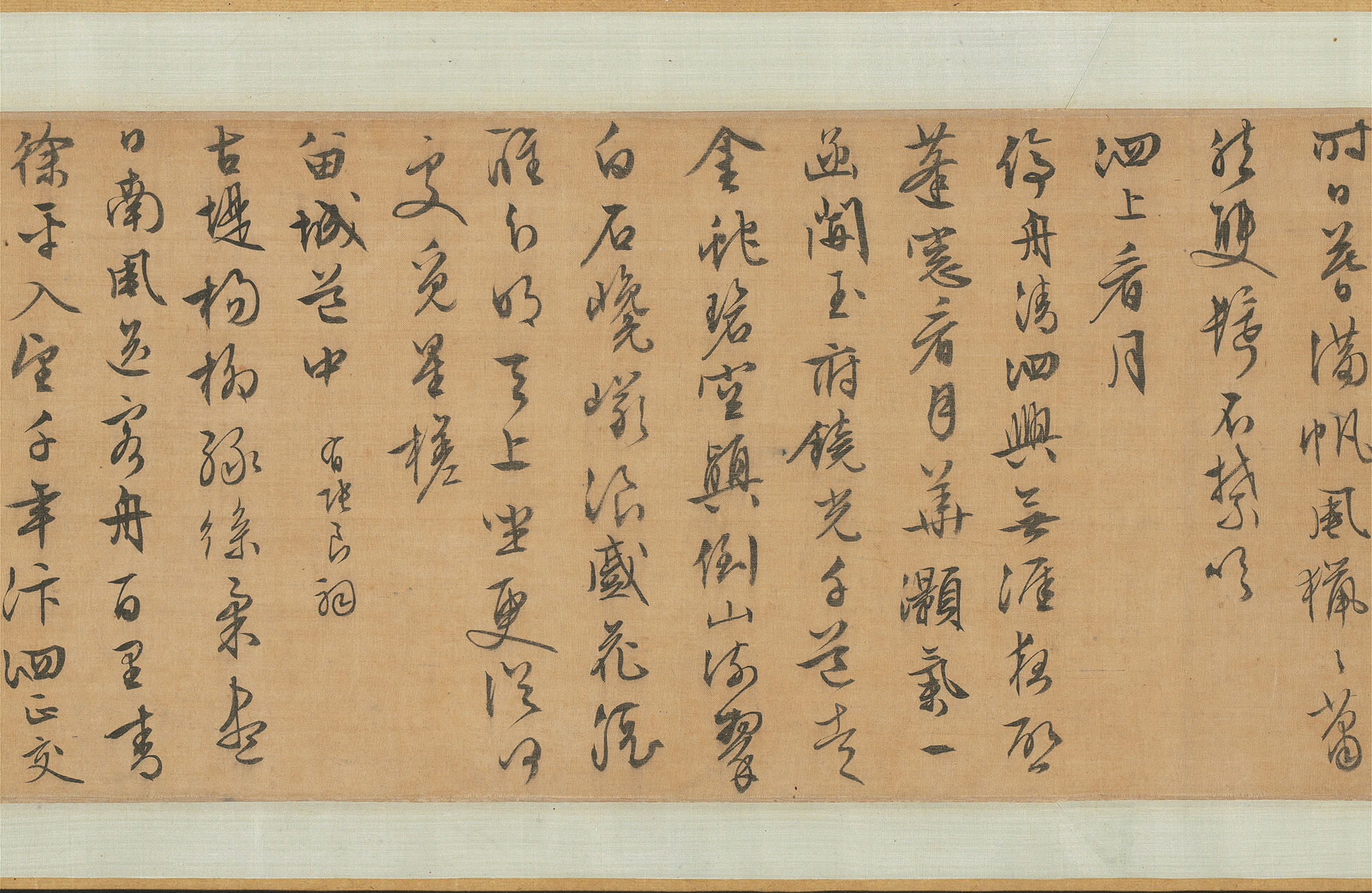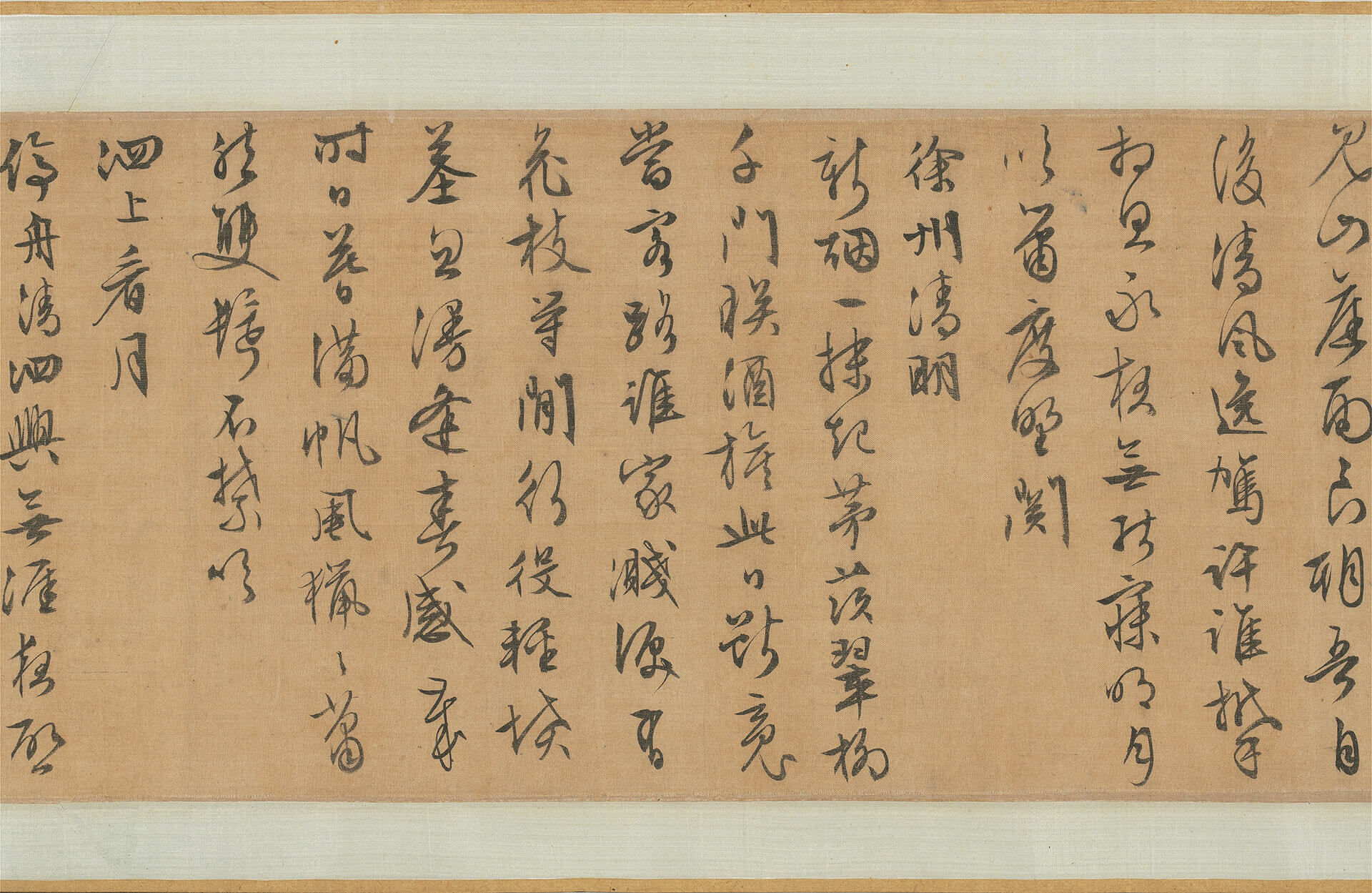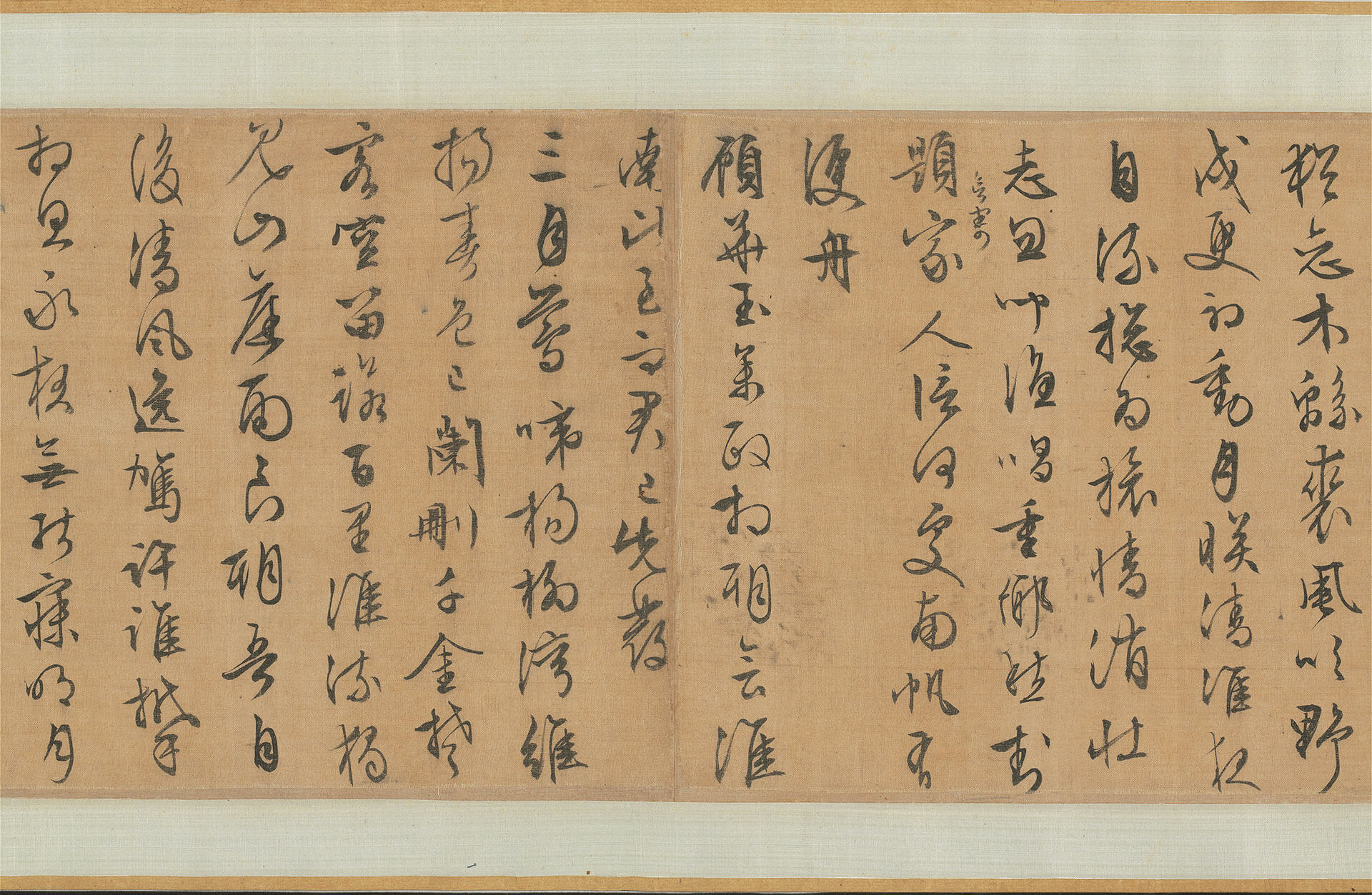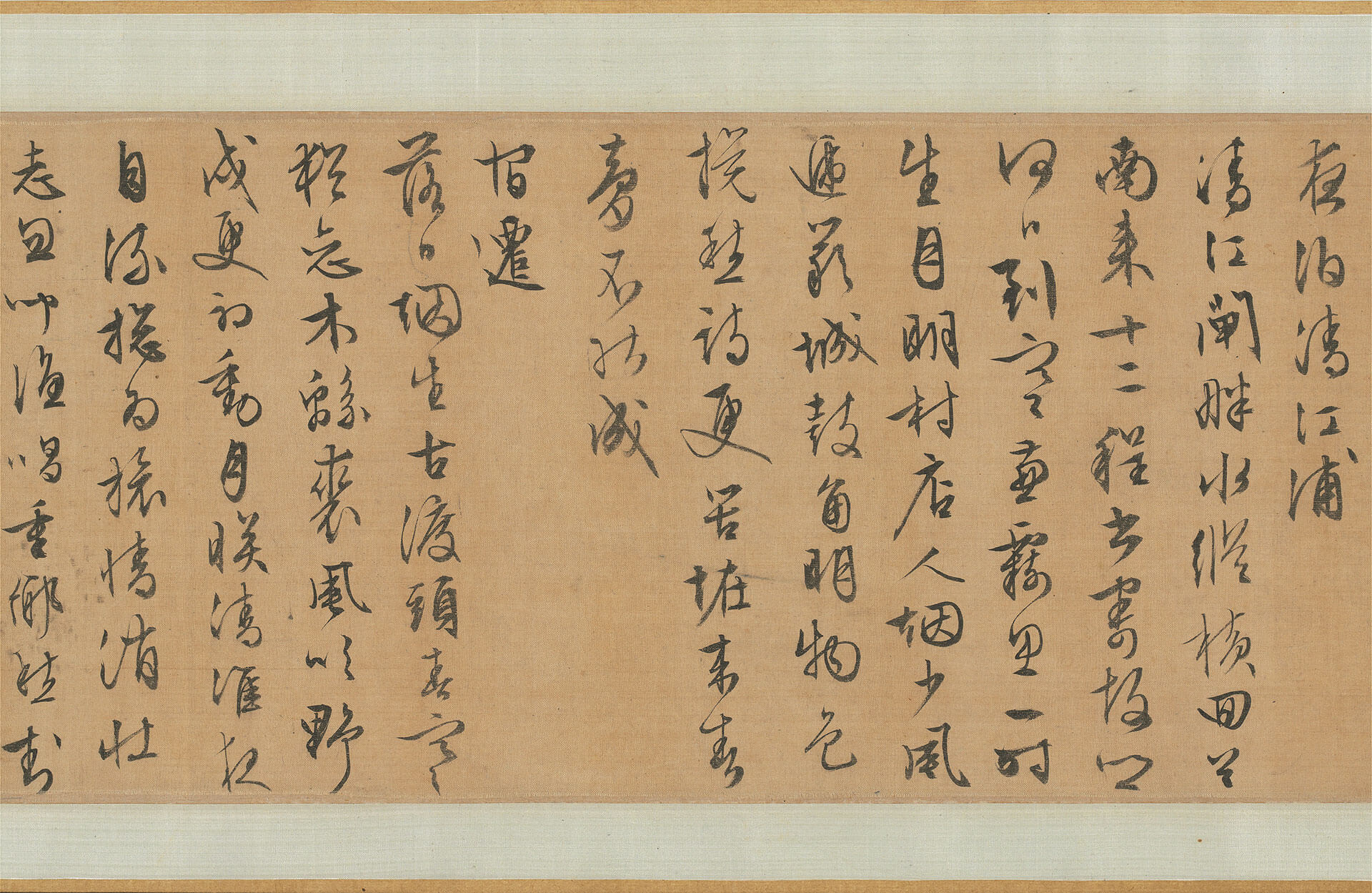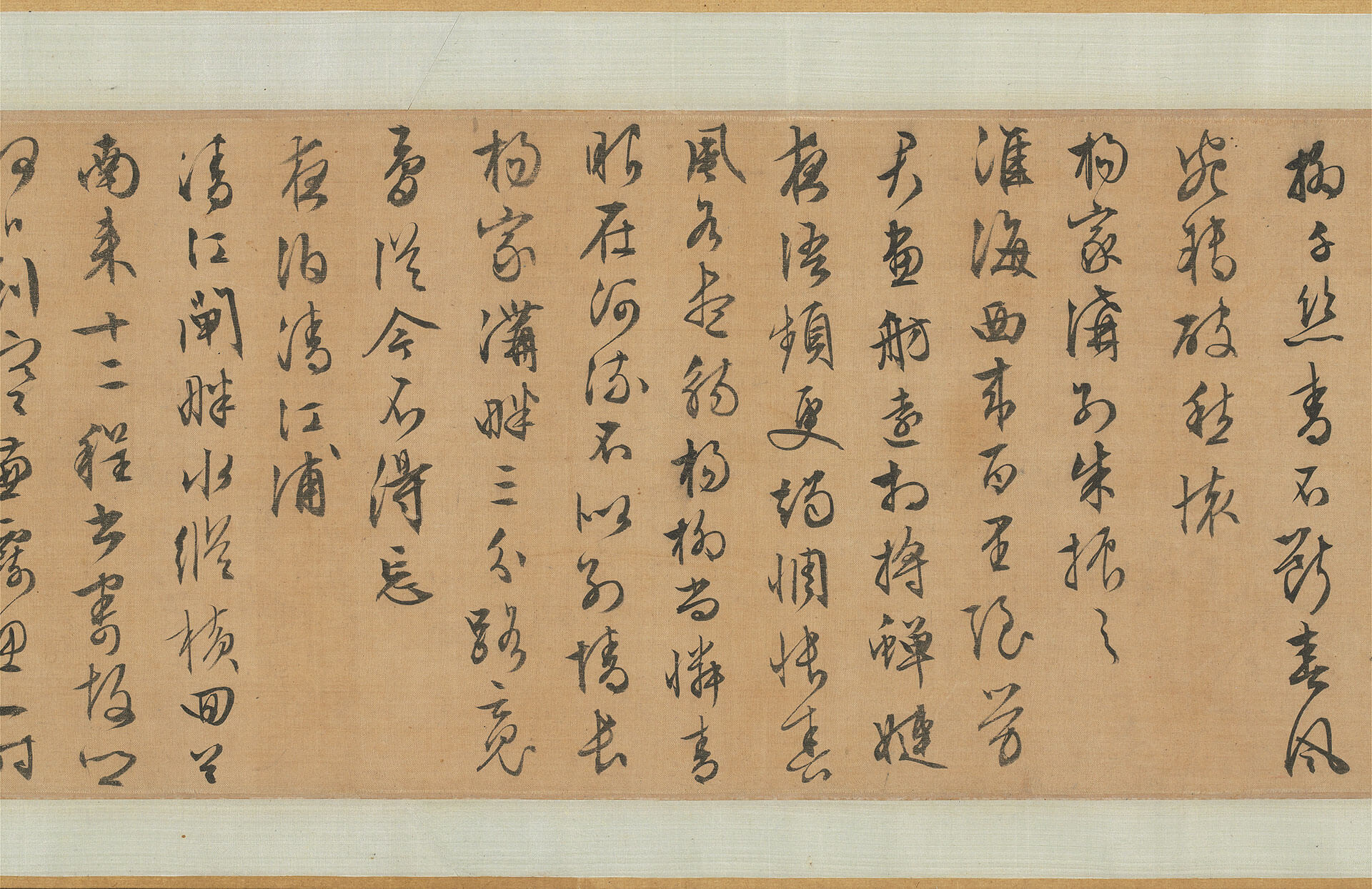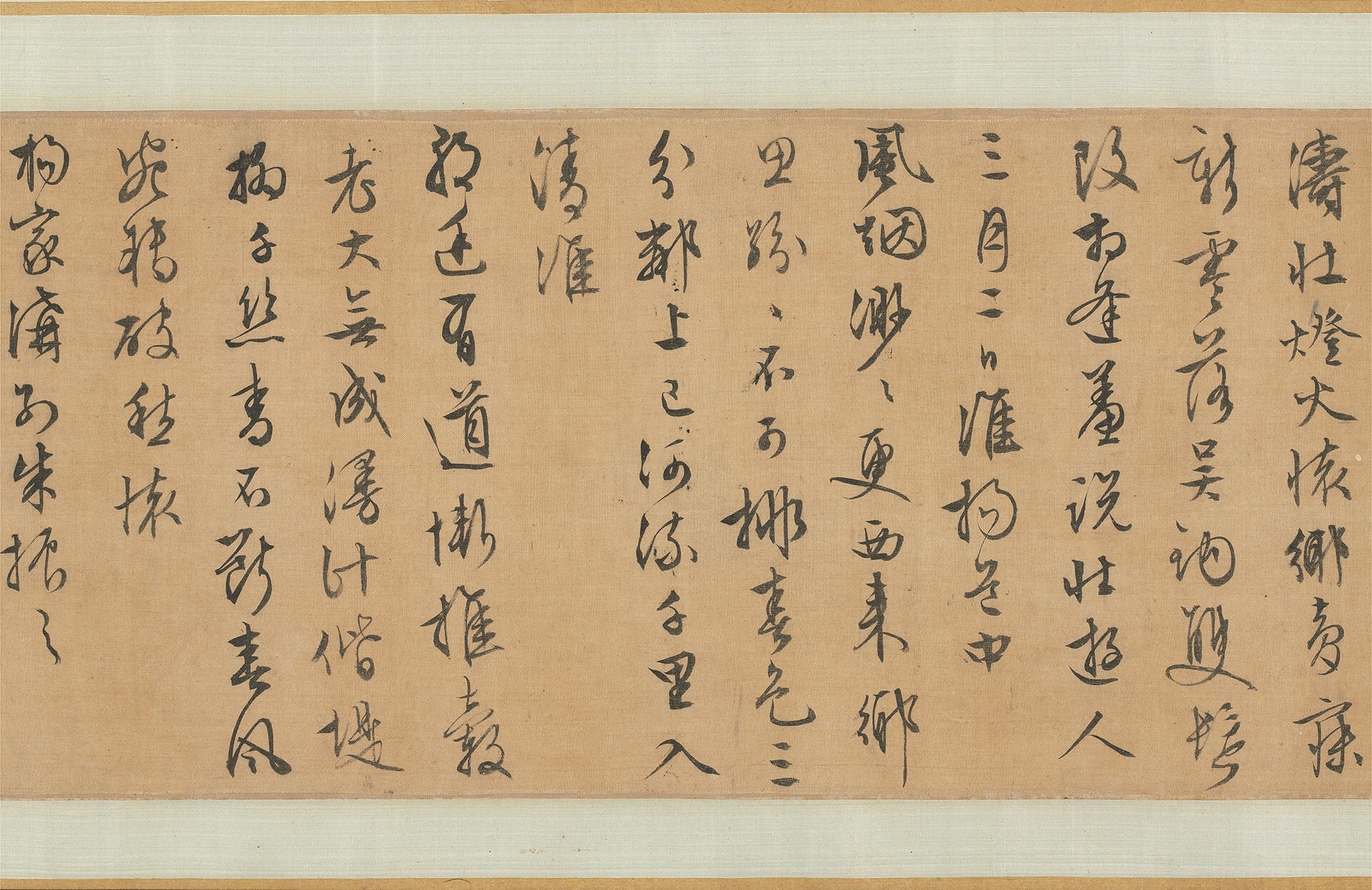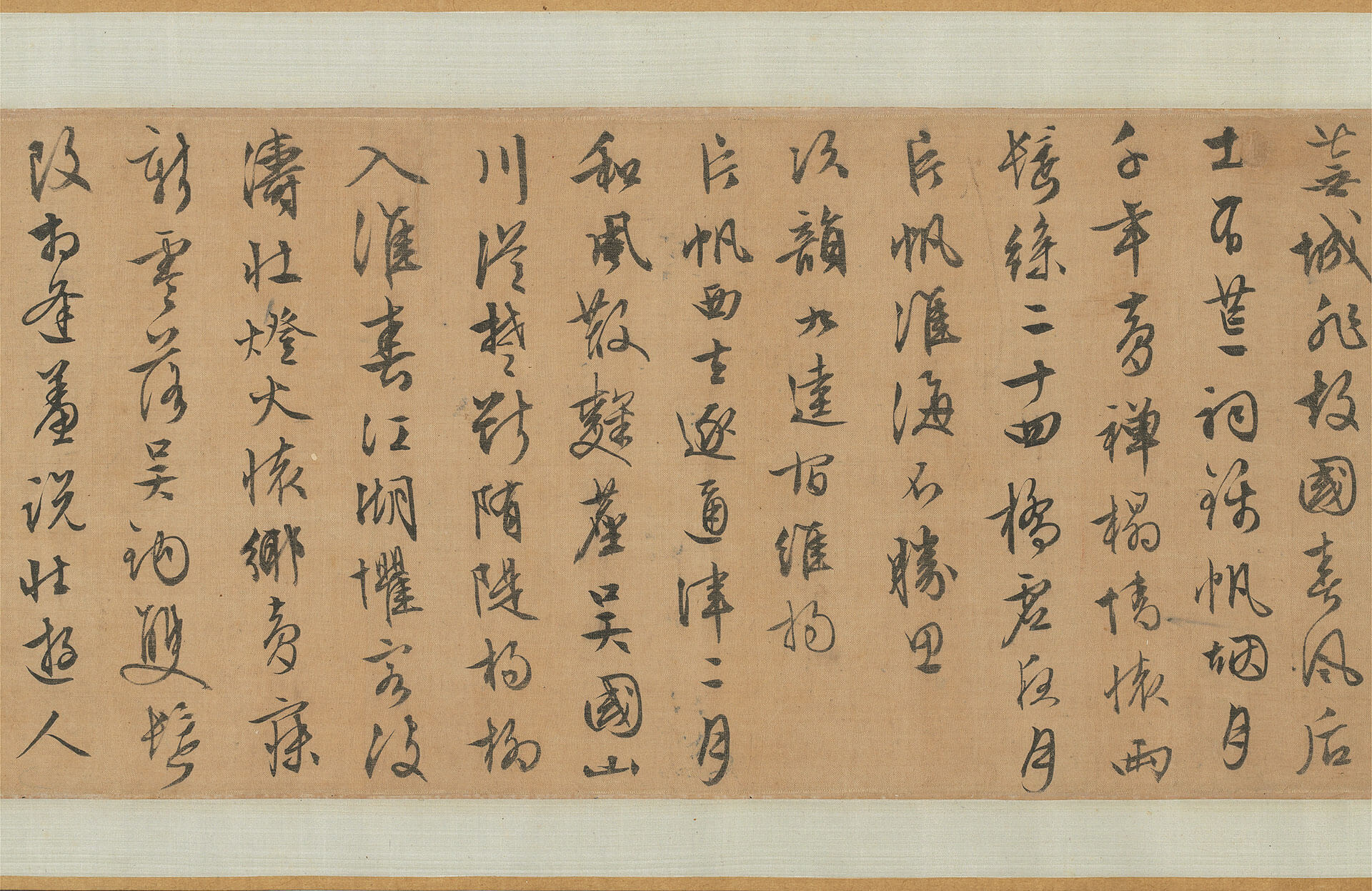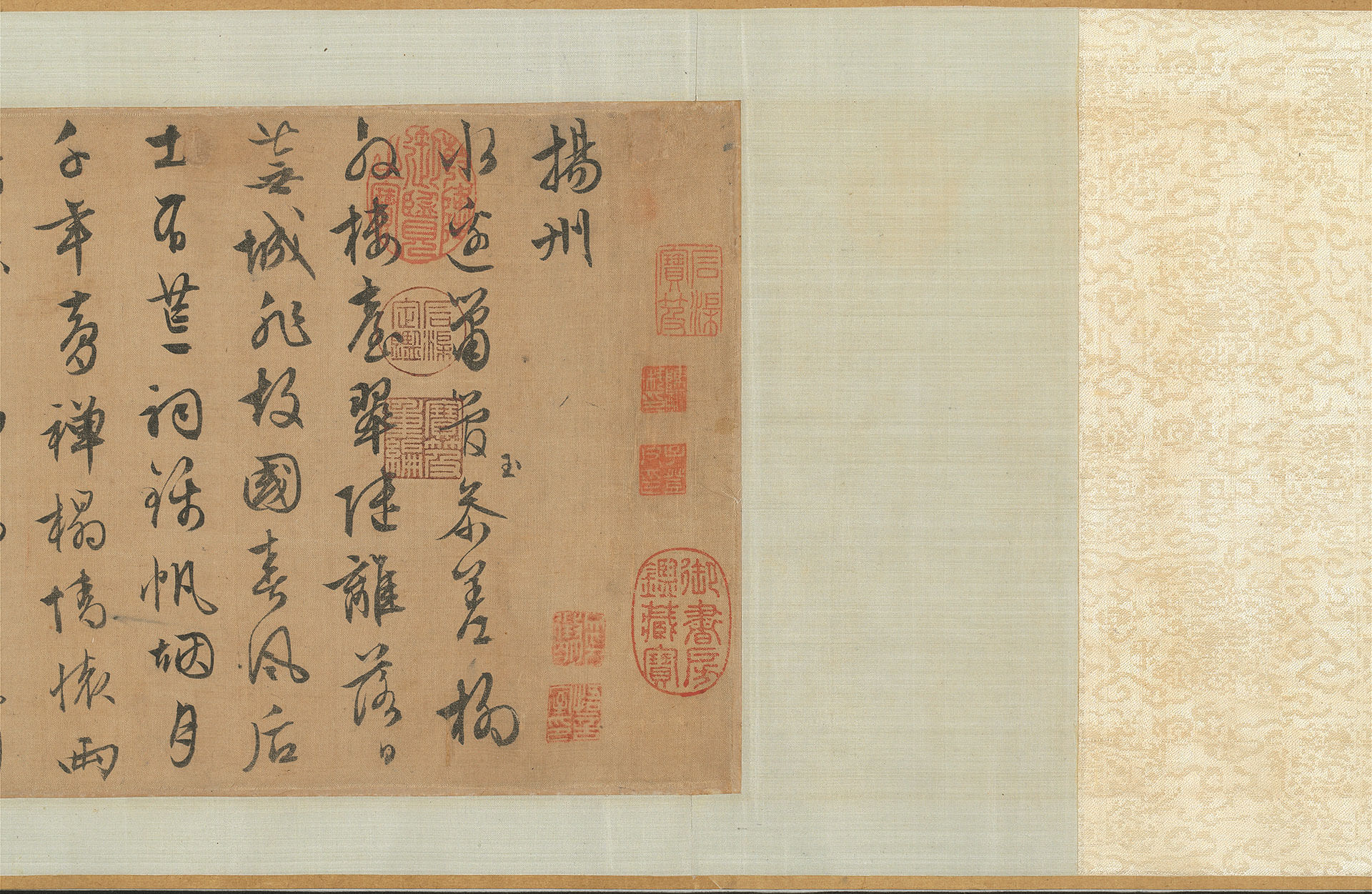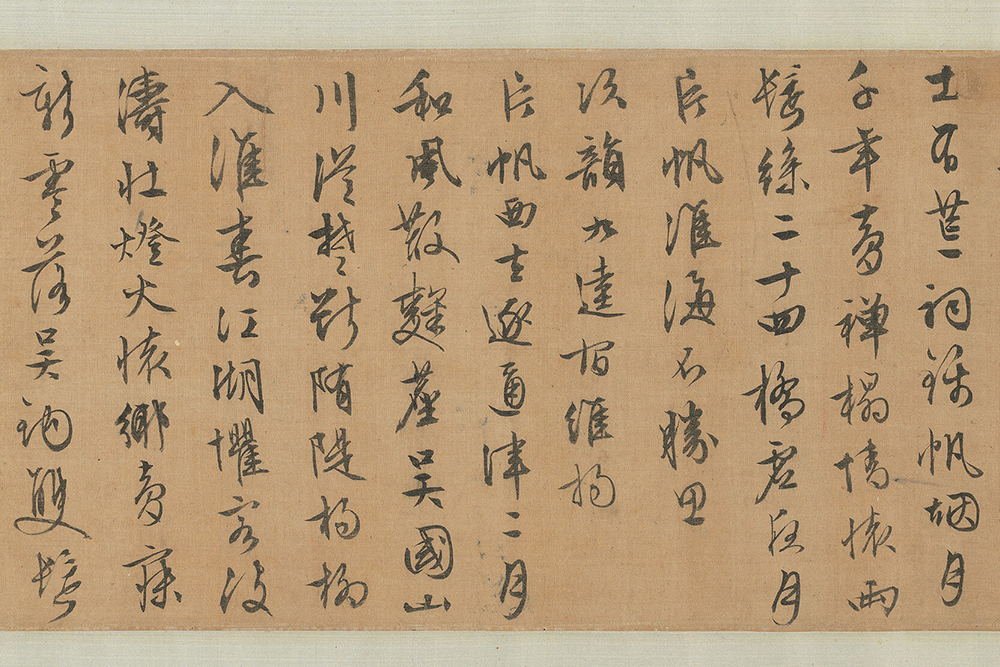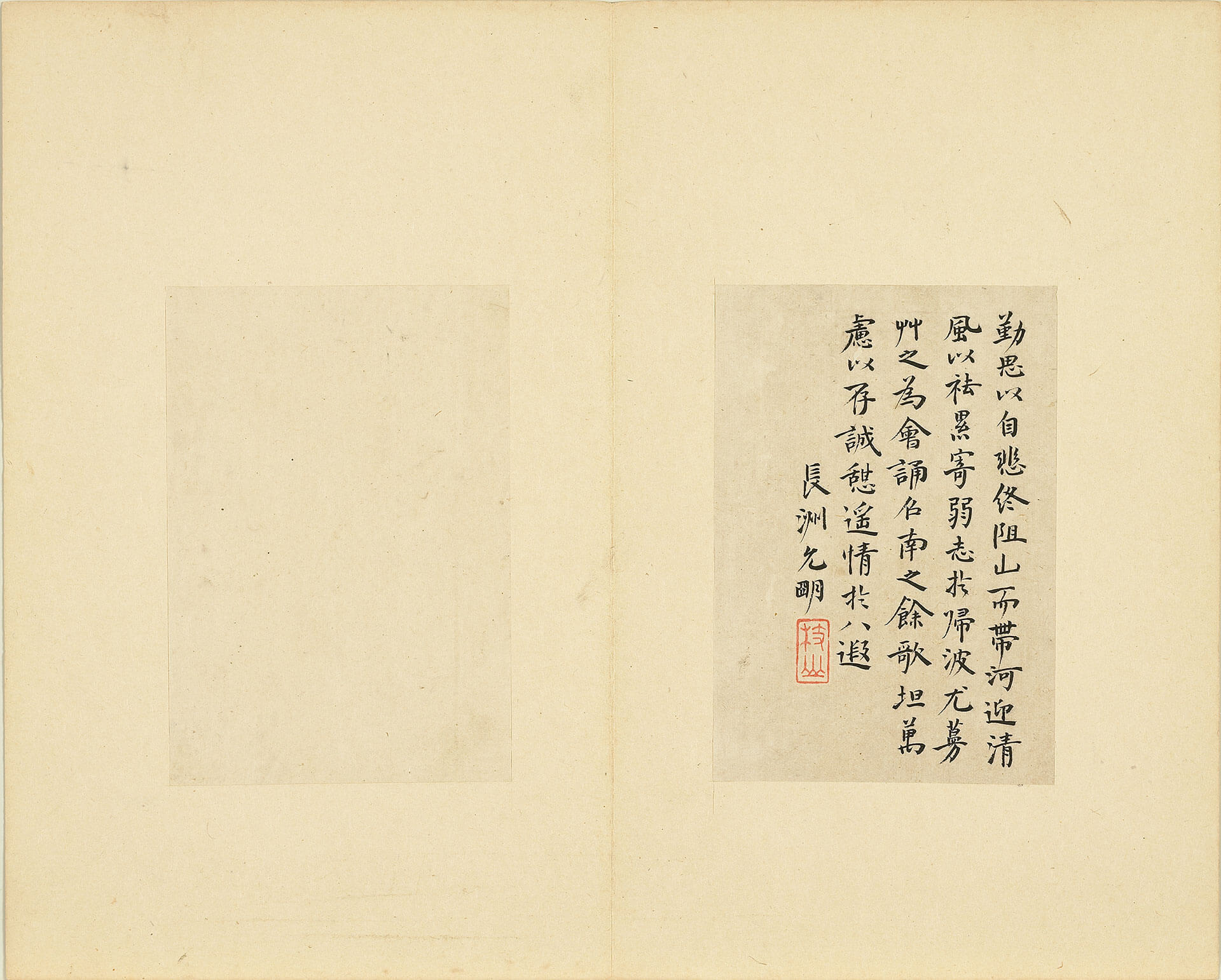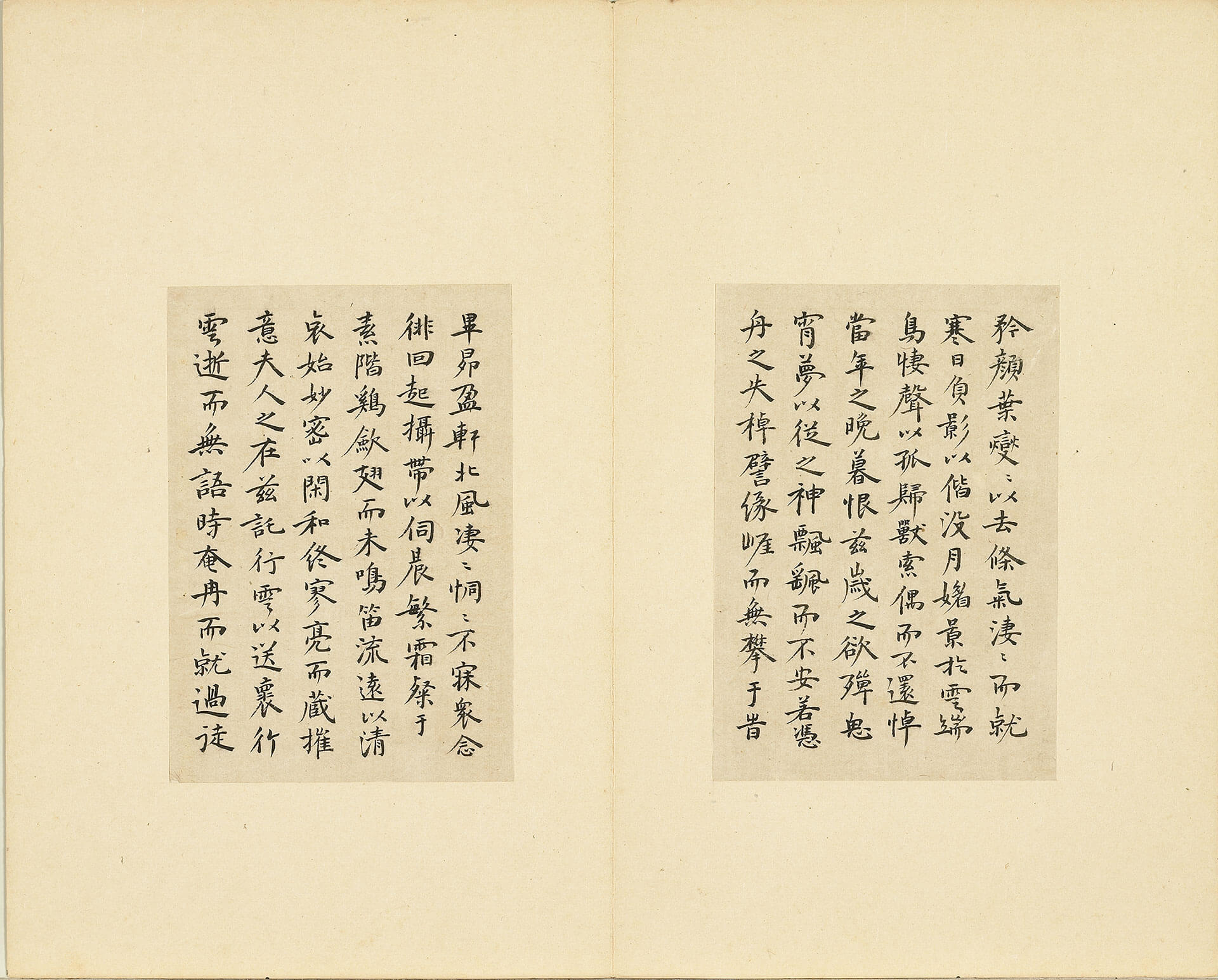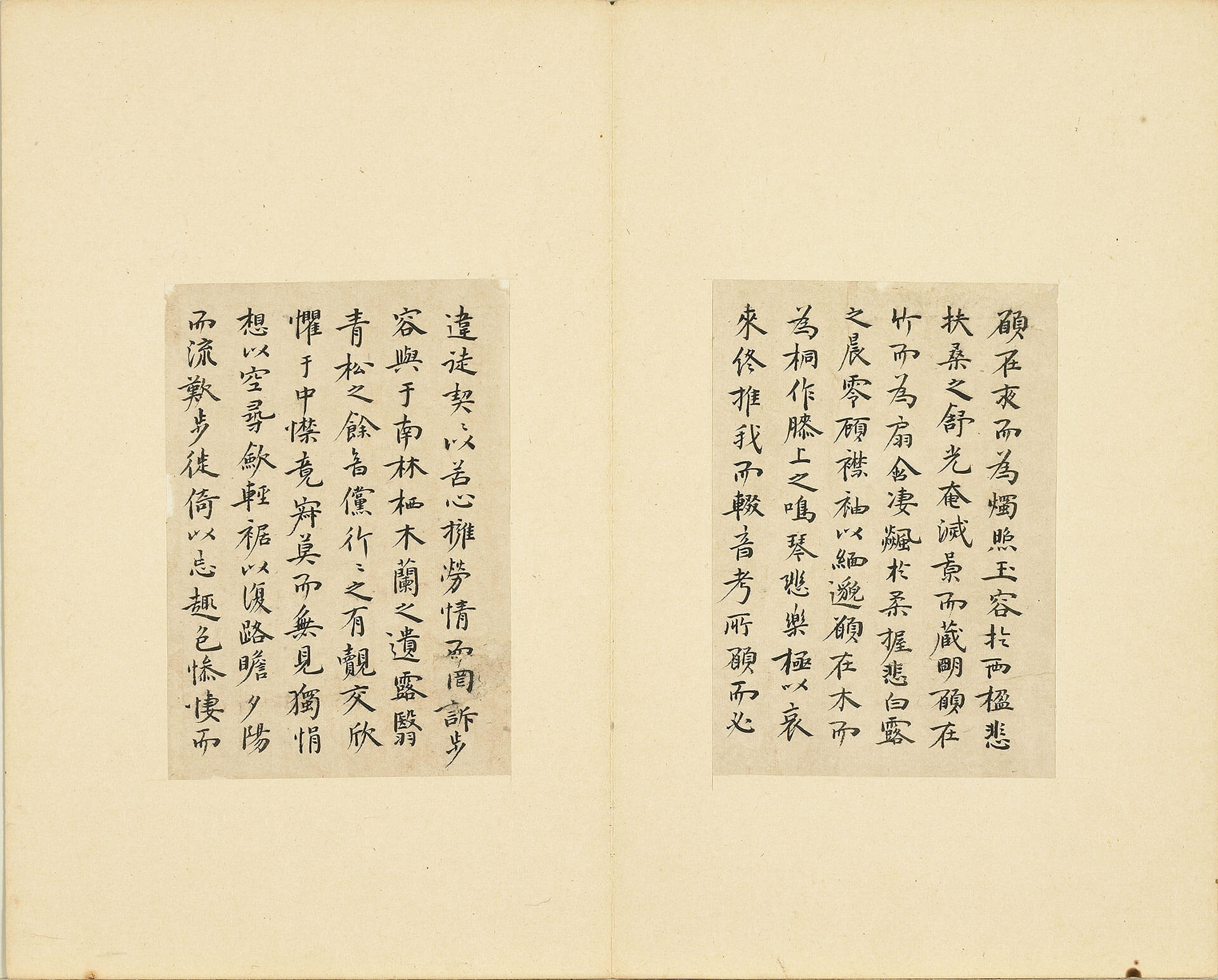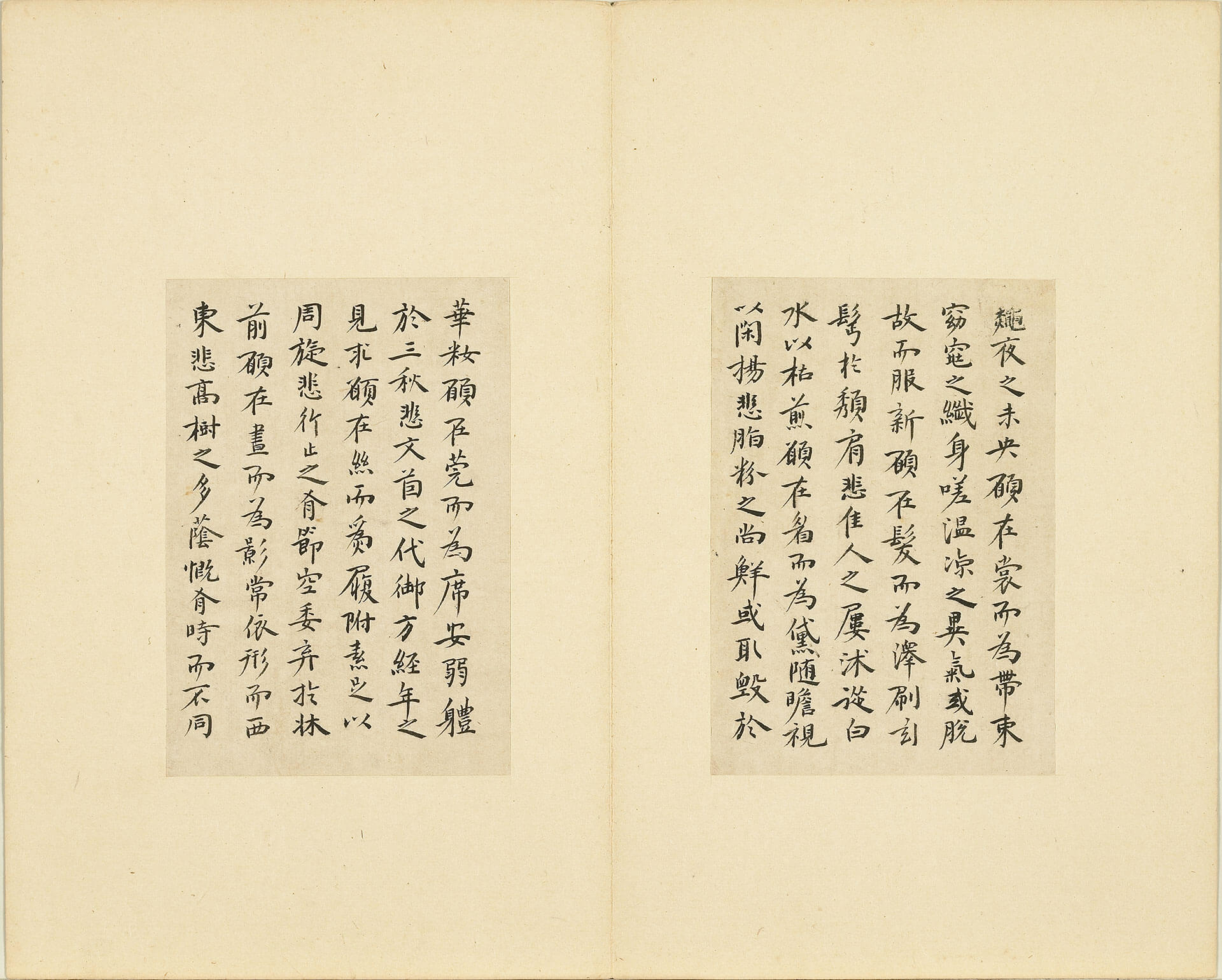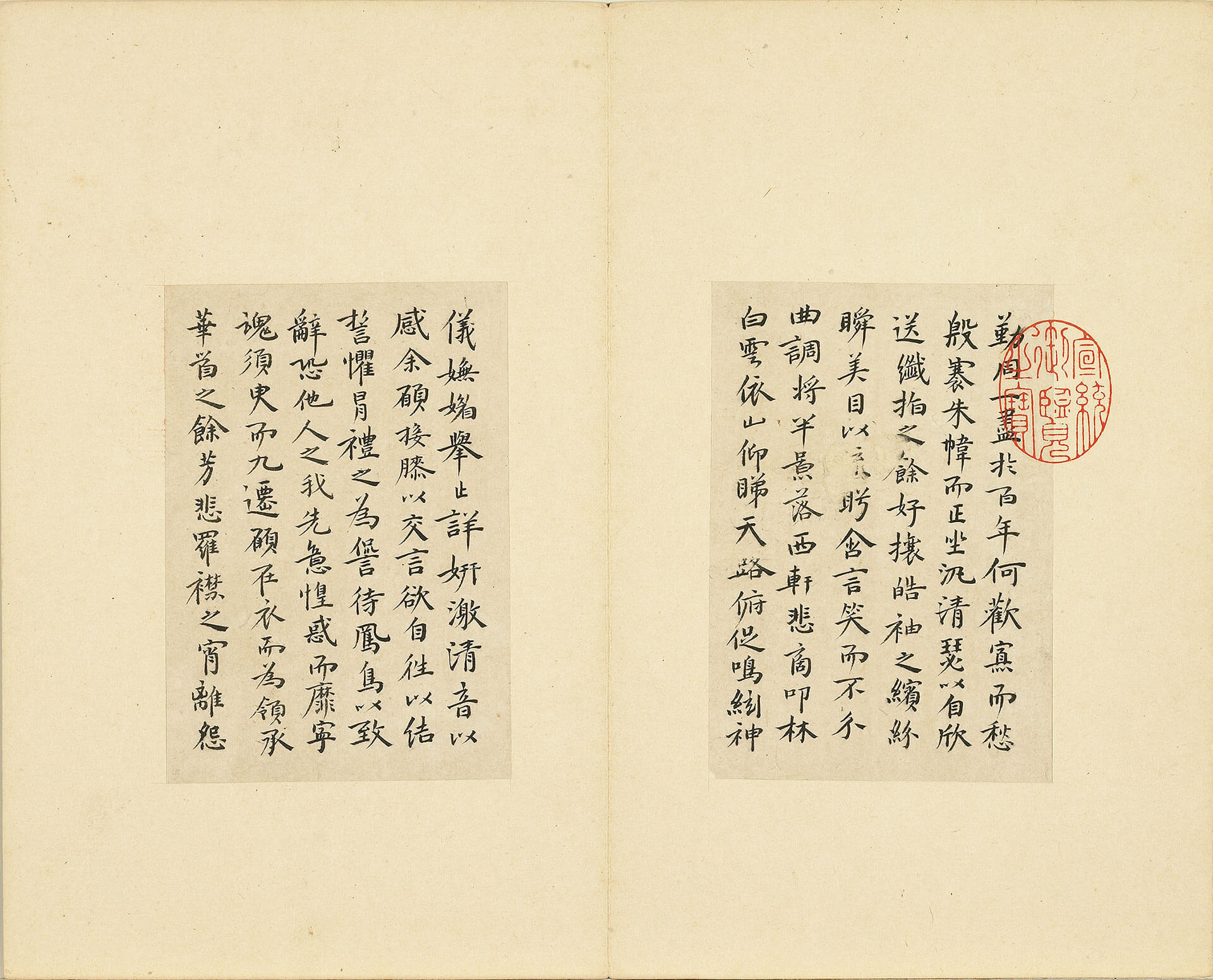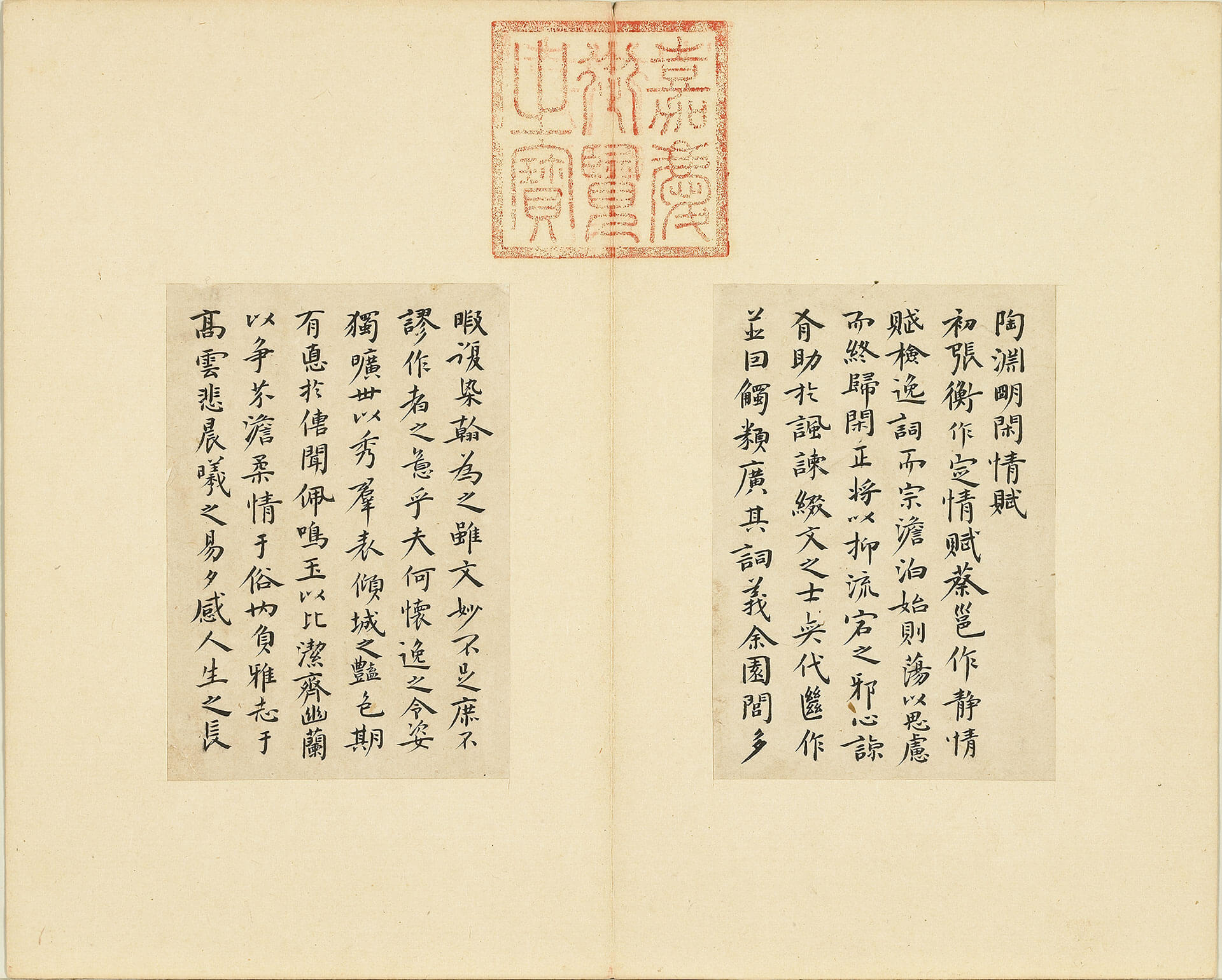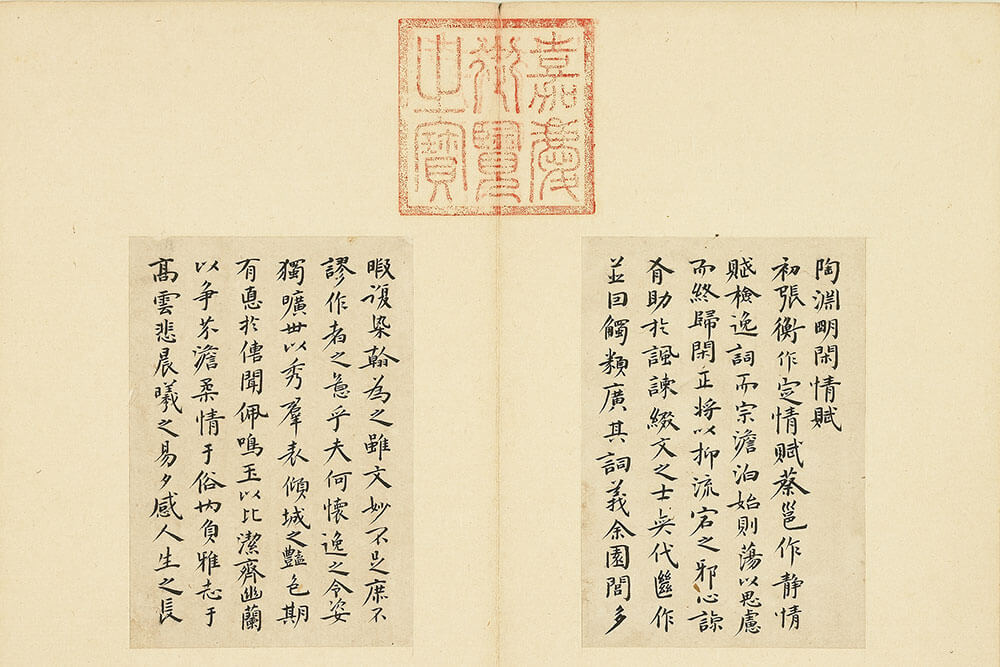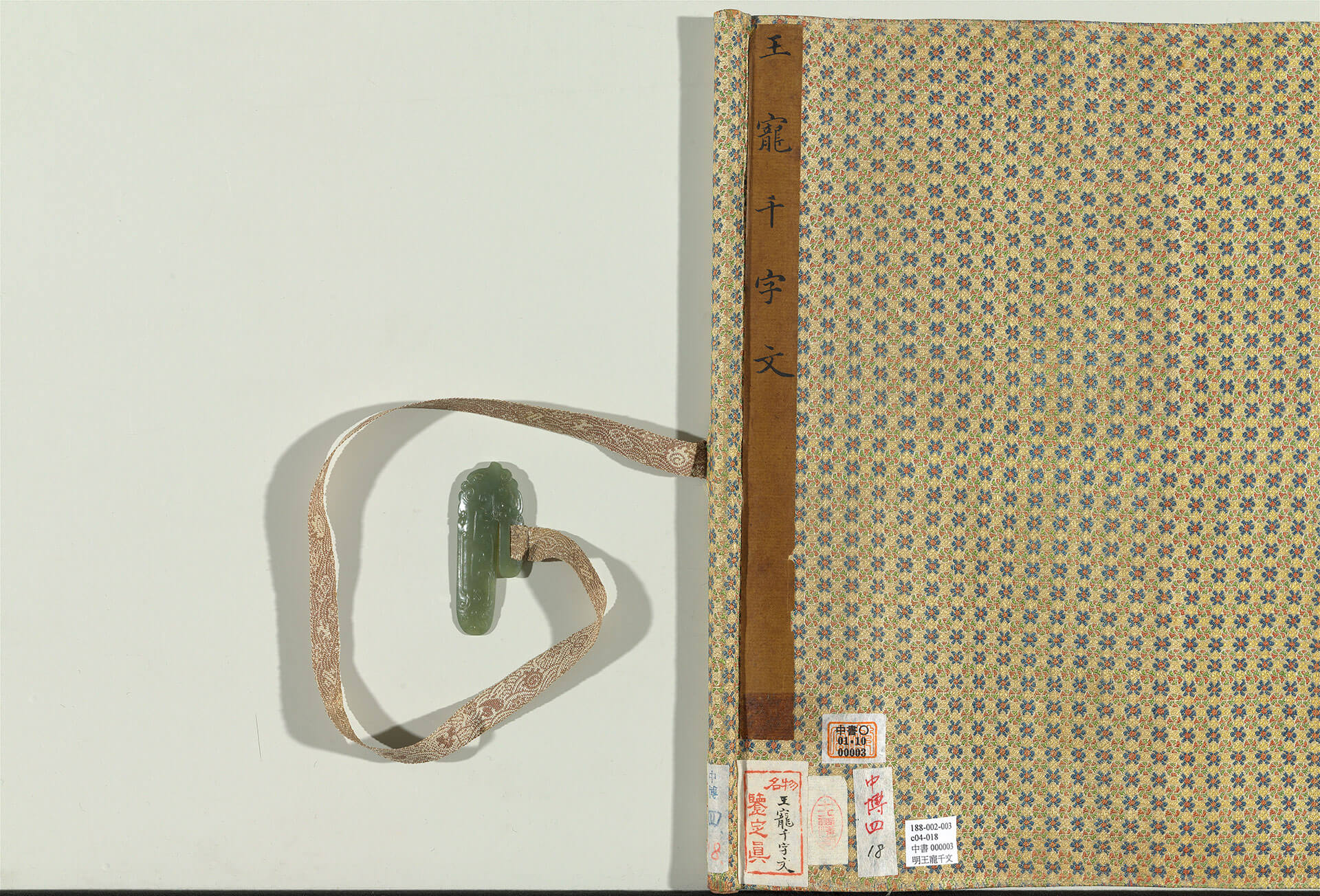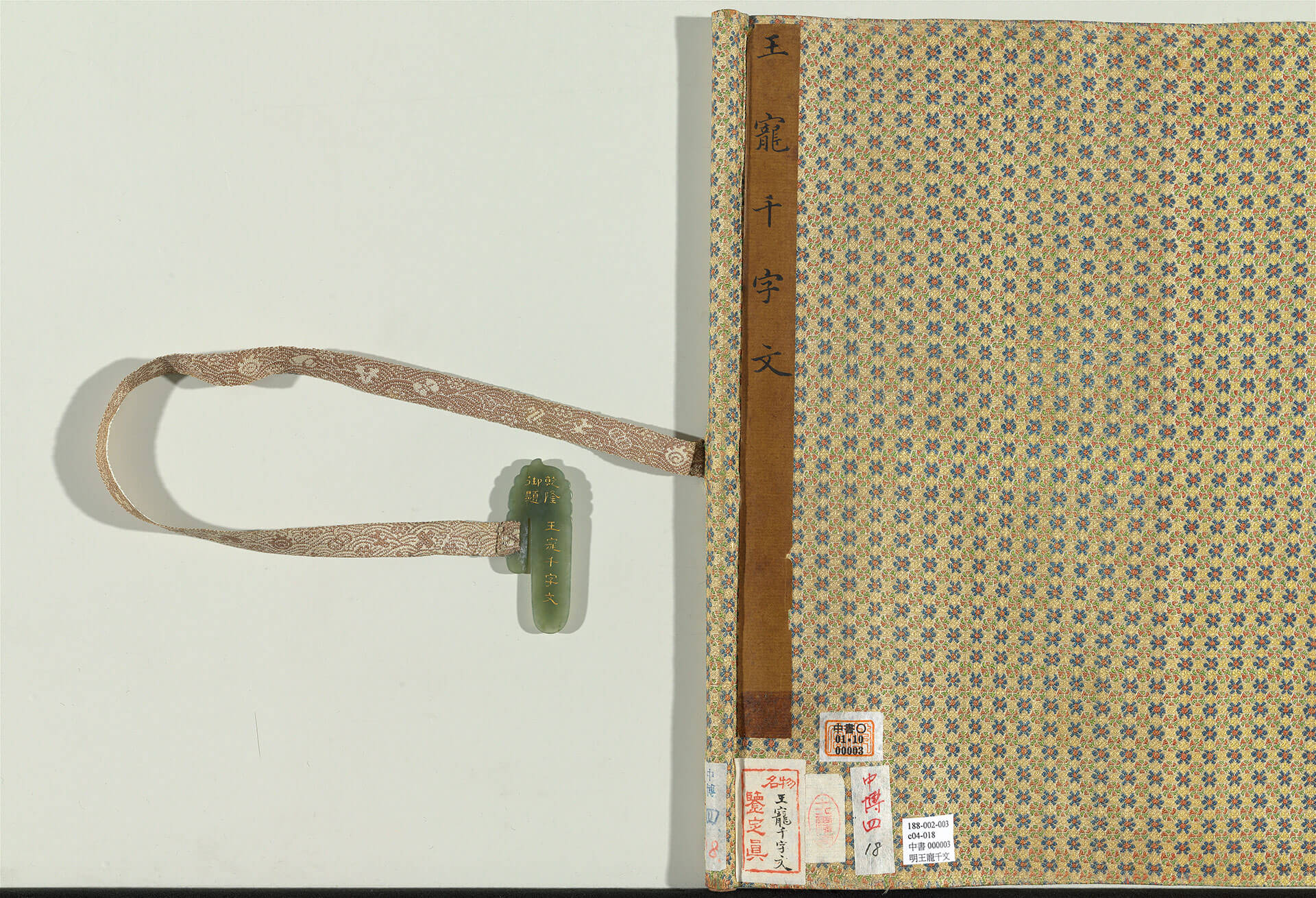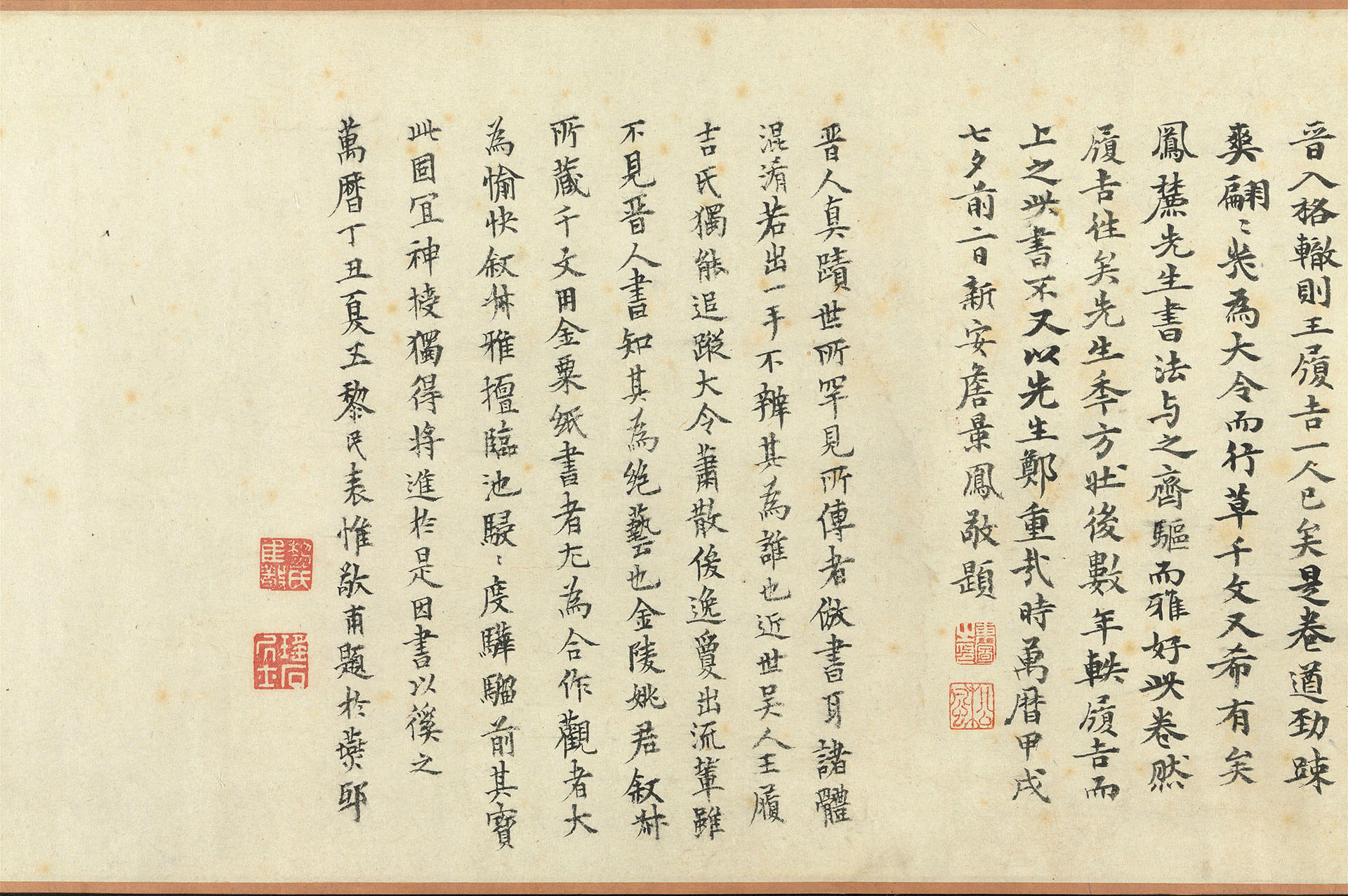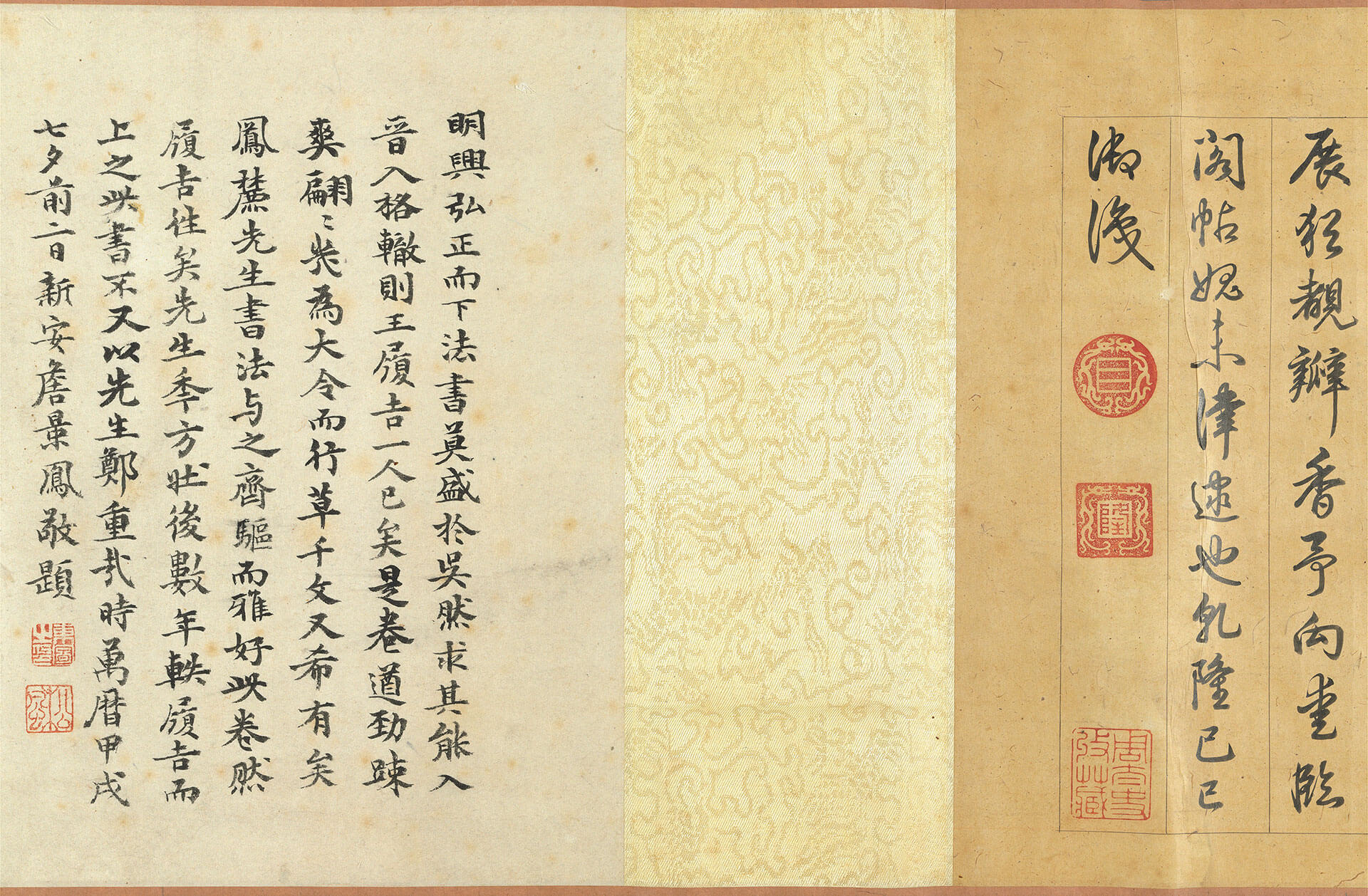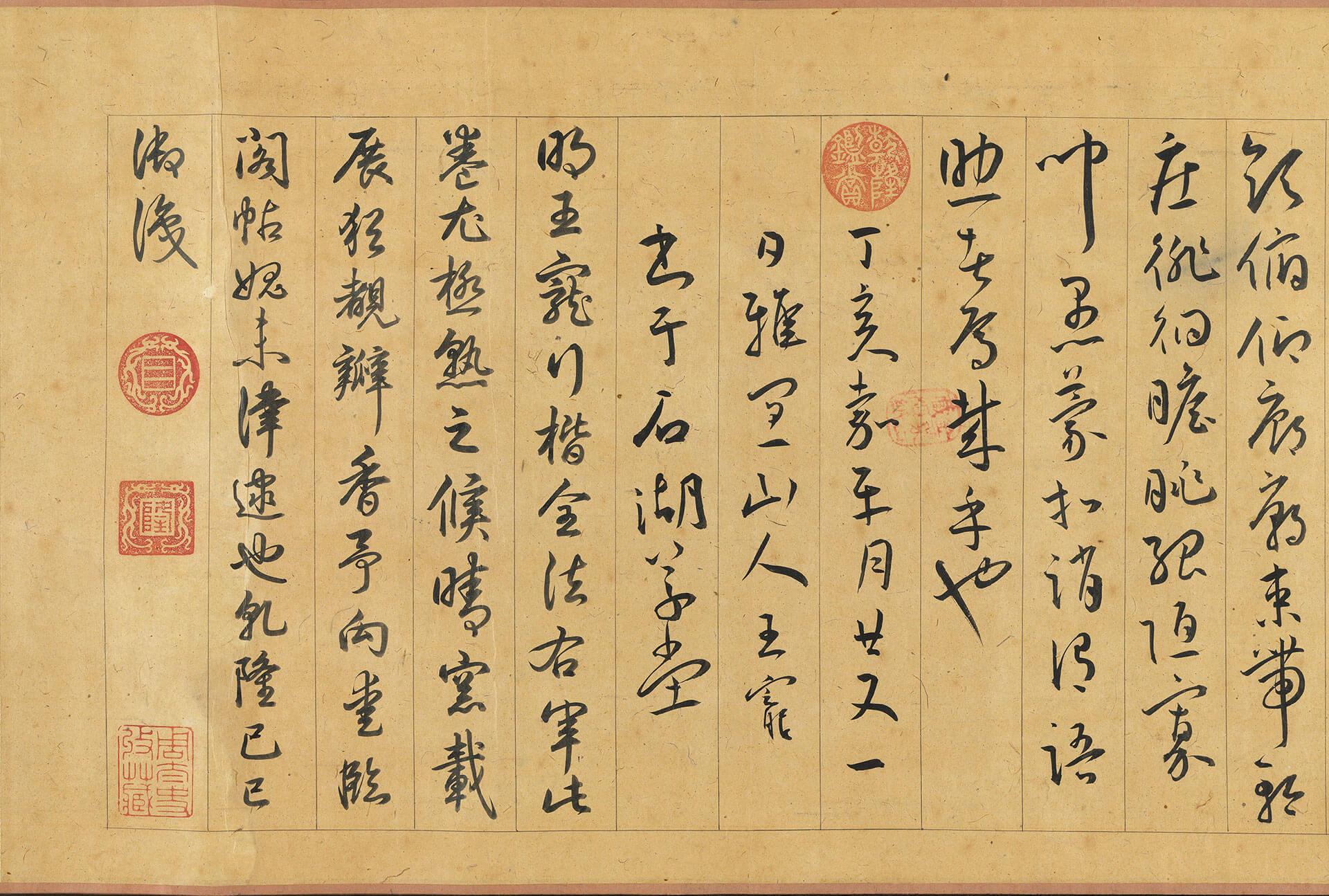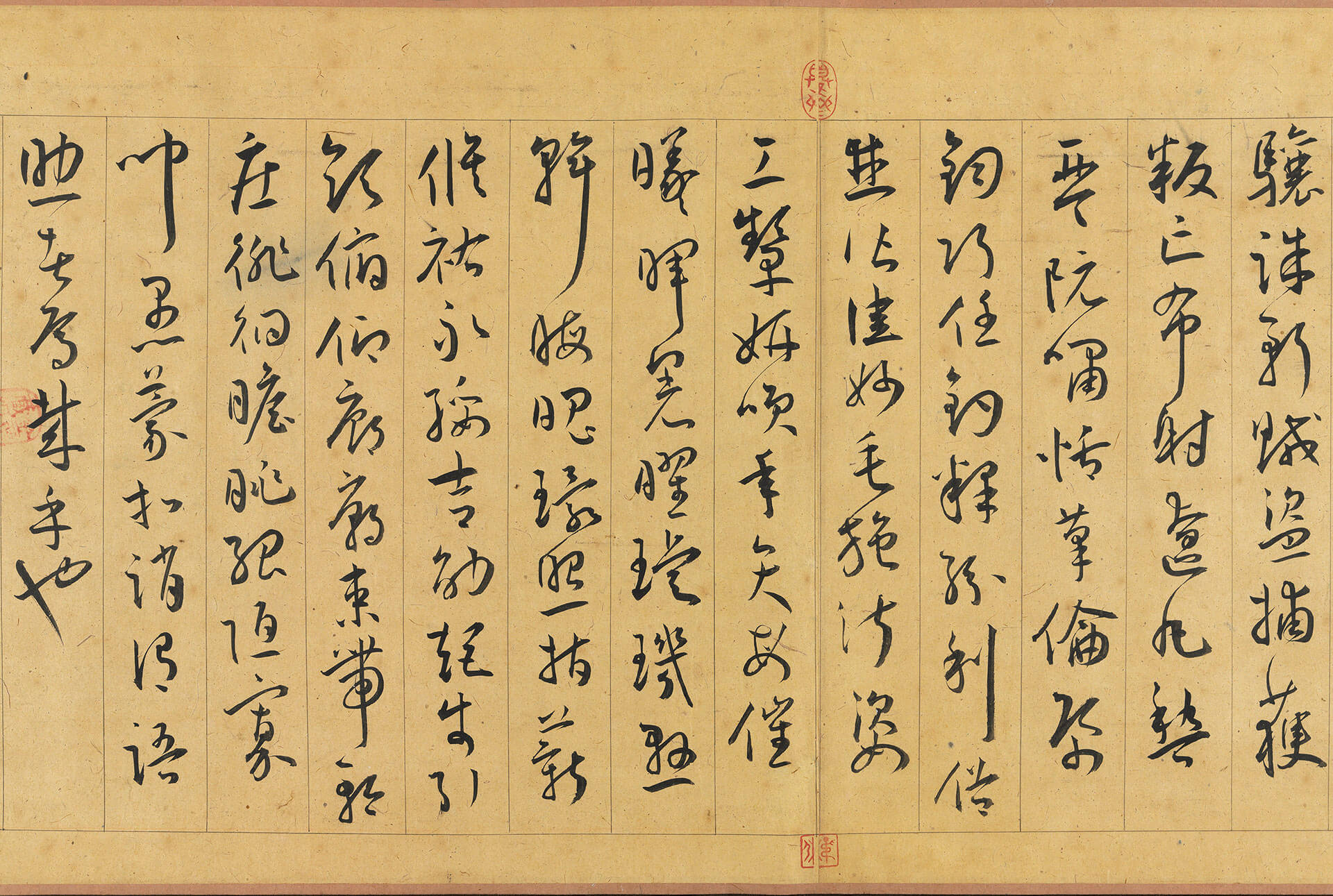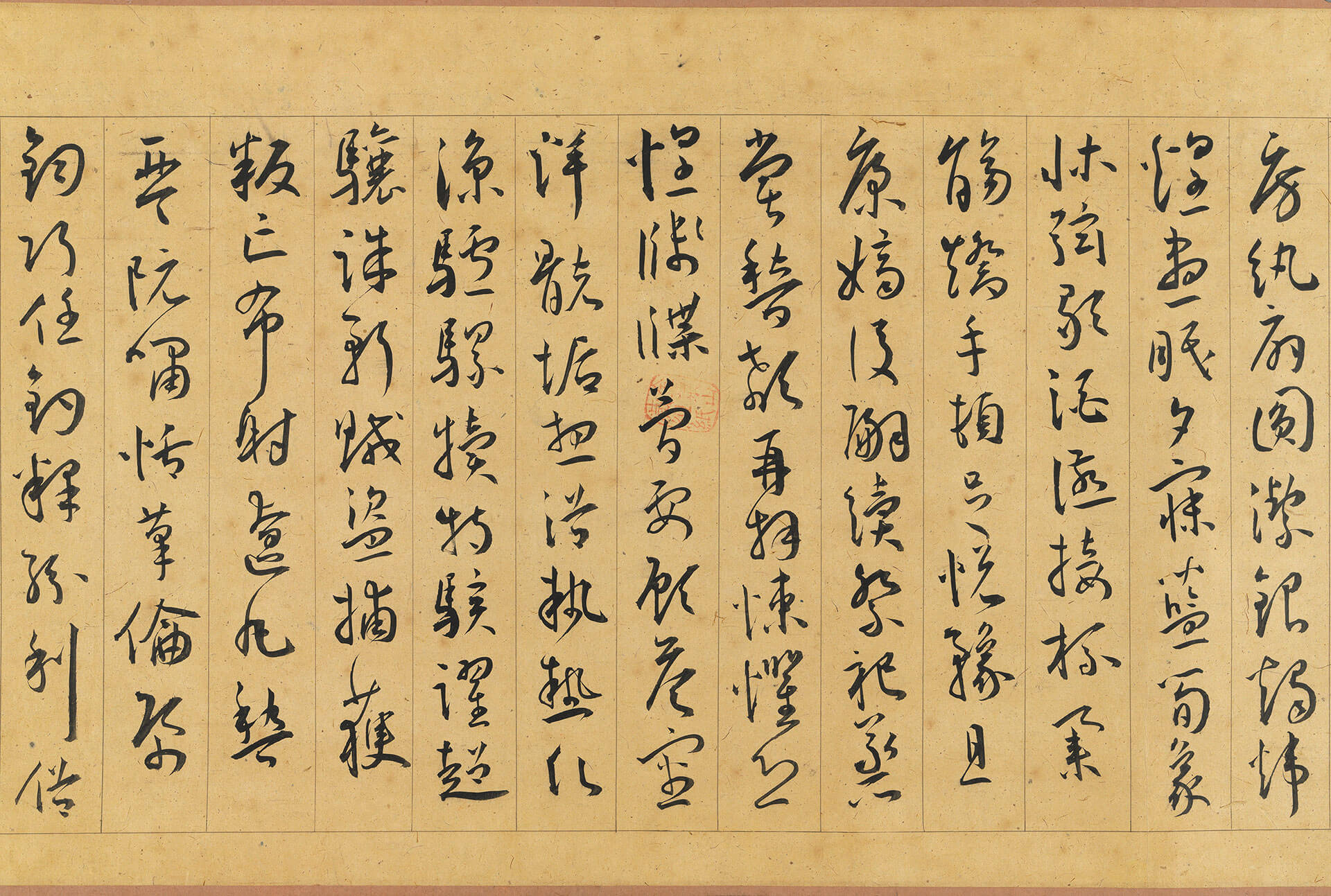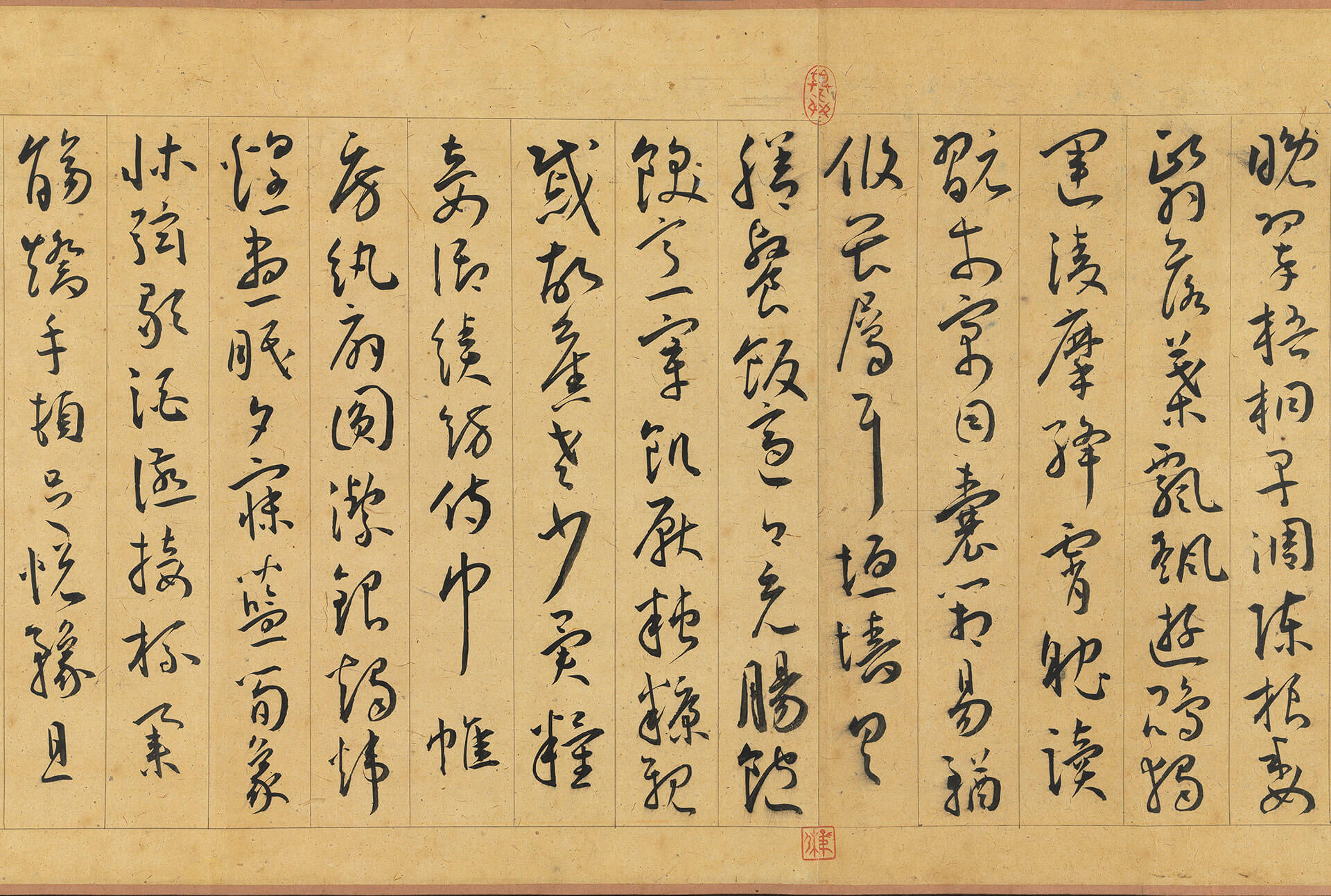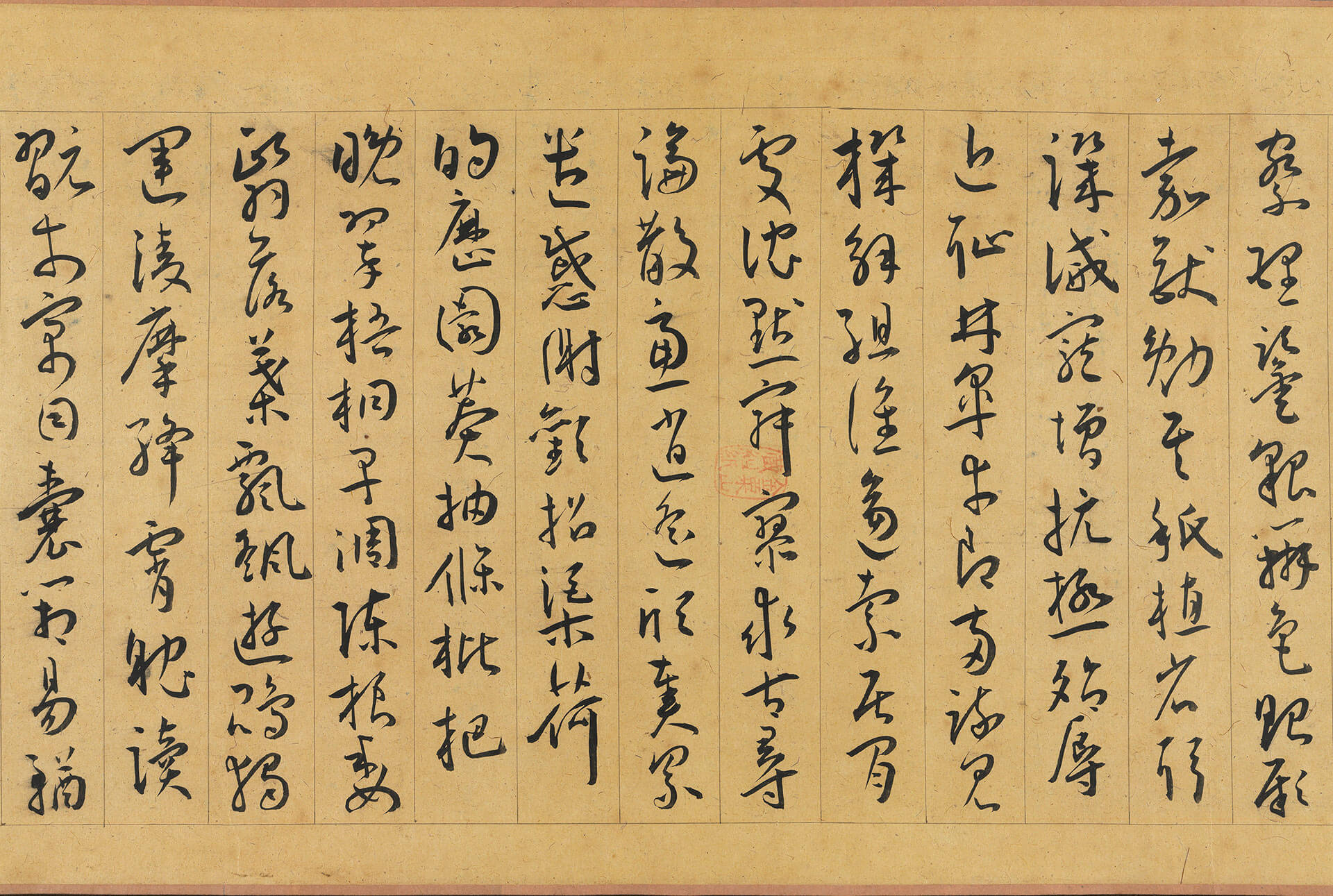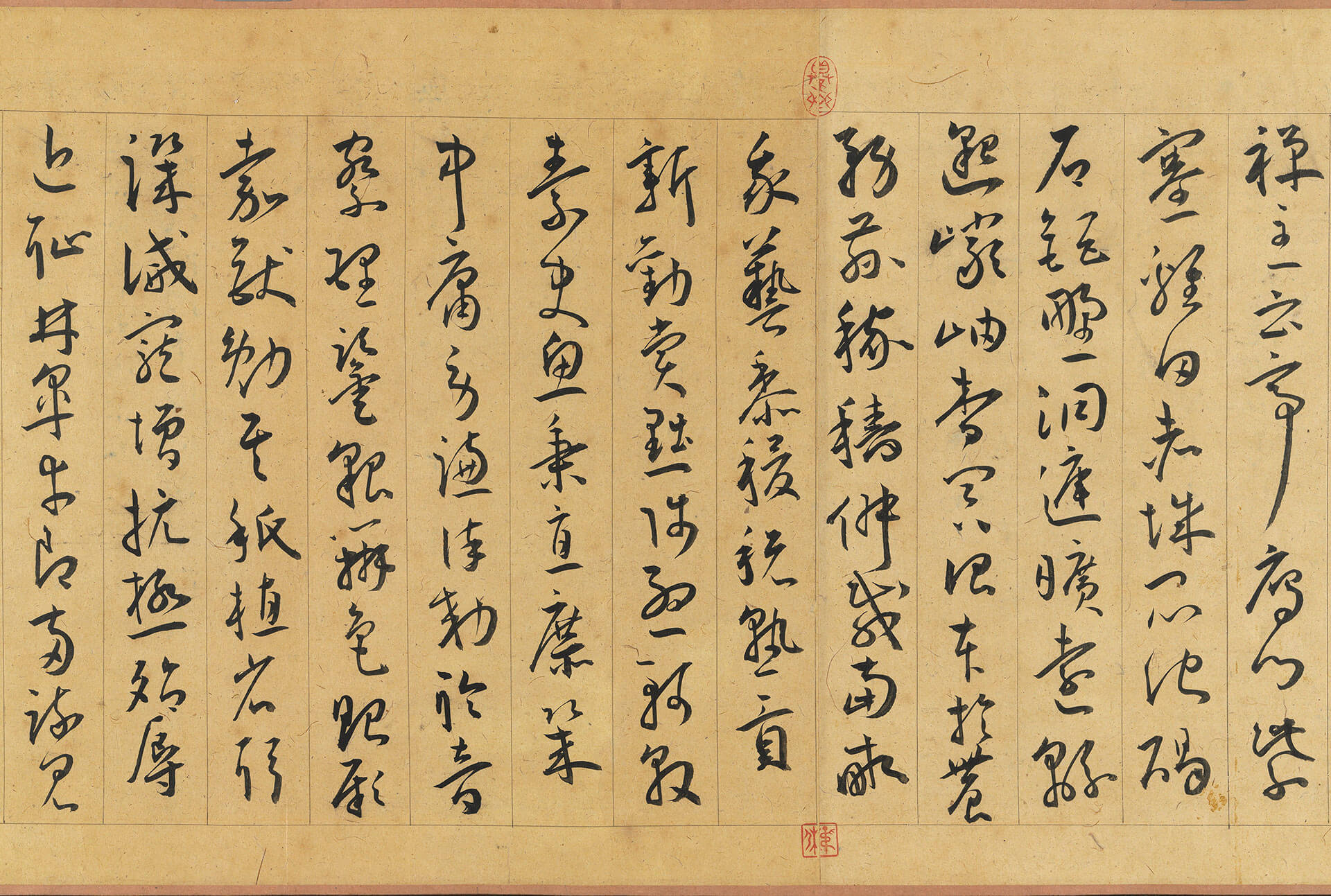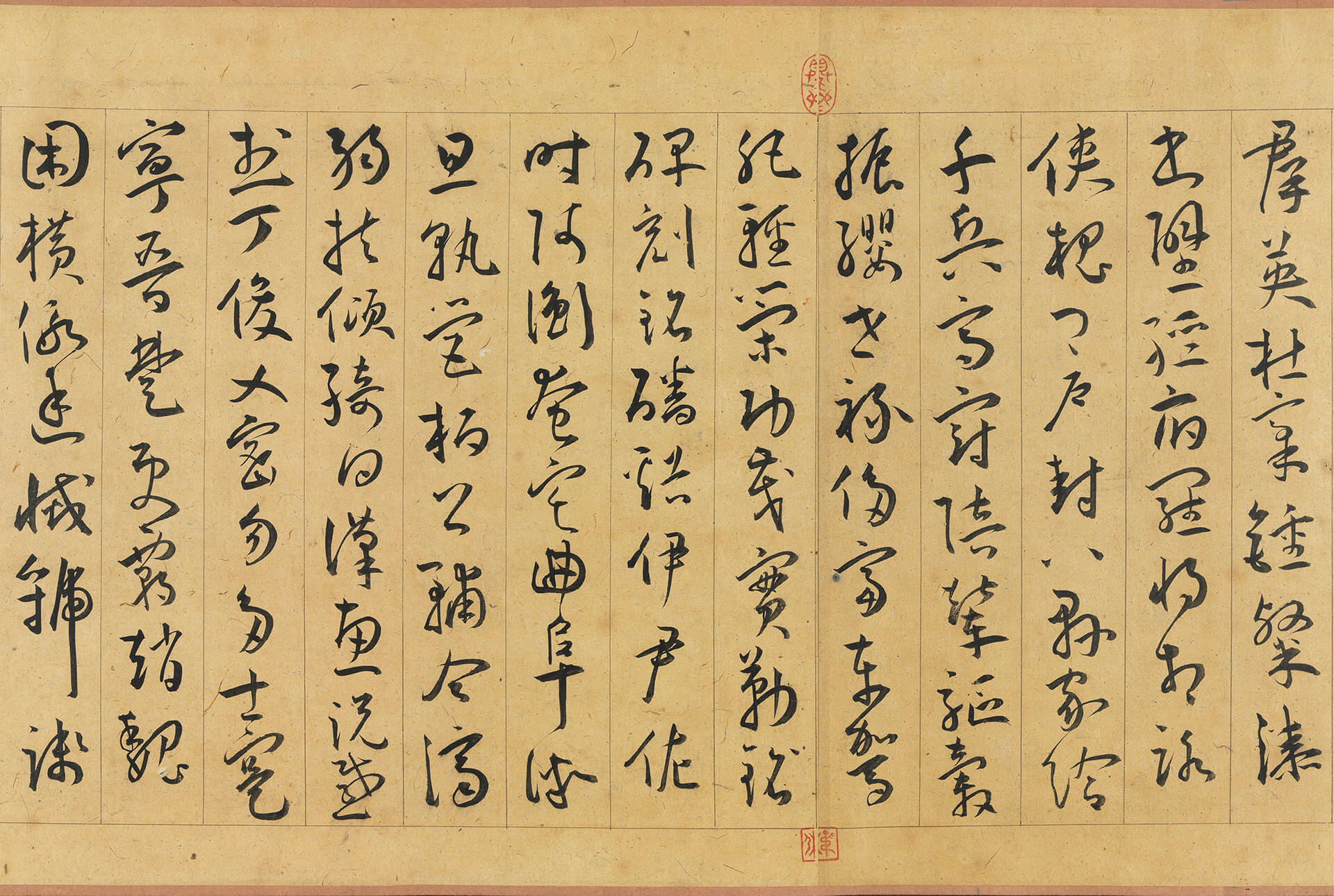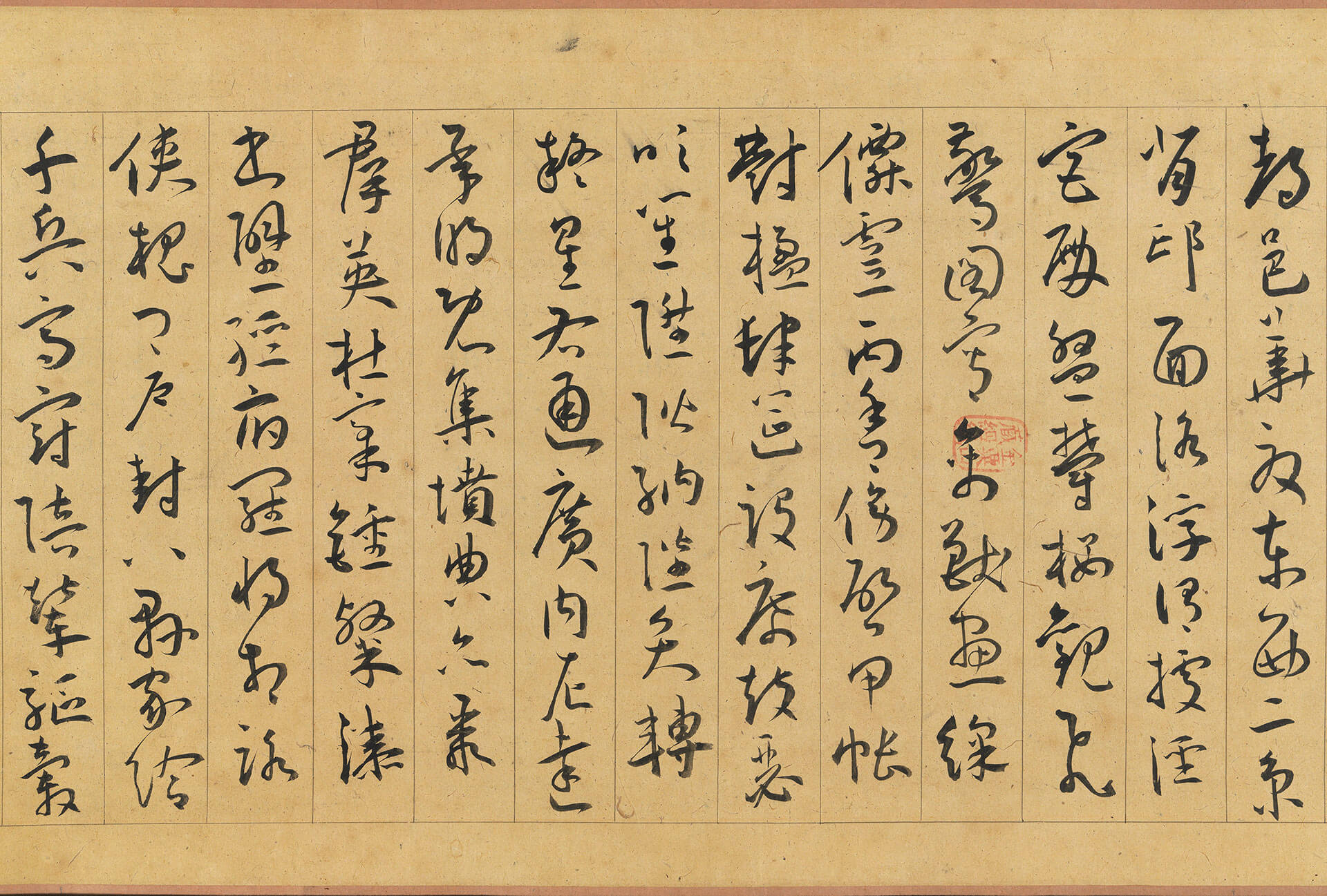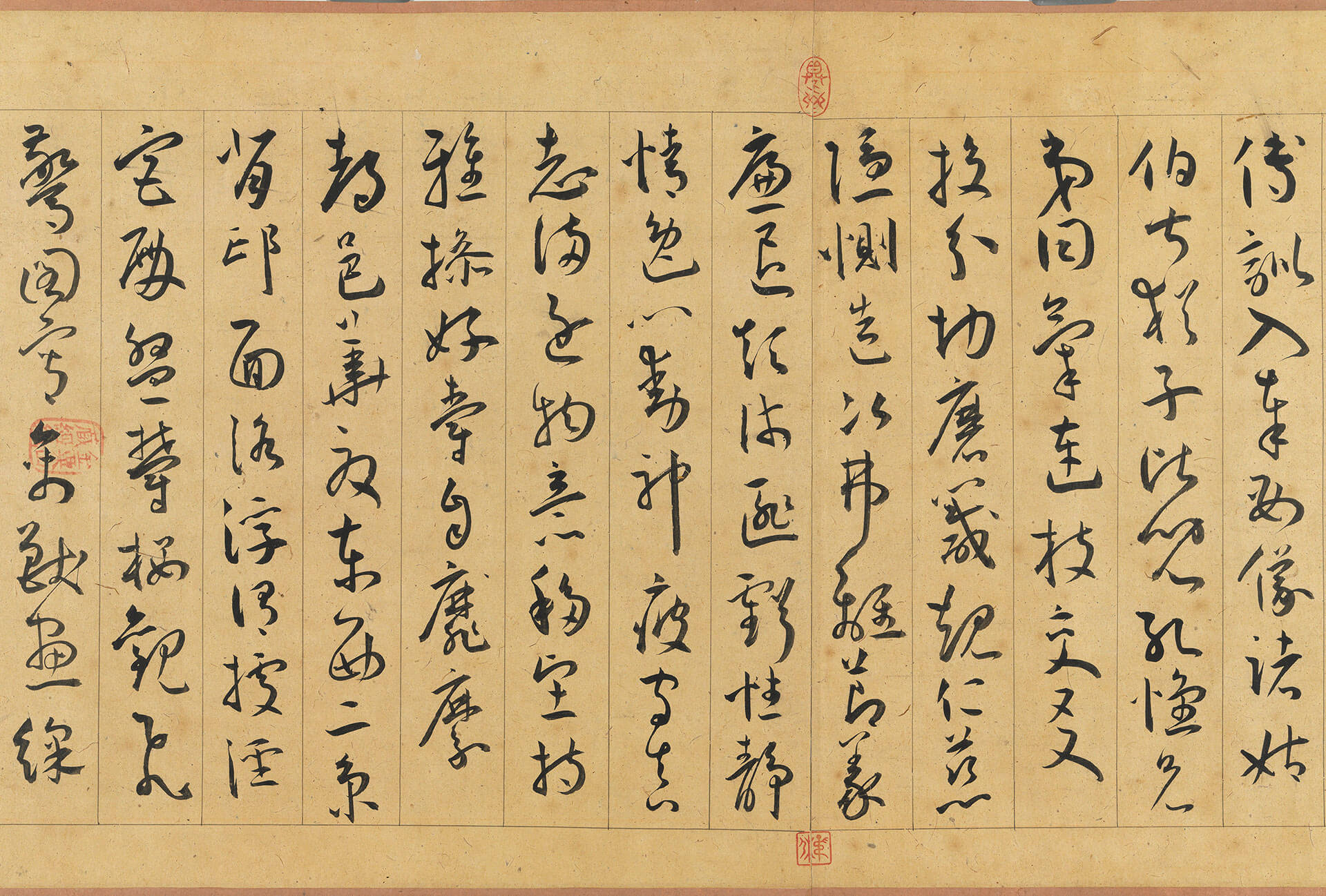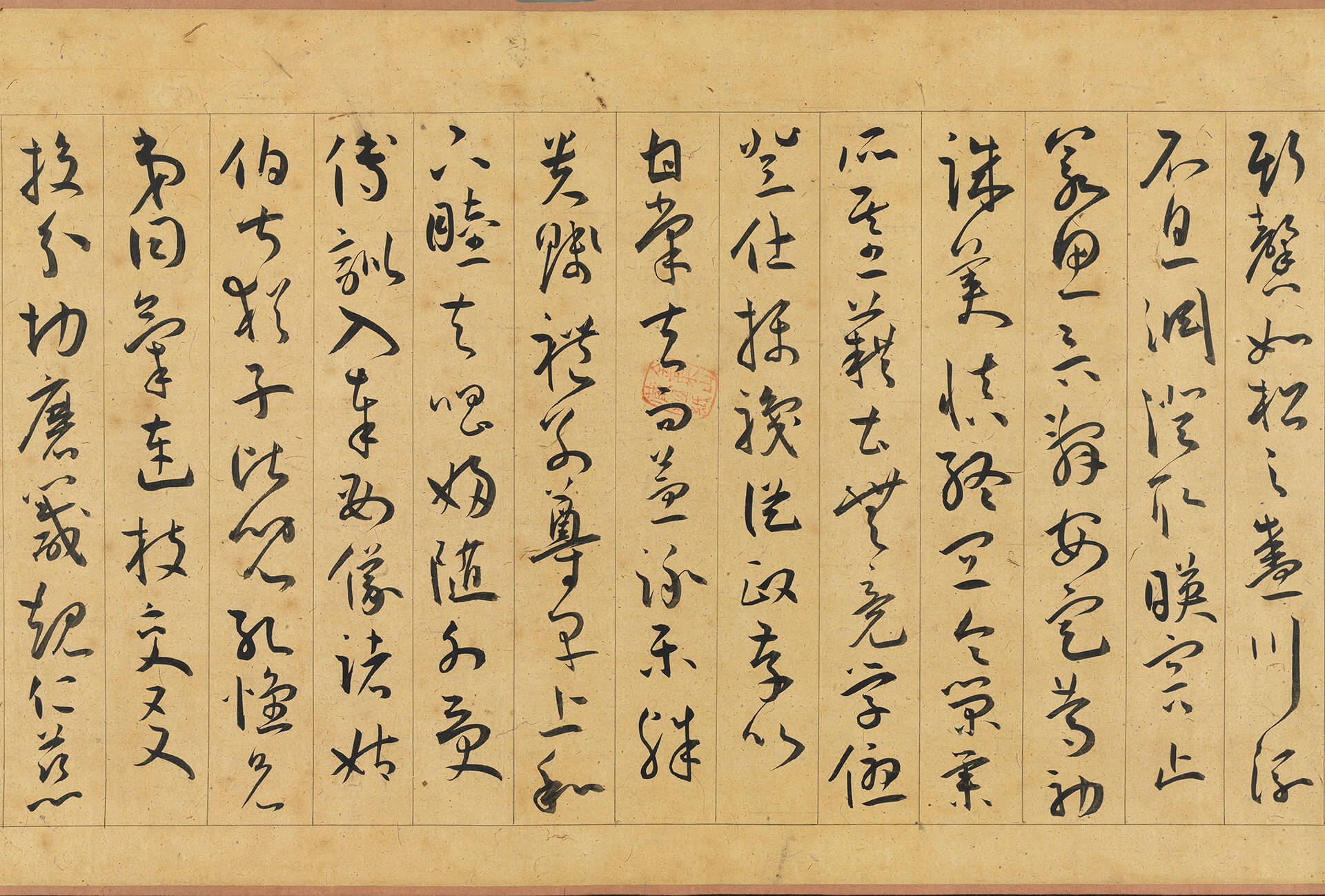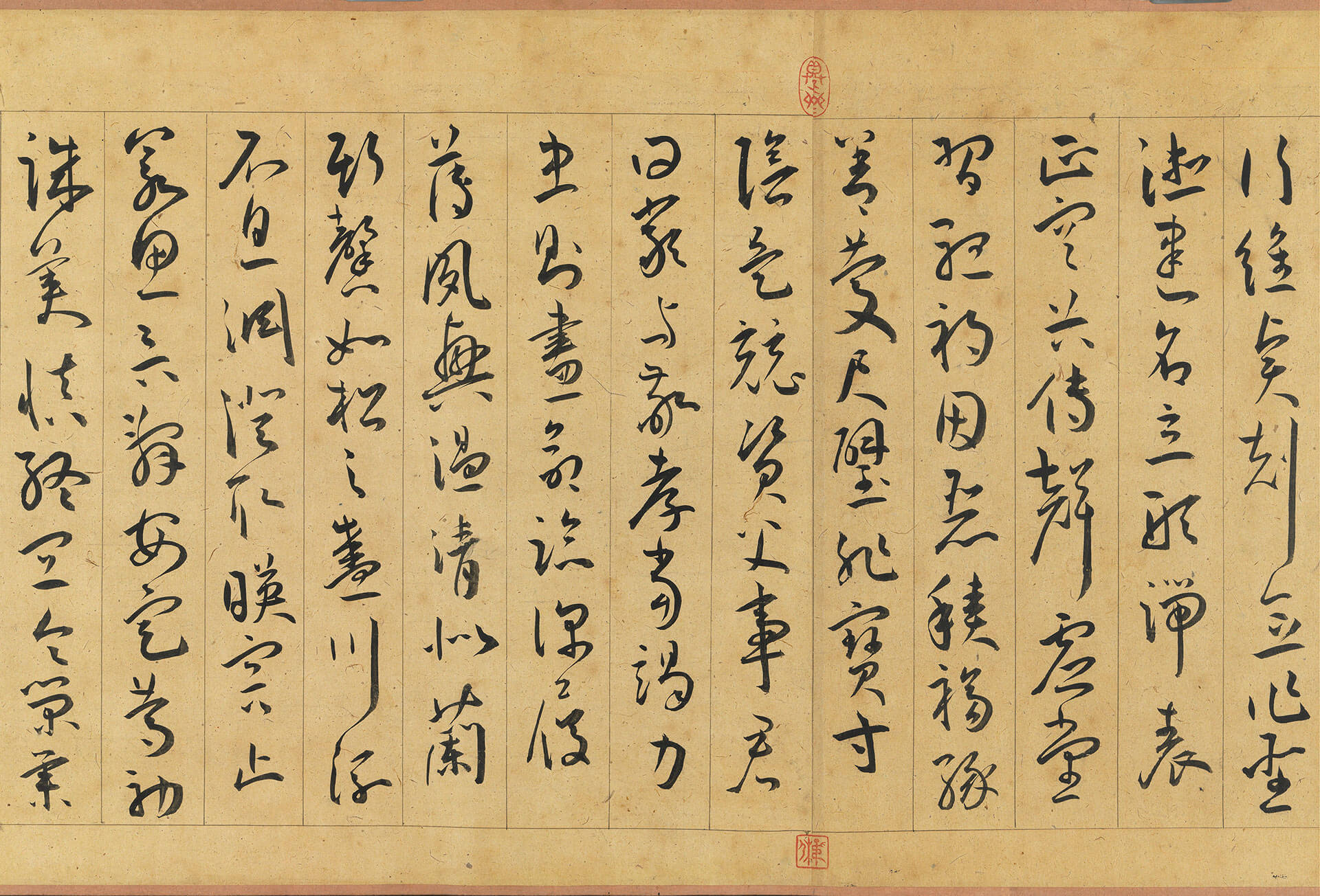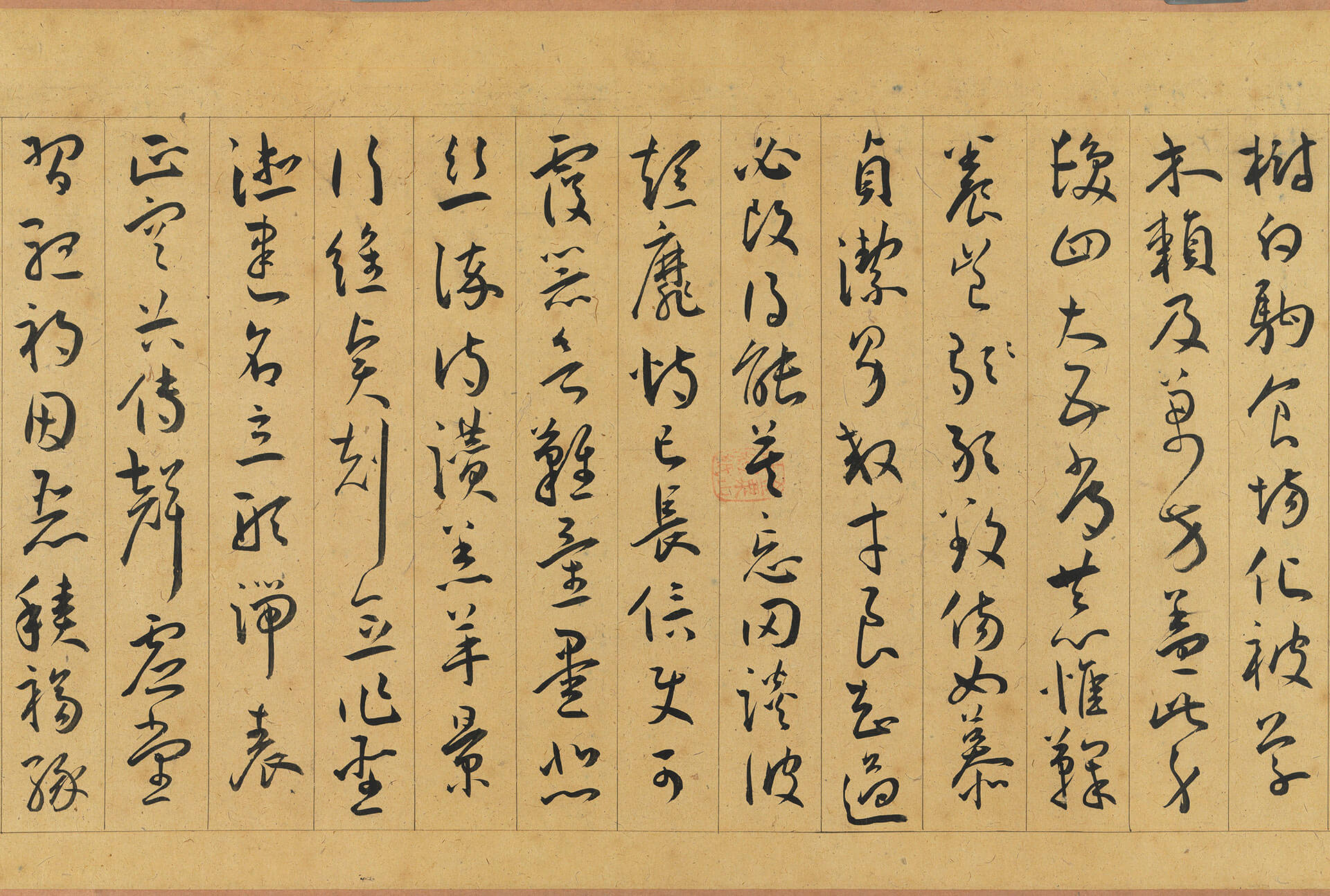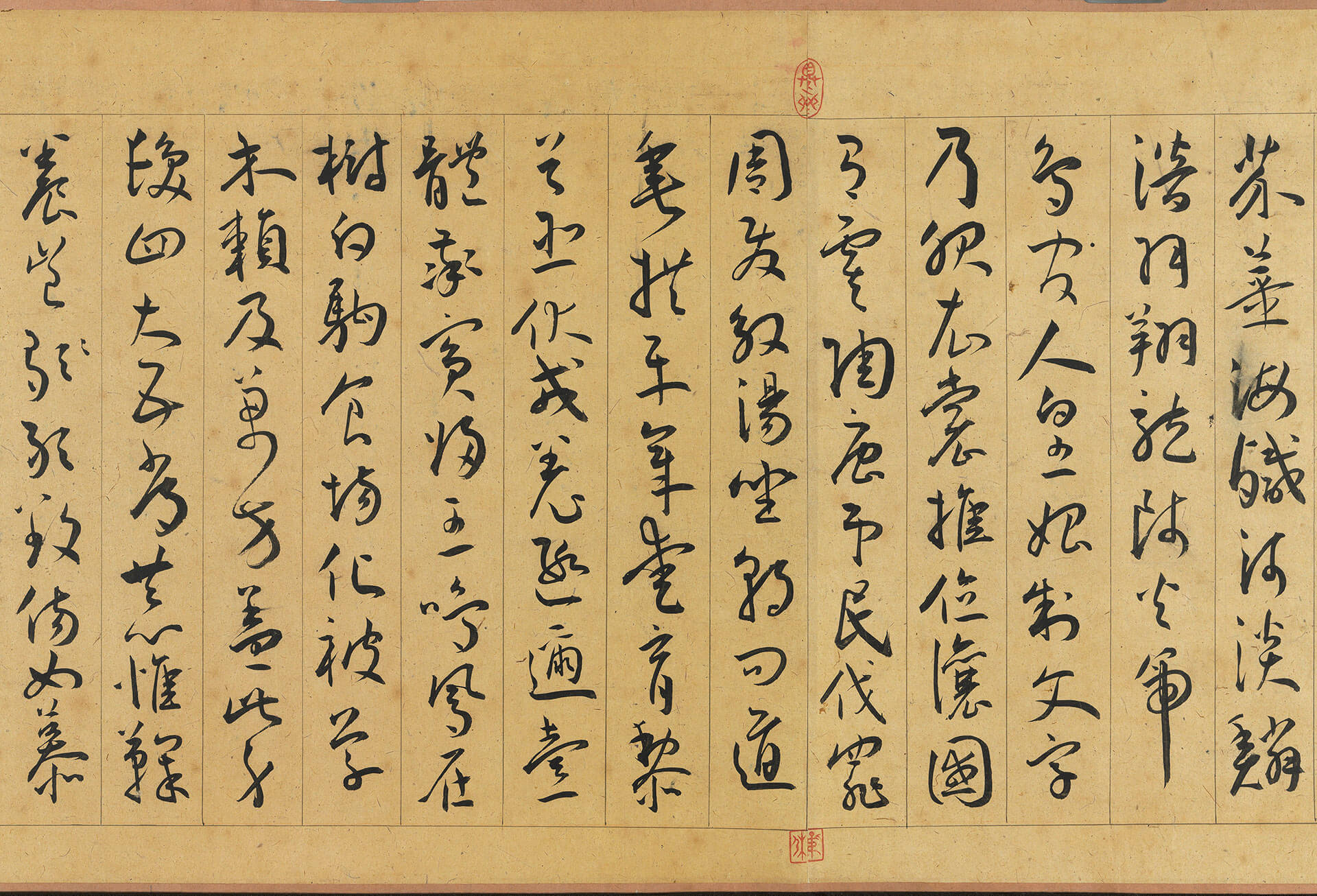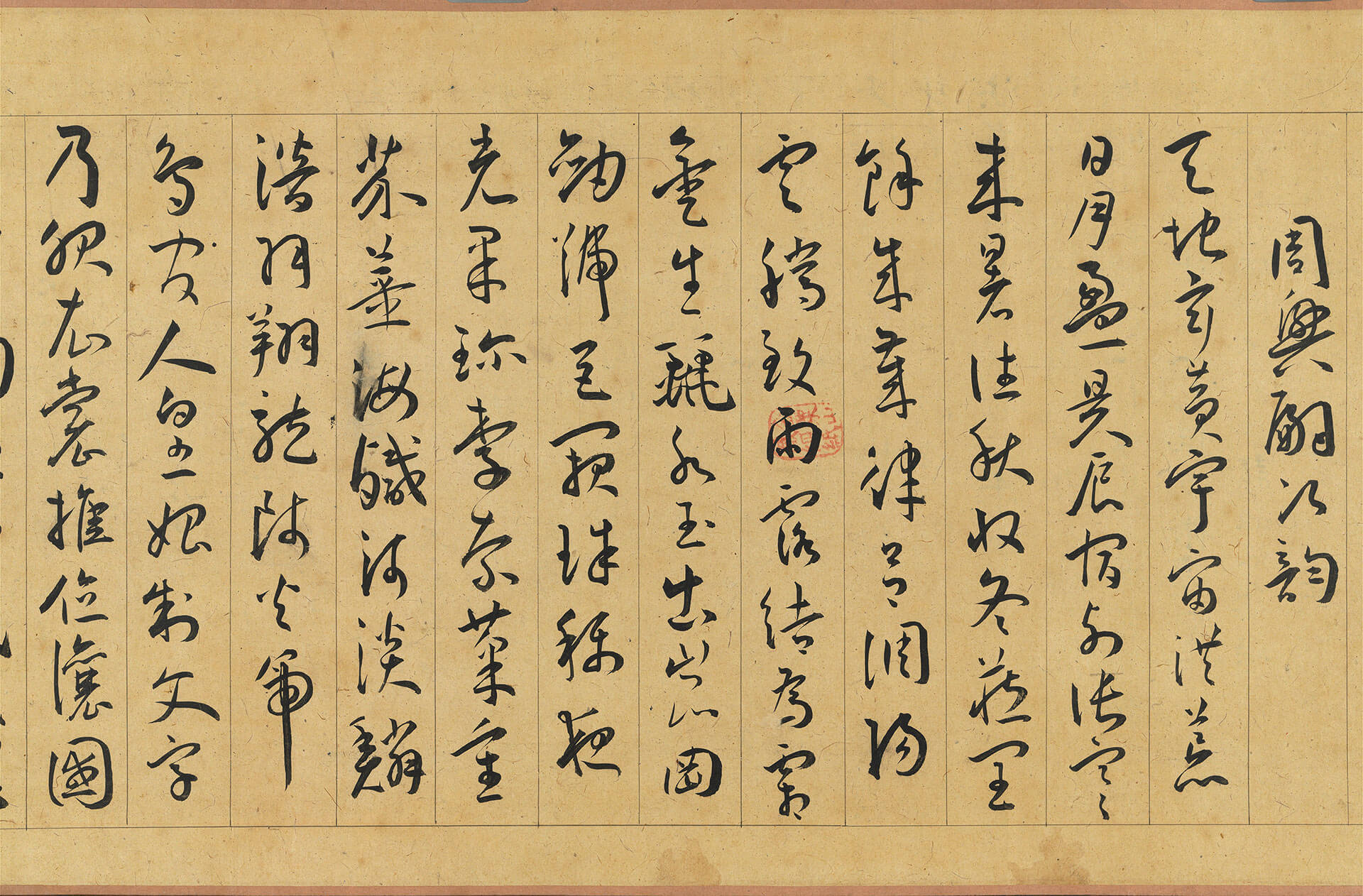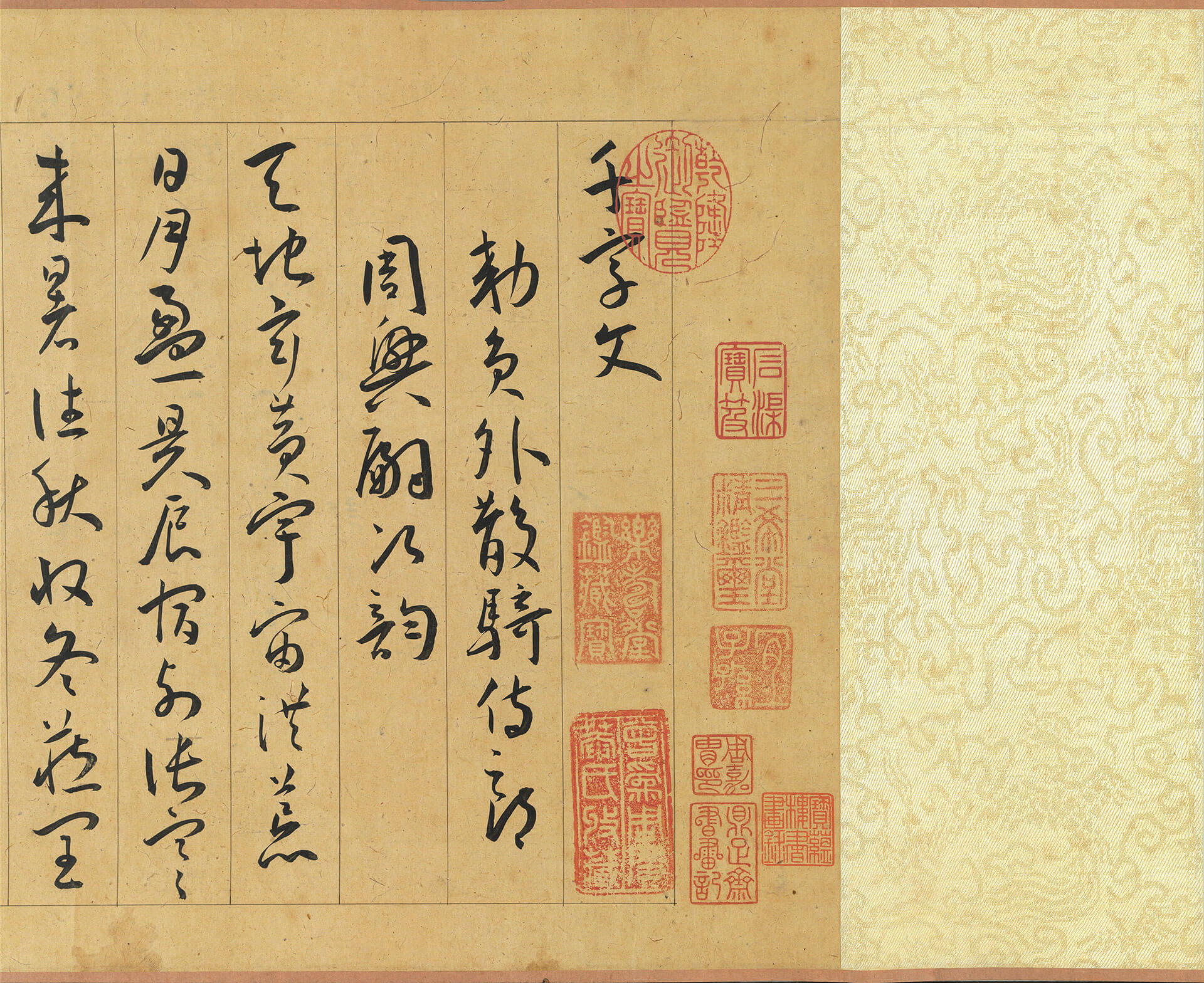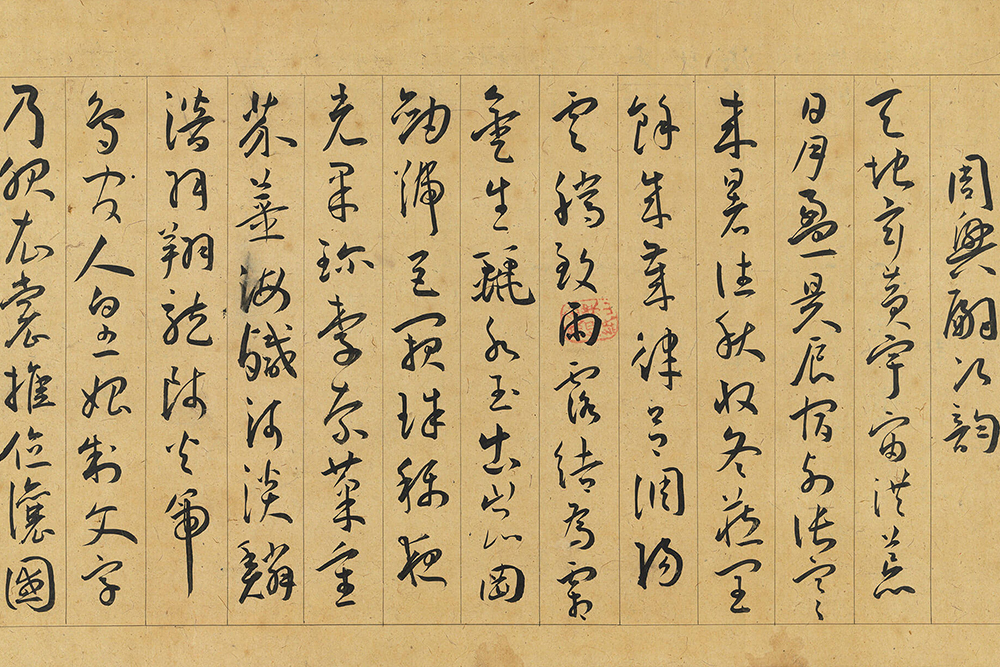Collecting and Studying for a Comprehensive Art-Historical View
Wang Shizhen not only collected painting and calligraphy over many years, he even more so enjoyed delving into the study of his collection. Considered one of the "Latter Seven Masters" of the Ming dynasty, his literary works advocated revivalism, and in collecting he seems to have shown a similar tendency. The works he saw and books he read formed a foundation, combined with his skill at comprehensive surveys, that gave birth to a view of the arts and history differing from that of his contemporaries. In calligraphy, his admiration of the classic elegance of the Jin and Tang dynasty departed from the appreciation of Song dynasty calligraphy among literati of his time. As for contemporary calligraphy circles, he came up with the term "Three Masters of Wu," which to this day forms a mainstream of calligraphy history. And in painting, he believed in emphasizing the Song dynasty more, standing his ground against the mainstream veneration of Yuan dynasty literati painting. He also proposed the notion of "Five Transitions in Painting History," the influence of his unique insight into placing stylistic development over time within a historical framework still felt today. Finally, in the crafts, he had a refined view, feeling that focus should be placed on Song porcelains and not on Xuande wares popular in the art market or Ming official wares of the Yongle and Chenghua reigns. He also pointed out the fake Song tapestries prevalent at the time, his observations offering new materials and insights even for related studies nowadays. Thus, with his wide-reaching and comprehensive accounts, Wang Shizhen reflected the flourishing art market of the late Ming dynasty, the lively developments in contemporary art circles, and the viewpoint of a historian for both past and present, to which he added his own insight for an influence that spread far and wide.
Four Manuscripts of Yanzhou Mountain Man
- Wang Shizhen (1526-1590), Ming dynasty
- Exhibition time I. 10.5(Wed.)-12.25(Sun.)
- Exhibition time II. 12.28(Wed.)-3.21(Tue.)
Four Manuscripts of Yanzhou Mountain Man is a collection of Wang Shizhen's early works, with a total of 180 scrolls in four sections, i.e. rhapsody, poetry, prose, and critique. The "critique" section includes seven works such as Yi Yuan Zhi Yan and Wan Wei Yu Bian, showing Wang's thoughts on literary ideologies and theories, as well as his profound knowledge of archaeological and historical records, forming an all-round artistic and cultural vision. The independent existence of critique along with rhapsody, poetry, and prose is also a pioneering way of categorization in the history of anthology compilation. The Annotated Catalogue of the Complete Imperial Library comments Wang as a literatus with "a tremendous wealth of talent and knowledge" and adds that in terms of "examining and digesting ancient texts, no one has been able to surpass Wang Shizhen." The two quotes accurately pinpoint Wang's rich energy in writing and his great influence.
Garden under the Shade of Pine Trees
- Anonymous, Song dynasty (960-1279)
- Exhibition time II. 12.28(Wed.)-3.21(Tue.)
This painting depicts a corner of a garden in a bird-eye view. The leading architecture has a levitating mountain-shaped roof; the 'dangxin (centre)' space serves as the main hall, illustrating a lady waking from her day nap, followed by maids holding water or carrying cloth sags. The garden has a flower stand in Buddhist 'xumi' style with stacking stones on top; thriving flowers and plants sit alongside. The painting demonstrates the exquisite skill that stands as a small-scale masterpiece of the Southern Song dynasty.
The half 'lianzhu (conjoined)' seal mark of 'zhen' and 'yuan' sitting on the right side of the image indicates that this was in the collection of Wang Shizhen. Wang was a highly cultivated historian that indulged himself in the connoisseurship of paintings and calligraphies; furthermore, he also focused on the historical development of paintings. Wang considered that paintings from different eras possessed individual flair. Hence the Southern Song pieces also embedded the significance of the time.
Layered Riverbanks and Serried Peaks
- National Treasure
- Zhao Mengfu (1254-1322), Yuan dynasty
- Exhibition time I. 10.5(Wed.)-12.25(Sun.)
Wang Shizhen was an avid advocate of the appreciation of Song paintings, so when he was praising such paintings, he often compared them with works by master painters from the Five Dynasties period and the Northern Song dynasty, and this work is a great example. In the postscript, Wang compared the work with those of Jing Hao (ca. 850-911) of the Five Dynasties period as well as Li Cheng (919-ca. 967) and Guo Xi (ca. 1023-1087 or a later year) of the Northern Song dynasty, demonstrating how highly he praised this work by Zhao. Two conjoined half seals of "Zhen" and "Yuan" sit on the top of the painting, with an inscription that reads "Qiankun true appreciation" at the end. Further, the postscript in a long paragraph is located in the colophon section. This is the standard format and style for Wang to appreciate his own collection of paintings
Emperor Minghuang's Journey to Shu Anonymous
- Tang dynasty (618-907)
- National Treasure
- 10.5-11.15(restricted)
This painting depicts what happened in the An Lushan Rebellion, in which Emperor Minghuang (Xuanzong, reigning from 712 to 756) escaped the chaos by taking an imperial journey to Shu (Sichuan). The mountains and cliffs depicted are full of lively plants, and the red-robed figure on the brown horse is none other than Emperor Minghuang. There exist many copies of this painting, and this one should be copied in the Song dynasty. There is a seal of Xiang Dushou on the painting, showing that it was once in the collection of the Xiang family. Qiu Ying (ca. 1494-1552), who was close to the Xiang family, also made a copy which has been passed down to the present day. The mineral blue and green colors give it a jeweled effect, and the brushwork for outlining the forms is exquisite and taut. The work is influenced by the style of Li Sixun (ca. 653-718) and his son Li Zhaodao (675-758) from the Tang dynasty, which is also the typical Tang landscape in the eyes of people in the Ming dynasty. The Sea and Sky in the Glow of the Setting Sun, which Wang Shizhen saw, is also a work under this school. According to Wang, the Li father and son marked the first of the five waves of changes in landscape painting.
Storied Peaks and Dense Forests
- Juran (fl. in the second half of the 10th c.), Southern Tang state of the Five Dynasties period
- National Treasure
- 10.5-11.15(restricted)
This painting has been regarded as a work by Juran for its representative style of Juran's landscape painting, despite the fact that there is no inscription or signed mark. Juran was a native of Zhongling (modern Nanjing). After the Southern Tang state was vanquished, he followed its ruler, Li Yu, in surrendering to the Song and going to its capital of Bianjing. Juran excelled at painting landscapes, studying under Dong Yuan (?-962) and achieving fame equal to his mentor, hence becoming known together as "Dong-Ju". Their style is characterized by the long "hemp-fiber strokes" used to portray mountain hills and the "alum heads" for the round rocks of the mountaintops. However, Dong Yuan mostly painted the gentle hills in Jiangnan, while Juran created paintings with towering mountains in fine hemp-fiber strokes. According to Wang Shizhen, the four painters Jing Hao, Guan Tong, Dong Yuan, and Juran marked the second wave of changes in landscape painting, and Dong-Ju's Jiangnan style is in sharp contrast to the northern style of Jing-Guan.
Sitting in Solitary by a Stream
- Fan Kuan (ca. 950-1031), Song dynasty
- National Treasure
- 2.8-3.21(restricted)
The magnificent composition showcases the grandness of the mountain ranges without signed marks, and the Qing people attributed this piece to Fan Kuan (ca. 950-1031). This painting owns the style of Fan Kuan; similarities such as the dense forest on the mountain peak, threes and woods, and the square-ish shape of the stone shaded with side strokes, which are also evident from the 'Travelers amid Streams and Mountains.' However, the 'yudian (rain-drop)' strokes' absence from the painting, the mountain in a debilitated poise in the fog, and the literati sitting in solitude; these trails diverged from Fan's style. This piece was once in the collection of Wang Xianchen (successful candidate for the Official Exam in 1493); The painting served as a reference to understand the Song paintings. Wang Shizhen further mentioned the new changes in the landscape paintings achieved by Li Cheng (916-967) and Fan Kuan, and it was an innovation in the Northern Song dynasty since the Tang and the Five Dynasties.
Watching the Waterfall
- Xia Gui (fl. ca. 1180-1230), Song dynasty
- National Treasure
- Exhibition time II. 12.28(Wed.)-3.21(Tue.)
The fan has two giant pine trees on the right side; a pavilion sits in between the woods, hosting one servant and two literati, one in a sitting position and the other pointing right afar. Following the pointed direction, a waterfall on the mountain gently streams down into the river passing beneath the pavilion into the lake in the front. The assorted trees tinted with red suggest the season might be in the early Autumn. The water bank in the distance is shrouded in mist and fog, and with a raft attached to the shore, the painting delivers a sense of profound contentment. The signed signature of 'Xia Gui' sits on the right edge of the waterfall. As stated by Wang Shizhen, the course of landscape paintings had yet another innovation since the Southern Song dynasty initiated by Liu Songnian (1124-1182), Li Tang (ca. 1070-1150), Ma Yuan (fl. 1190-1224), and Xia Gui (active around 1180-1230).
Linwu Grotto at Juqu
- Wang Meng (1308-1385), Yuan dynasty
- National Treasure
- Exhibition time I. 10.5(Wed.)-12.25(Sun.)
"Juqu" is the ancient name of Taihu (Lake Tai) in the Yangtze Delta, and "Linwu" is the Chinese name for the Forest Chamber Grotto at the foot of West Dongting Mountain near Taihu. The landscape was rendered in dry "ox-tail" texture strokes, revealing a special texture of the lake rocks. The trees were washed with ochre and red for a sense of autumn. The reflective waves fill the surface of the painting with scattered buildings in a dense composition, depicting an area where numerous literati happily resided. Wang Meng (1308-1385; style name Shuming and sobriquet Huanghe Shanqiao) was a grandson of the famous artist Zhao Mengfu (1254-1322). According to Wang Shizhen, the four major Yuan painters are Zhao Mengfu, Wu Zhen (1280-1354), Huang Gongwang (1269-1354), and Wang Meng, with Ni Zan's work considered the masterpiece of all. Wang Shizhen further pointed out that Wang Meng's style is extremely dense, and Chinese landscape painting experienced yet another wave of changes in the time of Huang Gongwang and Wang Meng, which influenced the Wu area paintings in the Ming dynasty.
Yellow-Silk Version of the Orchid Pavilion Preface
- Zhu Suiliang (596-658), Tang dynasty
- Exhibition time I. 10.5(Wed.)-12.25(Sun.)
In the history of Chinese calligraphy, Wang Xizhi's (303-361) "Orchid Pavilion Preface" has always been the dream of many enthusiasts. In the early Tang dynasty, the calligrapher Chu Suiliang (596-658) reportedly made a copy of the actual work before it was later lost to posterity, and many versions of Chu's copy have survived. This one is done on yellow silk, the character for "ling 領" written as "ling 嶺," reflecting an important feature of Chu's copy.
Wang Shizhen once purchased this handscroll, which at the end has an inscription by Mi Fu (1052-1108). And combined with the long colophons before and afterwards, they testify in detail to the collection history of this work and see it as an authentic example of Chu's work while also highly praising his calligraphy. This scroll later found its way to Japan before it entered the Lanqian shanguan collection and has now been entrusted to the National Palace Museum.
Besotted by Flowers' Fragrance
- Huang Tingjian (1045-1105), Song dynasty
- National Treasure
- Exhibition time I. 10.5(Wed.)-12.25(Sun.)
Huang Tingjian was one of the Four Masters of the Northern Song. This work mounted as an album leaf was done around 1100, the contents a seven-character truncated verse written around 1087 as a gift in response to Wang Shen (1048-after 1104). Huang in his poetry mentions that he had already reached middle age, and he humbly claimed difficulty in finding the mood to compose poetry. The brushwork throughout is strong, mature, and steady, the ink tones ranging from moist to dry with the structure going from tense to gradually being more relaxed. It is as if the words suddenly came to his fingertips, done in a single go.
In the Ming dynasty, Wang Shizhen once praised Huang Tingjian's calligraphy as "at ease and heedless," "having considerable poise." He also mentioned that this work has an "old-fashioned elegance but with a structure that is dense," which accurately conveys the manner conveyed by the calligraphy.
Annotated Collection of Du Fu's Poems
- Du Fu (712-770), Tang dynasty;
- annotated by Guo Zhida, Song dynasty (960-1279)
- Exhibition time I. 10.5(Wed.)-12.25(Sun.)
- Exhibition time II. 12.28(Wed.)-3.21(Tue.)
The Earlier Seven Masters and the Later Seven Masters of the Ming dynasty actively advocated their motto that literati should value "the essays from the Qin and Han dynasties, and poetry from the prime of the Tang dynasty" and they highly praised Du Fu's poetry, even more than that of Li Bai. Wang Shizhen believed that Du Fu's seven-character regulated verses practically achieved the "sacred" realm, and that one of Du's "Eight Odes on Autumn" is the most iconic from the entire Tang dynasty. This piece thus became the most popular text of Du Fu which was enthusiastically expressed in calligraphy by so many late Ming calligraphers. Wang Shimao's old collection of the "Song Dynasty Guangdong Caosi" edition of Annotated Collection of Du Fu's Poems is an earlier and relatively complete edition of Du's poetry in the Song dynasty. This edition has a grand, clean print format with vigorous strokes in the Chinese characters and excellent engraving skills. Critics in the Song dynasty already considered it "the finest edition" which boasts essentially all the merits of Song prints.
Enjoying Antiquities
- Du Jin (fl. ca. 1465-1505), Ming dynasty
- National Treasure
- Exhibition time I. 10.5(Wed.)-12.25(Sun.)
This painting depicts a gathering of scholars for the enjoyment of studying antiquities in a waterfront garden. On the long table are bells, tripods, stoves, bowls and other utensils. The owner sits admiring the antiquities, while his company looks intently into the details of one utensil. The leisurely activities of zither, chess, calligraphy, and painting associated with literati are also included in the painting. Wang Shizhen once praised the figures and pavilions portrayed by Du Jin (ca. 1465-1505) as "elegant and profound" and this painting surely showcases the tradition of the Southern Song academic mode.
In the inscription, Du indicated that those who enjoy studying antiquities should learn from the past and the present, and understand the ritual and music systems through research on antiquities so as to become a man of integrity. This work certainly reflects the cultural atmosphere in the Ming dynasty in which literati were fond of antiquity appreciation and collection.
Narcissus basin in light bluish-green glaze, Ru ware
- Northern Song dynasty, late 11th-early 12th c.
- National Treasure
- Exhibition time I. 10.5(Wed.)-12.25(Sun.)
- Exhibition time II. 12.28(Wed.)-3.21(Tue.)
The Narcissus basin has an oval body and a flared rim with copper edging; the flat base connects to four feet on the narrow sides. The glaze demonstrates a bluish green and light pink hue showing on the curving surface where the glaze is thin. The crackles cover the entire surface, and six spur marks are on the exterior base, which is the signature of Ru ware. Wang Shizhen noted in his publication Records on Institutions and Regulations ( Gubugu lu), which commented on the changes and revolutions that 'reckon the importance of Ge and Ru wares'. The statement presented the high praise on Ru ware from the Song dynasty; this opinion shared the same value with his other comment of 'reckon the importance of the Song paintings'.
Stem bowl decorated with dragon and cloud in sweet-white glaze
- Ming dynasty, Yongle reign (1403-1424)
- Exhibition time I. 10.5(Wed.)-12.25(Sun.)
- Exhibition time II. 12.28(Wed.)-3.21(Tue.)
The stem bowl has a flared mouth rim, deep wall, and tall foot rim. The base body has exquisite quality connecting to the thin wall; the lustrous white glaze covers the entire bowl. The incised pattern of cloud and dragon decorates the interior wall; the seal-script mark 'Made in Yongle reign' in two lines sits at the inner centre. Wang Shimao, the younger brother of Wang Shizhen, stated in the Documentations of the Ming Dynasty (Kuitian Waicheng) that read '…the Jingdezhen in Fuliang county was the specialized location of our nation. The porcelains produced by the inner court during the Yongle and Xuande reign are still celebrated. The sweet-white glaze with bubble crackles was common. The decorations often use the blue pigment from afar, and the red-glazed pieces were the treasure.' This statement signified that the sweet-white porcelains made by the Yongle inner court had been praised till the 16th century.
Bowl decorated with court ladies in underglaze blue
- Ming dynasty, Xuande reign (1426-1435)
- Exhibition time I. 10.5(Wed.)-12.25(Sun.)
- Exhibition time II. 12.28(Wed.)-3.21(Tue.)
This bowl has decorations in underglaze blue; the exterior depicts two ladies among landscapes, woods, and coloured clouds. The image captures one lady playing a Chinese flute in the pavilion while the other is riding on the flying phoenix. The bottom has the regular-script mark 'Made in Great Ming Xuande reign' in underglaze blue surrounded by double circles. The decoration of court ladies was the original and highly prominent design of Xuande porcelains in underglaze blue. Besides the decoration of playing the Chinese flute to attract phoenix, there are also themes of riding a crane, worshipping the moon, relaxing in a hut by water, poetic dusk in Autumn, and poetic scene of begonia blossoms. Wang Shizheng note in the Gubugu lu that '…Xuande porcelains have gained interest in the recent fifteen years, including the pieces from the Yongle and Chenghua reign. The price has increased by ten times.' The statement indicates that the Xuande porcelains had become the focus of connoisseurship and reflected in the market price.
Cup decorated with figures in doucai polychrome enamels
- Ming dynasty, Chenghua reign (1465-1487)
- Exhibition time I. 10.5(Wed.)-12.25(Sun.)
- Exhibition time II. 12.28(Wed.)-3.21(Tue.)
This cup has a contracted mouth, deep wall, and short foot rim. The exterior has two sections defined by the waterside and the woods. One side depicts a scholar in a green gown and a young lad in red clothes standing under the shade of pine trees; the other image illustrates a red-gown man sitting on the water bank, watching the waterfowls with the company of a young lad in green clothes. The bottom has the regular-script mark 'Made in Great Ming Chenghua reign' in underglaze blue surrounded by double circles. Wang Shimao mentioned the Chenghua pieces in the Kuitian Waicheng that 'the production emphasized on the brilliance of five colours'. The statement signified that the polychrome pieces were the primary focus of 16th-century literati when appraising the Chenghua porcelains. The Chenghua pieces had gradually gained attention as the Xuande porcelains at the time and further received more compliments and reputations.
Immortals in a Mountain Pavilion
- Silk Tapestry (kesi)
- Anonymous, Song dynasty (960-1279)
- Exhibition time II. 12.28(Wed.)-3.21(Tue.)
Embroidery is not only pleasant to the eyes but also serves as the frontispiece on scrolls of painting and calligraphy, protecting the artwork and identifying the category of the piece. Wang Shizhen once saw an embroidery of the pavilion on a spiritual mountain; the exquisite craftsmanship without capturing the essence of the image indicated that it was an old art bound in the Song dynasty. This exhibit has a symmetrical composition and characteristic fabric distinct from the embroidery mimicking paintings. Wang Shizhen also mentioned that the newly produced embroidery was charging higher prices as antiques could be identified easily. The other embroidery in the NPM's collection has a composition in half of the size of the exhibit with a false inscription on top, signed as Yu Ji from the Yuan dynasty. The embroidery under the category of the pavilion on a spiritual mountain was quite popular around the time of Wang Shizhen and had numerous reproductions.
Pied Wagtail on a Blooming Polygonum
- Silk Tapestry (kesi)
- Zhu Kerou, Song dynasty (960-1279)
- Significant Historical Artifact
- Exhibition time II. 12.28(Wed.)-3.21(Tue.)
Wang Shizhen mentioned in the "Four Edited Scripts of Yanzhou (Yanzhou Sibugao)" that newly produced embroidery was often posed as antiques in the late Ming to sell at inflated prices. The emphasis on the connection with ancient masters of painting and calligraphy increased the value and motivated the trend of praising embroidery masters from the Song dynasty. Zhu Kerou was the most renowned of all Song embroidery masters and also the one with the intricate complexity. This exhibit is the sixth leaf from the album "Gems of Weaving". The album has a total of eleven leaves in various scales and stands truly as a collection of treasures. Four creations in this album have the stitched mark of Zhu Kerou, and each demonstrates individuality. This exhibit has the mark of Zhang Liu, an antique dealer and master of framing in Yangzhou during the early Qing dynasty, suggesting the possibility that this artwork might have been framed or handled by Zhang.
Calligraphy of My Poetry on a Travel Record
- Wen Zhengming (1470-1559), Ming dynasty
- Exhibition time I. 10.5(Wed.)-12.25(Sun.)
Wen Zhengming, a native of Suzhou, had the personal name Bi and the style name Zhengming, by which he became known. Gifted at the arts of poetry, writing, calligraphy, and painting, he also excelled at connoisseurship. Leader of Suzhou cultural circles, he was praised by Wang Shizhen as one of the three finest calligraphers of his day.
This poem was composed by Wen while traveling on his way to the capital and calligraphed fifteen years later. The brushwork is strong and decisive with not a misstep to be found anywhere. Considerable attention was placed on varying the brush tip on the paper, the structuring of characters solid and the brush sense connected and unbroken for a wide variety of poses and manners. Because Wen Zhengming had many students in his lifetime, his semi-cursive script became the most representative of the period style.
Tao Yuanming's "Ode to Leisure"
- Zhu Yunming (1461-1527), Ming dynasty
- Exhibition time II. 12.28(Wed.)-3.21(Tue.)
Wang Shizhen considered Zhu Yunming, Wen Zhengming (1470-1559), and Wang Chong (1494-1533) to be the best in Ming dynasty calligraphy circles up to his day. Wang Shizhen's identifying them as the "Three Masters of Wu" continues to be a mainstream notion in the history of Chinese calligraphy.
The brushwork in this album is decisive and refined, the lines moist and condensed; there is an aura of pure elegance within the rounded heaviness so that each character has been designed with a rich sense of variety. The left- and right-falling diagonal strokes, along with the horizontal and vertical ones, are all elongated, playing a decisive role in creating the overall effect of this work. The unique style in this album exhibits an unbridled character that represents Zhu Yunming's extraordinary achievement of comprehensiveness in small regular script.
The Thousand-Character Classic
- Wang Chong (1494-1533), Ming dynasty
- Exhibition time II. 12.28(Wed.)-3.21(Tue.)
Wang Chong, style name Lüji and a native of Suzhou, passed away at the age of only forty. He was considered by Wang Shizhen as one of the three best calligraphers of his day.
The style of Wang Chong's calligraphy traces back to those of Wang Xizhi (303-361) and Yu Shinan (558-638), but his contemporaries Zhu Yunming (1461-1527) and Cai Yu (?-1541) had an even greater influence on it. The spacing of the cursive script in this work is open, conveying dexterity within the intentional awkwardness to give it a character of simplicity and innocence. Although it may appear plain at first glance, the character forms and brush strokes here are actually quite varied, revealing a unique quality of extraordinary beauty and dashing untrammeledness.

